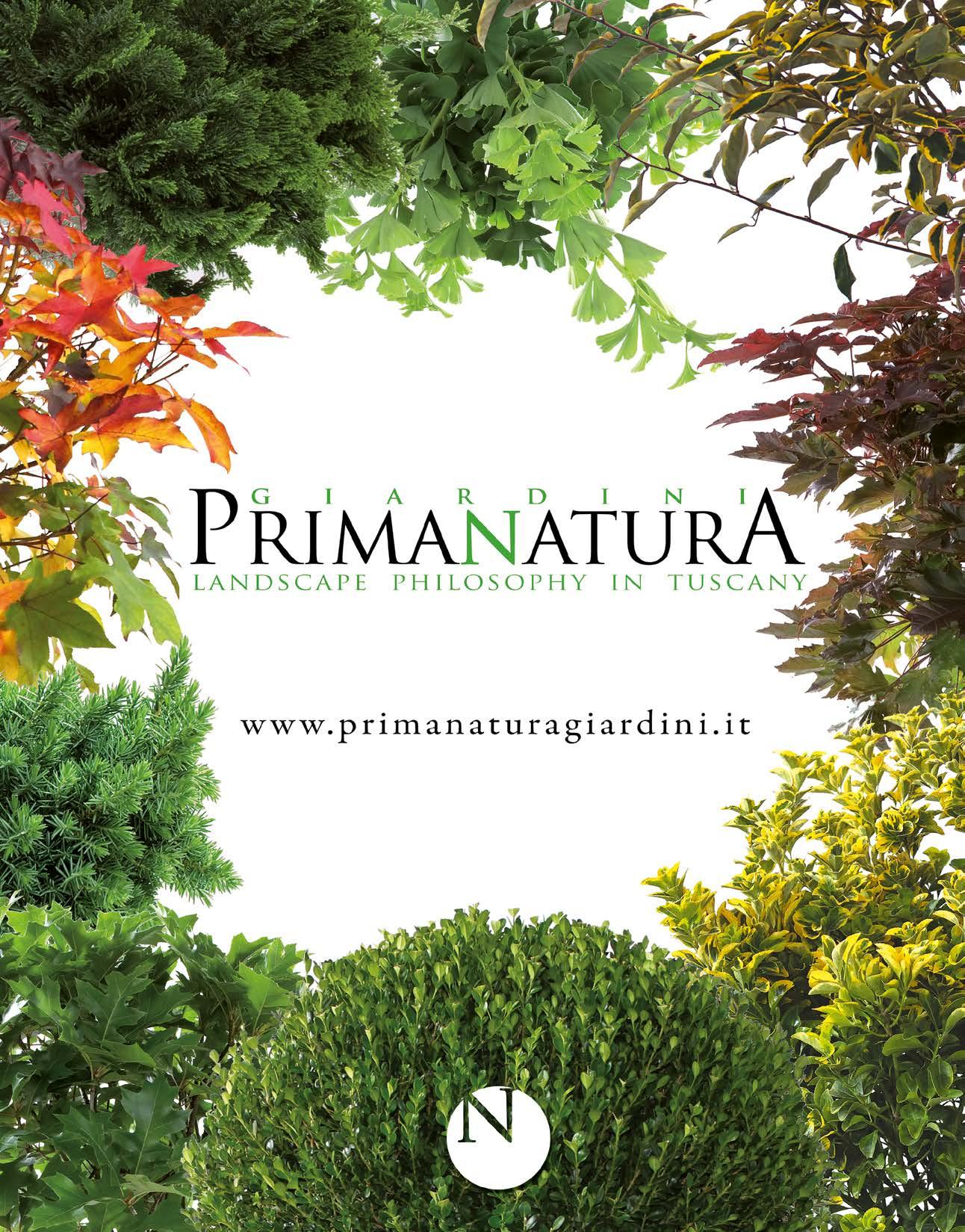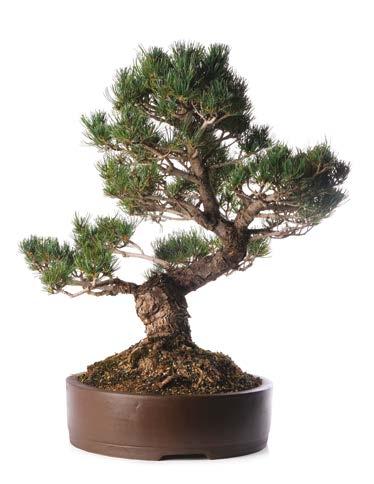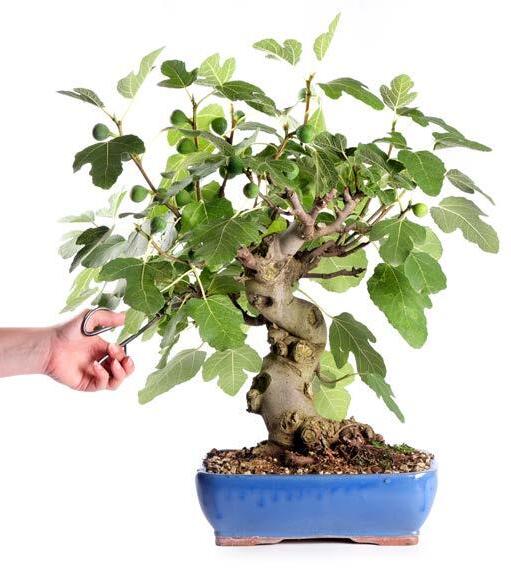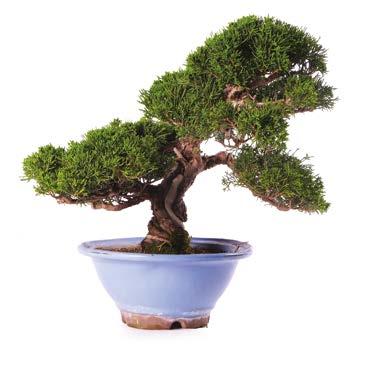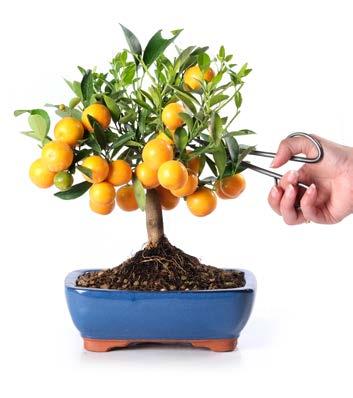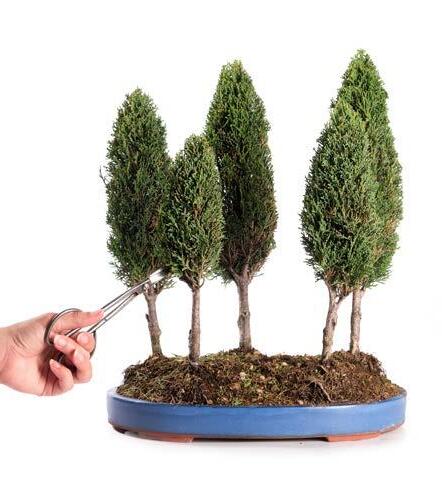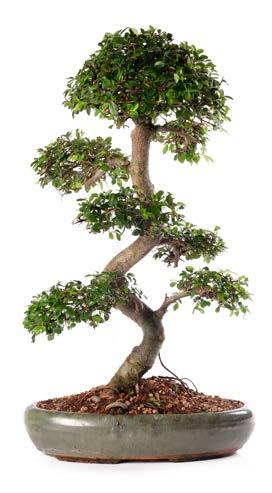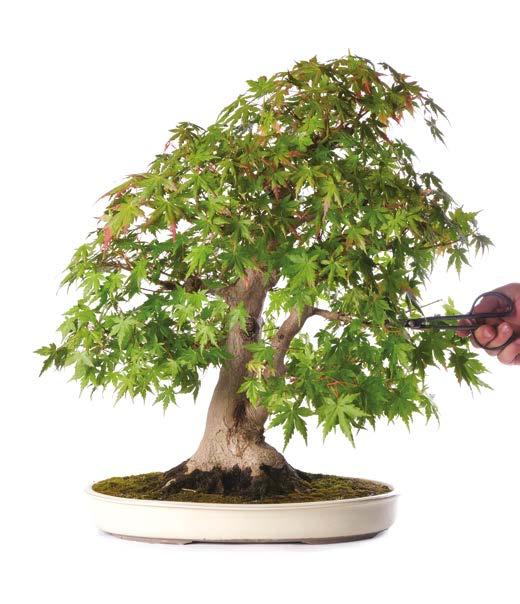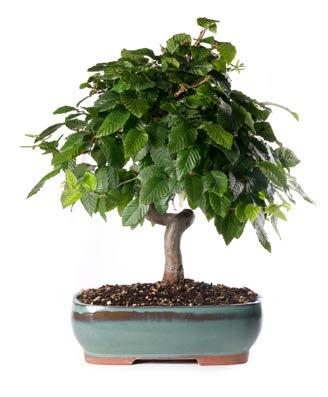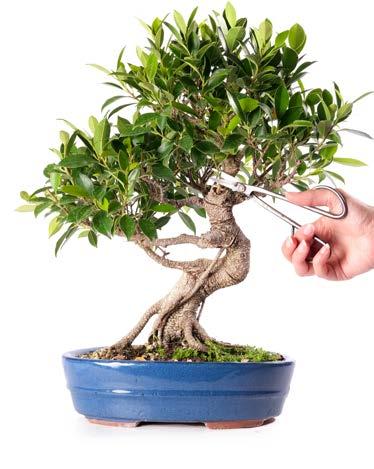Nature art and culture in the Green Tuscany













































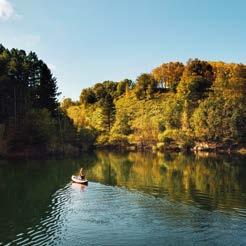





































































Il numero che questo fascicolo di NATURART porta in copertina è di quelli ‘pesanti’: 50. Forse neppure chi progettava la nascita della rivista nel corso del 2010 aveva immaginato di ritrovarsi, a distanza di quattordici anni, a salutare questo traguardo: non perché non avesse fiducia nella bontà del progetto, ma perché ormai è diventato difficile fare programmi a lunga scadenza, che superano il biennio o il triennio. In questo caso, NATURART è andata oltre il decennio.
50 numeri significa oltre 500 articoli. Ma, al di là dei numeri, significa aver attraversato il territorio pistoiese in lungo e in largo, aver raccontato storie del passato e del presente, con la consapevolezza che questo racconto può continuare senza difficoltà anche nel futuro: non mancano le realtà da descrivere e sono sempre molti i luoghi e le esperienze che, a distanza di tempo, possono essere nuovamente presentate, da prospettive diverse, con aggiornamenti che diano conto della loro vitalità e della rilevanza che il tempo conferma e non scalfisce. E significa anche (questo doppio numero, 50 e 500) aver dato spazio, su queste pagine, a temi che ci sembravano e continuano ad apparirci urgenti, a storie che si svolgono fuori dal confine provinciale, a luoghi che appartengono a un territorio più ampio, che ha Pistoia come centro ma che si estende alla Toscana del nord. NATURART, nel corso del tempo, ha poi generato altre esperienze e iniziative editoriali: basterebbe pensare al mensile “Discover Pistoia” e all’omonimo portale, oppure al progetto “Avvicinatevi alla bellezza”. Ha attraversato, NATURART, gli ultimi quattordici anni, cercando di aggiornarsi (dal punto di vista grafico, ma anche per quanto riguarda i contenuti), non stancandosi di mettersi in discussione, intrecciando numerosissime collaborazioni, creando una rete di contatti. E divenendo non solo “ambasciatrice di Pistoia nel mondo”, ma anche una rivista identitaria per il nostro territorio e per coloro che ci vivono.
Giovanni Capecchi Direttore Editoriale Managing Editor
g.capecchi@discoverpistoia.it
This issue of NATURART has a heavy “number” on its front page: 50. Maybe not even those who had worked on the birth of this magazine, in 2010, may have imagined to find themselves celebrating this goal, fourteen years later: not because they didn’t have any trust in the success of this project, but also because it’s now difficult to make any long-term programs, longer than two or three years. In this case, NATURART has been lasting for over ten years.
50 issues means over 500 articles. However, beyond the hard numbers, it means that we crossed the Pistoiese territory far and wide, we narrated histories from the past and present (with the awareness that this narration can continue without any difficulties also in the future). There are still several realities to be described and there are still several places and experiences that, after some time, can be presented again, from different perspectives and updates that take into account their vitality and relevance that is confirmed, rather than scratched, by time. And this double issue (50 and 500) also means that we made room, in these pages, for themes that seemed and continue to seem urgent, stories that take place outside the provincial borders, places that belong to a wider territory, that have Pistoia at its core but also expand to Northern Tuscany.
NATURART, as time went by, generated other experiences and editorial initiatives: just think of the monthly magazine “Discover Pistoia” and the homonymous portal, or the project “Approach to beauty”. NATURART has been lasting for the last 14 years, has tried to evolve (from a graphical perspective, but also in terms of contents) and hasn’t got tired of questioning itself, establishing several partnerships and creating a network of contacts. The magazine has not only become an “ambassador of Pistoia in the world”, but also an identitarian magazine for our territory and the people that inhabit it.
EDITORIALE
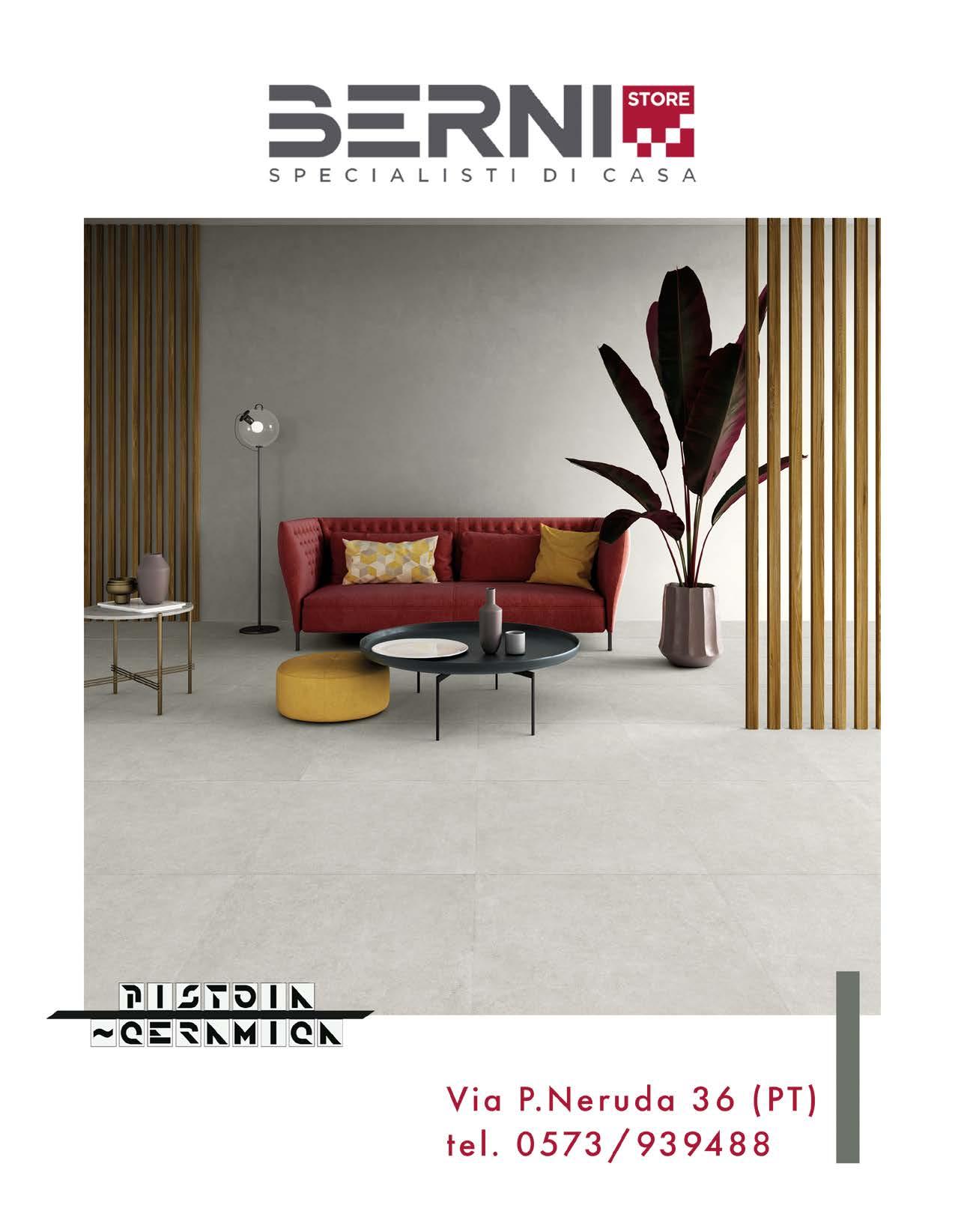
Fabrizio Tesi Legale Rappresentante Giorgio Tesi Group
Cinquanta è un numero per noi molto importante: lo scorso anno abbiamo festeggiato i nostri primi 50 anni di attività ed oggi siamo qui, insieme, per celebrare il raggiungimento del 50° numero di NATURART, un traguardo sinceramente inimmaginabile quando 15 anni fa decidemmo, tra lo scetticismo generale, di iniziare questa avventura editoriale con la volontà di realizzare una rivista che nel tempo si è saputa evolvere senza però mai abbandonare l’obiettivo di rafforzare il senso di appartenenza alla comunità ed allo stesso tempo lavorare per la promozione e la valorizzazione a livello internazionale di Pistoia e del territorio che la circonda. E’ stato un grande impegno sotto tutti i punti di vista e per noi è stata una fortuna trovare le persone giuste per dare continuità a questo progetto, che ci rende particolarmente orgogliosi perché sappiamo di aver fatto qualcosa non solo per la nostra azienda ma anche per la città, distribuendo gratuitamente la rivista sia su tutto il nostro territorio che addirittura inviandola nei 60 Paesi in cui esportiamo le nostre piante, con l’ambizioso ruolo di “Ambasciatrice di Pistoia nel Mondo”.
L’importanza di NATURART per la nostra azienda si percepisce e si concretizza materialmente anche dal fatto che il nuovo centro che sta per essere aperto lungo Via Toscana tra Agliana e Pistoia, si chiamerà proprio NATURART VILLAGE e sarà un luogo unico nel suo genere, aperto a tutti, che riassumerà al suo interno un po’ tutti i valori e le passioni che Giorgio Tesi Group ha espresso nei suoi primi 50 anni di attività, con lo show room aziendale, l’esposizione di esemplari unici di bonsai, un meraviglioso roseto, un bellissimo parco, un’area food con alcune delle migliori eccellenze toscane e un’area convegni attrezzata che sarà animata da eventi legati allo sport, al vivaismo e alla cultura, ma anche all’attività della Giorgio Tesi Editrice, della nostra Fondazione e del Progetto Giorgio Tesi Junior. Vorrei, infine, chiudere questo mio intervento ringraziando tutte le persone che ci hanno permesso di raggiungere questo prestigioso traguardo, a partire da Nicolò Begliomini e dai dipendenti e dai collaboratori della Giorgio Tesi Editrice, per continuare con i direttori Luciano Corsini, Giovanni Capecchi e Carlo Vezzosi. Grazie anche al Comitato di Redazione, gli enti e le istituzioni che ci hanno accompagnato in questo lungo viaggio e i tanti lettori che continuano a seguirci con grande entusiasmo e che ci spronano a proseguire su questa strada fin dal primo numero. Pistoia e il suo territorio hanno ancora tanto da raccontare e da approfondire e noi continueremo a farlo con rinnovato entusiasmo, a partire dalla prossima primavera con il cinquantunesimo numero di questa bella rivista che ha dato tanto sia alla nostra azienda che a tutto il territorio pistoiese, al quale siamo tutti profondamenti legati.
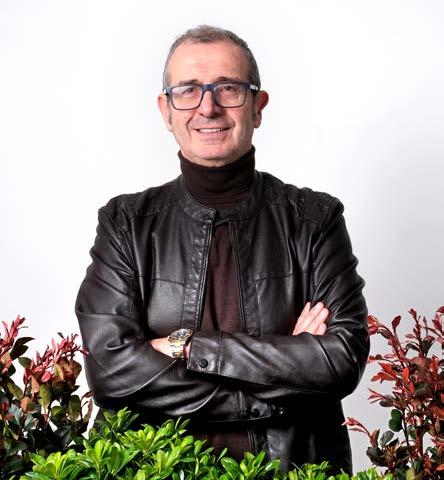
Fifty is a very important number for us: last year we celebrated our first 50 years of activity and today we’re here, together, to celebrate the 50th issue of NATURART: honestly, this goal was unimaginable 15 years ago, when we decided, among general scepticism, to start this editorial experience. We wanted to create a magazine that was capable of evolving over time, but never abandoned its purpose of strengthening the sense of belonging to the community and, at the same time, working for the promotion and enhancement of Pistoia and the surrounding territory at an international level.
It was a great effort from every point of view and we were lucky to find the right people who ensured the continuity of this project, which makes us particularly proud. In fact, we are aware that we did something not only for our company but also for the city, by distributing the magazine for free throughout the city and also sending it to the 60 countries where we export our plants, with the ambitious role of “Ambassador of Pistoia in the world”.
NATURART’s importance for our company can be perceived and materializes concretely also in the fact that the new centre that will be opened along Via Toscana, between Agliana and Pistoia, will be named NATURART VILLAGE. It will be a oneof-a-kind place, open to everyone, and it will summarize nearly all the values and passions that Giorgio Tesi Group has expressed in its first 50 years of activity, with a company showroom, the exhibition of unique bonsai-tree sample, a wonderful rose garden, a beautiful park, a food area with some of the best Tuscan excellences and an equipped conference area, that will be animated by events that are linked to the world of sports, nurseries and culture, but also to the activities of Giorgio Tesi Publishing, our foundation and the Giorgio Tesi Junior Project. Finally, I would like to end my intervention by thanking all the people who allowed us to reach this important goal, starting from Nicolò Begliomini and all the employees and workers from Giorgio Tesi Publishing, and continuing with the directors Luciano Corsini, Giovanni Capecchi and Carlo Vezzosi. A thanks also goes to the editorial board, the bodies and institutions that accompanied us during this long journey and the several readers that continue to follow us with great enthusiasm and have motivated us to continue on this path since the very first issue. Pistoia and its territory still have so many stories to tell and explore, and we will continue to do it with renewed enthusiasm, starting from next spring when we will publish the 51st issue of this beautiful magazine. A magazine that has given so much to our company and the entire territory of Pistoia, with which all of us have a deep bond.
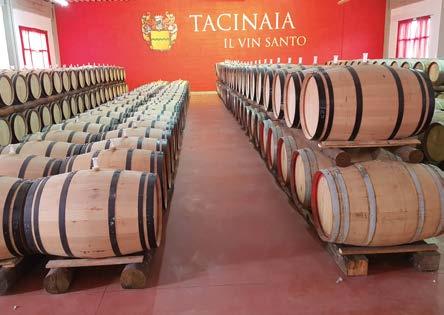
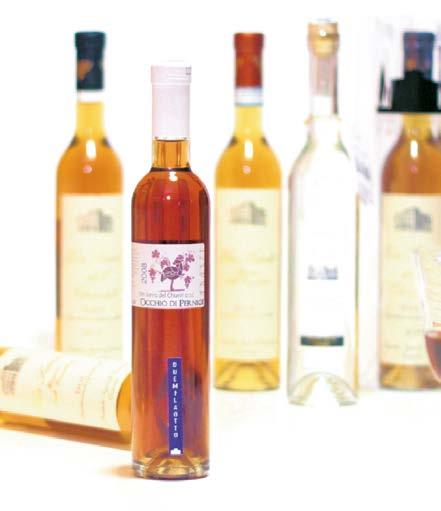
Prodotto da uve tenute ad appassire in fruttaio per alcuni mesi. L’uva viene poi spremuta ed il mosto così ottenuto elabora ed invecchia in caratelli di castagno e rovere per almeno tre anni come da secolare tradizione toscana.
Produced from grapes held to fade in a particular room for some months. The grapes are squeezed and the must elaborated and grows old in kegs of chestnut and oak for three years according to the secular Tuscan tradition.
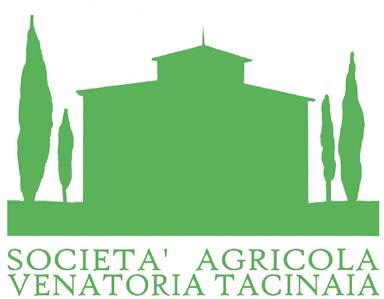
Copertina che festeggia i 50 numeri di NATURART. Nozze d’oro per la rivista ambasciatrice di Pistoia nel Mondo.
Cover celebrating 50 issues of NATURART. Golden anniversary for Pistoia’s ambassador magazine to the world.
Giorgio Tesi Group
The Future is Green Via Tacinaia 75 - 51039 Quarrata (PT) www.tacinaia.it

Giorgio Tesi Editrice srl
Via di Badia, 14 – 51100 Bottegone – Pistoia – Italy Tel. +39 0573 530051 – Fax +39 0573 530486 www.discoverpistoia.it
Iscrizione al ROC (Registro Operatori della Comunicazione) n° 30847 del 15 Gennaio 2018
Per la tua pubblicità sulla rivista contatta la Giorgio Tesi Editrice o invia una e-mail a marketing@giorgiotesigroup.it
9 772421 284000 ISSN 2421-2849
Direttore Editoriale
Giovanni Capecchi g.capecchi@discoverpistoia.it
Direttore Responsabile
Carlo Vezzosi carlo.vezzosi@legismail.it
Art Director
Nicolò Begliomini n.begliomini@giorgiotesigroup.it
Coordinamento Redazionale
Lorenzo Baldi redazione@discoverpistoia.it
Segreteria
Carolina Begliomini, Irene Cinelli, Maria Grazia Taddeo contatti@giorgiotesigroup.it
Comitato di redazione
Leonardo Begliomini, Nicoletta Boccardi, Emanuel Carfora, Lorenzo Cipriani, Alessandra Corsini, Giuliano Livi, Martina Meloni, Paolo Paolieri
Hanno collaborato a questo numero
Giovanni Capecchi, Andrea Cassone, Grazia Tucci, Gianni Bartoli, Michele Betti, Valerio Tesi, Cristina Acidini, Dynamo Camp, Fondazione Palazzo Blu, Alessio Bertini, Andrea Ottanelli, Lorenzo Baldi, Fabrizio Tesi, Aldo Baldi, Giuseppe Gherardi e Eleonora Angelini.
Traduzioni
Studio Blitz – Pistoia
Fotografie
Fondazione Pistoia Musei, Nicolò Begliomini, David Doci, Giuseppe Marraccini, Archivio Fondazione Arte Dynamo, Fondazione Palazzo Blu, Lorenzo Marianeschi, Giulia Del Vento, Giancarlo Barzagli, Marco Vagnetti, Archivio Un altro parco in città e Archivio Porrettana Express
Illustrazioni
Jonathan Calugi
Per le immagini pubblicate restiamo a disposizione degli aventi diritto che non si siano potuti reperire.
Impaginazione
Giorgio Tesi Editrice
Stampa
Industrie Grafiche Pacini- Ospedaletto (Pisa)
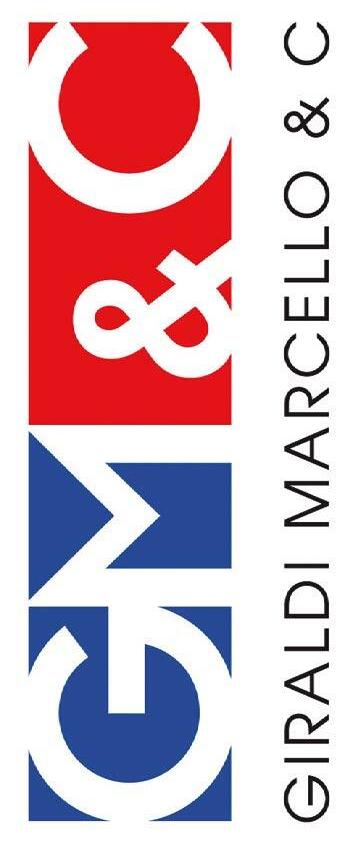
www.discoverpistoia.it
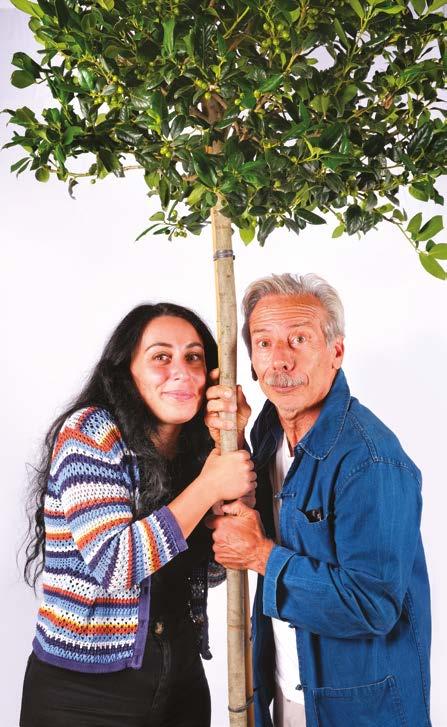
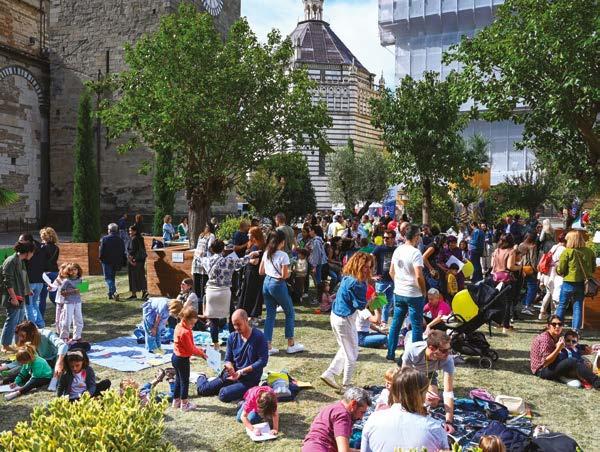
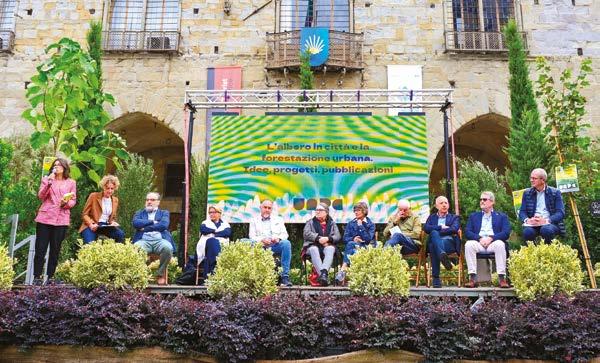
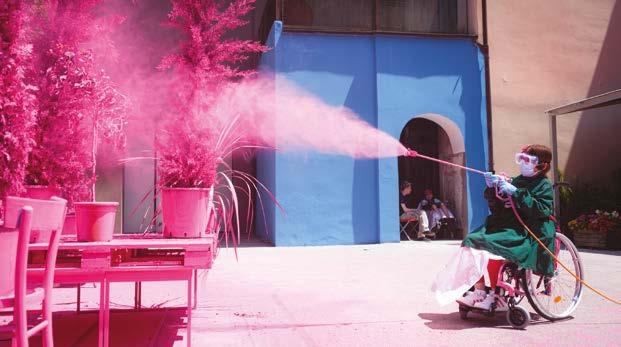
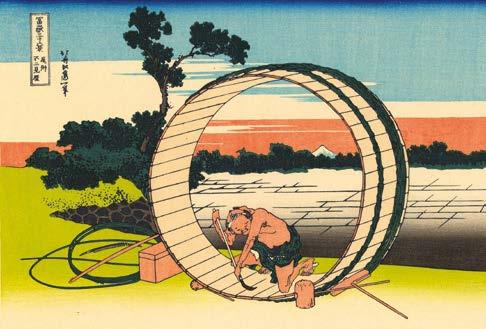
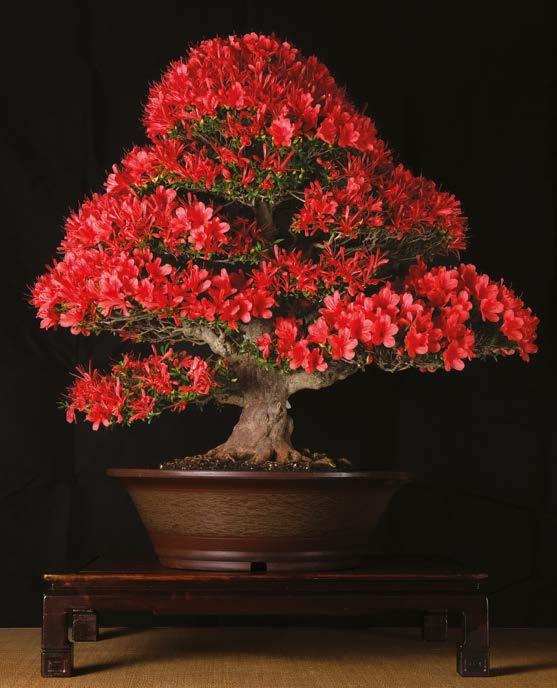



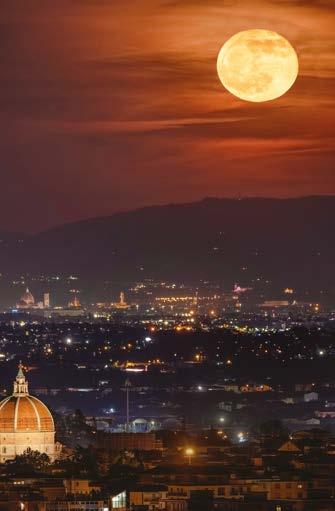
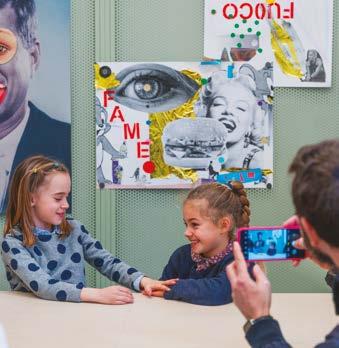
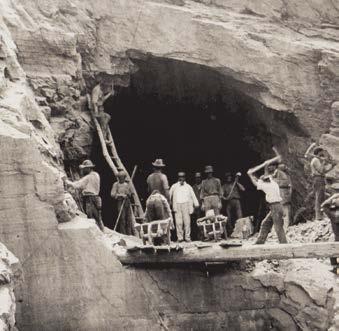
Giovanni Storti e Arianna Izzi
Il verde promotore di cultura e meraviglia
Green becomes the promoter of culture and wonder
UAPC 2024
Il verde che unisce, rigenera, parla
The green that brings together, regenerates, talk
Convegno
L’Albero in città e la forestazione urbana
Trees in the city and urban forestation
Basilica della Madonna dell’Umiltà Il segreto della Cupola
The secret of Vasari’s Dome
Anniversario dei 450 anni dalla morte Ricordando Giorgio Vasari
Remembering Giorgio Vasari
Giardino Zoologico Pistoia L’estinzione “silenziosa” The “silent” extinction
Fondazione Arte Dynamo L’Arte è WOW!
Art is WOW!
Franchi Bonsai Arte secolare a portata di un clik
Secular art is just a click away
Incontriamoci 2025, gli appuntamenti in Italia e all’estero
The events in Italy and abroad in 2025
Palazzo Blu, Pisa HOKUSAI, il Giappone in Toscana HOKUSAI, Japan in Tuscany
Fondazione Pistoia Musei Costruire una cultura insieme
Building a culture together
La rete della cultura Corporate Membership di Pistoia Musei
Fondazione Giorgio Tesi
Quindici anni di impegno verso i più deboli
15 years of commitment to the most vulnerable
Convegno
Vivaismo: fra ricerca e innovazione
Nursery: between research and innovation
Ferrovia Porrettana
Un sogno che 160 anni fa unì l’Italia
A dream that, 160 years ago, unified Italy
Valorizzazione e turismo
Porrettana Express è magico!
Porrettana Express is magic!
Eccellenze Pistoiesi Pininfarina
alla Biblioteca San Giorgio
Pininfarina at the San Giorgio Library

Giovanni Storti e Arianna Izzi
— Abbiamo intervistato Giovanni Storti , comico e attivista che ha fondato il progetto “Immedia”. Con Arianna Izzi, scienziata naturalista, divulgatrice scientifica e responsabile editoriale di Immedia sono stati assoluti protagonisti di UAPC.
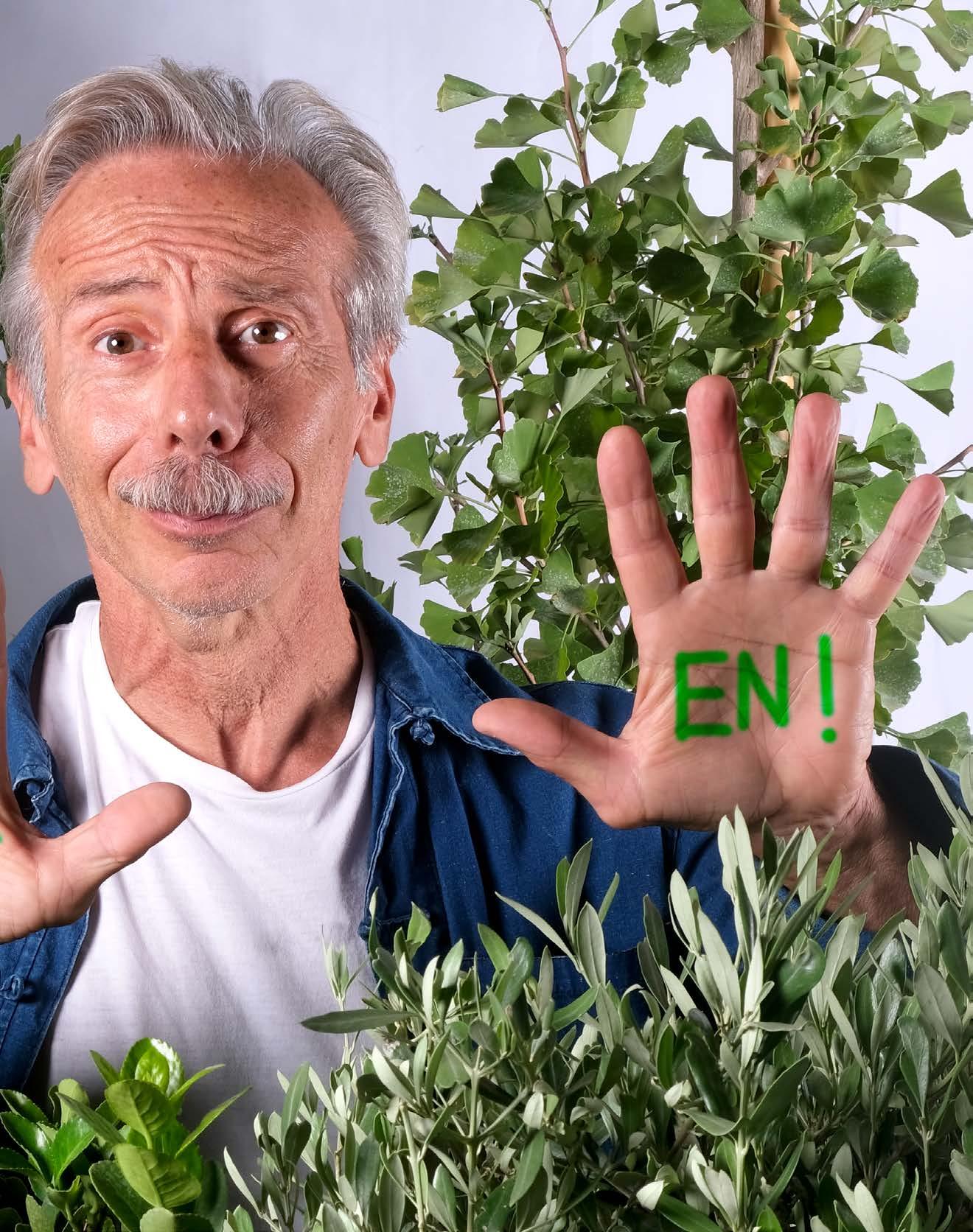
Attività di promozione della filiera “EDENEfficientamento, ammodernamento e innovazione nel vivaismo nazionale” candidata al finanziamento del V Avviso MASAF n. 0182458 del 22/04/2022 e s.m. per la selezione dei Contratti di filiera e di distretto di cui al DM n. 0673777 del 22/12/2021

In alto Arianna Izzi e Giovanni Storti durante la visita nei vivai di Giorgio Tesi Group. In basso il popolare attore con Giacomo Galanda, Fabrizio Tesi e il capitano del Pistoia Basket 2000 Gianluca Della Rosa.
Nell’ambito dell’evento “Un Altro Parco In Città 2024”, che nel week end tra il 13 e il 15 settembre scorsi ha trasformato il cuore pulsante di Pistoia, Capitale europea del verde, in un vero e proprio giardino - con l’obiettivo di valorizzare sempre più l’importanza del verde nei contesti urbani e di sensibilizzare la comunità verso tematiche di sostenibilità ambientale - protagonista assoluto è stato Giovanni Storti , del trio “Aldo, Giovanni e Giacomo” che con la divulgatrice scientifica Arianna Izzi, con la quale ha fondato il progetto “Immedia” (portale e palcoscenico per un domani sostenibile e per aver cura delle generazioni future e del nostro mondo) ospiti sabato 14 del NATURART TALK in Piazza del Duomo, davanti a centinaia di spettatori hanno raccontato la loro filosofia ed il grande impegno volto a diffondere un modello più consapevole e più sostenibile del mondo, che sia di ispirazione e rivoluzione nel presente e nel futuro.
Durante la mattina di sabato 14
Arianna e Giovanni hanno potuto visitare la sede centrale e i vivai di Giorgio Tesi Group, scoprendo e toccando con mano la filiera di lavorazione e soprattutto gli innovativi processi produttivi che l’azienda vivaistica pistoiese sta seguendo guardando con grande
attenzione alla sostenibilità e al rispetto per l’ambiente. Le piante devono oggi necessariamente essere prodotte in modo sostenibile, sperimentando anche metodi innovativi come il diserbo ecologico, la pacciamatura, il recupero delle acque e l’impiego di insetti antagonisti e ausiliari. Una direzione ormai intrapresa da tempo da Giorgio Tesi Group con l’ambizioso obiettivo di arrivare prima possibile ad una produzione sostenibile a 360°.
Sono davvero felice di questo invito a Pistoia – ci ha detto il popolare comico e attivista green Giovanni Storti - dove ho visitato la sede e i vivai di Giorgio Tesi Group, una delle aziende vivaistiche più grandi d’Europa.
È stata una bella sensazione perché ho toccato con mano come qui le piante siano coltivate con sapienza e intelligenza, forti di una grande tradizione che vede le piante prodotte a Pistoia protagoniste in tutto il mondo. Una situazione davvero interessante dove verde e specificità si intrecciano grazie a una produzione all’avanguardia nell’innovazione e quindi sempre più sostenibile.
E poi “Un altro parco in città”, questa meravigliosa manifestazione dove il verde diventa assoluto protagonista nel centro storico di Pistoia. Con il verde, come ripetiamo sempre io e Arianna, si possono raccontare tante belle storie, a grandi e piccoli. Un verde che si fa promotore di cultura e piacevolezza come dovrebbe essere in tutte le città del mondo.
Sono arrivata a Pistoia – queste le parole di Arianna Izzi - ed è stato molto bello scoprire che questa città è la Capitale europea del verde. Visitando i centri di produzione di Giorgio Tesi Group è stato bellissimo constatare che ci sono aziende che, letteralmente, producono ossigeno.
A volte si guardano con grande attenzione realtà virtuose di altri paesi, specie del Nord Europa dimenticando che anche in Italia ci sono esempi virtuosi da seguire.
A Pistoia, Giorgio Tesi Group è un’azienda che rispecchia appieno questi standard, con la sua grande produzione vivaistica di piante ornamentali che è addirittura tra le più importanti in Europa.
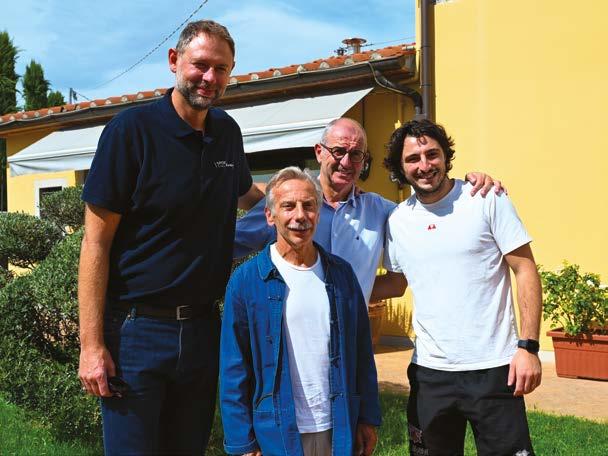
È stata una bella sensazione perché ho toccato con mano come qui le piante siano coltivate con sapienza e intelligenza, forti di una grande tradizione che vede le piante prodotte a Pistoia protagoniste in tutto il mondo.
Conoscere questo tipo di realtà e capire realmente cosa ci sta intorno credo che sia essenziale per comprenderne appieno il ruolo. Dalla consapevolezza e quindi dal comprendere bene tutto questo parte poi l’idea di un nuovo modo di vivere che può essere molto più legato alla sostenibilità e al green. Durante la bella visita nei vivai pistoiesi ho anche imparato molte cose che non sapevo sulla produzione delle piante e sul valore e sulla grande attenzione con cui l’azienda guarda alla sostenibilità.
Questa parola oggi esprime spesso un concetto forse un po’ vago, ma che noi di IMMEDIA intendiamo invece come una sorta di “responsabilità” delle proprie azioni verso un miglior futuro del mondo.
Durante questa visita a Pistoia ho anche avuto la possibilità di essere ospite e di visitare “Un Altro parco in città”, un evento veramente illuminante! Insieme a Giovanni Storti, come team di Immedia, vogliamo fortemente che le persone partecipino a iniziative del genere, perfette per far capire a tutti il ruolo importantissimo della natura. Poterlo fare nel centro di una città, a contatto con moltissima gente, è per noi molto gratificante e speriamo davvero che questo modello pistoiese possa essere replicato anche in altre città in modo da rendere sempre più persone consapevoli del ruolo fondamentale della natura per il futuro del mondo. ☜
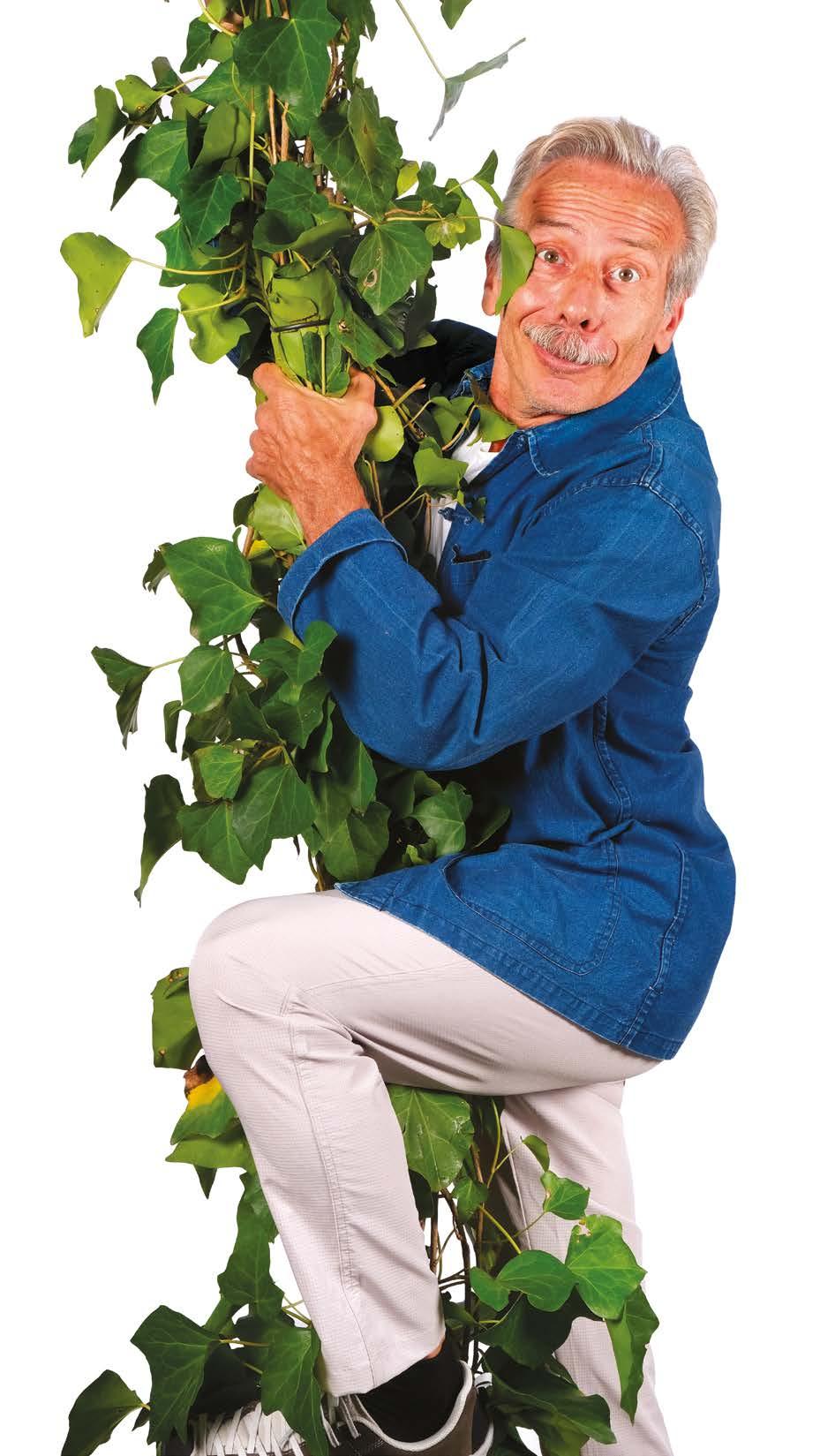
Attività di promozione della filiera “EDENEfficientamento, ammodernamento e innovazione nel vivaismo nazionale” candidata al finanziamento del V Avviso MASAF n. 0182458 del 22/04/2022 e s.m. per la selezione dei Contratti di filiera e di distretto di cui al DM n. 0673777 del 22/12/2021
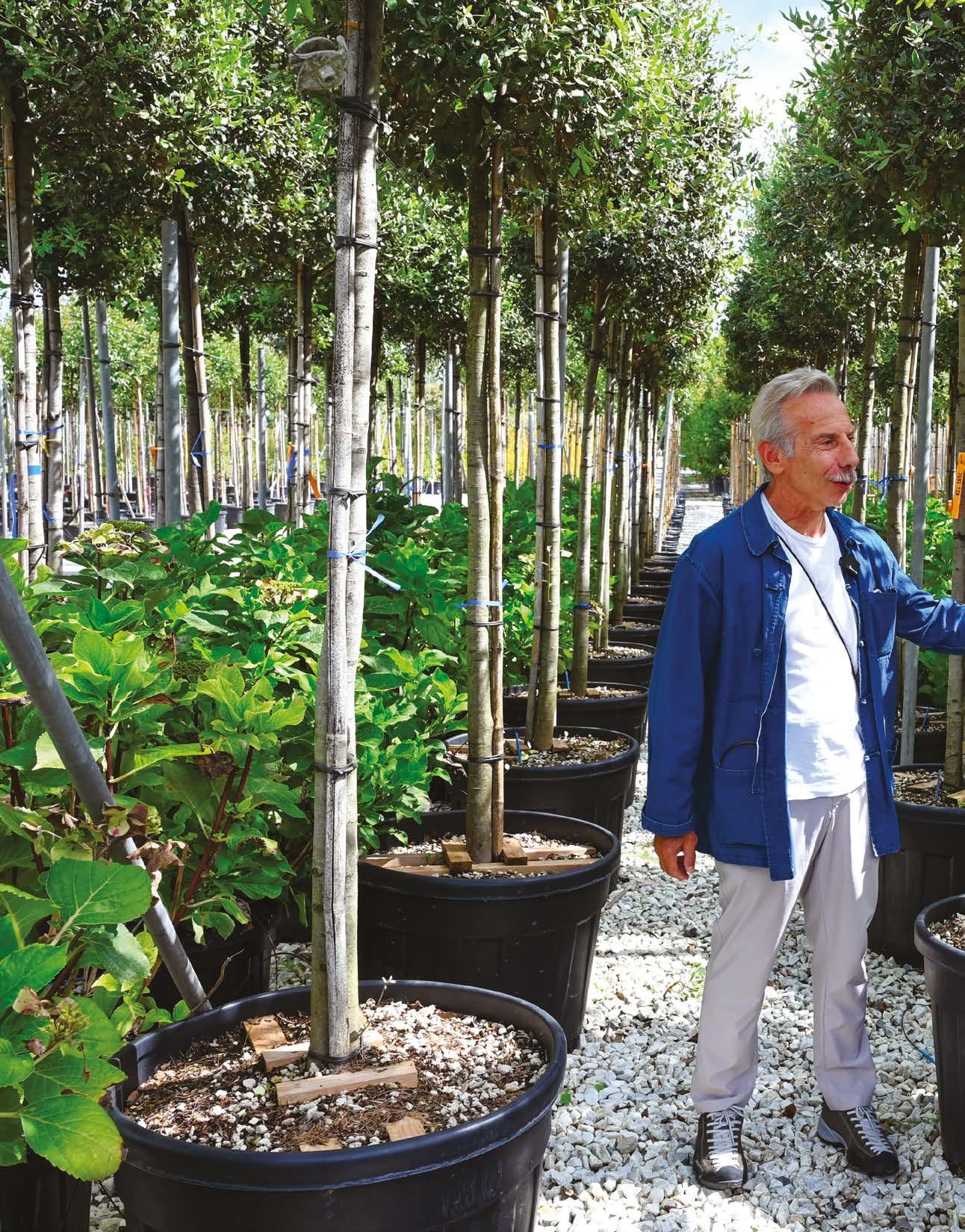
Another photograph of Giovanni and Arianna in Giorgio Tesi Group’s nurseries, where they could discover several aspects related to both the production of plants and the value given, and close attention paid, by the Pistoiese company to sustainability.
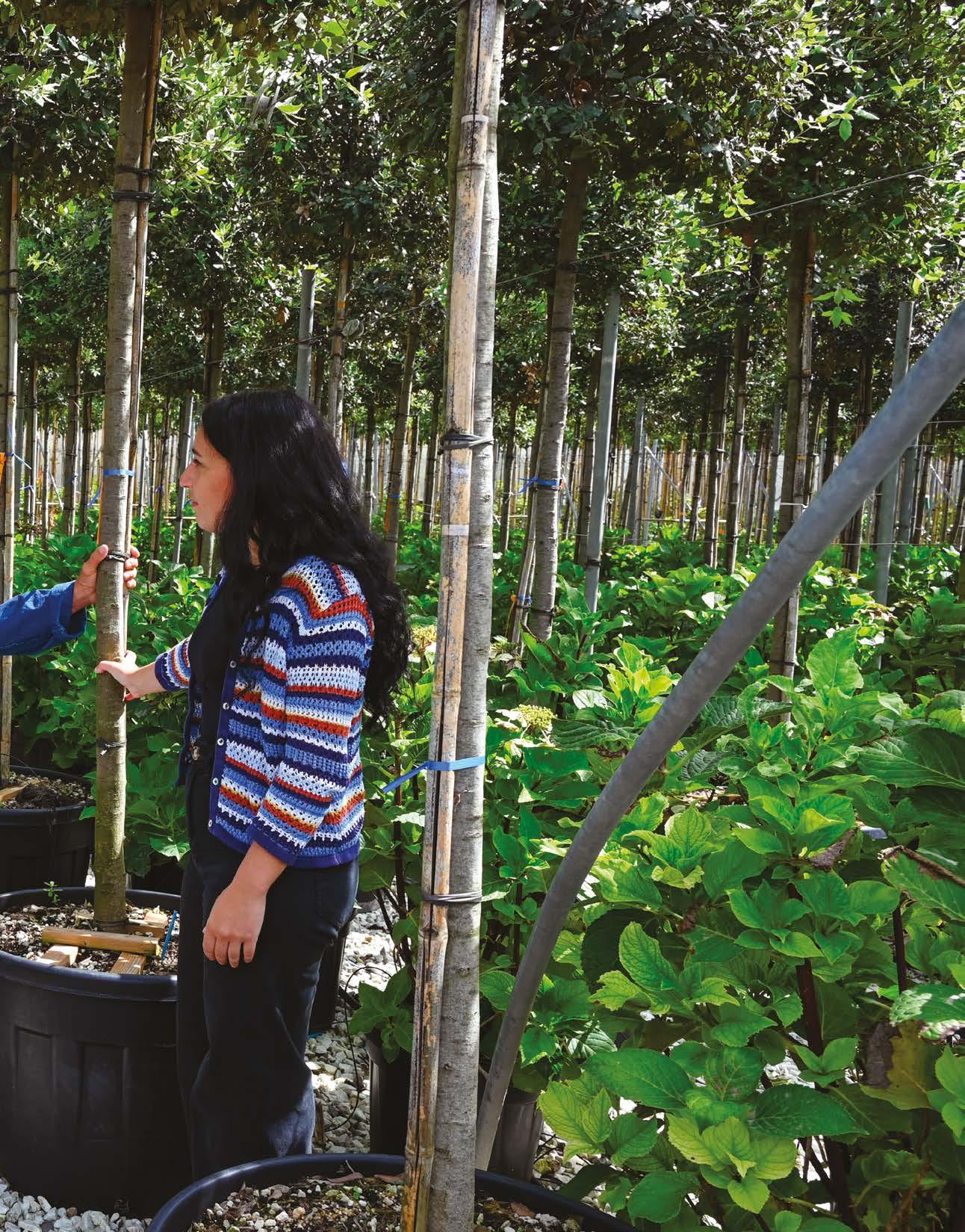
Ancora uno scatto di Giovanni e Arianna nei vivai di Giorgio Tesi Group, dove hanno potuto scoprire tante cose, sia sulla produzione delle piante che sul valore e la grande attenzione con cui l’azienda pistoiese guarda alla sostenibilità.
Arianna e Giovanni hanno fondato insieme IMMEDIA, un portale e palcoscenico per un domani sostenibile e per aver cura delle nuove generazioni e del futuro del mondo.
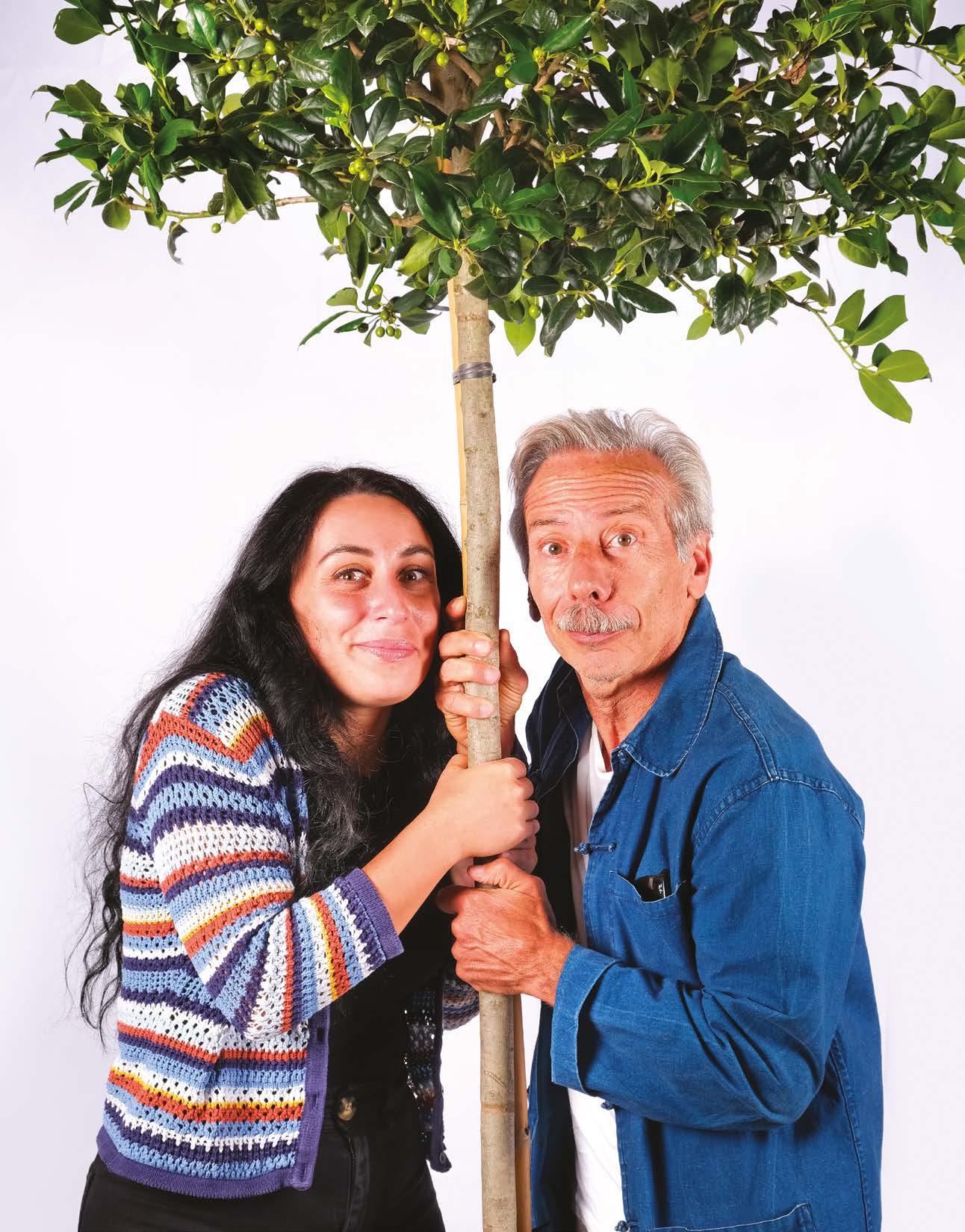
Together, Arianna and Giovanni founded IMMEDIA, a portal and stage for a sustainable tomorrow, which will help to take care of new generations and the future of the world.
Giovanni Storti
— We interviewed Giovanni Storti, comedian and activist who founded the “Immedia” project. With Arianna Izzi, natural scientist, science popularizer and Immedia’s editorial manager, they were absolute stars of UAPC.
Within the context of the event “Another Park in the City 2024” which, in the weekend between 13 and 15 September 2024, turned the beating heart of Pistoia, the European capital of green, into an actual garden – with the goal of enhancing more and more the importance of green in urban contexts and increase the community’s awareness towards topics of environmental sustainability – the
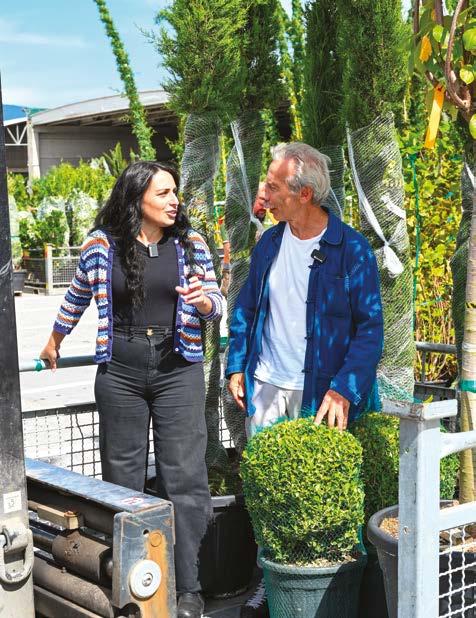
absolute protagonist was Giovanni Storti, from the trio “Aldo, Giovanni and Giacomo” who, along with the scientific disseminator Arianna Izzi, with whom she founded the “Immedia” project (portal and stage for a sustainable future and to take care of future generations and our world), was the guest of the NATURART TALK that took place on Saturday, 14 September in Piazza del Duomo. Together, in front of hundreds of spectators, they narrated their commitment to spread a more aware and sustainable model of the world.
During the morning of Saturday, 14 September, Arianna and Giovanni were able to visit the headquarters and the nurseries of Giorgio Tesi Group, and discovered and saw first-hand the manufacturing supply chain and, in particular, the innovative production processes that the company from Pistoia is following, while paying close attention to sustainability and respect for the environment.
Today, plants must be produced in a sustainable manner, by experimenting also innovative methods such as ecological weeding, mulching, recovery of water and the use of antagonist and auxiliary insects. A journey that Giorgio Tesi Group has started for some time, with the ambitious goal of reaching as soon as possible a sustainable, all-round production.
I’m really happy to have been invited to Pistoia – told us the well-known actor and green influencer Giovanni Storti – where I visited the headquarters and nurseries of Giorgio Tesi Group, one of the largest nurserystock companies in Europe.
It was a beautiful feeling, because I was able to see first-hand how plants are cultivated with wisdom and intelligence, thanks to a great tradition which sees the plants produced in Pistoia as protagonists all over the world. It’s a really interesting situation, where green and specificity are intertwined thanks to an innovative and increasingly sustainable production method. Furthermore, I was able to attend “Another park in the city”, this wonderful event where green becomes the absolute protagonist in Pistoia’s old town.
As Arianna and I always say, with green we can narrate several beautiful stories to children and adults. Green becomes the promoter of culture and pleasantness, as it should be in all cities of the world.
I arrived in Pistoia – these are the words by Arianna Izzi – and it was beautiful to discover that this city is the European capital of green. Visiting Giorgio Tesi Group’s production sites, it was beautiful to observe that there are companies that, literally, produce oxygen. Sometimes we pay close attention to the virtuous realities from other countries, particularly from Northern Europe, and we forget that also in Italy we have virtuous examples that we should follow. In Pistoia, Giorgio Tesi Group is a company that fully reflects these standards, with its large nurserystock production of ornamental plants which is one of the most important in Europe. To know this type of reality and actually understands what is around us, in my opinion, is essential to fully understand its role. The idea of a new way of life, that can be much more related to sustainability and green, starts from the awareness and ability to understand well what’s around us.
During the nice visit to the Pistoiese nurseries, I learnt several things I didn’t know about the production of plants, the value and the close attention the company pays to sustainability. Today, such word often expresses a value that is perhaps quite vague, but at IMMEDIA we actually refer to a sort of “accountability” for one’s own actions towards a better future for the world.
During this visit to Pistoia I was also able to be a guest and visit “Another park in the city”, an event which is truly eye-opening! Along with Giovanni Storti, in our capacity of members of the Immedia team, we strongly want people to attend such initiatives, which are perfect to make everyone aware of the very important role played by nature. Being able to do so in the centre of a city, in contact with several people, is very gratifying for us and we really hope that this Pistoiese model may be replicated also in other cities of the world, so that more and more people can become aware of the key role played by nature for the future of the world. ☜
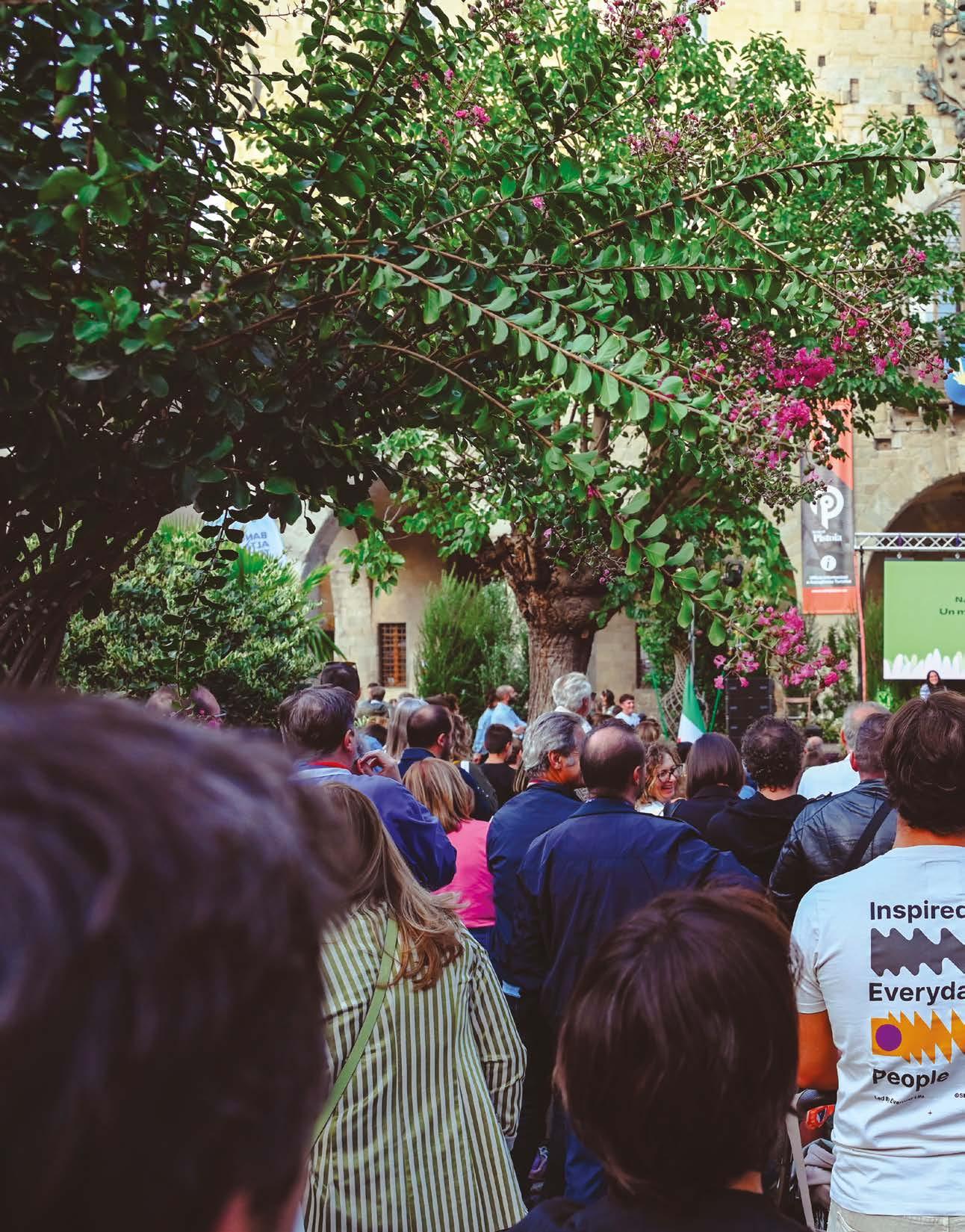
— L’undicesima edizione di “Un Altro Parco in Città”, l’evento che dal 13 al 15 settembre scorsi ha letteralmente trasformato alcune parti del centro storico di Pistoia in un vero e proprio giardino con un meraviglioso prato verde e tanti alberi.
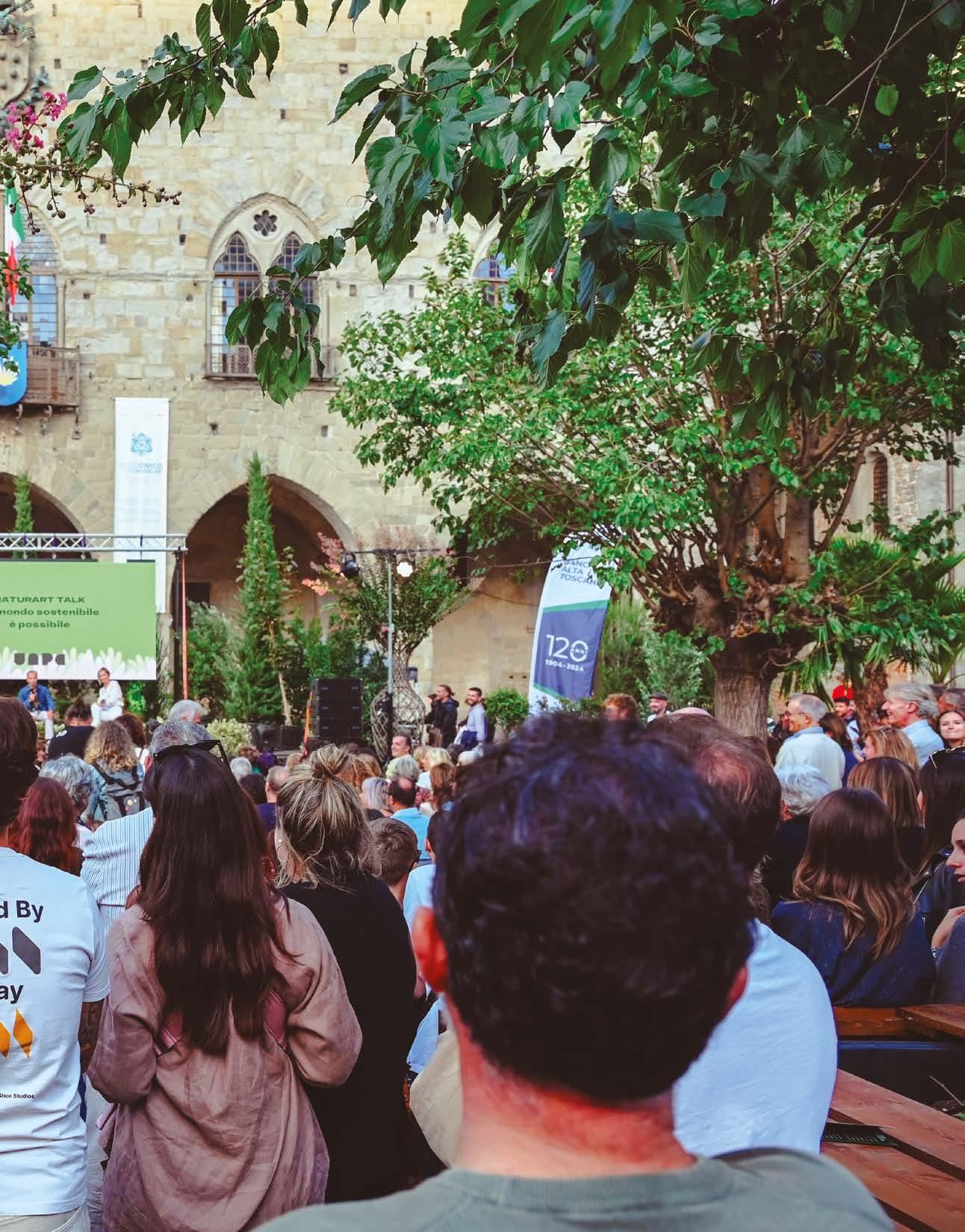
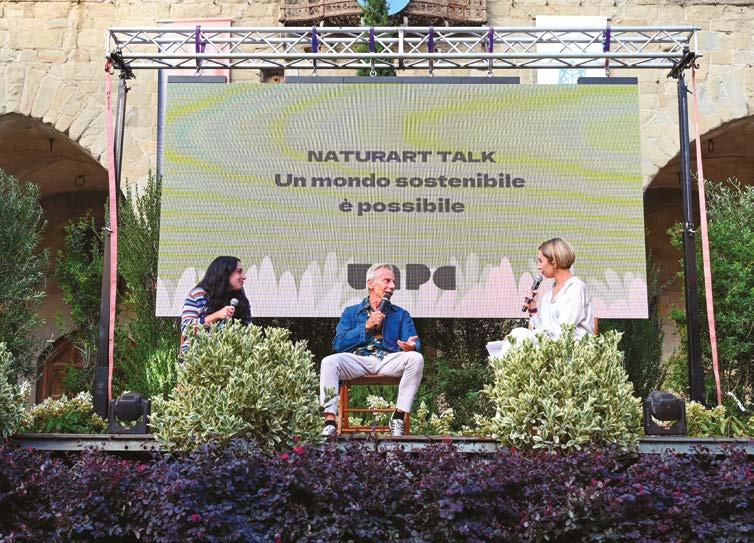
L’iniziativa, nata dall’idea del gruppo di architetti pistoiesi di UAS Studio nel 2013, continua a svolgere egregiamente il ruolo di catalizzatore di tutto il lavoro che è stato fatto nel corso degli anni per rafforzare il senso di identità e di appartenenza alla comunità cittadina portando il verde nel centro della città di Pistoia con l’obiettivo di dare a tutti la possibilità di riflettere sull’importanza del dialogo tra le città, l’uomo e le piante. Nel corso di questi anni UPAC è cresciuto di edizione in edizione arrivando ad assumere uno spessore di assoluto livello grazie anche ai prestigiosi ospiti che sono
intervenuti nelle diverse edizioni, sempre trattando argomenti fondamentali per il futuro della comunità e del pianeta come la tutela dell’ambiente, riciclo, l’economia circolare, l’energia alternativa, il green, la buona alimentazione e la sostenibilità in genere.
Un’edizione, questa del 2024, che fondandosi sulla partnership tra tutti gli organizzatori di UAPC (che un anno fa, per il decimo anniversario, si è trasformato in un’Associazione di promozione sociale),e cioè UAS Studio, Consorzio Turistico Città di Pistoia, Fondazione Caript,
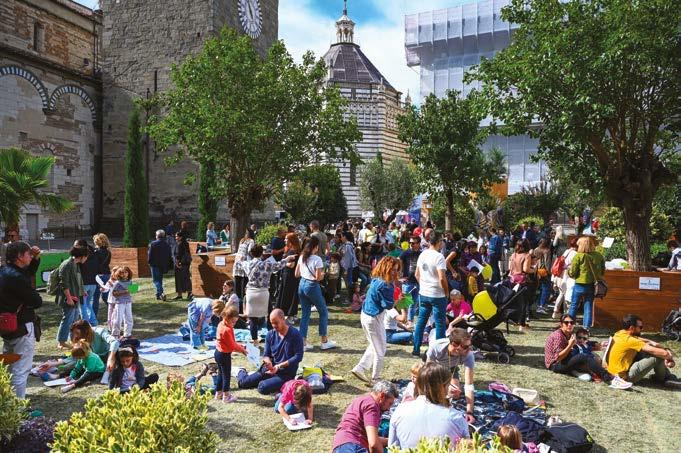
Comune di Pistoia, Giorgio Tesi Group come green partner, Confcommercio Pistoia e Prato e Coldiretti Pistoia, getta le basi per un lavoro sinergico per promuovere una crescita costante di questa manifestazione unica nel suo genere con l’obiettivo di renderla un appuntamento di alto livello in grado di attrarre visitatori e turisti sia dall’Italia che dall’estero.
In questo lungo cammino un ruolo significativo l’hanno avuto certamente anche la nostra rivista NATURART , l’urban magazine free press Discover Pistoia e i progetti culturali e di valorizzazione e promozione del territorio che vedono protagonista da oltre 15 anni Giorgio Tesi Group. Azienda sempre attenta nel realizzare e sostenere importanti progetti legati alla cultura, al verde, allo sport e al sociale.
UAPC quindi, oltre a essere stato un evento atteso con grande impazienza da cittadini e turisti, è riuscito a evidenziare inequivocabilmente sia gli eccellenti risultati che si possono raggiungere per Pistoia quando enti, istituzioni e privati lavorano insieme verso un obiettivo comune sia perché è riuscito molto bene – anche grazie ai tanti eventi che hanno caratterizzato questa edizione - a valorizzare le eccellenze e le unicità della nostra città, rafforzandone il ruolo di Capitale Europea del verde. ☜
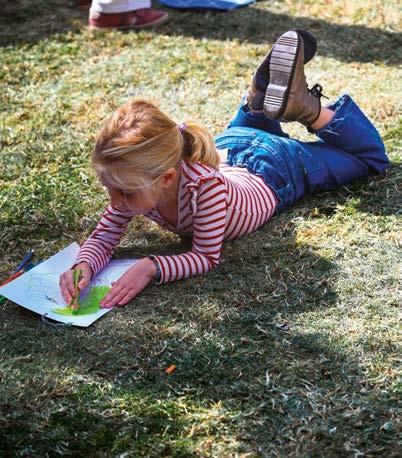
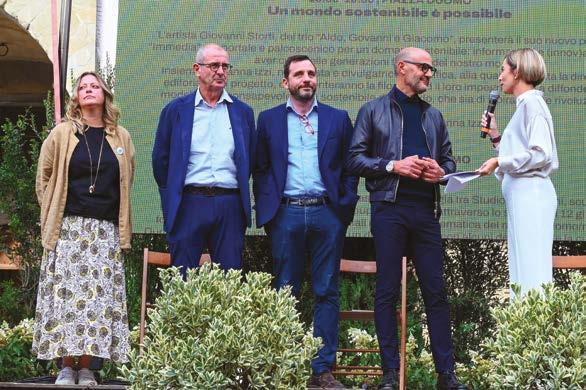
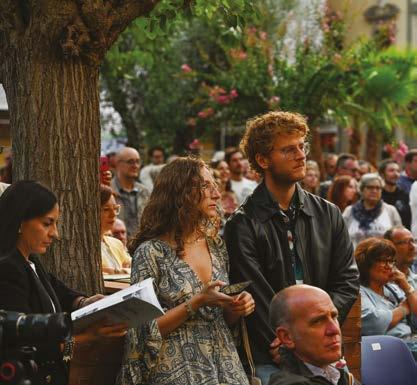
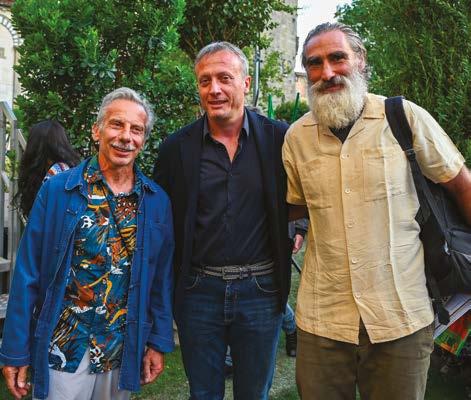
— Was the claim of the eleventh edition of “Another Park in the City”, the event that, from 13 September to 15 September 2024, literally turned some parts of Pistoia’s old town into an actual garden, with a wonderful green lawn and several plants.
The initiative, born in 2013 from the idea of the group of Pistoiese architects from UAS Studio, continues to brilliantly play the role of catalyst of all the work that was done throughout the years to enhance the sense of identity and belonging to the town community by putting green at the centre of the city of Pistoia, with the aim of giving to everyone the opportunity to reflect on the importance of the dialogue between the city, human beings and plants.
Throughout these years, “Another Park in the City” has been growing edition after edition, until it reached a very high level of importance also thanks to the prestigious guests that attended the different editions, where key topics for the future of the community and the planet (such as
protection of environment, recycling, circular economy, alternative energy, green, good nutrition and general sustainability) were always covered.
The 2024 edition was based on the partnership between all the organizers of “Another Park in the City” (which, one year ago, for the tenth anniversary, became an association for social advancement), i.e., UAS Studio, the Tourist Consortium of the City of Pistoia, the Caript Foundation, the Municipality of Pistoia, Giorgio Tesi Group as green partner, Confcommercio Pistoia and Prato and Coldiretti Pistoia, and laid the foundations to promote the continuous growth of this one-ofa-kind event, with the goal of turning it into a high-level appointment which is capable of attracting visitors and tourists from Italy and abroad.
In alto a sinistra un momento dell’inaugurazione di UAPC, con la conduttrice Giulia Nannini in compagnia di Tiziano Tempestini, Alessandro Tomasi, Fabrizio Tesi e Carolina Boccardi. Accanto, Giovanni Storti, Nicolò Begliomini e Folco Terzani.
Above, on the left, a moment from Another Park in the City’s opening ceremony, with the host Giulia Nannini in the company of Tiziano Tempestini, Alessandro Tomasi, Fabrizio Tesi and Carolina Boccardi. Next, Giovanni Storti, Nicolò Begliomini and Folco Terzani.
Throughout this journey, a significant role was definitely played also by our magazine NATURART, the free-press urban magazine Discover Pistoia and the cultural projects for the enhancement and promotion of the territory, of which Giorgio Tesi has been the protagonist for over 15 years. The company is always committed to creating and supporting important projects related to culture, green, sports and social initiatives.
Therefore, as well as being an event awaited with eager anticipation by citizens and tourists, “Another Park in the City” was undoubtedly able both to highlight the excellent results that Pistoia can obtain when bodies, institutions and private companies work to reach a shared goal, both because the event and – also thanks to the several events that characterized this edition - to successfully enhance the excellences and uniqueness of our city, strengthening its role of European capital of green. ☜
— Un incontro di idee per il futuro verde delle città.
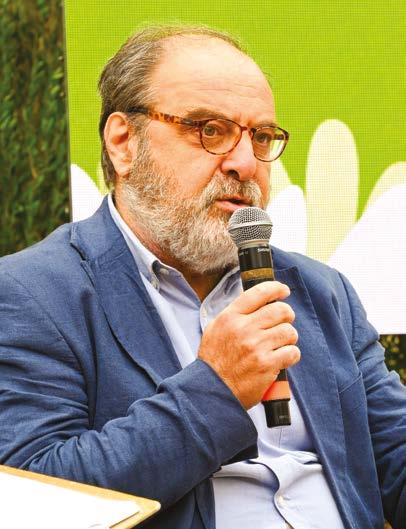
Testo
Andrea Cassone
Presidente Associazione Italiana di Architettura del Paesaggio
Il 14 settembre 2024, a Pistoia, in occasione dell’undicesima edizione di “Un Altro Parco in Città”, l’evento che, ormai ogni anno, trasforma a settembre il centro storico di Pistoia in un grande polmone green, si è tenuto un evento importante dedicato al futuro del verde urbano in Italia, l’incontro “L’Albero in Città e la Forestazione Urbana: idee, progetti, pubblicazioni”.
Organizzato dall’Associazione Italiana di Architettura del Paesaggio – AIAPP, sezione Toscana, Umbria e Marche (TUM), presieduta da Emanuela Morelli architetto e paesaggista, presidente AIAPP TUM, con la direzione scientifica di Nicoletta Boccardi, architetto e paesaggista tesoriere AIAPP sezione TUM, e Andrea Cassone, architetto e paesaggista, presidente AIAPP unitariae, in collaborazione con Coldiretti Pistoia, l’incontro è stato – nel quadro del più generale tema del verde che unisce e rigenera –un’occasione di approfondimento delle sfide e delle opportunità rappresentate dalla forestazione urbana. L’iniziativa ha inteso promuovere specialmente una riflessione condivisa e diffusa sul ruolo cruciale della forestazione nelle aree metropolitane e sul potenziale degli alberi come elementi vitali per la qualità della vita nelle città moderne.
L’evento – durato l’intera mattina – si è articolato e sviluppato in una serie di interventi che hanno trattato in maniera innovativa il tema degli alberi in città, mettendo in evidenza la necessità di una gestione sostenibile del verde urbano e il ruolo fondamentale degli alberi per il benessere delle persone e l’equilibrio ecologico.
Dopo i rituali saluti e una presentazione generale dei lavori da parte di Fabrizio Tesi, Presidente Coldiretti Pistoia, di Andrea Cassone, qui in qualità di Presidente di AIAPP, di Serena Zarrini, Presidente dell’Ordine degli
Architetti, Pianificatori, Paesaggisti e Conservatori di Pistoia e di Lorenzo Vagaggini, Presidente dell’ordine dei Dottori Agronomi e dei Dottori forestali di Pistoia, si sono susseguiti interventi che hanno trattato gli aspetti teorici, i progetti, le pubblicazioni e le iniziative sul tema. In rapida sintesi se ne da qui conto. Francesco Ferrini, Professore Ordinario di Arboricoltura generale e coltivazioni arboree presso il Dipartimento di Scienze e Tecnologie Agrarie, Alimentari, Ambientali e Forestali (DAGRI) dell’Università di Firenze ha trattato un tema cruciale per la sostenibilità
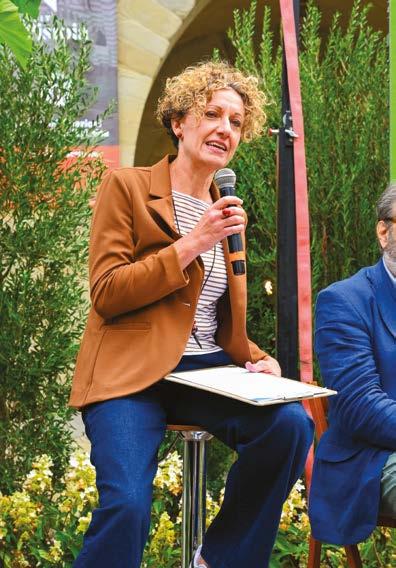
Convegno organizzato da In collaborazione con
ZOOM





Attività di promozione della filiera “EDENEfficientamento, ammodernamento e innovazione nel vivaismo nazionale” candidata al finanziamento del V Avviso MASAF n. 0182458 del 22/04/2022 e s.m. per la selezione dei Contratti di filiera e di distretto di cui al DM n. 0673777 del 22/12/2021




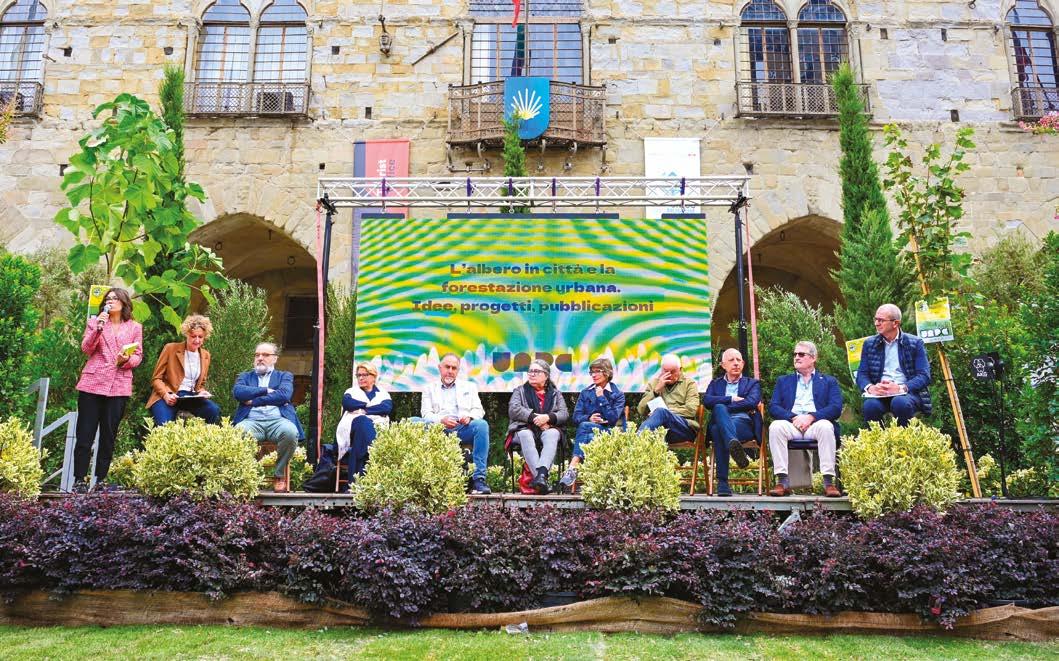

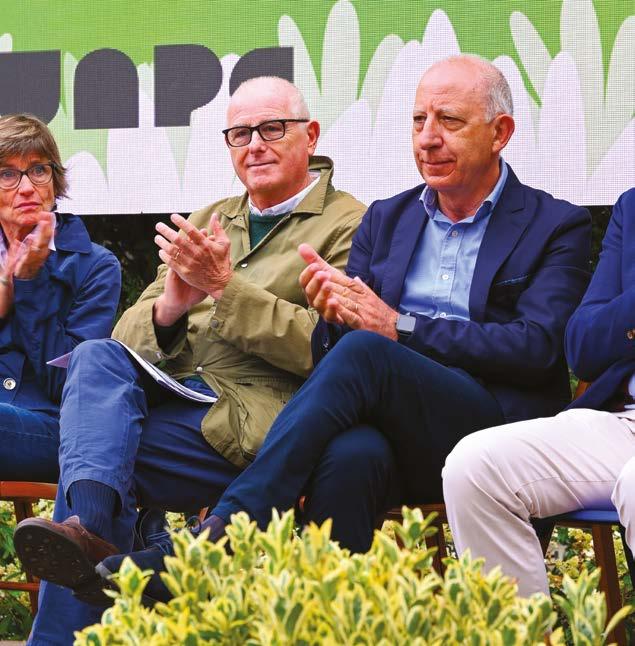
La storia recente del verde a Novara non è solo il racconto di un arricchimento estetico nel senso più ampio del termine, ma è la testimonianza di come sia stato, a tutti gli effetti, un vero e proprio strumento per il miglioramento della vivibilità e per la mitigazione degli effetti del cambiamento climatico.
Una parte significativa dell’incontro è stata dedicata alla presentazione di pubblicazioni che hanno approfondito la speciale relazione che intercorre tra gli alberi e la qualità di una città. Francesca Neonato, agronomo e paesaggista, socia AIAPP, ha presentato il suo libro “Oro Verde. Quanto vale la natura in città”, una riflessione sul valore economico e sociale delle aree verdi urbane, evidenziando come il verde sia una risorsa non solo estetica, ma fondamentale per la qualità urbana (oltre che per la qualità dell’aria, la gestione delle acque piovane e la riduzione del rumore).
Anche Uta Zorzi Muhlmann, architetto e paesaggista, e Saverio Lastrucci, dottore forestale e paesaggista, soci AIAP, hanno presentato la loro pubblicazione “Progettare il cambiamento
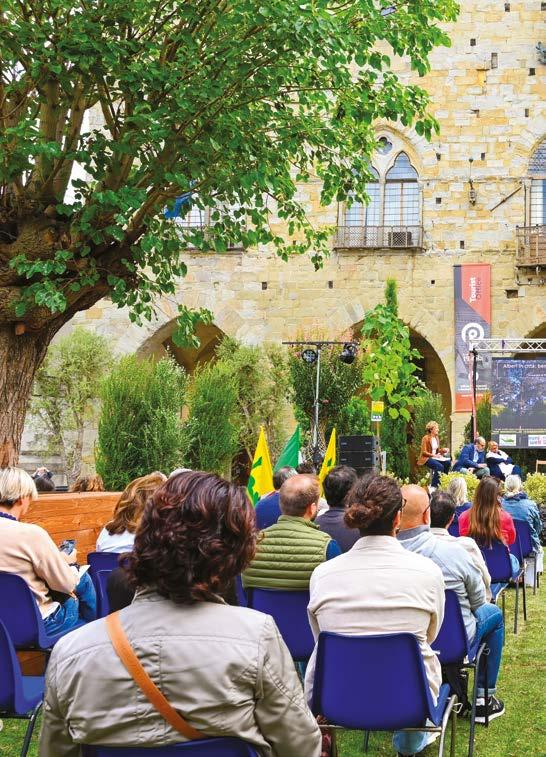
climatico. L’albero nella città mediterranea”, nata in ambito IFLA Europe, in cui si esplora e si approfondisce il ruolo centrale che gli alberi svolgono nel contrastare gli effetti negativi del riscaldamento globale. In particolare, la loro analisi si è concentrata sulle specificità del contesto mediterraneo, contesto in cui gli alberi, in ambiente urbano, devono essere attentamente scelti in progetti che tengano conto delle particolari difficoltà climatiche e ambientali, come la siccità e l’innalzamento delle temperature. L’ultima sessione del convegno è stata dedicata a iniziative giovanili e innovazioni nel settore del vivaismo, con un intervento di Fabrizio Tesi, presidente di Coldiretti Pistoia. Fabrizio Tesi ha parlato delle innovazioni del vivaismo pistoiese, da sempre un’eccellenza nel panorama italiano, sottolineando come il settore stia evolvendo verso pratiche più sostenibili e resilienti, con un’attenzione crescente alla scelta di specie più adatte a un futuro di cambiamenti climatici estremi. In questo contesto, alcuni giovani vivaisti hanno avuto l’opportunità di presentare gli alberi del
futuro, nuove varietà e cultivar che rispondono alle necessità di sostenibilità, durata e resistenza agli stress ambientali, elementi che saranno cruciali per il verde urbano delle città del domani. L’incontro si è concluso sottolineando la centralità dell’agricoltura e del vivaismo nella costruzione di città più verdi e più sostenibili, invitando alla collaborazione di enti pubblici, professionisti del paesaggio e cittadini per favorire un futuro in cui la natura e l’ambiente urbano possano coesistere armoniosamente, se non, positivamente, identificarsi. L’evento ha offerto dunque numerosi spunti di riflessione importanti sul ruolo che gli alberi e la forestazione urbana possono giocare nella creazione di ambienti urbani più sostenibili, resilienti e vivibili. La forestazione urbana è una vera e propria risposta alle sfide ecologiche e climatiche che le città stanno affrontando. La collaborazione tra architetti del paesaggio, architetti, agronomi, vivaisti e istituzioni è fondamentale per progettare città più ospitali e più salubri per le future generazioni e per il futuro del pianeta. ☜
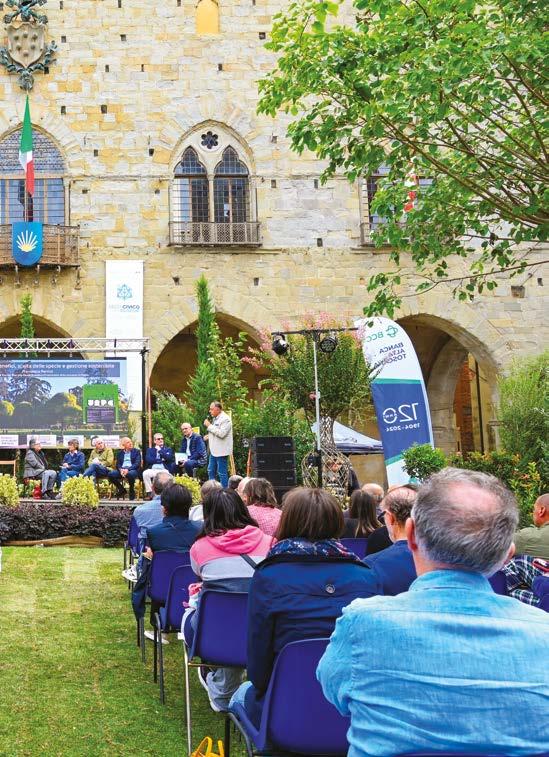
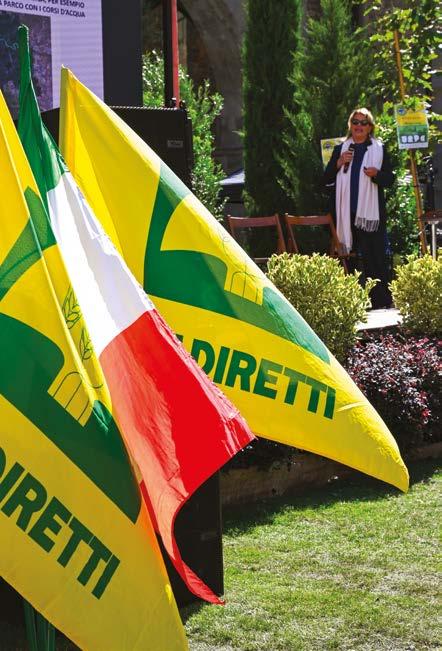
AIAPP
— A meeting of ideas for the green future of cities. Ideas, projects and publications
On 14 September 2024, on the occasion of the eleventh edition of “Another Park in the City”, the event which, every year in September, turns Pistoia’s old town into a big green lung, we held an important event dedicated to the future of urban green in Italy, “L’Albero in Città e la Forestazione Urbana: idee, progetti, pubblicazioni”. The event was organized by the Italian Association of Landscape Architects –AIAPP, Tuscany, Umbria and Marche (TUM) section-, chaired by Emanuela Morelli with the scientific direction of Nicoletta Boccardi and Andrea Cassone and in partnership with Coldiretti Pistoia. In the context of the more general topic of green as a tool for unity and regeneration, it was an opportunity to further explore the challenges and
opportunities represented by urban forestation. The initiative aimed at promoting, in particular, a shared and widespread reflection on the key role of forestation in metropolitan areas and the potential of trees as vital elements for the quality of life in modern cities. The event – which lasted for the whole morning – was structured and developed through a series of presentations which described, in an innovative way, the topic of trees in the cities, by highlighting the need for a sustainable management of the urban green and the key role of trees for the wellbeing of people and the ecological balance.
Following the salutations rite and a general presentation of the works by Fabrizio Tesi, President of Coldiretti Pistoia, Andrea Cassone, in his
L’ultima sessione del convegno è stata dedicata alle iniziative giovanili e alle innovazioni nel settore del vivaismo di piante ornamentali, settore determinante per l’economia della città di Pistoia, capitale europea del verde.
The last session of the conference was dedicated to initiatives by young people and innovations in the nurserystock industry, a key sector for the economy of the city of Pistoia, European capital of green.
capacity of President of the AIAPP, Serena Zarrini, President of the Order of Architects, Planners, Landscape Architects and Conservationists of Pistoia and Lorenzo Vagaggini, President of the Order of Agronomists and Foresters of Pistoia, a few interventions followed one another, which covered the theoretical aspects, projects, publications and initiatives on the topic and are briefly listed below.
Francesco Ferrini, Full Professor of General Arboricolture and Tree Crops at the Department of Agriculture, Food, Environment and Forestry Sciences and Technologies (DAGRI) of the University of Florence, covered a key topic for the sustainability of cities: “Trees in the cities: benefits, choice of the species and sustainable management”. Trees in urban areas do not only improve the aesthetics and microclimate, but are also essential to reduce atmospheric pollution, lower summer temperatures and improve the quality of life. However, the choice of tree species should be made carefully, by keeping into account the local climate conditions, biodiversity, resilience of plants to diseases and environmental stress, as well as their ability to adapt to ongoing climate changes. A good planning of urban green implies a
Attività di promozione della filiera “EDENEfficientamento, ammodernamento e innovazione nel vivaismo nazionale” candidata al finanziamento del V Avviso MASAF n. 0182458 del 22/04/2022 e s.m. per la selezione dei Contratti di filiera e di distretto di cui al DM n. 0673777 del 22/12/2021

careful planning, which should consider both the ecological and the social aspects.
Un evento che ha offerto importanti spunti di riflessione sul ruolo che gli alberi e la forestazione possono avere nella creazione di ambienti urbani più sostenibili, resilienti e vivibili, proponendosi come una vera e propria risposta alle sfide ecologiche e climatiche che le città stanno affrontando.
An event that offered important insights on the role that trees and urban forestation can play in the creation of more sustainable, resilient and liveable urban environments and proposes itself as an actual response to the ecological and climatic challenges that cities are facing.
Plant management should be oriented towards sustainability, by using practices that minimize the use of water resources and reduce environmental impact by promoting the long-term maintenance and care of trees.
A few punctual and concrete projects were also presented during the conference, which allowed to shed a light on how urban forestation can be a special path towards improving urban landscape.
Maria Cristina Tullio and Emanuele Bortolotti, landscape architects and members of the AIAPP, presented recent works and landscape projects which integrate harmoniously into the city’s functional needs.
In particular, the examples of works and landscape projects, parks and urban spaces in Rome, Milan, Genoa and other cities, represented as many special occasions to concretely show how, through careful planning, you can give back to cities spaces that are not only environmentally-friendly, but can also contribute significantly and actively to the quality of the environment (microclimate, air, etc.) and the beauty of places.
Also Uta Zorzi Muhlmann and Saverio Lastrucci, members of the AIAPP, presented their publication “Planning climate change. Trees in Mediterranean cities”, which was born in the context of IFLA Europe, which further explores the key role played by trees in counteracting the negative effects of global warming. In particular, their analysis focused on the specificity of the Mediterranean context, where trees within an urban environment should carefully chosen in projects which keep into account the specific climatic and environmental difficulties, such as drought and the increase of temperatures.
Francesco Bosco, landscape architect, member of the AIAPP and former head of green policies for the Municipality of Novara, talked about the projects which changed urban green in the cities, highlighting the importance of preserving the historical memory of human landscapes, again with a view to innovation and sustainability. The recent history of green in Novara is not only the narration of an aesthetic enhancement, in the broadest sense of the term, but is also a testimony to how it actually was a tool to enhance livability and mitigate the effects of climate change.
A significant part of the meeting was dedicated to the presentation of publications which explored in depth the special relationship between trees and the quality of a city. Francesca Neonato, member of the AIAPP, presented her book “Green gold. How worth is nature in the cities”, a reflection on the economic and social value of urban green areas, and highlighted how green is not only an aesthetic resource, but also a key resource for urban quality (as well as for the quality of air, the management of rainwater and the reduction of noise).
The last session of the conference was dedicated to initiatives by young people and innovations in the nurserystock industry, with a presentation by Fabrizio Tesi, president of Coldiretti Pistoia, who talked about the innovations of the Pistoiese nurserystock industry, which has always been an excellence in the Italian landscape, and highlighted how such industry is evolving towards more sustainable and resilient practices, with a growing attention towards the choice of species which are more suitable for a future of extreme climate changes. In this context, some young nursery owners had the opportunity to introduce the trees of the future, new varieties and cultivars that meet the need for sustainability, duration and resistance to environmental stress; such elements will be key for the urban green of future cities.
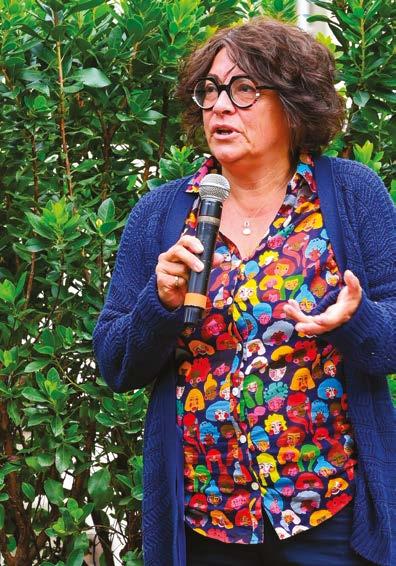

The event ended by highlighting the centrality of agriculture and the nurserystock industry in building greener and more sustainable cities and inviting public bodies, landscape professionals and citizens to collaborate to promote a future where nature and urban environment can coexist and identify each other harmoniously, if not positively.
Therefore, the event offered several, important insights on the role that trees and urban forestation can play in the creation of more sustainable, resilient and liveable urban environments. Urban forestation is an actual response to the ecological and climatic challenges that cities are facing. The collaboration between landscape architects, architects, agronomists, nursery owners and institutions is essential to plan more welcoming and healthier cities for future generations and the future of the planet. ☜



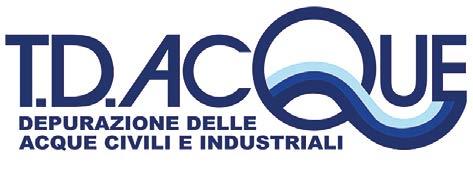
— Storia e segreti di una delle più grandi cupole d’Italia. Un approccio interdisciplinare per la conservazione della cupola del Vasari.
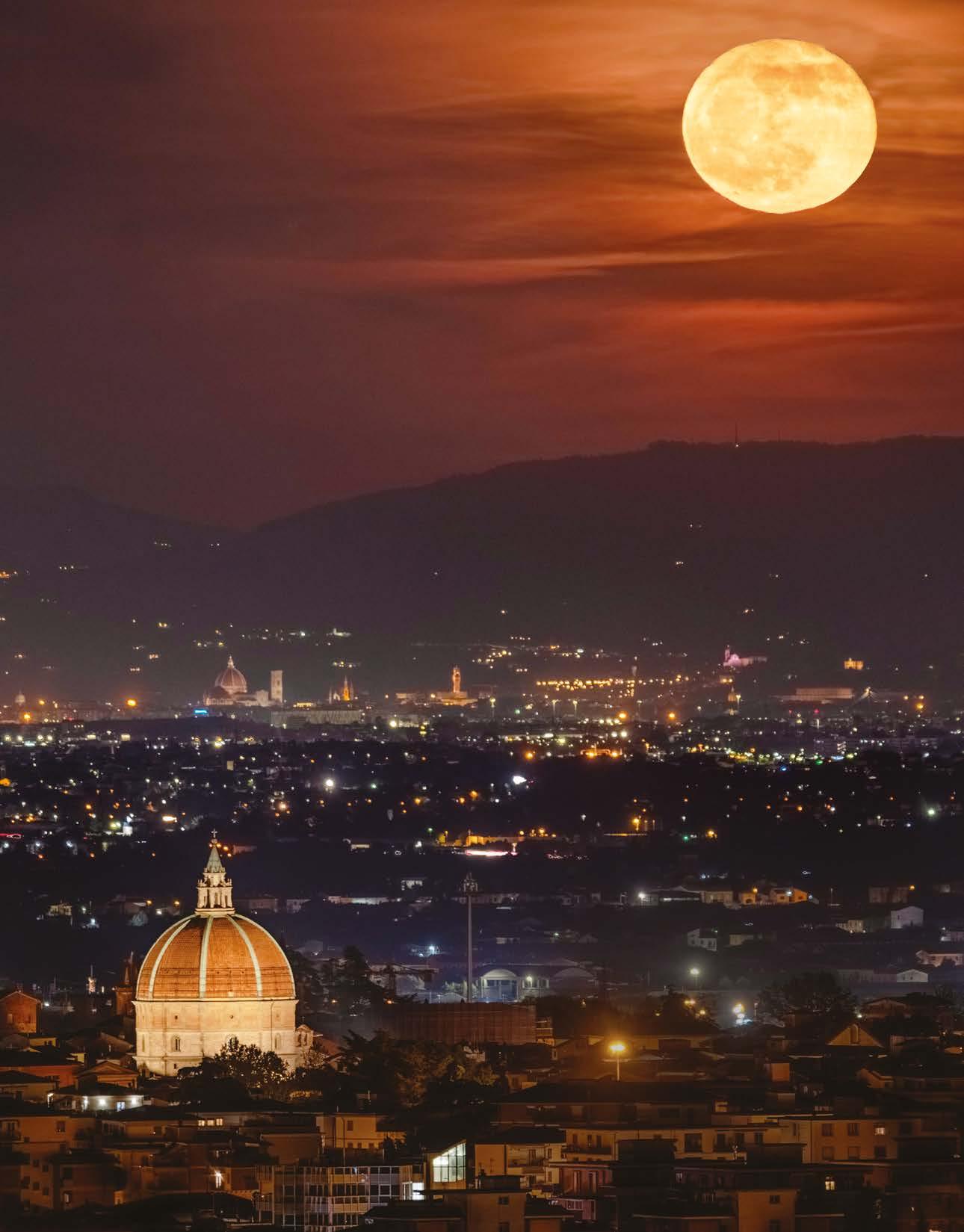
Testo
Grazia Tucci, Gianni Bartoli, Michele Betti
Dipartimento di Ingegneria Civile e Ambientale, Università degli Studi di Firenze
Valerio Tesi
Soprintendenza Archeologia, Belle Arti e Paesaggio per le province di Pisa e Livorno, Ministero della Cultura.
Foto
David Dolci
Nicolò Begliomini
L’edificazione della Basilica della Madonna dell’Umiltà inizia sul finire del XV secolo su progetto di Giuliano da Sangallo (1445-1516), architetto prediletto di Lorenzo il Magnifico (14491492). Le più importanti famiglie di Pistoia decisero la costruzione di questo nuovo tempio, edificato sul corpo della preesistente chiesa di Santa Maria Forisportae, per commemorare quello che secondo la tradizione era stato il miracolo della Madonna dell’Umiltà: il 17 luglio del 1490 un’immagine della Vergine iniziò a stilare dalla fronte sottili rivoli di un prodigioso licore, quasi che la Vergine soffrisse nell’assistere impotente all’infuriare delle lotte interne fra le potenti famiglie pistoiesi dei Panciatichi e dei Cancellieri. La costruzione del nuovo tempio richiede più di settant’anni. Iniziata la costruzione, nel 1494, Sangallo, a seguito della caduta della Signoria dei Medici, si allontana dalla Toscana e la direzione dei lavori viene assunta dall’architetto pistoiese Ventura Vitoni (1442-1522). Alla morte del Vitoni la costruzione è innalzata fino al secondo ordine del tamburo ottagonale, e priva di copertura. Per vedere la ripresa dei lavori occorre attendere l’arrivo sul cantiere di Giorgio Vasari (1511-1574) a cui Cosimo I (1519-1574), nel 1555, in visita a Pistoia per la fortificazione di Santa Barbara, rendendosi conto del cattivo stato in cui si trovava il tempio, assegna il compito di continuare la costruzione così ben cominciata procedendo all’elevazione della cupola. Vasari progetta così l’ultimo livello del tamburo ottagonale e la grande cupola, seguendo un disegno diverso dal progetto originario per riprodurre un parallelismo con la cupola del tempio fiorentino. La costruzione inizia il 10 maggio del 1563, per terminare, almeno nelle strutture portanti, e con diverse interruzioni dovute principalmente alla scarsità di fondi, nella primavera del 1569. L’immagine miracolosa della
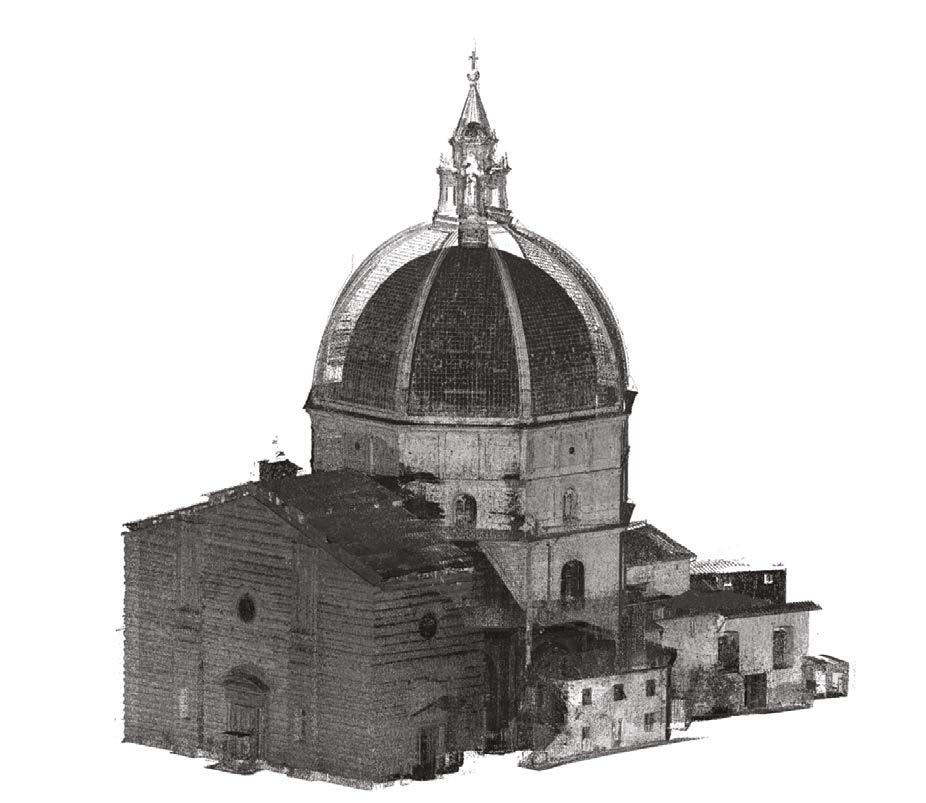
Madonna dell’Umiltà viene sistemata nel 1579 su un nuovo altare disegnato dal carrarese Pietro Tacca (1577-1640). Nel 1931 la chiesa viene elevata alla dignità di Basilica minore da papa Pio XI. Il progetto di Vasari della cupola è chiaramente ispirato alla cupola brunelleschiana di Santa Maria del Fiore a Firenze, e nel suo progetto Vasari cerca di riprodurre le principali caratteristiche chiave della cupola fiorentina come il sistema a doppia calotta in muratura, le nervature tra le due calotte oltre ai dettagli decorativi esterni con dei costoloni maggiori presenti in corrispondenza delle connessioni tra le otto vele. Tuttavia, nonostante queste somiglianze formali, Vasari non adotta nessuna delle innovazioni tecniche proposte da Filippo Brunelleschi (1377-1446) in Santa Maria del Fiore. Le principali differenze tecniche possono essere riassunte come segue: la forma della cupola della Basilica della Madonna dell’Umiltà passa da quella gotica a quella semisferica; lo schema di mattoni utilizzato per costruirla è diverso da quello impiegato da Brunelleschi nella
cupola fiorentina (Vasari pose i corsi di mattoni orizzontalmente lungo i paralleli non adottando il sistema a doppia curvatura con la disposizione a spina di pesce della cupola brunelleschiana); il collegamento tra le due calotte viene realizzato con elementi deboli, non impostando il robusto sistema di anelli e costoloni che lega l’involucro interno ed esterno della cupola brunelleschiana. A causa di questo, e di altre soluzioni costruttive tra cui l’elevata snellezza del tamburo, poco dopo il completamento della cupola (e ancor prima dell’installazione della pesante lanterna) viene a formarsi un complesso e diffuso quadro fessurativo che rapidamente evolve negli anni successivi. È lo stesso Vasari, non appena si manifestano le prime lesioni, i primi “peli” nella cupola, tra il 1571 e il 1572, a realizzare i primi interventi di consolidamento attraverso l’inserimento di catene in ferro all’interno e all’esterno della struttura. Nonostante questo accorgimento, tuttavia, i dissesti proseguono: si manifestano “nuove crepature” tanto che appena
In apertura, in primo piano la Cupola Pistoiese del Vasari e sullo sfondo quella fiornetina del Brunelleschi (foto David Dolci). Sopra, Vista tridimensionale del modello della nuvola di punti della Basilica. In trasparenza si osservano i rapporti geometrici tra le due calotte della cupola del Vasari, oltre ai costoloni maggiori.
Top, Vasari’s Pistoiese Dome in the foreground and Brunelleschi’s Florentine Dome in the background (photo David Dolci). Above, threedimensional view of the point cloud survey of the Basilica. The geometric relationships between the two shells of Vasari’s dome can be seen in transparency, as well as the major ribs.
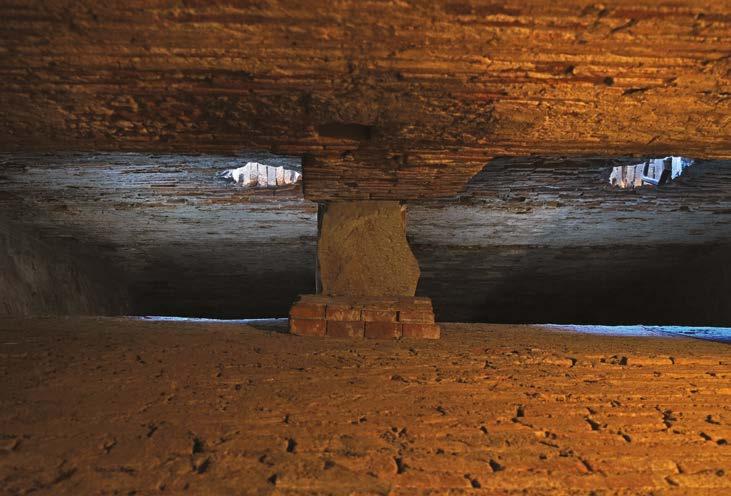
dieci anni dopo la conclusione dei lavori, Francesco I (1541-1587) invia sul cantiere Bartolomeo Ammannati (1511-1592) il quale insieme a Jacopo Lafri (15441620), che ne cura la realizzazione operativa, dispone la prima cerchiatura della cupola. Altre due catene vengono successivamente inserite tra il 1592 e il 1594 (Antonio Lupicini Giuliano di Filippo Baglioni). Tenendo conto di ulteriori interventi che si sono resi necessari nel corso dei secoli successivi, gli ultimi dei quali risalgono al secolo passato,
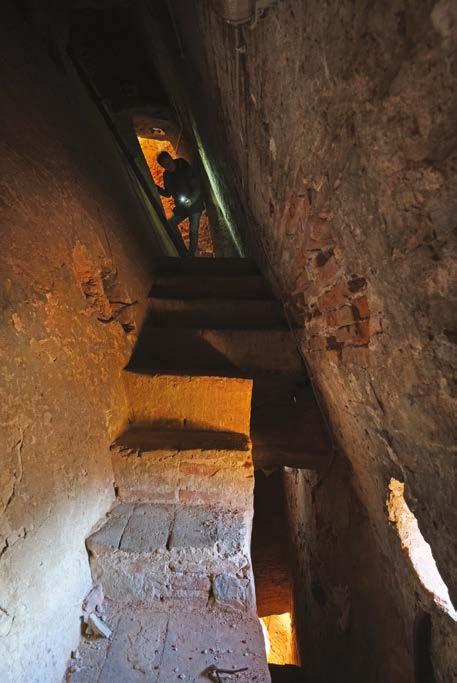
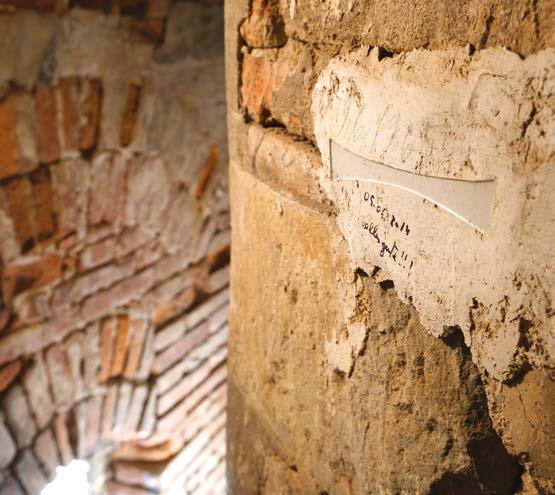
ad oggi sulla cupola vasariana sono presenti otto catene, sette delle quali disposte all’estradosso dell’involucro murario esterno.
L’ultimo restauro
In epoca moderna gli ultimi interventi di restauro sul tempio pistoiese risalgono al 2008 quando la Basilica è stata interessata da una serie di studi, indagini sperimentali e analisi — promossi dalla Soprintendenza e finanziati dalla Fondazione Cassa di Risparmio di Pistoia e Pescia e dalla Diocesi di Pistoia — finalizzati alla conservazione del complesso. Il progetto si è concluso con il restauro dell’intera Basilica e il restauro della cupola, in particolare, è iniziato nel 2012 e ha richiesto 2 anni. Come parte finale di questo intervento è stata inoltre inserita una nuova catena d’acciaio e installato un sistema di monitoraggio ambientale e strutturale. Nel quadro di queste attività gli autori hanno sviluppato un approccio interdisciplinare volto a identificare il comportamento statico e dinamico della Basilica che ha combinato tecniche di rilievo laser scanner con tecniche di modellazione numerica agli elementi finiti. Il lavoro svolto sulla cupola del Vasari ha rappresentato un esempio emblematico delle grandi potenzialità che risiedono nell’adozione delle tecniche della geomatica.
La possibilità di acquisire rapidamente grandi quantità di dati spaziali (e di georeferenziare
qualsiasi tipo di informazione) ha consentito di fornire dati geometrici, e di monitoraggio, di supporto per diverse tipologie di analisi. Il rilievo, infatti, non è solo la base su cui creare modelli strutturali, ma soprattutto in casi così sofisticati e complessi, rappresenta l’unico strumento che permette di correlare la geometria complessiva, le tecniche costruttive, la caratterizzazione della tessitura dei materiali, la posizione delle catene, l’individuazione e la mappatura delle fessure, ecc. La combinazione di questi dati con le informazioni storiche e d’archivio ha consentito di accedere alle motivazioni del progetto iniziale e alle modifiche apportate nel corso dei secoli. Fra le molteplici sfide che sono state affrontate nell’indagine si può menzionare, a titolo di esempio, la difficoltà di effettuare misurazioni topografiche e scansioni laser sia nella stretta intercapedine tra le due cupole, sia nel rilievo dell’esterno (l’edificio è piuttosto alto e situato in una rete di strade strette) oltre alla necessità di condurre un’indagine di dettaglio su elementi di piccola dimensione, come gli elementi decorativi e la posizione delle fessure. Superate queste complessità, l’indagine ha permesso di comprendere meglio la morfologia dell’opera, in particolare degli elementi non direttamente visibili. La campagna sperimentale sulla cupola vasariana ha incluso prove di tipo statico finalizzate
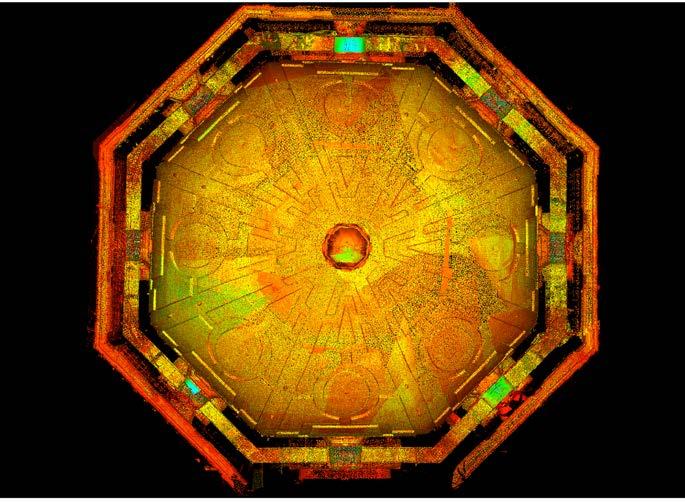
a valutare il percorso delle sollecitazioni interne dalla cupola fino al tamburo per arrivare alle fondazioni. Inoltre per determinare il comportamento dinamico, e quindi in qualche modo arrivare a stimare il possibile comportamento della struttura sotto effetto di microsismi, è stata condotta una serie di misure di vibrazione ambientale posizionando degli accelerometri sismici lungo le direzioni radiali e circonferenziali della cupola. I test eseguiti hanno consentito la stima delle prime due frequenze naturali.
Questi risultati sperimentali sono stati utilizzati per l’identificazione di un modello numerico completo del complesso strutturale della Basilica. Nella letteratura tecnica e scientifica, la modellazione numerica si è dimostrata uno strumento efficace per aiutare la comprensione del comportamento strutturale delle strutture antiche e numerosi sono i casi di studio tra cui, a titolo di esempio, si possono ricordare la Basilica di San Vitale a Ravenna, un edificio che presenta fessurazioni diffuse; la Cupola di Vicoforte, la più grande cupola
ellittica mai costruita; la Cappella dei Principi nella Basilica di San Lorenzo a Firenze così come anche la cupola di Santa Maria del Fiore. Sulla scorta di queste esperienze, modelli numerici di complessità crescente sono stati sviluppati anche per la Basilica dell’Umiltà allo scopo di analizzarne il comportamento strutturale. Ed in questo senso, il modello numerico della Basilica pistoiese, identificato per riprodurre le evidenze sperimentali, rappresenta un fedele gemello digitale della Basilica che ha supportato l’interpretazione delle principali evidenze statiche e dinamiche della struttura.
Ringraziamenti. Il rilievo metrico, coordinato dagli autori, è stato sviluppato durante la Tesi di Specializzazione dell’arch. M. Riemma e la tesi di dottorato dell’arch. A. Nobile. Gli autori desiderano inoltre ringraziare l’ing. G. Palchetti della Fondazione Cassa di Risparmio di Pistoia e Pescia, che ha sostenuto la ricerca.
L’intradosso della cupola del Vasari così come leggibile grazie al rilievo topografico e (sotto) un dettaglio della restituzione in scala metrica di piante e sezioni.
The intrados of Vasari’s dome as it can be read thanks to the topographic survey and (below) a few plans and sections of the basilica.
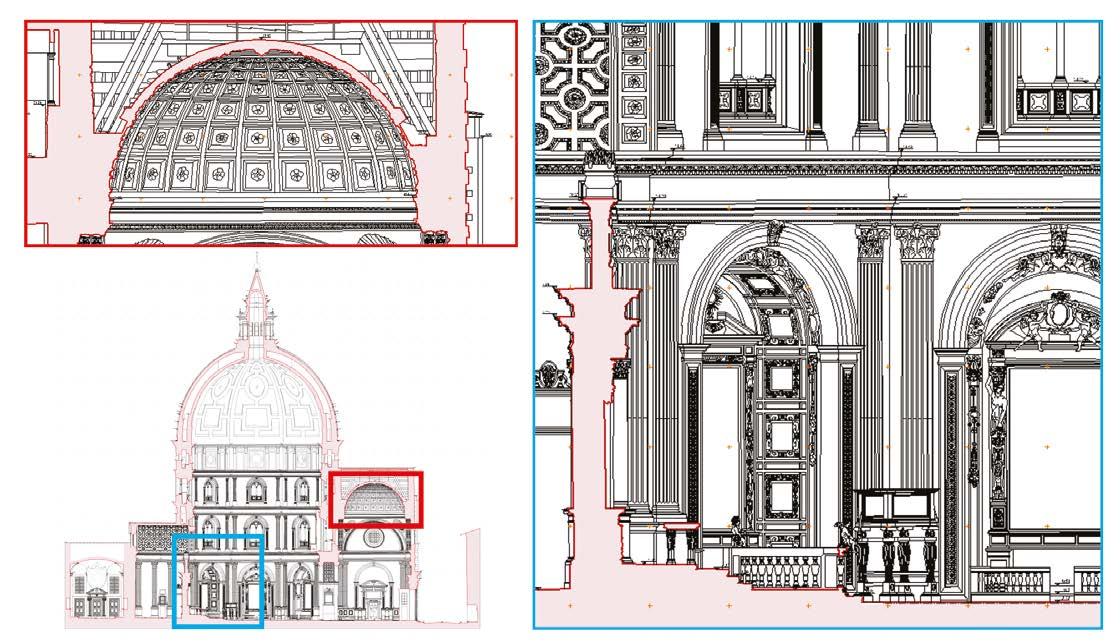
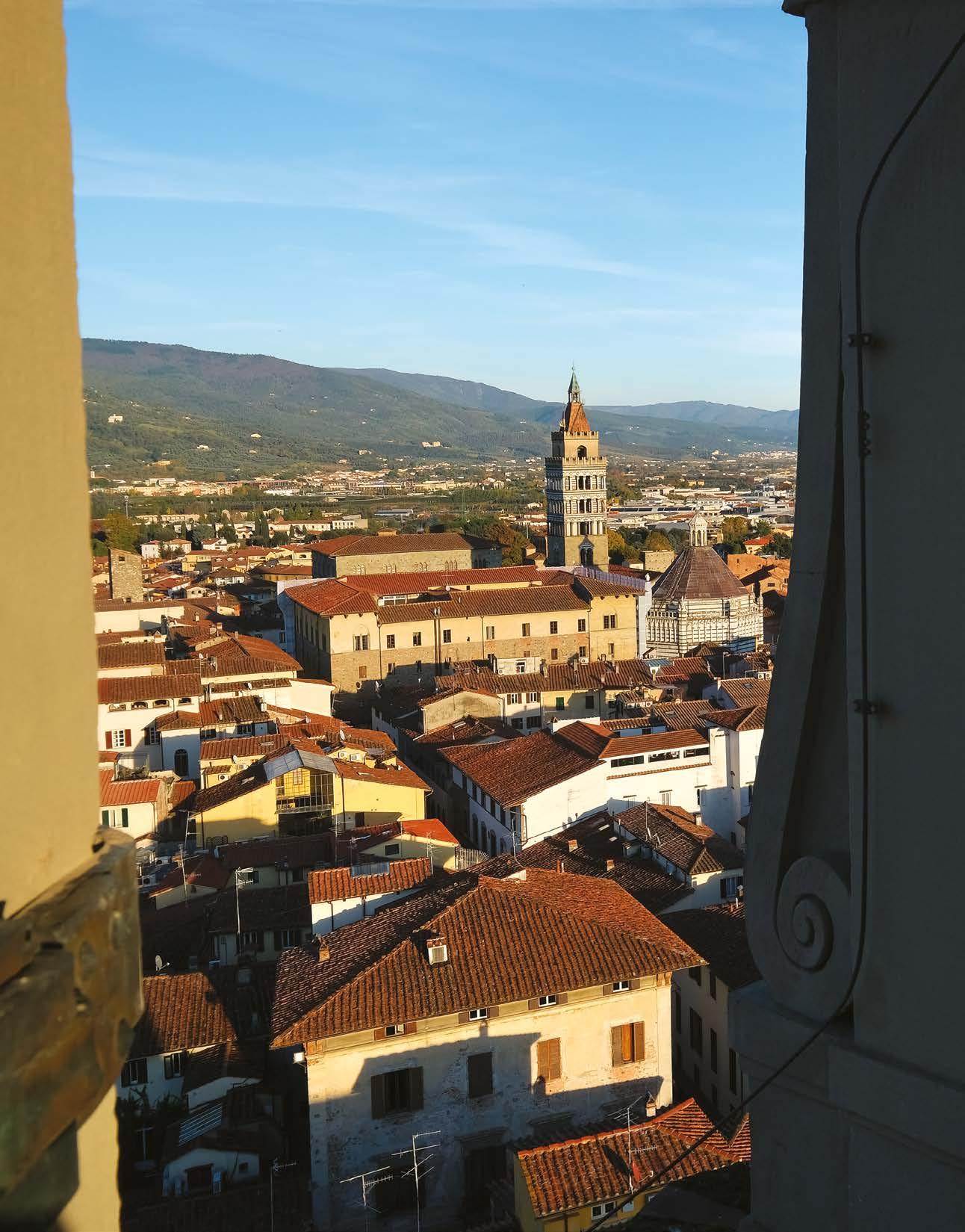
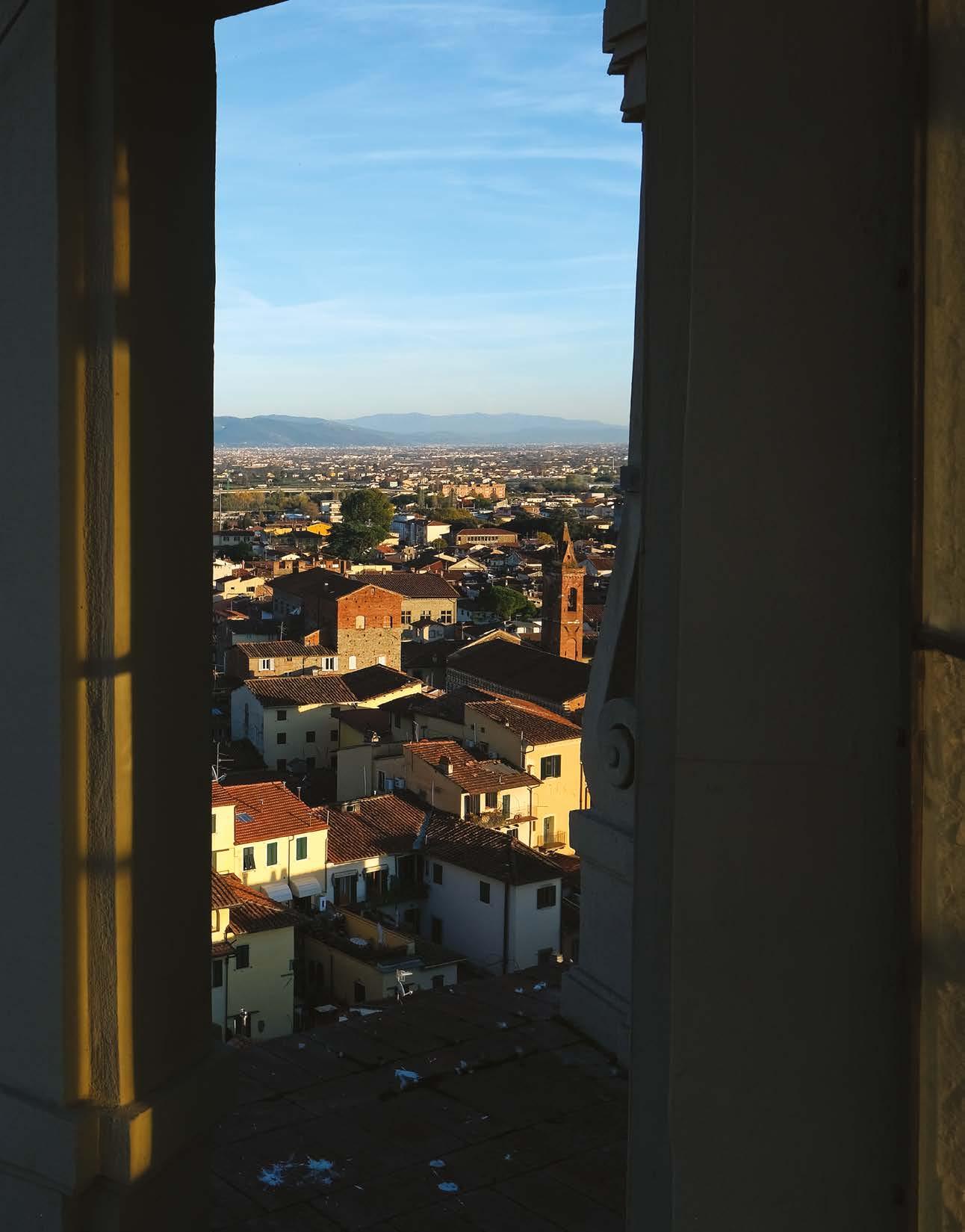
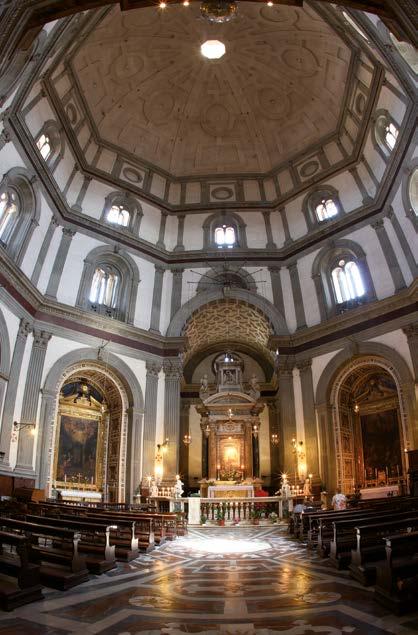

— History and secrets of one of Italy’s largest domes. An interdisciplinary approach for the conservation of Vasari’s dome.
The construction of the Basilica of the Madonna dell’Umiltà began at the end of the 15th century according to a design by Giuliano da Sangallo (1445-1516), architect of Lorenzo il Magnifico (1449-1492).
The most important families of Pistoia decided to build this new temple, erected over the pre-existing church of Santa Maria Forisportae, to commemorate what tradition says was the miracle of the Madonna dell’Umiltà: on 17 July 1490 an image of the Virgin began to emit thin streams of a prodigioso licore from her forehead, as if she was helplessly watching the furious fights between the powerful Panciatichi and Cancellieri families.
The construction of the new temple took more than seventy years. In 1494, following the fall of the Medici’s family, Sangallo moved away from Tuscany and the works supervision was
taken by the architect Ventura Vitoni (1442-1522). On Vitoni’s death, the building was elevated until the second order of the octagonal tambour, and without a roof. To see the continuation of the works, it is necessary to wait for Giorgio Vasari (1511-1574) to whom Cosimo I (1519-1574), in 1555, on a visit to Pistoia for the fortification of Santa Barbara, realizing the poor state the temple was in, assigned the task of continuing the construction così ben cominciata (so well set out) by proceeding to the elevation of the dome. Vasari thus builds the last level of the octagonal tambour and the great dome, following a different design from the original plan to reproduce a parallelism with the dome of the Florentine temple. Construction began on 10 May 1563, to be completed, at least in the load-bearing structures, and with several interruptions mainly due to the lack of funds, in the spring of 1569. The miraculous image of the
Madonna dell’Umiltà was placed on a new altar designed by Pietro Tacca (1577-1640) in 1579. In 1931, the church was elevated to the status of minor Basilica by Pope Pius XI. Vasari’s design of the dome is clearly inspired by Brunelleschi’s dome of Santa Maria del Fiore in Florence, and in his project, Vasari attempts to reproduce the key features of the Florentine dome such as the double dome masonry system, the ribs between the two domes as well as the external decorative details with the major ribs between the eight webs. However, despite these formal similarities, Vasari does not adopt any of the technical innovations proposed by Filippo Brunelleschi (1377-1446) in Santa Maria del Fiore. The main technical differences can be summarized as follows: the shape of the dome of the Basilica of the Madonna dell’Umiltà changes from Gothic to hemispherical; the pattern of bricks used to build the dome differs from that employed by Brunelleschi in the Florentine dome (Vasari laid the brick courses along the parallels disregarding the double curved herringbone courses of the Brunelleschi’s dome); the connection between the two shells is made with weak joints, paying no attention to the strong ring and rib system that held together the inner and outer shell of the Brunelleschi’s dome. Due
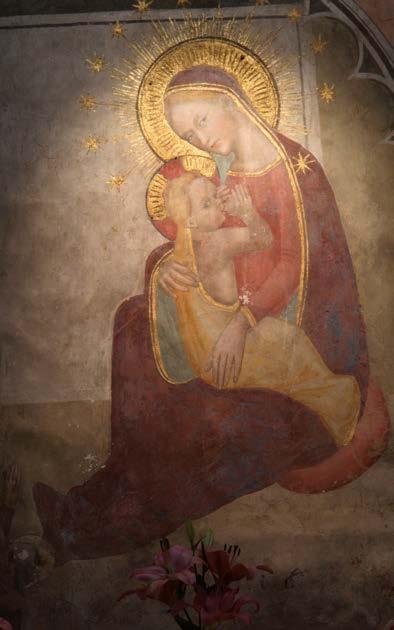
to this, and to other constructive solutions including the high slenderness of the tambour, shortly after the dome’s completion (and even before the installation of the heavy lantern), a complex and widespread cracking pattern developed that rapidly evolved over the subsequent years. It was Vasari himself, as soon as the first cracks appeared - the first “peli” (cracks) in the dome - between 1571 and 1572, who carried out the first consolidation by inserting iron chains inside and outside the structure. Despite this, however, the damage continued to spread: “nuove crepature” (new cracks) appeared and just 10 years after the conclusion of the works, Francesco I (1541-1587) commissioned Bartolomeo Ammannati (1511-1592), with Jacopo Lafri (15441620), placed the first hooping of the dome. Two more chains were subsequently inserted between 1592 and 1594 (Antonio Lupicini Giuliano di Filippo Baglioni). Taking into account further interventions that became necessary over the following centuries, the last of which date back to the past century, there are now eight chains on the Vasari’s dome, seven of which are arranged on the extrados of the outer shell.
The latest restoration In modern times, the last restoration work on temple dates back to 2008, when the Basilica underwent a series
of studies, experimental investigations, and analyses - promoted by the Soprintendenza and financed by the Fondazione Cassa di Risparmio di Pistoia e Pescia and the Diocesi di Pistoia - aimed at preserving the temple. The project concluded with the restoration of the entire basilica and the restoration of the dome, in particular, began in 2012 and took two years. As a final step of this intervention, a new steel chain was also inserted and an environmental and structural monitoring system installed. As part of these activities, the authors developed an interdisciplinary approach aimed at identifying the static and dynamic behavior of the Basilica that combined laser scanner survey techniques with finite element numerical modelling. The work carried out on Vasari’s dome was an emblematic example of the great potential that lies in the adoption of geomatics techniques. The possibility of rapidly acquiring large quantities of spatial data (and georeferencing any type of information) made it possible to provide geometric data, and monitoring data, and to support different types of analysis. In fact, the survey is not only the basis on which to create structural models but, especially in such complex cases, it represents the only tool that allows the correlation of overall geometry, construction techniques, characterization of material texture, location of chains, identification and mapping of cracks, etc. The combination of this data with historical and archival information allowed access to the motivations behind the initial design and the modifications made over the centuries. The many challenges faced in the investigation include, for instance, the difficulty of carrying out topographical measurements and laser scans both in the narrow space between the two shells and in surveying the exterior (the building is rather high and located in a network of narrow streets), as well as the need to conduct a detailed investigation of small elements, such as decorative elements, and the position of cracks. Having overcome these complexities, the survey
allowed for a better understanding of the morphology of the Basilica, particularly of the elements that are not directly visible.
The experimental campaign on Vasari’s dome included static tests aimed at assessing the internal stress path from the dome to the tambour until the foundations. In addition, to assess the dynamic behavior, and thus estimating the possible response of the structure under the effect of microearthquakes, a series of environmental vibration measurements were conducted by positioning seismic accelerometers along the radial and circumferential directions of the dome. The tests allowed the estimation of the first two natural frequencies. These experimental results were used to identify a numerical model of the Basilica. In the technical and scientific literature, numerical modelling has proven to be an effective tool for supporting the understanding of the structural behavior of ancient structures, and there are numerous illustrative case studies including, for example, the Basilica of San Vitale in Ravenna, a building with widespread cracks; the Dome of Vicoforte, the largest elliptical dome ever built; the Cappella dei Principi in the Basilica of San Lorenzo in Florence as well as the dome of Santa Maria del Fiore. Based on these experiences, numerical models of increasing complexity were also developed for the Basilica dell’Umiltà in order to analyze its structural behavior. And in this sense, the numerical model of the Basilica, identified to reproduce the experimental evidence, represents a digital twin of the Basilica that has supported the interpretation of the main static and dynamic experimental evidence.
The metric survey, coordinated by the authors, was developed during the Postgraduate Thesis of the arch. M. Riemma and the PhD thesis of the arch. A. Nobile. The authors would also like to thank the engineer G. Palchetti of the Fondazione Cassa di Risparmio di Pistoia e Pescia, who supported the research.
Vista fotografica del tamburo di imposta della cupola e sua restituzione metrica. Sulla destra l’immagine miracolosa della Madonna dell’Umiltà.
Photographic view of the tambour and its metric restitution. On the right, the miraculous image of the Madonna dell’Umiltà.
Anniversario dei 450 anni dalla morte
— La storia e il percorso artistico di Giorgo Vasari, un artista famoso in tutto il mondo a cui Pistoia deve il suo caratteristico skyline dominato dalla inconfondibile cupola del Santuario della Madonna dell’Umiltà.
Se la città di Pistoia si annuncia con uno skyline dominato dalla caratteristica cupola rossa, scandita da bianchi costoloni marmorei e coronata da una lanterna, lo deve al duca
Cosimo de’ Medici e al suo artista di fiducia Giorgio Vasari.
Furono infatti il committente e l’artefice dell’impresa che condussero all’agognato completamento del santuario della Madonna dell’Umiltà, costruito per una miracolosa immagine
della Vergine Maria a partire dal 1492 con il progetto di Giuliano da Sangallo e Francione, continuato da Ventura Vitoni fino al 1522 e poi rimasto incompiuto. Vasari risolse l’annoso problema di coprire il cuore del santuario, un prisma a pianta ottagonale dalle mura deboli, con la cupola d’ispirazione brunelleschiana che conferisce alla città una prestigiosa somiglianza con Firenze: ne diresse i lavori fra il 1562 e il 1569 mentre, peraltro, era al colmo del suo impegno per la corte medicea nei molteplici ruoli di architetto, pittore, regista, scenografo, scrittore e, per dirla in termini attuali, ideologo della cultura.
Testo
Cristina Acidini
Presidente della Fondazione Casa Buonarroti, Firenze
Pochi artisti sono stati più attivi e versatili di Giorgio Vasari, nato ad Arezzo nel 1511. Nel 450° anniversario della sua morte a Firenze nel 1574, la Toscana - con epicentro ad Arezzo e territoriolo celebra attraverso una nutrita serie di iniziative, che da un lato valorizzano le opere nei loro luoghi abituali, dall’altro propongono mostre temporanee con prestiti pertinenti.
Accanto, Giovanni Stradano Jan van der Straet - Ritratto di Giorgio Vasari - 15681572 - olio su tavola – Firenze, Gallerie degli Uffizi - Galleria delle Statue e delle Pitture
Se restano nelle loro sedi opere inamovibili come i quadri a Camaldoli, l’enorme e splendido Convito di Assuero, i dipinti nella Badia delle Sante Flora e Lucilla e altro ancora, si sono invece spostate per comporre una mostra dal titolo “Il Teatro delle Virtù”, presso la Galleria d’Arte Moderna e Contemporanea e la Sala Sant’Ignazio ad Arezzo, preziose testimonianze originali: quadri sacri e profani, ritratti, disegni, oggetti d’arte, lettere, documenti... e libri, tanti libri che Giorgio Vasari potrebbe aver letto e tanti libri che scrisse. Tra questi spiccano le sue opere più note: Le vite de più eccellenti pittori, scultori, e architettori, pubblicate prima a Firenze presso Lorenzo Torrentino nel 1550 e poi, ampliate e arricchite, presso i Giunti nel 1568, tradotte in numerose lingue. Per la prima volta veniva scritta sistematicamente entro un progetto di ampio respiro la storia dell’arte e degli artisti, grazie alle notizie che Vasari raccolse nei viaggi giovanili e che continuò ad aggiornare.
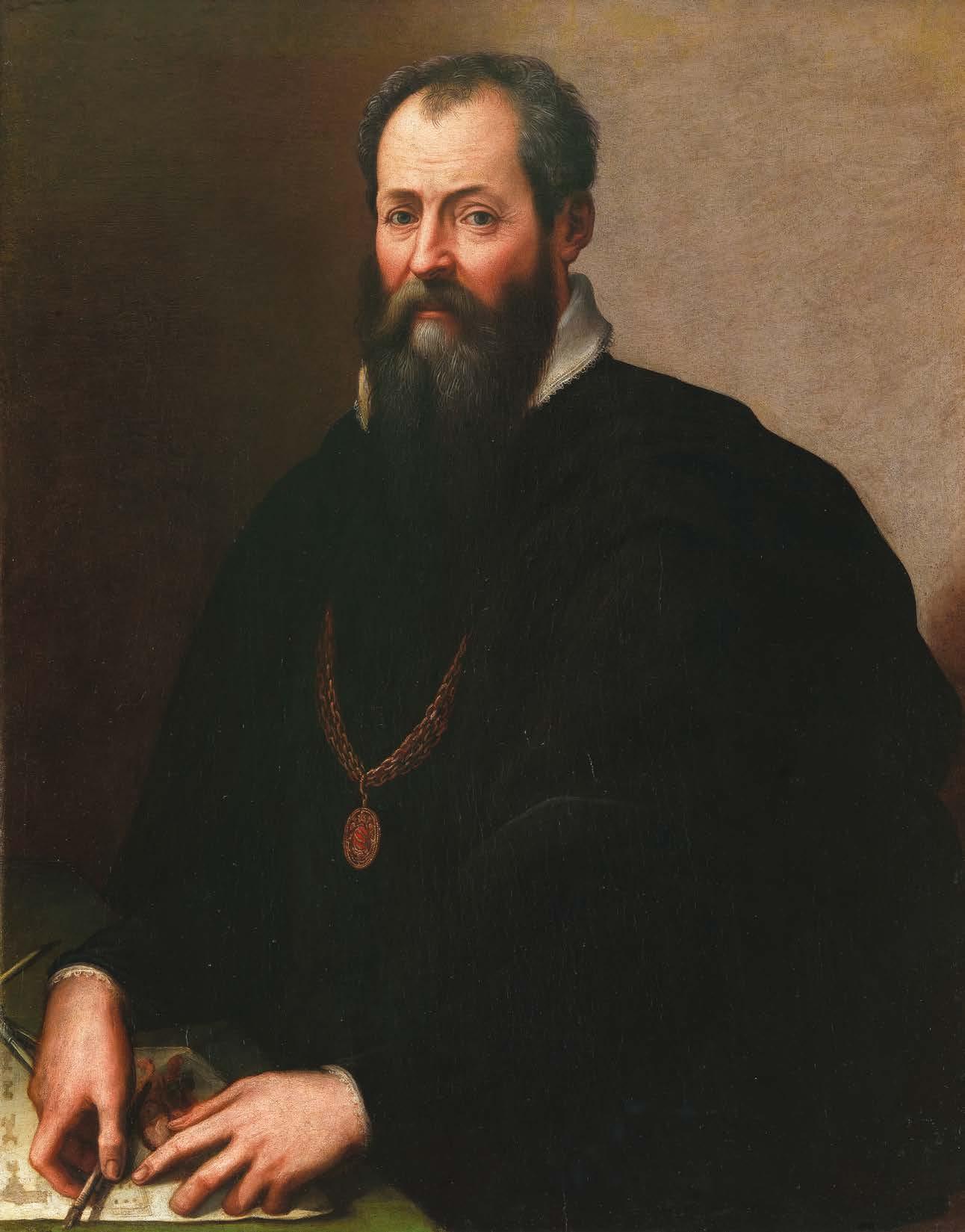
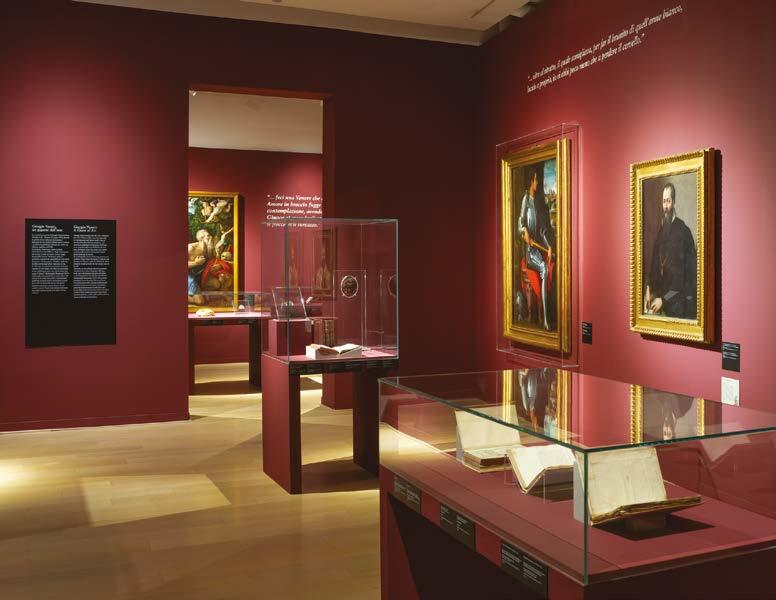
In alto un’immagine dell’allestimento della mostra dedicata all’artista ad Arezzo, sua città natale. In basso il frontespizio della prima e seconda parte delle Vite, una serie di biografie di artisti scritte da Giorgio Vasari
Above, an image of the staging of the exhibition dedicated to the artist in Arezzo, his hometown. Below, the frontispiece of the first and second part of the Lives of the Most Excellent Painters, Sculptors, and Architects, a series of biographies of artists written by Giorgio Vasari
Questo autentico monumento della letteratura artistica non solo rappresenta una vivace e informata narrazione, ma propone una visione critica, che privilegia gli artisti toscani aventi al vertice il “divino” Michelangelo Buonarroti. L’enorme lavoro di Vasari fu ispirato dalla sua frequentazione di letterati e intenditori d’arte nella Firenze governata dai Medici e nella Roma dominata dai Farnese, papa Paolo III e suo nipote il cardinale Alessandro. È proprio sulla cultura umanistica di Vasari che la mostra insiste: non un impaccio che appesantisce la sua bella pittura, come a lungo si è sostenuto, ma una ricca sostanza letteraria che conferisce alla pittura stessa un valore aggiunto di significato, grazie al sistematico impiego di allegorie. Vasari non fu l’unico del suo tempo a mettere in scena proprio come in un “teatro” — sul muro, su tela e tavola, negli spettacoli pubblici — le Virtù, i Vizi, i luoghi geografici e altre personificazioni di concetti astratti: ma certo fu uno degli artisti che si servì in massimo grado di codici altamente simbolici, così complessi da mettere in difficoltà l’osservatore di media cultura, rendendo necessarie spiegazioni a voce o a stampa.
Per Vasari, nato in una città minore e ragazzo orfano, la
cultura fu l’ascensore sociale che lo innalzò nell’Italia delle corti fino a raggiungere i massimi committenti: pontefici, alti prelati, nobili, duchi. La mostra, attraverso le immagini e gli oggetti esposti, ripercorre questa straordinaria vicenda umana e professionale alludendo ai diversi momenti della sua vita e della sua carriera, entrambe narrate ampiamente nella sua autobiografia del 1568 e testimoniate dalle lettere, dalle Ricordanze, dagli appunti del cosiddetto Zibaldone. Viene dalla sua intensa esperienza presso i Medici, negli anni ‘30 del Cinquecento, il Ritratto del duca Alessandro, fitto di notazioni simboliche che alludono alla fine della guerra (l’assedio delle truppe imperiali che aveva oppresso Firenze nel 1529-30, dopo il Sacco di Roma), alla pace ristabilita sotto i Medici, all’eternità del loro dominio, alla serenità dei popoli soggetti. La grande pala dell’Immacolata Concezione di Maria per Bindo Altoviti nella chiesa dei SS. Apostoli propone un soggetto complesso, molto difficile sul piano teologico, nella forma di un nodo di figure sulle quali domina la soave Madonna vincitrice del Demonio. Il quadro Le tentazioni di San Girolamo mostra a contrasto il santo penitente nel deserto e
una bella Venere diabolica, messa in fuga dalla preghiera con il suo corteo di amorini giocosi. Non mancano quadri di altri pittori contemporanei come Bronzino, Allori, Stradano e altri, che declinano temi fitti di simbologie raffinate con la sensuale eleganza tipica di questo periodo nella Firenze dei Medici.
Costellano il percorso magnifici disegni di Vasari, dai piccoli schizzi con le prime idee fino ai disegni accurati e finiti che precedono la pittura, prestati da grandi musei tra i quali gli Uffizi, il Louvre, il Metropolitan Museum di New York.
Come campione supremo dell’uso simbolico delle immagini è convocata in mostra la Chimera, il bronzo etrusco raffigurante il mostro mitologico. Appena scoperta ad Arezzo, nel 1553, grazie a Vasari che la inviò al duca a Firenze divenne il simbolo dell’arte etrusca, autoctona di Toscana e precedente la civiltà di Roma, nonché della sconfitta delle forze caotiche e malvagie per mano dell’eroe positivo: nel mito antico Bellerofonte, nella Toscana moderna il duca Cosimo, definito da Vasari “domatore di tutte le chimere”. ☜
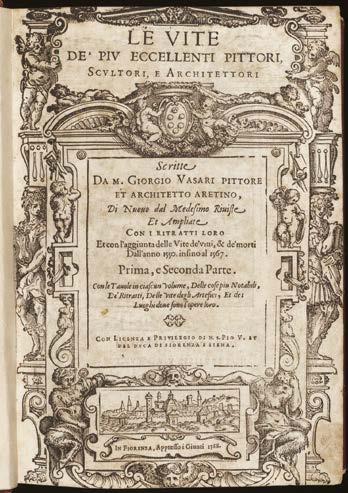
— The history and artistic journey of Giorgio Vasari, a well-known artist all over the world to whom Pistoia owes its characteristic skyline, dominated by the unmistakable cupola of the Basilica of Our Lady of Humility.
If the city of Pistoia announces itself with a skyline that is dominated by a peculiar red cupola, punctuated by white marble ribs and crowned with a lantern, we owe it to the Duke Cosimo I de’ Medici and his trusted artist Giorgio Vasari.
In fact, they were the customer and the author of the achievement that led to the coveted completion of the Basilica of Our Lady of Humility, which was built for a miraculous image of the Virgin Mary starting from 1492, with the project by Giuliano da Sangallo and Francione, continued by Ventura Vitoni until 1522, which remained uncompleted. Vasari resolved the age-old problem of covering the core of the Basilica, an octagonal prism with weak walls, with the cupola inspired by Brunelleschi that confers to the city a prestigious resemblance to Florence. The works were directed between 1562 and 1569, while the artist was fully committed to the Medici’s court in his multiple roles as architect, painter, director, scenographer, writer and, to say it in contemporary terms, culture ideologist.
A few artists were more active and versatile than Giorgio Vasari, born in Arezzo in 1511. On the 450th anniversary of his death in Florence, in 1574, Tuscany – with its epicentrum in Arezzo and the nearby territory –celebrates him through a few initiatives which, on one side, enhance works in their usual places and, on the other side, propose temporary exhibitions with relevant loans. If a few immovable works remain at their premises such as the paintings in Camaldoli, the huge and beautiful Banquet for the Marriage of Esther and Ahasuerus, the paintings at the Badia delle Sante Flora e Lucilla and much more have been moved to create an exhibition whose title is “The Theatre of Virtues”, at the Gallery
of Modern and Contemporary Art and Sant’Ignazio Hall in Arezzo, and includes precious original testimonies: sacred and secular paintings, portraits, drawings, art objects, letters, documents… and books, many books that Giorgio Vasari may have read and many books that he wrote. Among these is his most famous work: The lives of the most excellent painters, sculptors
and architects, initially published in Florence in 1550 by Lorenzo Torrentino and then expanded and enriched by Giunti in 1568, and then translated into several languages. For the first time, the history of art and artists was systematically written into a comprehensive project, thanks to the news that Vasari collected during his youthful journeys and continued to
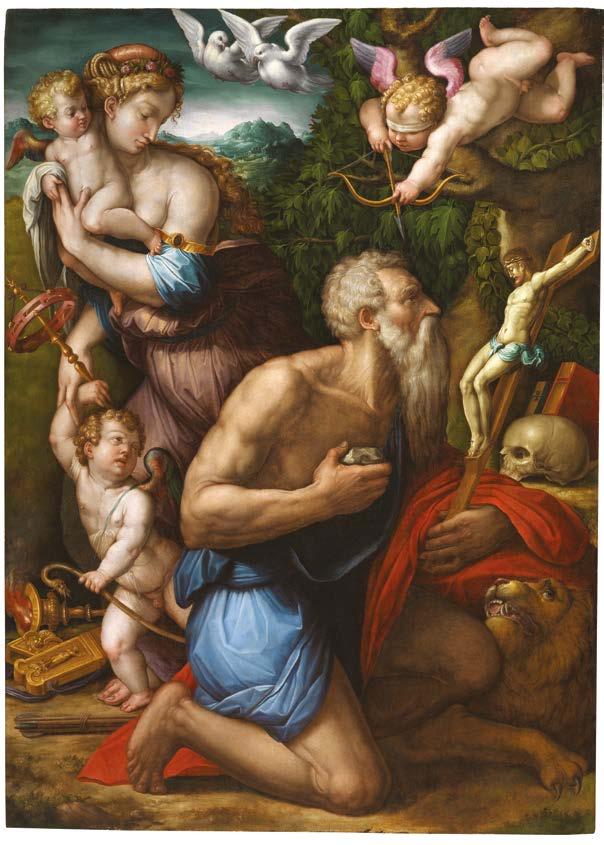

Sopra, Giorgio Vasari
- Allegoria della Concezione, 1541Chiesa dei SS.Apostoli e Biagio, Firenze, Arcidiocesi di Firenze
Above, Giorgio Vasari
- Allegoria della Concezione, 1541Church of SS.Apostoli e Biagio, Firenze, Arcidiocesi di Firenze
update. This true monument of artistic literature does not only represent a lively and informed narration, but also proposes a critical vision that privileges Tuscan artists, with the “divine” Michelangelo Buonarroti at the top. The huge work by Vasari was inspired by his frequentation of scholars and art connoisseurs in the Florence governed by the Medici and the Rome ruled by the Farnese: Pope Paul III and his grandson, the cardinal Alessandro. The exhibition actually insists on Vasari’s humanistic culture: it’s not an obstacle that burdens his beautiful painting, as was long believed, but a rather a huge literary substance that confers to painting itself an added value of meaning, thanks to the systematic use of allegories. Vasari wasn’t the only


R e e V o M S P è l a p r i m a e u n i c a f a b b r i c a p e r g l i M S P
I l p a r t n e r n e c e s s a r i o p e r i M a n a g e d S e r v i c e P r o v i d e r : k n o w h o w , t o p t e c h n o l o g y e
l ' a f f i d a b i l i t à m a d e i n R e e V o p e r o f f r i r e p a c c h e t t i d i s e r v i z i g e s t i t i a s s o l u t a m e n t e
p e r s o n a l i z z a b i l i e b r a n d i z z a b i l i .
G r a z i e a l l ' e s p e r i e n z a v e n t e n n a l e n e l c a m p o d e l l a g e s t i o n e p r o a t t i v a
d e l l ' i n f r a s t r u t t u r a I C T , h a m a t u r a t o u n a c o n o s c e n z a a p p r o f o n d i t a d e l l e e s i g e n z e r e a l i
d e g l i M S P e d è i n g r a d o d i o f f r i r e s t a n d a r d s e n z a e g u a l i s i a s o t t o i l p r o f i l o d e l l a
t e c n o l o g i a , s i a p e r i l s u p p o r t o g l o b a l e a l l o s v i l u p p o d e l b u s i n e s s
R i s p o n d e r e a l l ' e v o l u z i o n e è l o s p e c i f i c o d i R e e V o M S P , p e r q u e s t o i M a n a g e d S e r v i c e
P r o v i d e r p o s s o n o f a r e a f f i d a m e n t o s u u n l i v e l l o t e c n o l o g i c o i n a g g i o r n a m e n t o
c o s t a n t e .
G r a z i e a l l a f o r z a d i u n b r a n d c o m e R e e V o , t u t t o q u e s t o , c o m p r e s i i s e r v i z i d i C l o u d ,
H y b r i d C l o u d e C y b e r s e c u r i t y , è a l l a p o r t a t a a n c h e d e i p i c c o l i M S P c o n l i m i t a t e c a p a c i t à
d i i n v e s t i m e n t o .
R M M :
D e s k t o p , S e r v e r , M o b i l e ,
M i s s i o n C o n t r o l
M u l t i C l o u d

M i s s i o n C o n t r o l

I N D I R I Z Z O S E D E P R I N C I P A L E e O P E R A T I V A :
V i a M a r c o P o l o , 7 2 - 5 6 0 3 1 B i e n t i n a ( P I )
R E C A P I T I E S I T O W E B :
M a i l : i n f o @ r e e v o m s p i t
T e l : + 3 9 0 5 8 7 7 5 5 1 1
S i t o w e b : h t t p : / / w w w . r e e v o m s p . i t
C y b e r s e c u r i t y
M i s s i o n C o n t r o l
D e s k t o p A s a S e r v i c e
M i s s i o n C o n t r o l
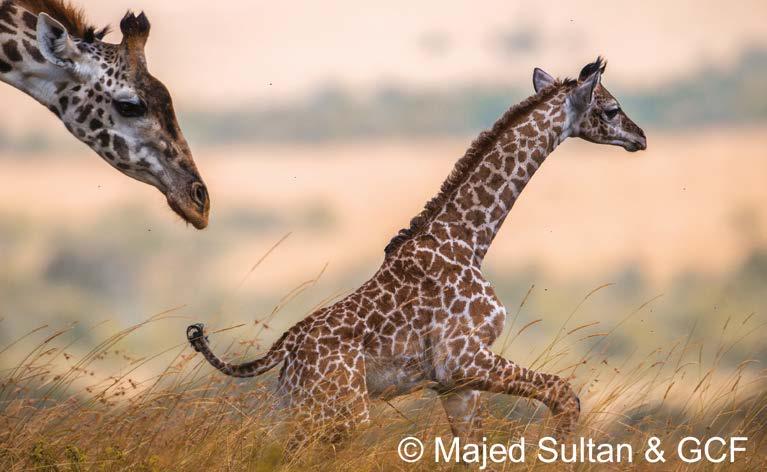
Alla parola “estinzione” molte persone associano animali come rinoceronti, elefanti, panda e tigri ma pochi sanno che in Africa le maestose giraffe stanno diminuendo ad un ritmo preoccupante.
Al GZP vivono Cleopatra e Omar: hanno una storia da raccontare i cui ingredienti sono amore, coraggio e perseveranza.
A sinistra un piccolo di Giraffa Masai che corre con la sua mamma © Majed Sultan & GCF. A destra Cleopatra, la giraffa del GZP, importante ambasciatrice per la specie.
At left, a Masai Giraffe baby running with its mother. © Majed Sultan & GCF. At right is Cleopatra, the GZP giraffe, an important ambassador for the species.
Eppure gli occhi languidi, l’andatura elegante, la grandezza lasciano immaginare animali che possano vivere senza che la pressione umana ne minacci la sopravvivenza e che la loro storia narri, per una volta, di un equilibrio tra uomo e Natura.
In realtà la distruzione dell’habitat, la caccia per trofeo e il bracconaggio sono tra le principali cause del declino di questo bellissimo mammifero.
Eleonora Angelini Responsabile della didattica e comunicazione Giardino Zoologico di Pistoia
Se guardiamo il mondo nella sua globalità l’immagine che ne emerge in questo periodo storico non è esaltante per il genere umano. Guerre e distruzione, violenza e sopraffazione sono i colori forti che predominano, eppure nello stesso mondo ci sono storie di un’incredibile bellezza, uomini e donne che dedicano la loro vita alla ricostruzione e alla convivenza, non solo con i rappresentanti della stessa specie, Homo sapiens, ma con tutte le altre specie animali e vegetali. Alla fine degli anni ‘90 Stephanie e Julian Fennessy si sono incontrati in Namibia; Julian, arrivato dall’Australia, aveva un incarico come volontario in un progetto di educazione ambientale, Stephanie era approdata in Namibia per condurre ricerche per la tesi del suo master di ingegneria ambientale.
La loro non è solo una storia d’amore ma una storia di impegno, coraggio e perseveranza a favore della Natura.
In quegli anni i principali enti e le associazioni ambientaliste lottavano in Africa per la difesa di elefanti e rinoceronti e poca attenzione era stata data alle giraffe. Julian e Stephanie si resero ben presto conto che erano
state raccolte poche informazioni sulla distribuzione e sulla consistenza delle giraffe e sin dai primi anni 2000 hanno iniziato a lavorare insieme per raccogliere quanti più dati possibili. Insieme, nel 2015, hanno fondato la Giraffe Conservation Foundation (GCF) che oggi è l’unica associazione al mondo che lavora in modo sistematico per la conservazione di questa bellissima specie.
Per proteggere una specie dall’estinzione la prima cosa da fare è conoscerla: quanti individui esistono? Dove? Come possiamo classificarle? Quali sono le minacce e quali gli strumenti per contrastarle?
Il lavoro degli ultimi 20 anni di Julian e Stephanie e del loro staff ha portato importanti contributi alla conoscenza delle giraffe: le analisi del DNA hanno permesso una nuova classificazione che individua 4 specie di giraffe e non solo una come si credeva e questo può dare indicazioni maggiori per i programmi di conservazione.
Negli anni ’80 il numero totale di giraffe in Africa era stimato in oltre 155.000 individui, oggi ne contiamo circa 117.000 e stanno diminuendo sempre di più.
È diventato essenziale agire prima che sia troppo tardi, prima che le giraffe si estinguano nel silenzio assordante che le ha avvolte fino a pochi anni fa.
Julian e Stephanie sono costantemente alla ricerca di fondi per portare avanti i loro progetti di monitoraggio, di educazione nelle scuole e di ricerca nei 19 Paesi africani dove vivono le giraffe, un territorio di oltre 400.000 km quadrati. Per questo il GZP ha deciso di sostenere economicamente il GCF e di partecipare attivamente ai loro programmi.
Al Parco vivono Omar e Cleopatra che appartengono alla specie più minacciata, la giraffa del nord che con i suoi 5900 esemplari è da considerare a grave rischio d’estinzione.
Questa storia ha bisogno di ambasciatori e recentemente il Parco ha trovato un grande alleato in Radio Nostalgia che ha messo a disposizione uno spazio del proprio canale Spotify per dare vita ad un podcast: 10 puntate, 10 storie in cui la differenza la fanno i tanti visitatori del GZP che ogni volta che vengono a trovarci sostengono economicamente il Parco e le associazioni che lavorano per la conservazione della Natura, come la Giraffe Conservation Fondation. Un grazie di cuore a tutti!
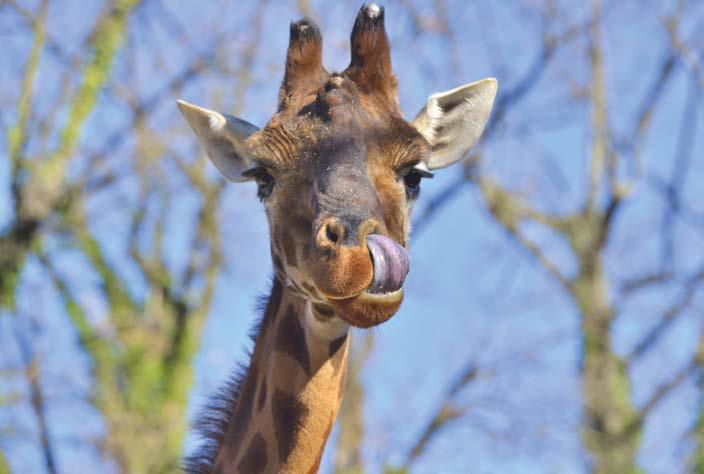
Several people associate animals such as rhinoceros, elephants, pandas and tigers to the word “extinction”, but few people know that, in Africa, the majestic giraffes are decreasing at a worrying pace.
Omar and Cleopatra live at the Pistoia Zoological Garden and they have a story to tell, whose ingredients are love, courage and perseverance.
If we look at the world in its globality, the image of this historical period is not exciting for mankind. Wars and destruction, violence and oppression are the strong colours that predominate, however, in the same world, there are incredibly beautiful stories, men and women who dedicate their life to rebuilding and living together, not only with the representatives from their own species, Homo sapiens, but with all the other animal and vegetal species.
Stephanie and Julian Fennessy met in Namibia in the late 1990s: Julian, who had arrived from Australia, worked as a volunteer in an environmental education project, whereas Stephanie had arrived to Namibia to conduct research for the dissertation for her Master in Environmental Engineering. Their story isn’t just about love; it’s also a story of commitment, courage, and perseverance in favour of Nature.
In those years, the main environmental bodies and associations would fight in Africa to defend elephants and rhinoceros and wouldn’t pay much attention to giraffes. Julian and Stephanie realized soon that little information had been collected about the distribution

could live without their survival being threatened by human pressure and that their story could narrate, for once, a balance between human beings and Nature.
Actually, the destruction of the habitat, trophy hunting and poaching are among the main causes of the decline of this beautiful mammal.
It has become essential to act before it’s too late, before giraffes face extinction in the deafening silence that wrapped them until a few years ago. Julian and Stephanie are constantly looking for funds to conduct their monitoring, school education and research projects in the 19 African countries where giraffes live, a territory of over 40,000 square kilometres. Because of this, the Pistoia Zoological Garden decided to financially support the GCF and actively participate in their programs.
Omar and Cleopatra live at the Park: they belong to the most threatened species, the Northern giraffe which, with its 5,900 samples, to be considered critically endangered.
and consistency of giraffes and, since the early 2000s, they started work together to collect as much data as possible.
Together, in 2015, they founded the Giraffe Conservation Foundation (GCF), which is currently the only association in the world that works systematically for the preservation of this beautiful species. The first thing to do to protect this species from extinction is getting to know it: how many subjects exist and where? How can we classify them? What are the threats and what are the tools to counteract them?
The work done in the last 20 years by Julian, Stephanie and their staff brought important contributions to the knowledge of giraffes: the DNA analysis allowed a new classification, that identifies 4 species of giraffes rather than one as it was thought, and this can provide us with further indications for the preservation programs.
The estimated, overall number of giraffes in Africa in the 1980s was 155,000 individuals, whereas there are currently 117,000 giraffes and the number is decreasing more and more.
Nevertheless, their languid eyes, elegant gait and size suggest that these animals
This story needs ambassadors, and the Park has recently found an important ally in Radio Nostalgia, who provided a space of its Spotify channel to create a podcast: 10 episodes, 10 stories where the difference is made by the several visitors of the Pistoia Zoological Garden who, every time they come to visit us, financially support the Park and the associations which work to preserve Nature, such as the Giraffe Conservation Foundation.
A heartfelt thanks to everyone!

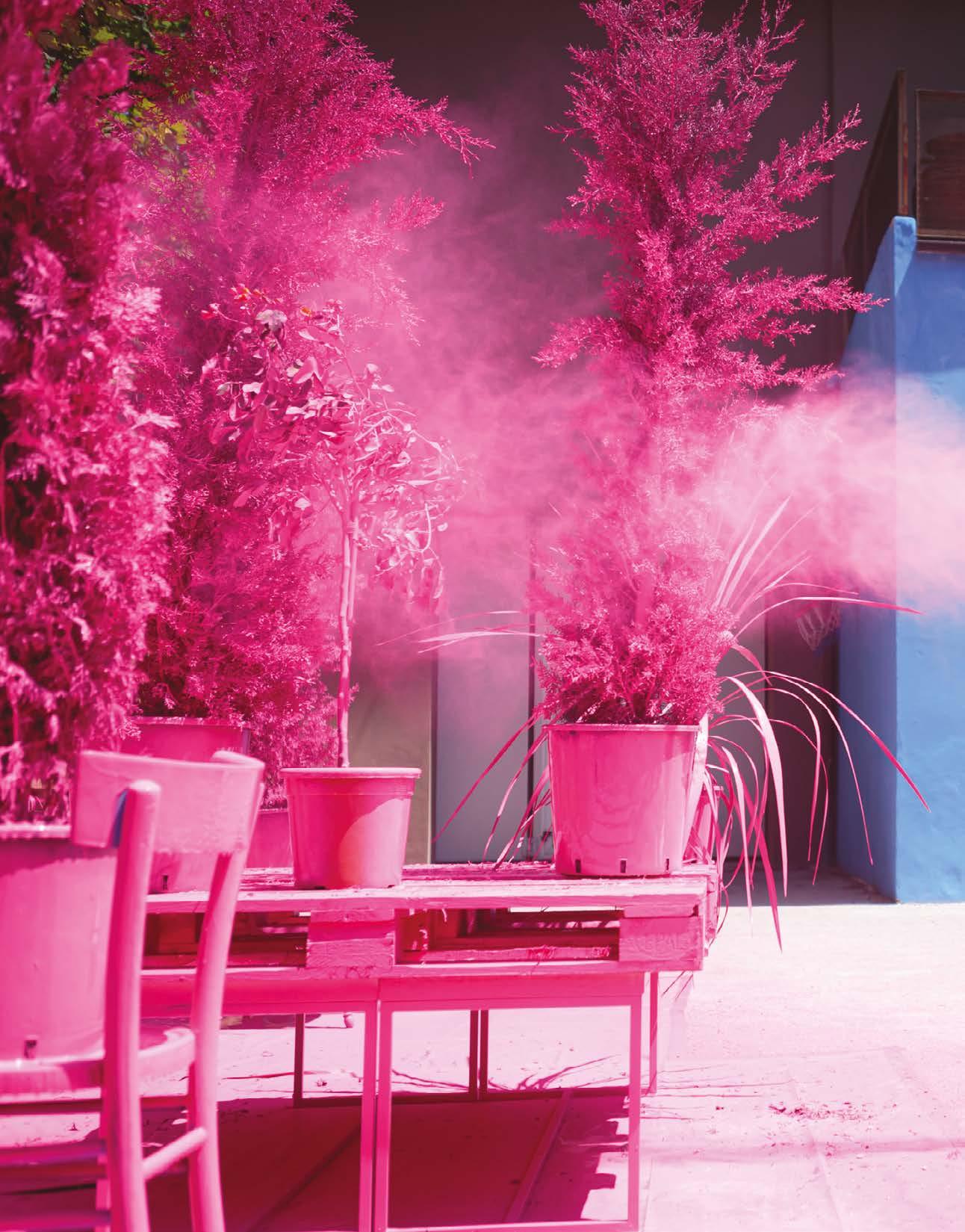
— Nasce una Fondazione che ha la finalità di valorizzare l’arte come bene comune, strumento di espressione personale e inclusione sociale
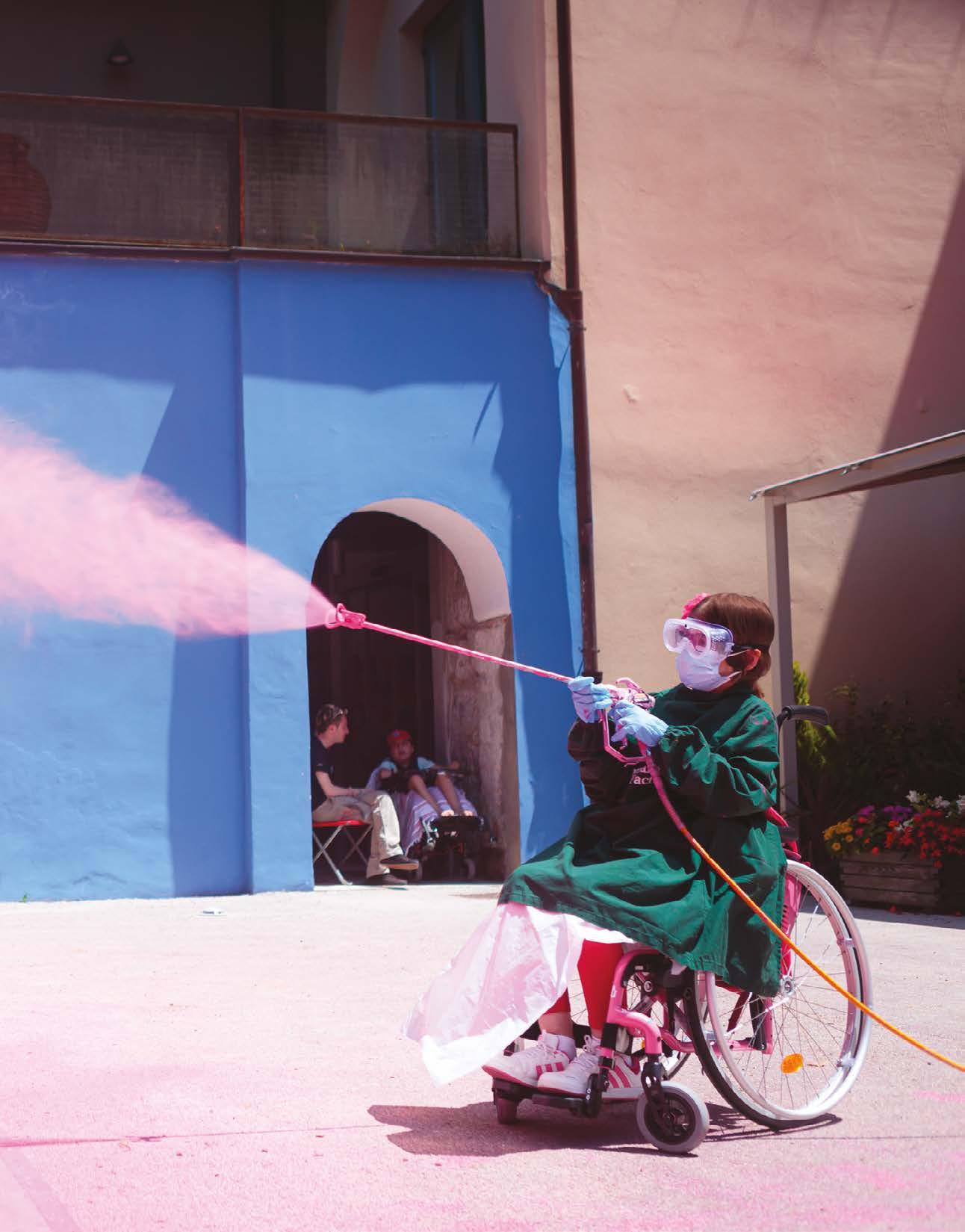
Fondazione Arte Dynamo affonda le sue radici a Dynamo Camp. Situata sull’appennino pistoiese, al limitare di un’oasi WWF di 1000 ettari, si tratta della prima struttura di Terapia Ricreativa in Italia, che dal 2007 accoglie gratuitamente bambini e ragazzi con gravi patologie offrendo tante attività inclusive, con l’obiettivo di divertimento ma soprattutto di fare ritrovare la fiducia in se stessi.
In questo contesto unico i laboratori di Art Factory si sono subito distinti per essere accessibili a tutti, secondo il modello della Terapia Ricreativa Dynamo, e per essere guidati da artisti affermati, che donano il proprio genio per realizzare un progetto concepito ad hoc, guidando i giovani ospiti nella liberazione della propria espressività. La combinazione fra la professionalità degli artisti, la fantasia dei ragazzi e il metodo inclusivo ha subito dato vita ad opere uniche.
“Nella convinzione che la vera arte è tale quando si assume anche una responsabilità sociale, quando sa essere inclusiva abbiamo puntato fin da subito all’eccellenza. I primi anni non era semplice fare venire artisti affermati sull’Appennino Pistoiese, poi sono arrivati i risultati e oggi possiamo dire che la situazione è completamente cambiata.“ - racconta Diva Moriani, ideatrice e direttrice di Art Factory e di Fondazione
Arte Dynamo – “. In questi anni sono stati oltre 160 gli artisti a rispondere all’appello, per oltre 2000 opere realizzate.” Continua Diva Moriani.
La produzione Art Factory è un corpus eterogeneo, che spazia dalla pittura alla scultura, dalla fotografia alla video art, dalle installazioni site specific, all’utilizzo di dispositivi di ultima generazione, col minimo comune denominatore dell’inclusività. Se Alfredo Pirri, lavorando con bambini ipovedenti, ha scelto di usare un pigmento alla liquirizia per rendere olfattiva e quindi fruibile l’opera, Emilio Isgrò ha avvicinato gli adolescenti

alle iconiche cancellature partendo dai libri della saga di Harry Potter, mentre Michelangelo Pistoletto, assieme ai genitori di bambini con patologie complesse, ha realizzato un’installazione dell’iconico Terzo Paradiso.
E ancora fra le novità 2024 i Fuse* hanno permesso ai ragazzi - di confrontarsi con l’AI con un’installazione audiovideo che è un viaggio dentro i loro sogni, mentre rispetto la sensibilizzazione sull’ambiente, lo studio Stefano Boeri Architetti ha guidato gli adolescenti nella realizzazione di una struttura architettonica, in cui i mattoni
Nella convinzione che la vera arte è tale quando si assume anche una responsabilità sociale, quando sa essere inclusiva abbiamo puntato fin da subito all’eccellenza.

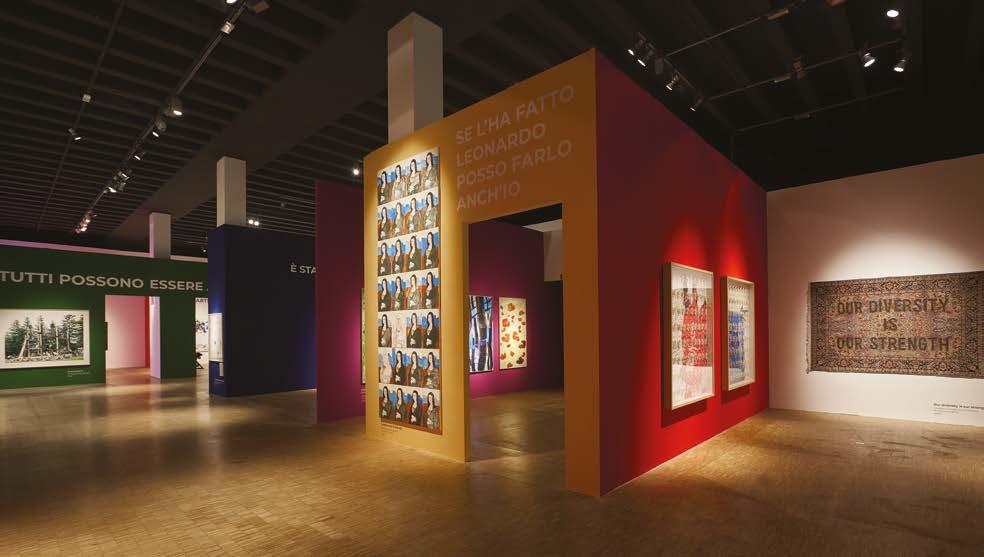
in canapa BIOMAT sono insieme elemento costruttivo e vasi di fiori, mentre Pascale Marthine Tayou gli ha coinvolti nella realizzazione di un’installazione di centinaia di cannucce di plastica colorate, che evocano un grande fiume inquinato.
Dati i benefici, dal 2018 i laboratori di Art Factory sono stati estesi ai genitori delle sessioni famiglia, come strumento per accompagnarli ad esprimere le proprie emozioni. Parallelamente, con l’obiettivo di offrire alle future generazione un’idea di museo come “casa dell’arte” divertente e stimolante, è nato “Art Factory nei musei”. Un progetto che vede lo Staff Dynamo raggiungere i ragazzi nelle loro città per offrire laboratori condotti da artisti all’interno dei principali musei d’Italia, quali Triennale Milano, il MAXXI di Roma, il Museo del Novecento di Firenze, il MAMBO a Bologna, il Madre a Napoli, la Fondazione Sandretto a Torino, fino a Pirelli Hangar Bicocca.
Il valore dell’arte nata a Dynamo è stato riconosciuto nella duplice accezione sociale e artistica, come dimostrato dalla mostra sui primi 15 anni del progetto tenutasi presso la Triennale Milano nel 2023.
“Ci siamo resi conto dell’enorme valore del patrimonio artistico generato da Dynamo in questi anni, così abbiamo deciso di valorizzarle in una Fondazione, volta a
Accanto e in alto nella pagina a sinistra due immagini della Mostra L’Arte è WOW - Triennale Milano (2023). In basso, Workshop con Daniele Sigalot (2016) e nella pagina a sinistra, Workshop con Luis López-Chávez (2023).
Next and above, in the page on the left, two pictures from the exhibition “Art is WOW” –Triennale Milano (2023). Below, workshop with Daniele Sigalot (2016) and, in the page on the left, workshop with Luis López-Chávez (2023).
raccontare l’arte contemporanea con uno sguardo sociale “ racconta Diva Moriani.
È con l’intento di promuovere la cultura come strumento di inclusione ad alto impatto sociale che nel 2025 Fondazione Arte Dynamo aprirà a Fornaci di Barga (LU). L’ex Centro Ricerche Luigi Orlando ospiterà la collezione permanente che - arricchendosi ogni anno di acquisizioniracconterà la storia di Dynamo Art Factory, attraverso un percorso accessibile, capace di accogliere un pubblico eterogeneo per età, background socio-culturale e condizione psico-fisica, con
particolare attenzione a soggetti affetti da disabilità. Con il supporto al progetto di KME Group, Fondazione Hillary Merkus Recordati e Galleria Continua, la Fondazione si pone come un punto di riferimento per il territorio che la ospita, ma anche come una realtà culturale unica in Italia, per il connubio fra il know-how sull’inclusione di Dynamo con una concezione museale ispirata a istituzioni internazionali, per l’ utilizzo di un exhibition design inclusivo, e un calendario di laboratori didattici ed appuntamenti con artisti e figure del panorama culturale. ☜
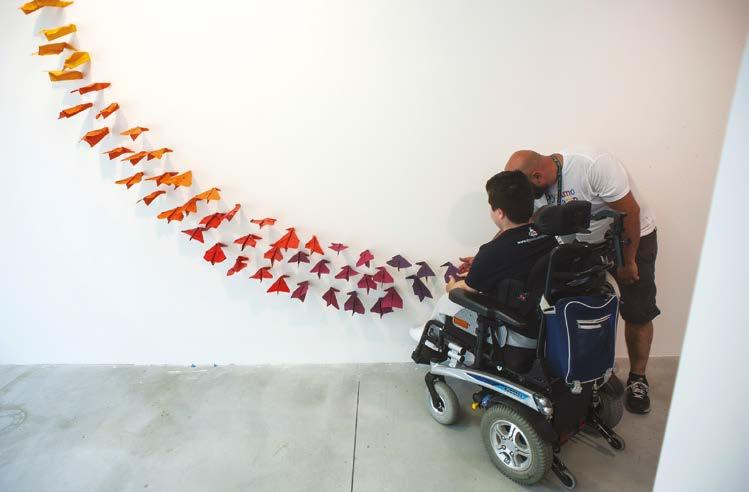
In this double page The Screaming Town –Loredana Longo (2021). All Art Factory laboratories distinguished themselves immediately for being accessible to everyone –according to Dynamo recreational therapy model –and for being led by prominent artists.
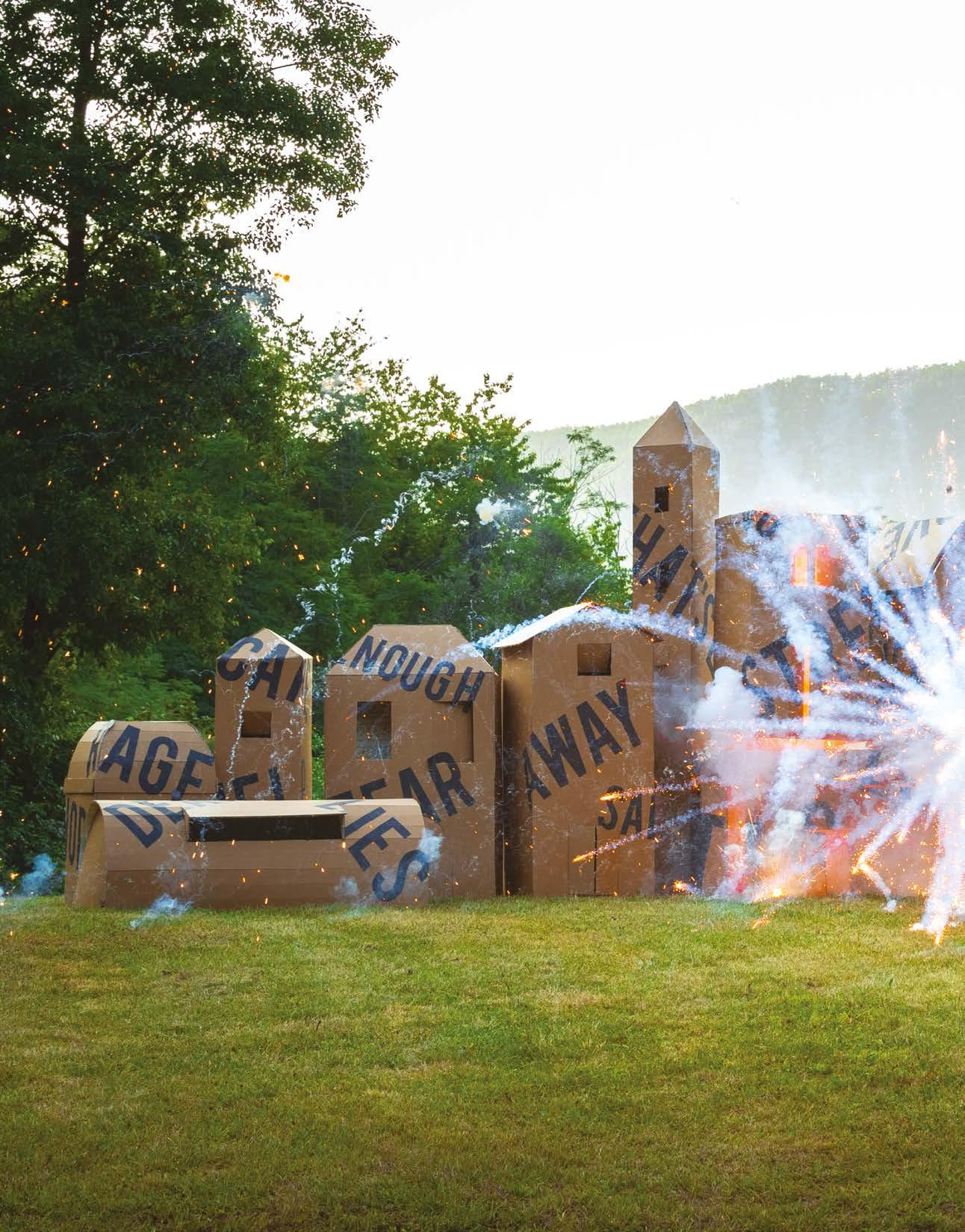
In questa doppia pagina The Screaming TownLoredana Longo (2021). Tutti i laboratori di Art Factory si sono subito distinti per essere accessibili a tuttisecondo il modello della terapia ricreativa Dynamoe per essere guidati da artisti affermati.
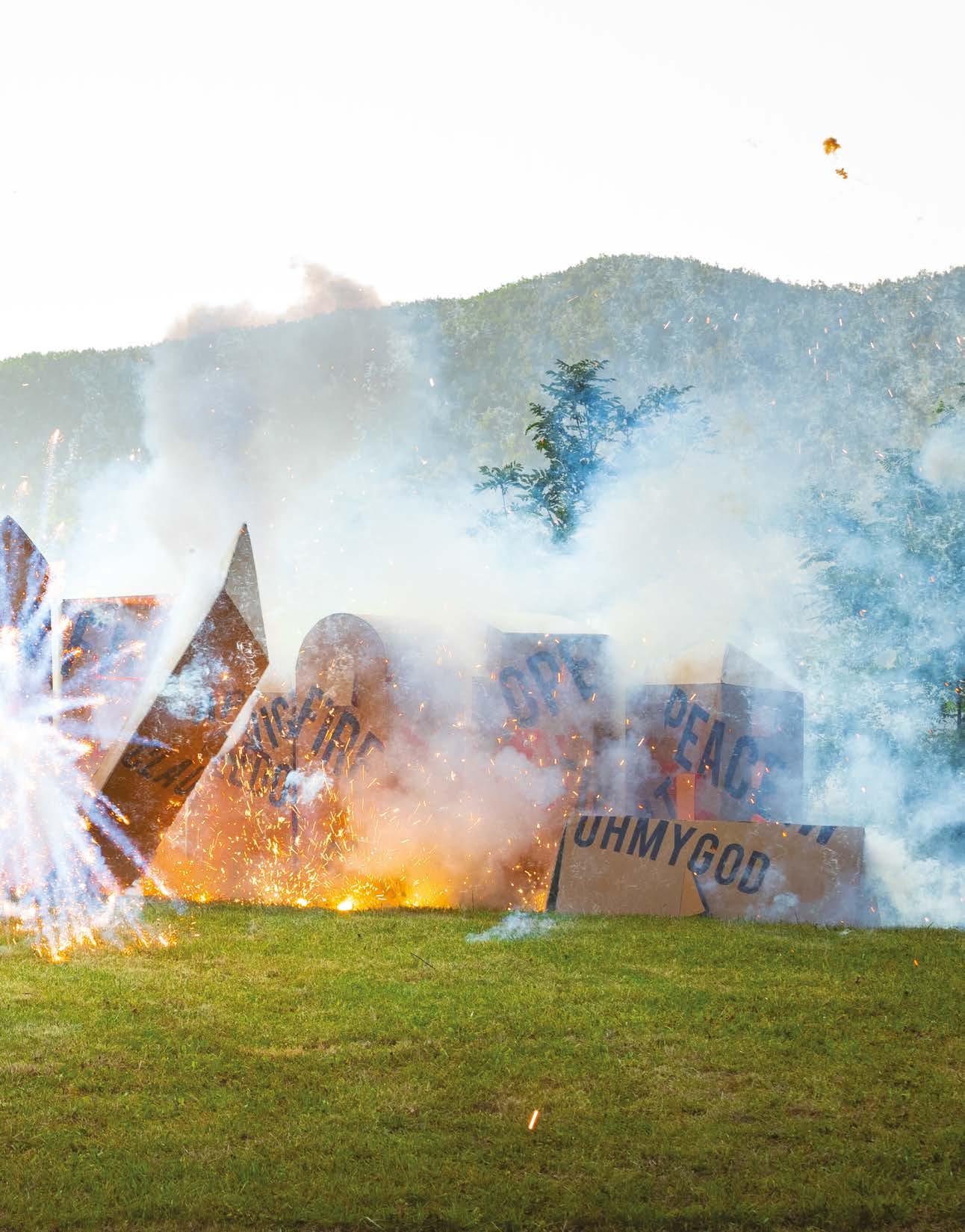
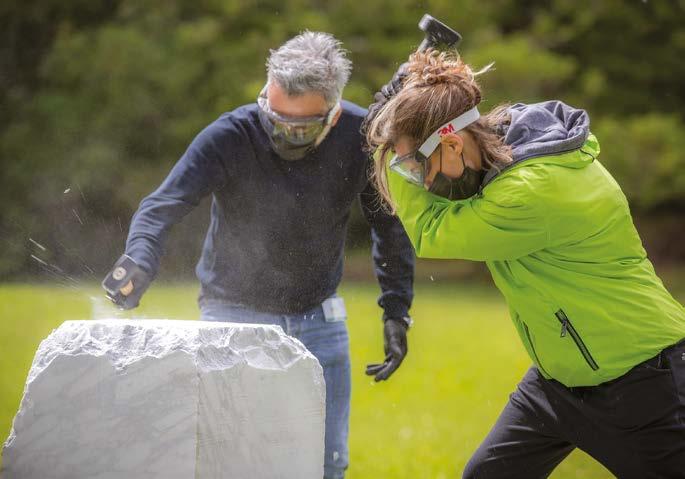
— A Foundation was born that aims at enhancing art as a shared asset, a tool for personal expression and social inclusion.
In questa pagina, a sinistra un’immagine del Workshop Terzo Paradiso - Michelangelo Pistoletto -Sessione Famiglie (2017) e a destra del Workshop con Sabrina Melis - Sessione Famiglie (2023). Nella pagina accanto, sopra l’installazione site specific a Dynamo Camp “Sei la luce dei miei occhi” - Chiara Dynys (2014).
In this page, on the left, a picture of the workshop Third Paradise – Michelangelo Pistoletto – Family session (2017) and, on the right, a picture of the workshop with Sabrina Melis –Family session (2023). In the next page, above, the site-specific installation
“Sei la luce dei miei occhi” (“You’re the apple of my eye”) – Chiara Dynys (2014), at Dynamo Camp.
Dynamo Art Foundation has its roots in Dynamo Camp. Located in the Pistoiese Apennine, within a 1000-hectare WWF oasis, it’s the first recreational therapy facility in Italy which, since 2007, has been welcoming free of charge children and kids with severe conditions and offering several inclusive activities, so that they can have fun and, especially, regain confidence in themselves.
In this unique context, Art Factory’s laboratories have immediately distinguished themselves for being accessible to everyone, according to the model of Dynamo recreational therapy, and for being led by wellknown artists, who offer their genius to complete an ad-hoc project by guiding their young guests towards freeing their own expressivity. The combination between the artists’ professionalism, the phantasy of kids and the inclusive method has immediately given birth to unique works.
“We believe that art is true when it also takes on a social responsibility, when it can be inclusive, and therefore
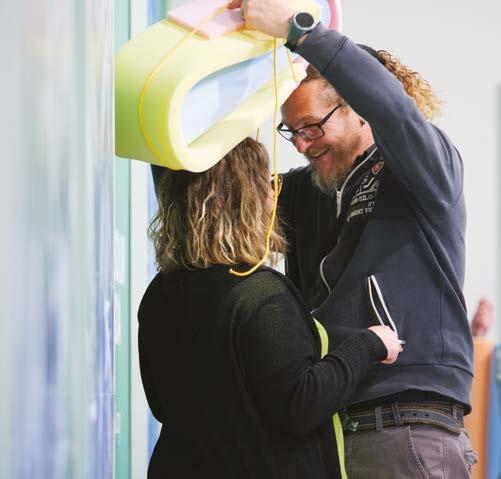
we immediately bet on excellence. In the first few years, it wasn’t’ easy to have well-known artists come to the Pistoiese Apennine, but then the results have arrived and today we can say that the situation has changed completely.”
– narrates Diva Moriani, creator and director of Art Factory and the Dynamo Art Foundation – “. Over 160 artists have answered the call in these last few years, for a total of 2000 completed works.” Diva Moriani continues The Art Factory production is a heterogeneous corpus, which ranges from painting to sculpture, photography and video art, from site-specific installations, to the use of latest-generation devices, with the lowest common denominator of inclusivity. If Alfredo Pirri, working with visually impaired children, chose to use a licorice pigment to make the work olfactive and, therefore, usable, Emilio Isgrò brought adolescents close to the iconic erasures starting from Harry Potter’s saga, whereas Michelangelo Pistoletto, along with the parents of children with complex disease, completed an installation of the iconic Third Paradise.
And among the 2024 news, Fuse* allowed children to be confronted with IA, thanks to an audio-video installation that is a journey within their dreams, whereas, as regards environmental awareness, the studio
Stefano Boeri Architetti led the adolescents to build an architectural facility, where the BIOMAT hemp bricks are both a construction element and a flower pot, whereas Pascale Marthine Tayou has involved children in creating an installation of hundreds of coloured plastic straws, which evoke a large polluted river.
Considering the benefits, since 2018 Art Factory laboratories have been extended to the parents of family sessions, as a tool to accompany them and help them to express their own feelings.
“Art Factory in museums” was born in parallel, with the purpose of offering to future generations an idea of museums as a funny and exciting “art house”.
In the context of this project, Dynamo Camp’s staff members visit children in their cities, to offer laboratories conducted by artists within the main museums of Italy, such as the Triennale in Milan, the MAXXI in Rome, the Museo del Novecento in Florence, the MAMBO in Bologna, the Madre in Napoli, the Sandretto Foundation in Turin and Pirelli Hangar Bicocca.
The value of the art born at Dynamo Camp was recognized in its dual social and artistic meaning, as shown by the exhibition on the first 15 years of the project that was held at the Triennale in Milan, in 2023.
“We realized how huge is the value of the artistic inheritance generated by Dynamo in these years, so we decided to enhance it in a Foundation, aimed at narrating contemporary art with a social look” narrates Diva Moriani.
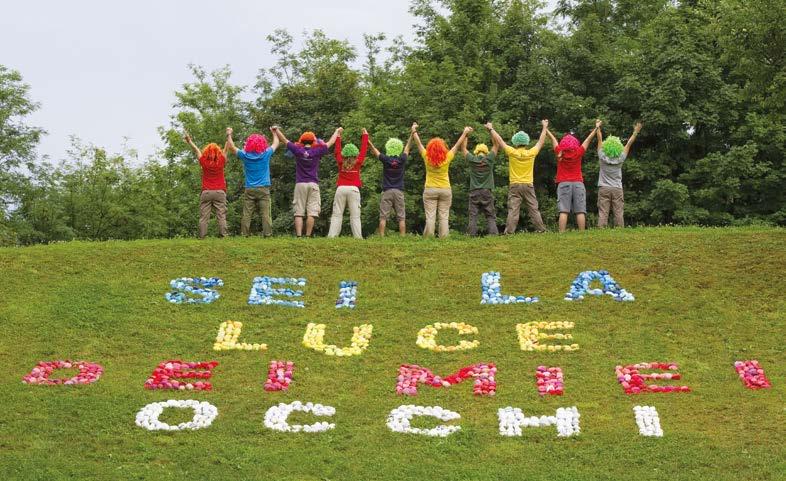
With the purpose of promoting culture as a high-impact tool for social inclusion, Dynamo Art Foundation will open in Fornaci di Barga (LU) in 2025. The former “Luigi Orlando” Research Centre will host the permanent collection that will be enriched every year by new acquisitions and will narrate the history of Dynamo Art Factory through an accessible journey, which is capable of welcoming a heterogenous audience in terms of age, social-cultural background and psychological-physical condition, with a specific attention to people with disabilities.
With the support of KME Group, Hillary Merkus Recordati Foundation and Galleria Continua to the project, the Foundation poses itself as a point of reference for the territory that hosts it, but also as a unique cultural reality in Italy, due to the combination between Dynamo’s know-how on inclusion and a conception of museums which draws inspiration from international institutions for the use of an inclusive exhibition design and a schedule of educational laboratories and events with artists and figures from the cultural landscape. ☜
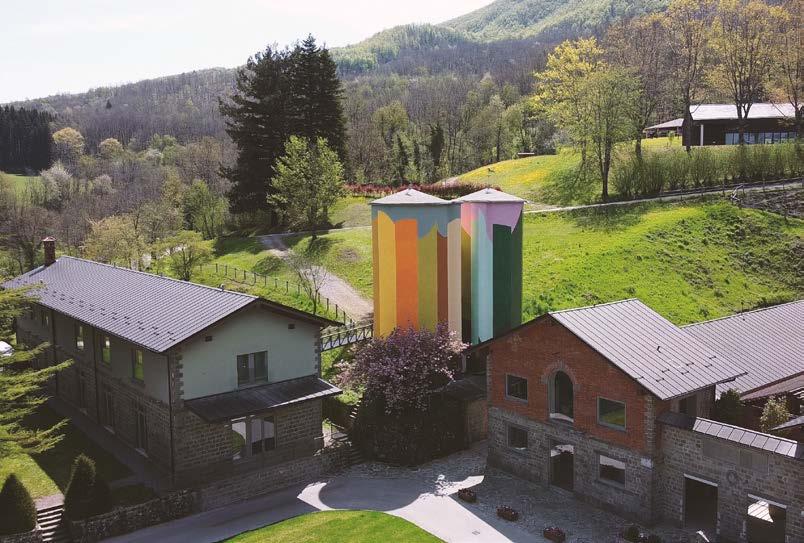

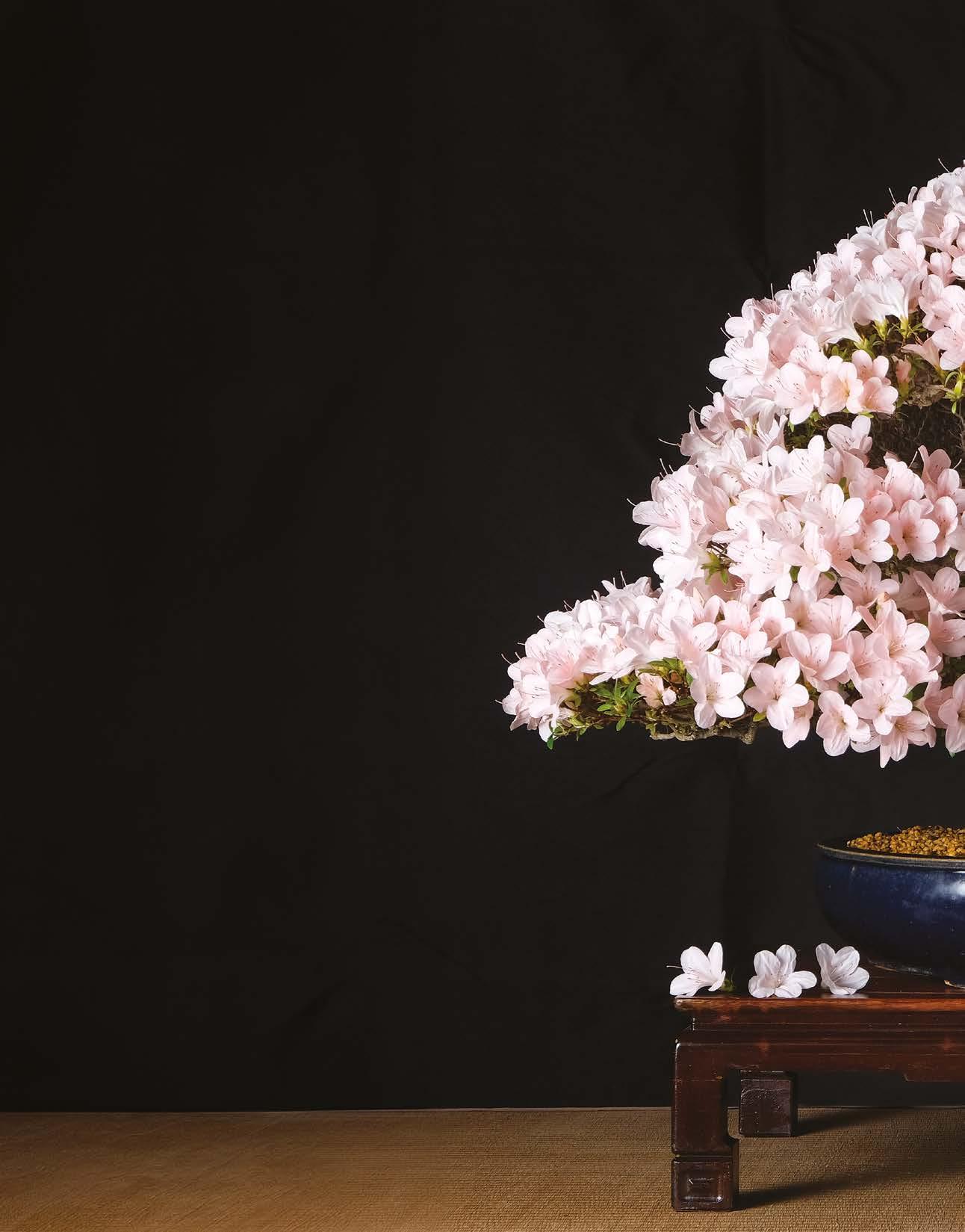
Franchi Bonsai
— Coltivare bonsai significa
“Produrre Arte” e Franchi
Bonsai lo fa con passione e competenza da oltre 40 anni.
Finalmente on-line il nuovo
sito dell’azienda , dove grazie alla sezione Shop si possono comodamente acquistare da casa oltre 800 prodotti tra accessori e bonsai di tutti i tipi.
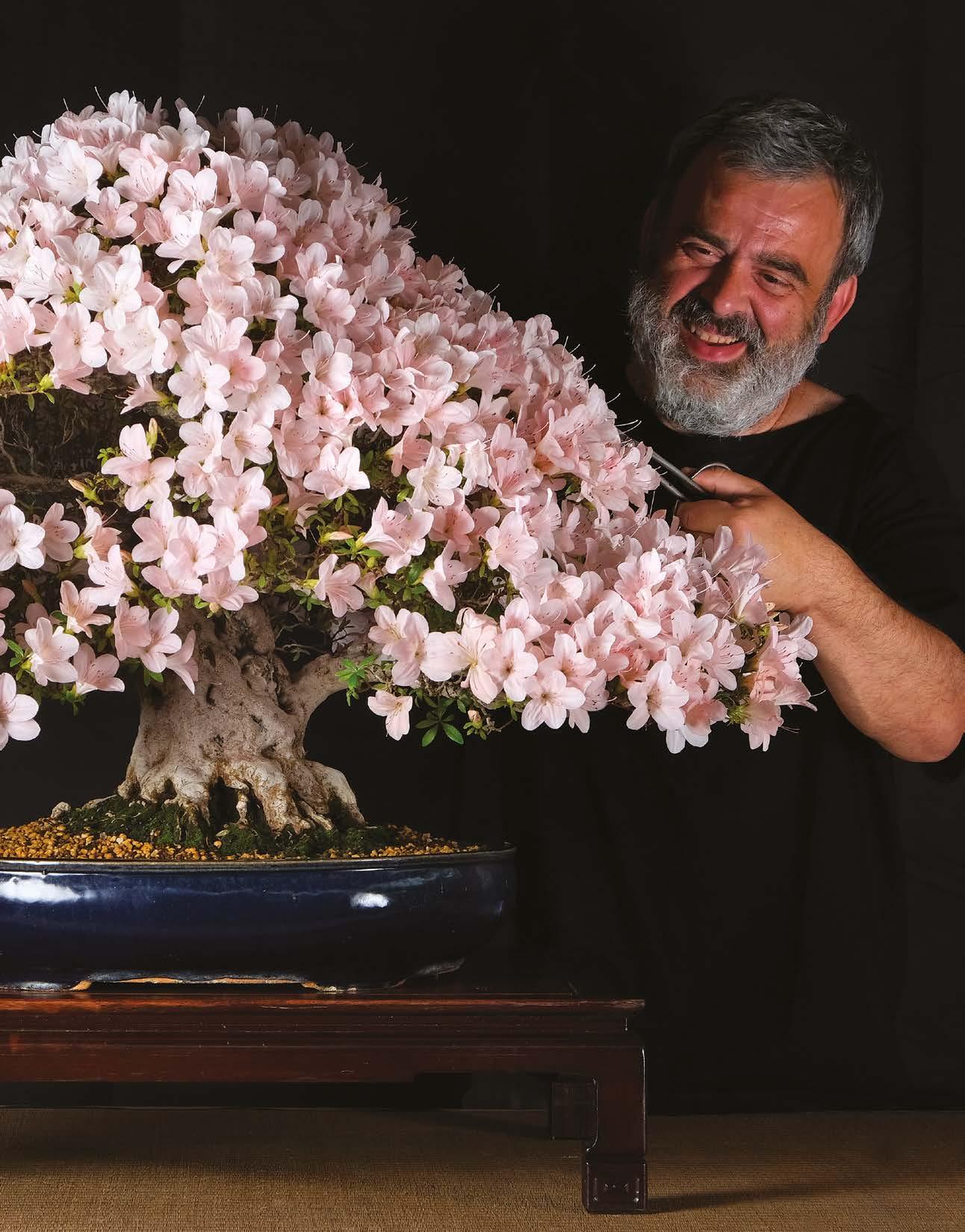
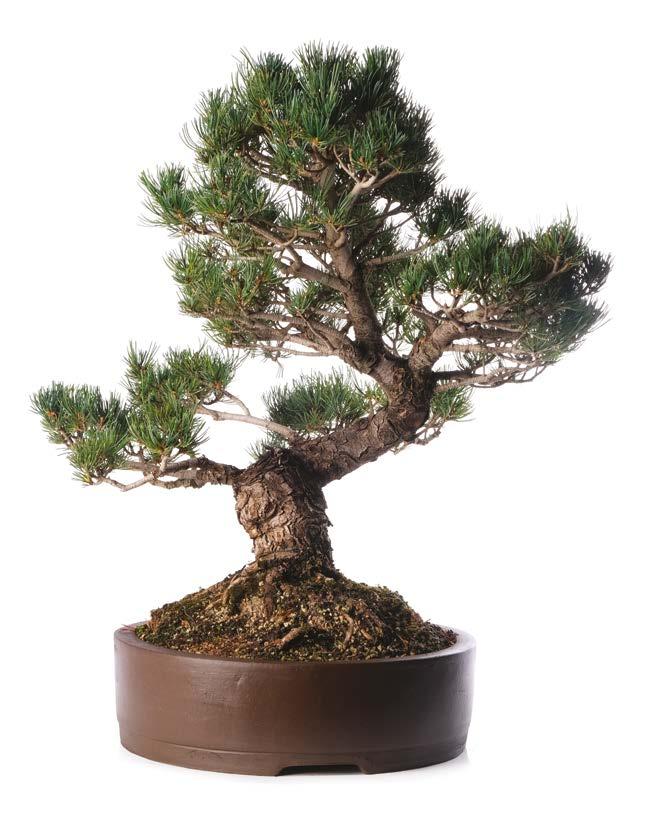
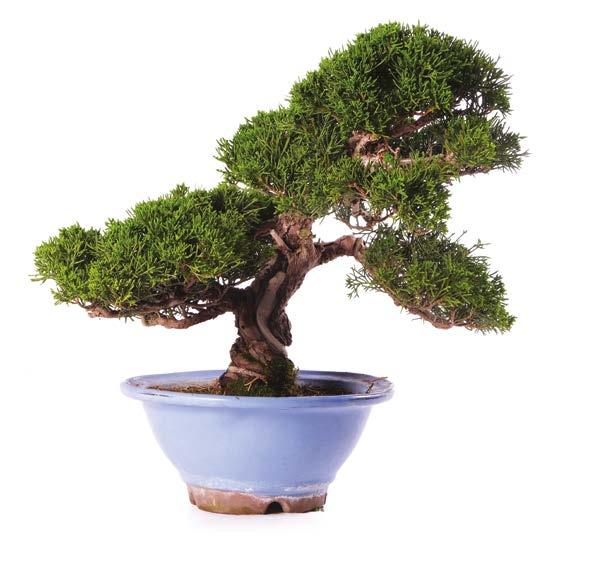
Nata nel 1937, l’azienda della famiglia Franchi si specializzò in un primo momento nella floricoltura, tenendo sempre in dovuto conto il vivaismo olivicolo, che ebbe un forte impulso a seguito della gelata del 1956 che distrusse quasi tutti gli oliveti dell’Italia centrale. Proprio dal bonsai di olivo è iniziata la difficile e coraggiosa strada intrapresa da Costantino Franchi
verso la produzione di bonsai, fino ad allora praticata su larga scala soltanto in Giappone e in Cina, seguendo antiche tradizioni millenarie.
Nel corso degli anni e dei numerosi viaggi in Cina, Taiwan e Giappone, attraverso i quali vennero stabilite con quelle lontane realtà produttive rapporti di collaborazione tuttora operanti, Costantino iniziò ad acquisire una serie di esemplari, diventati
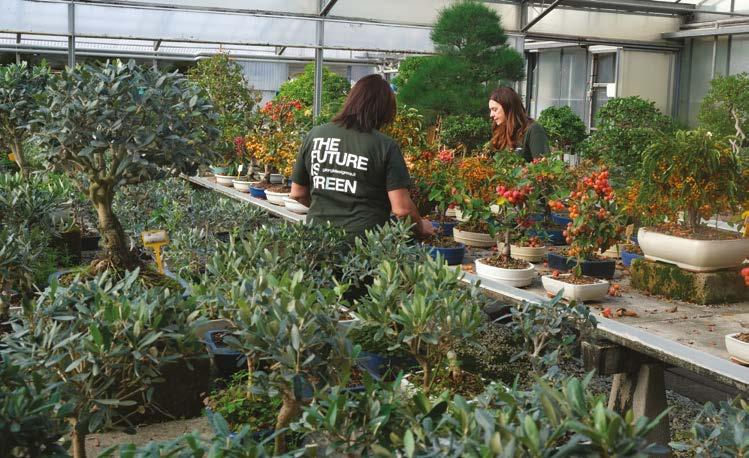
A sinistra i bonsai di Pinus parviflora e di juniperus chinensis ‘Itoigawa’. A destra invece, un bellissimo esemplare di Acer palmatum. In basso, un momento di lavoro in una delle serre di Franchi Bonsai a Pescia (Pistoia).
On the left, the multitiered bonsai trees Pinus parviflora and juniperus chinensis ‘Itoigawa’. On the right, a beautiful sample of Acer palmatum. Below, a moment of work at one of Franchi Bonsai’s greenhouses in Pescia (Pistoia).
nuovo SHOP gli appassionati di tutto il mondo possono trovare in vendita oltre 800 prodotti tra bonsai, prebonsai, macrobonsai, esemplari unici e accessori per la cura e la coltivazione delle piante.
nel tempo una collezione di bonsai unica nel suo genere e a sviluppare l’azienda, che da oltre 40 anni è il punto di riferimento a livello internazionale per tutti gli appassionati dei bonsai.
La lungimiranza di Costantino Franchi fu di capire che oltre a importare i bonsai dall’estremo

oriente era possibile crearli direttamente in Italia, con le essenze italiane come l’olivo, la quercia, il melo e tantissime altre specie. Ben presto l’azienda è diventata leader europeo nel settore, non solo con la produzione e commercializzazione dei bonsai, ma anche attraverso la creazione di una rivista, di un museo e l’organizzazione di eventi a cui partecipavano importanti maestri giapponesi.
Nel 2023 l’azienda pesciatina è entrata a far parte di Giorgio Tesi Group, azienda leader a livello europeo nel vivaismo di piante ornamentali, ed immediatamente è iniziato un progetto di rilancio e di consolidamento del brand, guardando con grande attenzione allo sviluppo di future strategie commerciali sia in Italia che nel mondo. Uno step fondamentale di questo percorso è certamente quello che ha portato alla realizzazione del nuovo sito internet, caratterizzato da contenuti di alta qualità abbinati ad una grafica moderna e molto curata.
Accanto alla sezione SHOP, dove gli appassionati di tutto il mondo possono trovare in vendita oltre 800 prodotti tra bonsai, prebonsai, macrobonsai, esemplari unici e accessori per la cura e la coltivazione delle piante, una sezione che ha l’ambizione di diventare punto di riferimento della comunità globale degli appassionati dei bonsai grazie ad articoli approfonditi, consigli pratici e guide dettagliate per coltivare e curare i bonsai. All’interno del nuovo sito anche diverse altre sezioni, dedicate agli esperti, ai neofiti, ai consigli, ai numerosi esclusivi servizi che l’azienda è in grado di offrire a tutti gli utenti e ai rivenditori e ai professionisti del settore, che registrandosi compilando un apposito form possono accedere ad un’area riservata nella quale, oltre ad un listino prezzi speciale, viene offerto loro un servizio personalizzato frutto dell’esperienza pluridecennale nella produzione e nella vendita dei bonsai. ☜
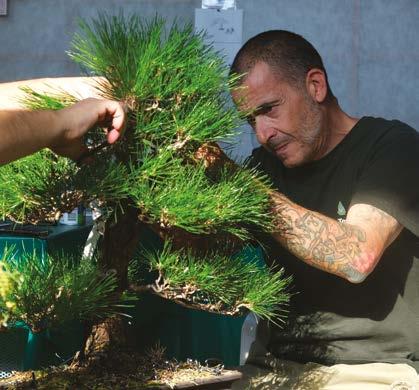
Il mondo dei bonsai è affascinante, complesso e ricco di storia, tecnica, arte, botanica e filosofia. Il termine “bonsai” deriva dal giapponese e significa “pianta in un vassoio” (bon = vassoio, sai = pianta)
Il bonsai nasce in Cina circa quindici secoli fa, dove assume un aspetto prettamente religioso legato alla filosofia Zen. In seguito, in Giappone, la cultura bonsai trovò un fertile terreno, affinandosi fino al punto di raggiungere livelli di vera e propria arte. Solo dai primi anni del novecento si ha notizia dell’apparizione ufficiale del bonsai in Europa. Da allora in tutto il mondo si conta un numero sempre più crescente di appassionati.
In Italia il bonsai arriva alla fine degli anni 70 grazie all’impegno di alcuni appassionati tra i quali Costantino Franchi, fondatore di Franchi Bonsai, che ebbe un ruolo fondamentale nel diffondere questa arte. Da allora, numerosi maestri giapponesi del calibro di Masaiko Kimura, Kunyo Kobayashi, Shinji Suzuki e altri, hanno partecipato alle manifestazioni organizzate dall’azienda, innalzando la conoscenza e il livello qualitativo del bonsai italiano.
Tra i maestri italiani non va dimenticato Lorenzo Agnoletti che per decenni si è preso cura del Museo della Franchi, ma anche della creazione e del mantenimento dei numerosi esemplari che negli anni sono passati da questa azienda. Al suo prezioso lavoro si è affiancato dal 2009 quello di Francesco Santini e dal 2023 quello di Andrea Matteucci. All’interno dello show room nella sede storica di Franchi Bonsai a Pescia (Pistoia) si trova un vasto assortimento di prodotti: accanto alle essenze autoctone coltivate in proprio, si possono trovare specie esotiche di provenienza giapponese e cinese oltre a vasi, attrezzi e accessori specifici per la cura e la manutenzione dei bonsai. Nel vivaio, di circa 4 ettari di superficie, grazie al sapiente lavoro di personale specializzato e Maestri bonsai, vengono invece coltivate con grande cura le piante destinate a trasformarsi, dopo lunghi anni di lavorazione, in veri e propri bonsai.
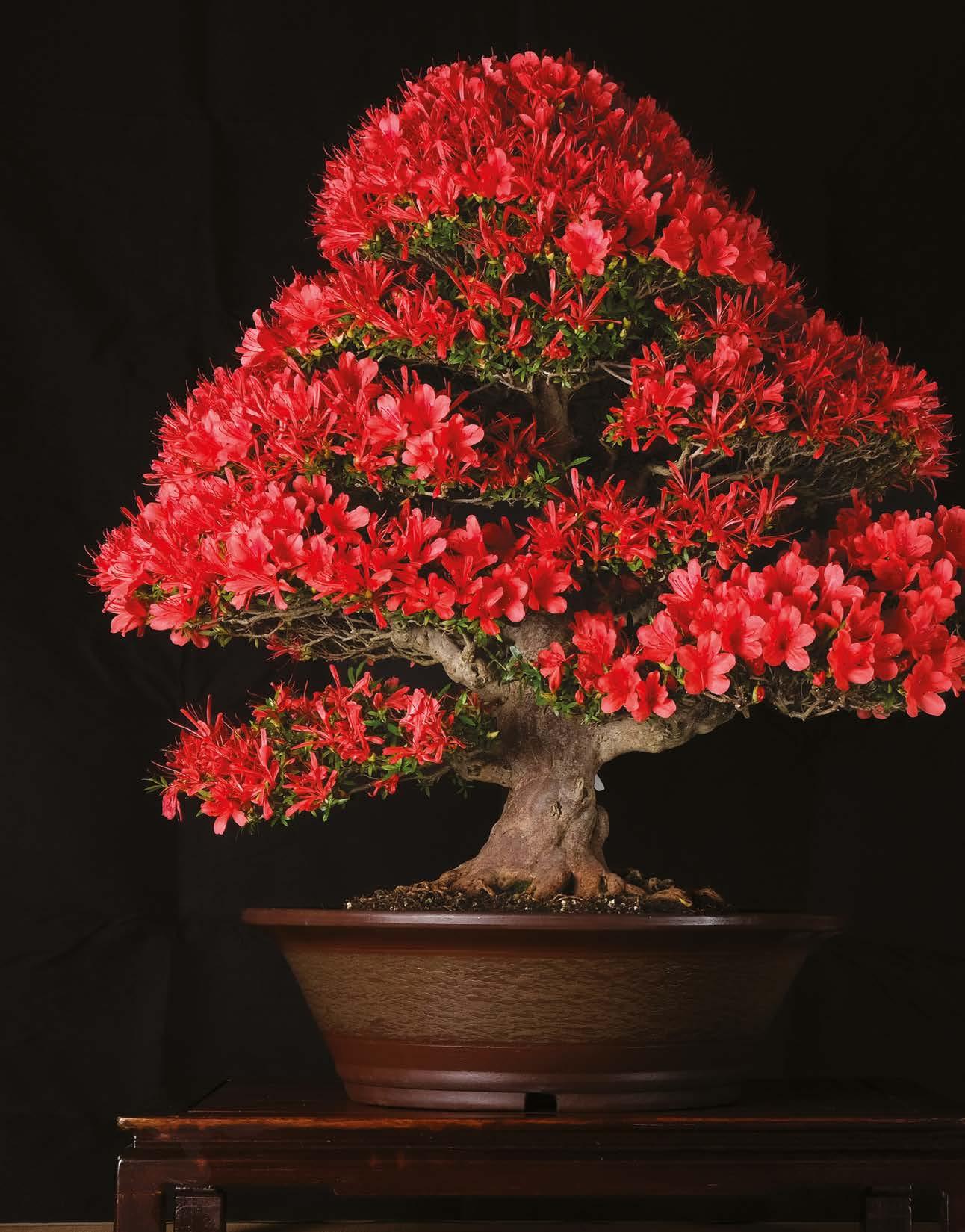

In queste pagine tre bellissimi esemplari di Franchi Bonsai: a sinistra un’Azalea satsuky var. Kinsai e a destra, in alto un Acer palmatum Shishigashira e in basso un Juniperus Chinensis
In these pages, three beautiful samples by Franchi
on the left, an Azalea Satsuky var. Kinsai and, on the right, above, an Acer
Below, a Juniperus Chinensis.
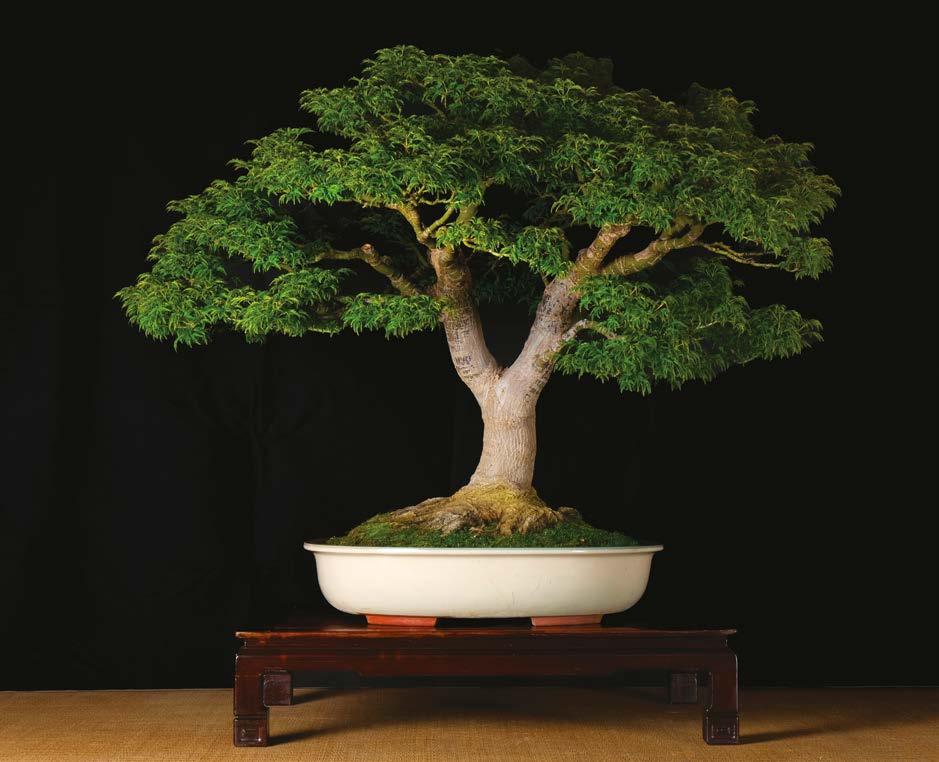
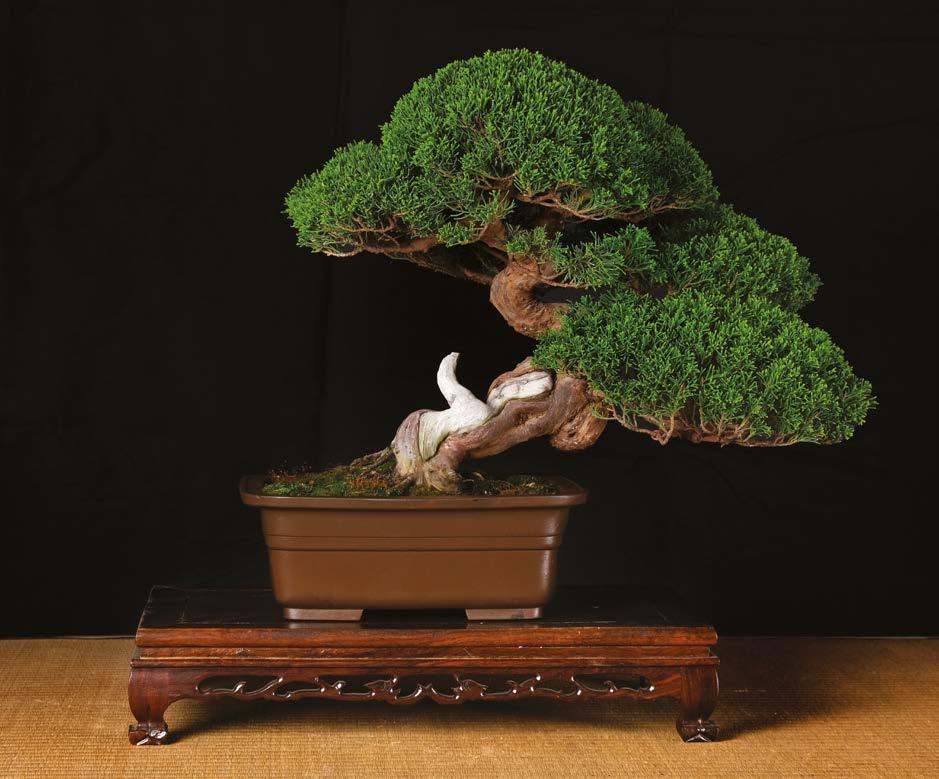
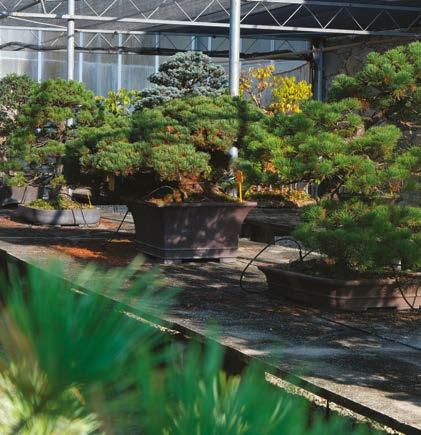
The world of bonsai tree is fascinating, complex and full of history, technique, art, botany and philosophy. The term “bonsai tree” comes from Japanese and means “plant in a tray” (bon = tray, sai = plant). Bonsai trees were born in China nearly fifteen centuries ago, and they took on a strictly religious perspective, related to the Zen philosophy. Later on, bonsai tree culture would find a fertile land in Japan, where it refined itself until it reached the levels of an actual form of art. It was only in the first few years of the XX century that we got the news of the first official appearance of bonsai trees in Europe. Since then, there’s been a growing number of enthusiasts all over the world. In Italy, bonsai trees arrived in the late 1970s thanks to the commitment of a few enthusiasts, including Costantino Franchi (founder of Franchi Bonsai), who played a key role in spreading this art. Since then, several Japanese masters such as Masaiko Kimura, Kunyo Kobayashi, Shinji Suzuki and others, have been attending the events organized by the company, raising the level of knowledge and quality of Italian bonsai trees. Among the Italian masters we shouldn’t forget Lorenzo Agnoletti who, for several decades, has been taking care of Franchi Museum, but also of creating and maintaining the several samples which, over the years, have passed through the company. In 2009, he was joined in his valuable work by Francesco Santini and, in 2023, by Andrea Matteucci. Within the showroom in the historical premises of Franchi Bonsai in Pescia (Pistoia) we can find a full range of products: next to the indigenous plants that are cultivated autonomously, you can find exotic Japanese and Chinese species, as well as pots, equipment and accessories which are specific for the treatment and maintenance of bonsai trees. Thanks to the wise work of specialized staff members and bonsai tree masters, the plants which are destined to turn into actual bonsai trees after several years of processing are carefully cultivated in the nursery, which has a surface of 4 hectares.
Cultivating bonsai trees means “producing art” and Franchi Bonsai has been doing that with passion and expertise for over 40 years. The new company website is finally online; thanks to the Shop session, customers can conveniently purchase from home over 800 products, including all types of accessories and bonsai trees.
Born in 1937, the company belonging to the Franchi family initially specialized in floriculture, always keeping in mind the olive-growing nursery industry, which had a strong boost following the 1956 frost, which destroyed nearly all the olive tree groves of Central Italy. Costantino Franchi’s difficult and courageous journey towards the production of bonsai trees actually started from olive bonsai trees: back then, such technique had been used on a large scale just in Japan and China, by following ancient, thousand-year-old traditions. Over the years and following the several trips to China, Taiwan and Japan, through which the company established partnerships which are still active with those far production realities, Costantino started to purchase a few samples that, over time, have become a one-of-a-kind collection of bonsai trees, and to develop the company that, for over 40 years, has been the point of reference at an international level for all bonsai tree enthusiasts.
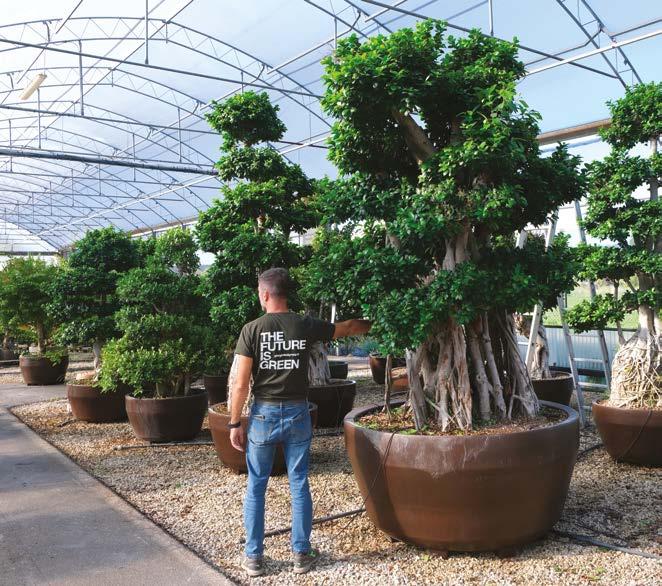

A sinistra un esemplare di Crataegus eretto. Nell’altra pagina, in alto bonsai in produzione e in basso alcuni magnifici macro bonsai di Ficus.
On the left, a sample of Crataegus erecta. In the next page, above, a picture of bonsai-tree production process and, below, some beautiful Ficus macro-bonsai trees.
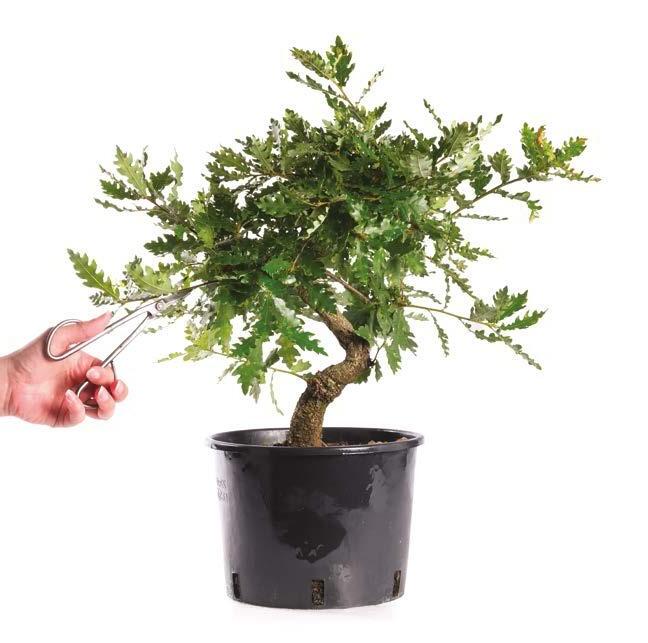

Costantino Franchi’s far-sightedness was to understand that, as well as importing bonsai trees from the Far East, it was also possible to create them directly in Italy, with Italian essences such as olive tree, oak, apple tree and several other species. Soon the company became a European leader in the industry, not only through the production and marketing of bonsai trees, but also by creating a newspaper and a museum and by organizing important events, attended by wellknown Japanese masters.
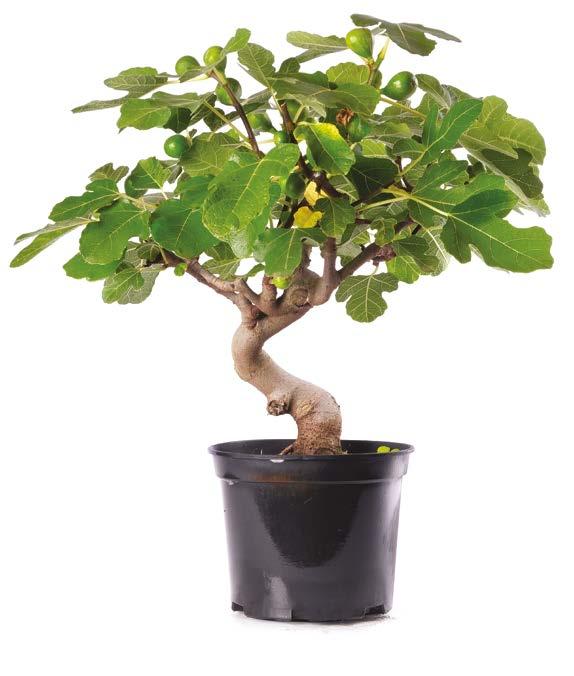
In 2023, Franchi Bonsai joined Giorgio Tesi Group, the European leading company in the field of ornamental plant nursery, and it immediately marked the start of a brand relaunch and consolidation project, which pays close attention to the development of future business strategies, both in Italy and worldwide.
A key step for the company’s relaunch and growth strategies was definitely the creation of the new website, characterized by a modern and very accurate graphics and a SHOP section where bonsai tree enthusiasts from all over the world can
purchase over 800 products among bonsai, pre-bonsai and macro-bonsai trees, unique samples and accessories for the treatment and cultivation of plants. In addition to the shop, the website also hosts a blog that aims at becoming a point of reference for the global community of bonsai tree enthusiasts, thanks to in-depth articles, practical advice and detailed guides to cultivate and treat bonsai trees, as well as different sections dedicated to experts, newbies, recommendations and several exclusive services that the company can offer to its customers. ☜
In alto, da sinistra a destra i prebonsai di Quercia pubescens, Zelkova e Ficus carica. Accanto, un’immagine di uno dei vivai di produzione di macro bonsai.
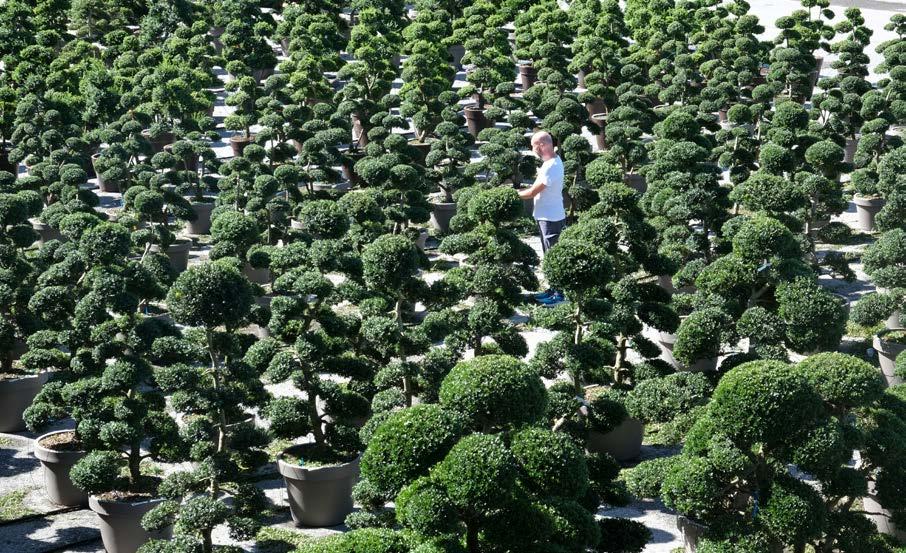

Incontriamoci
Il settore del florovivaismo è in costante evoluzione, spinto dall’esigenza di soddisfare una domanda crescente di piante ornamentali da esterno e fiori per ogni angolo del mondo. Le fiere di settore rappresentano un’occasione fondamentale per i produttori di mostrare le proprie novità, confrontarsi con altri operatori e costruire importanti relazioni commerciali.
Nel corso del 2025 la nostra azienda parteciperà alle seguenti manifestazioni:
IPM Essen
Germania dal 28.01 al 31.01.2025
L’IPM di Essen è da 40 anni la fiera di riferimento a livello mondiale per il settore florovivaistico. Con una partecipazione internazionale e una vetrina che include i migliori produttori di piante, attrezzature e soluzioni tecnologiche. Sono oltre 1.400 gli espositori provenienti da più di 50 nazioni, nell’ultima edizione i visitatori professionisti provenienti da tutto il mondo sono stati circa 60.000.


La nostra azienda partecipa regolarmente all’IPM con uno stand di oltre 200 mq, un’occasione unica per mostrare la nostra produzione, i nuovi progetti aziendali ed incontrare clienti, partner e fornitori. Potete trovarci al padiglione 5 Stand E36
Myplant & Garden – Fiera Milano Rho dal 19.02 al 21.02 2025
Sin dalla prima edizione (2015), Myplant ha registrato una crescita continua in termini di opportunità di business coinvolgendo gli attori di tutte le filiere del verde, dalla ricerca alle costruzioni, dal seme alle forestazioni,
dalla produzione all’innovazione, dalle componenti soft a quelle hard, alla distribuzione.
La nostra azienda, dopo aver preso parte all’edizione del 2015 ha di nuovo partecipato lo scorso anno, e confermando la partecipazione anche per il 2025 con uno stand di 144 mq. Potete trovarci al padiglione 12 - stand D07 E02
Accanto a questi appuntamenti, a gennaio 2025 in quanto soci sostenitori di AICG - Associazione Italiana Centri Giardinaggio - nata nel 2012 con lo scopo di tutelare,

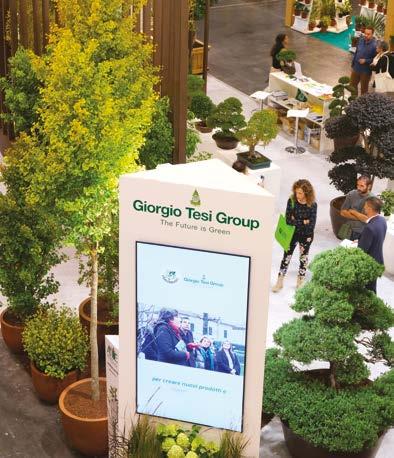
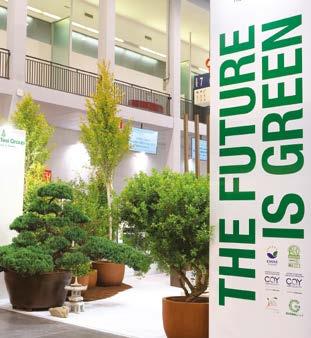
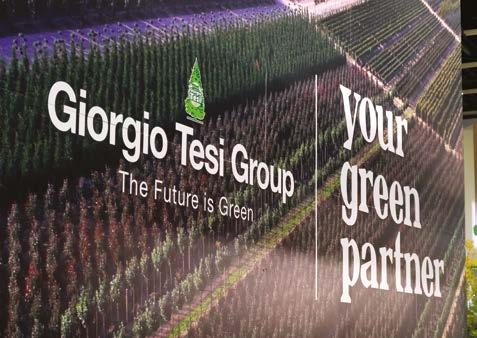
The nurserystock industry is continuously evolving, driven by the need to meet the growing demand for ornamental outdoor plants and flowers for every corner of the world. Industry trade fairs represent a key opportunity for producers to show their new products, discuss with other operators and build important business relations.
During 2025, our company will attend the following events:
IPM Essen
Germany, from 28 January to 31 January 2025
qualificare, promuovere e sviluppare la cultura del verde, con una particolare attenzione alle eccellenze Made in Italy, all’interno dei Centri Giardinaggio (o Garden Center) - parteciperemo al 13° Convegno Nazionale dell’associazione dal titolo “Naturalmente Coltiviamo Innovazione” in programma dal 14.01 al 16.01 a Bolzano presso il NOI TechPark Alto Adige. Un evento rivolto ai membri di AICG che ci consentirà di illustrare il nostro servizio a loro dedicato, oltre a presentare la nostra ampia produzione: tutte le specie e varietà di piante che richiede il mercato italiano, europeo ed extra europeo, da quelle giovani agli esemplari di grandi dimensioni, dalle forme geometriche (arte topiaria) agli alberi per le città e i viali, piante per i garden center e la grande distribuzione, oltre ad un’ampia collezione di rosai, olivi, agrumi, piante da frutto, piante rampicanti, erbacee perenni e aromatiche.
Per essere sempre aggiornati sulle nostre attività visitate il sito web www.giorgiotesigroup.it
For 40 years, IPM Essen has been the reference trade fair worldwide for the nurserystock industry, with an international participation and a showcase that includes the best producers of plants, equipment and technological solutions. There are over 1400 exhibitors coming from over 50 nations; in the latest edition, there were nearly 60000 professional visitors coming from all over the world.
Our company regularly attends IPM with an over 200-square meter booth. It’s a unique opportunity to show our products, the new business projects and meet customers, partners and suppliers.
You can find us at pavilion 5, booth E36
Myplant & Garden – Fiera Milano Rho, from 19 February to 21 February 2025
Since its first edition (2015), Myplant has been recording a continuous growth in terms of business opportunities by involving all the stakeholders from all green industries: from research to construction, from seeds to forestation, from production to innovation, from soft to hard components and distribution.
After attending the 2015 edition, our company took part again in last year’s edition and confirmed attendance also for 2025, with a 144-square meter booth.
You can find us at pavilion 12 – booth D07 E02
Along with these events, in January 2025, in our capacity as supporting members of the AICG – Italian Garden Center Association – born in 2012 with the purpose of protecting, qualifying, promoting and developing the green culture, with a specific focus on Made in Italy excellences within garden centers -we will attend the 13° National Conference of the association, whose title is “Naturalmente Coltiviamo Innovazione” (“Naturally cultivating innovation”) and scheduled from 14 January to 16 January in Bolzano, at the NOI TechPark Alto Adige. An event for all the AICG members, that will allow us to display the service dedicated to them as well as showcasing our wide range of products, which includes all the species and varieties of plants required by the Italian, European and extra-European market: from young plants to big specimens, from geometric shapes (topiary) to trees for cities and boulevards, plant for garden centers and large-scale distribution, as well as a wide range of rose gardens, olive trees, citrus fruits, fruit plants, climbing plants, perennial and aromatic herbs.
To be always updated about our activities, please visit the website www.giorgiotesigroup.it
Attività di promozione della filiera “EDENEfficientamento, ammodernamento e innovazione nel vivaismo nazionale”
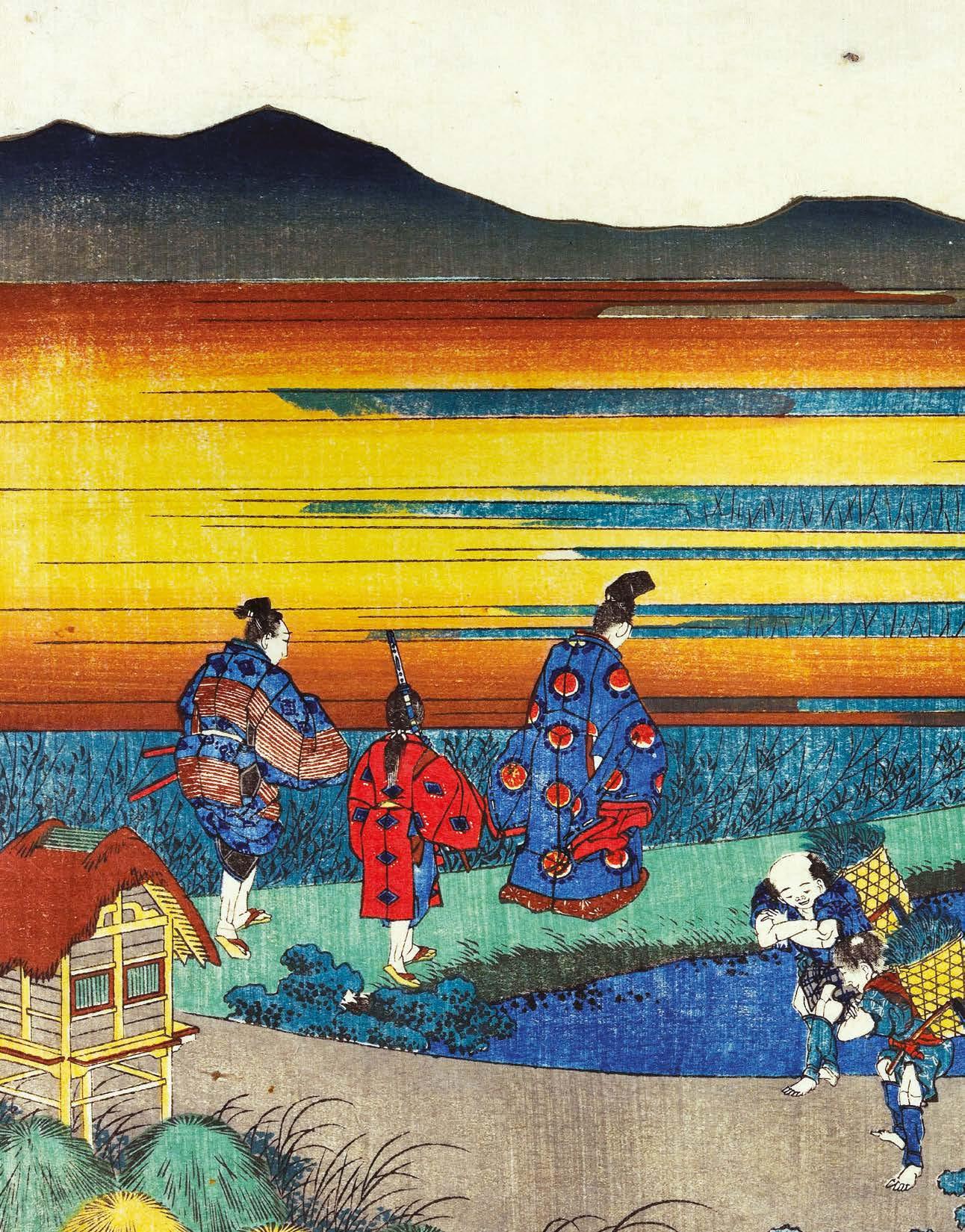
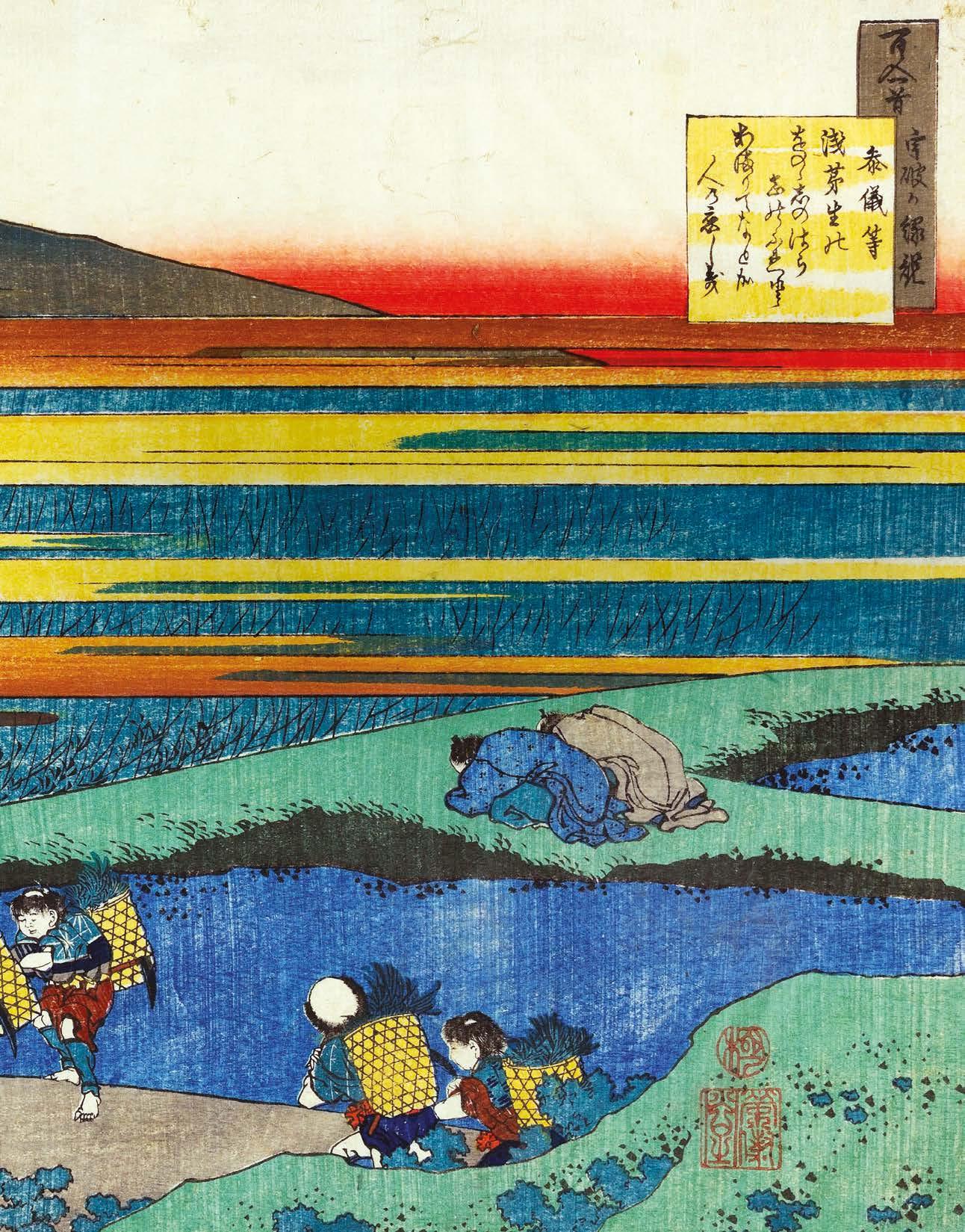
Katsushika Hokusai è uno dei più celebri artisti dell’ukiyo-e, un genere di pittura e stampa giapponese che ritraeva la vita quotidiana, paesaggi, attori e soggetti mitologici.
La sua carriera artistica ha attraversato diversi stili e periodi, ma è noto soprattutto per le sue stampe di paesaggi, che hanno influenzato notevolmente l’arte occidentale, compreso il movimento dell’Impressionismo.
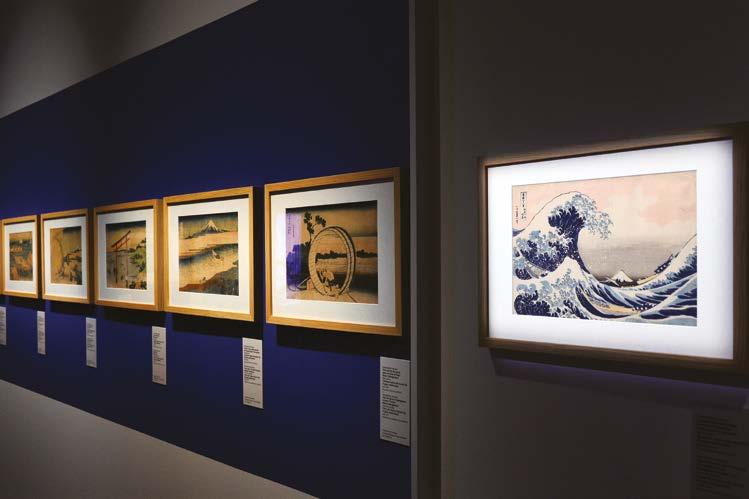
Per la prima volta Palazzo Blu di Pisa ospita una grande mostra dedicata al maestro giapponese “HOKUSAI”, dal 24 ottobre 2024 fino al 23 febbraio 2025, a cura di Rossella Menegazzo, docente ed esperta di Storia dell’arte dell’Asia orientale all’Università degli Studi di Milano. Attraverso oltre 200 opere provenienti dal Museo d’Arte Orientale Edoardo Chiossone di Genova e dal Museo d’Arte Orientale di Venezia, oltre che da collezioni private italiane e giapponesi, la mostra mette in evidenza l’eclettismo del massimo maestro del filone artistico ukiyoe, letteralmente tradotto “immagini del Mondo Fluttuante”, che ha segnato l’apice dello sviluppo dell’arte di epoca Edo (1603 – 1868) in Giappone, e la ricchezza del suo lascito evidente nelle opere dei tanti allievi che hanno continuato il suo stile. Accanto alle opere del maestro sono presentate infatti anche le opere in silografia e pittoriche dei suoi allievi più vicini, tra cui Hokkei, Gakutei, Hokuba, Ryūryūkyō, nonché della figlia Oi che accompagnò Hokusai fino alla fine della sua carriera, lavorando al suo fianco. Ma Hokusai ha esercitato una indiscutibile influenza anche sull’arte europea di fine Ottocento e continuano ad esserci tanti artisti contemporanei che a lui si ispirano, come la mostra ben documenta.
I soggetti, perlopiù di natura, offrono spunti di riflessione sul rapporto uomo-naturadivino convogliati attraverso segni e simboli legati alla ritualità quotidiana e stagionale
Il progetto espositivo di Palazzo Blu valorizza le due più grandi collezioni italiane d’arte giapponese. Un patrimonio che dobbiamo a Edoardo Chiossone ed Enrico di Borbone Conte di Bardi, che con la loro profonda conoscenza del Giappone e l’appassionata opera di raccolta dei materiali hanno dato vita a collezioni di alto valore, arrivate fino a noi oggi.
La mostra inizia con la produzione più celebre e prolifica di Hokusai, le stampe di vedute di luoghi celebri - meisho - destinate al vasto mercato: templi e architetture, ponti e cascate, oltre a libri illustrati – ehon - che documentano le prime vie di collegamento interne del Giappone
come il Tōkaidō e i luoghi iconici della capitale amministrativa shogunale di Edo.
Una produzione che sfocia nella serie delle famose Trentasei vedute del monte Fuji (1830-32) a cui è dedicata la seconda sezione e a cui sono affiancati i tre volumi dedicati alle Cento vedute del monte Fuji (1834-35, 1840 circa) e un album di epoca Meiji mai esposto prima d’ora che riprende il lavoro sulle trentasei vedute di Hokusai.
La sezione successiva presenta la produzione di volumi illustrati, in particolare la serie di 15 volumi di Manga intesi come manuali di disegno per pittori professionisti e amatori, insieme ad altri libri illustrati e manuali realizzati anche da suoi allievi e utilizzabili dagli artigiani come modelli, che condensano tutti i personaggi e gli elementi che si ritrovano compiuti nelle stampe policrome di Hokusai. Da queste opere i pittori europei dell’Ottocento hanno tratto a piene mani per ricreare pose e soggetti per le loro pitture.
Tra gli album di grande formato è esposto il famoso Pivieri sulle onde (Nami chidori), uno degli album più raffinati di Hokusai del genere erotico noto come shunga, “immagini di primavera”, che circolava di nascosto evitando la censura con sobrie copertine per offrire però immagini all’interno di incontri amorosi d’ogni genere, e che interessava tutti gli artisti che grazie a questa produzione sbarcavano il lunario.
Da qui, la mostra prosegue con una selezione di opere pensate per un pubblico più colto, dunque meno vendibile rispetto a paesaggi e beltà femminili, poiché è legata a temi e personaggi letterari e poetici. In particolare, vengono presentati esempi da due serie: Specchio dei poeti giapponesi e cinesi dedicata ai cento grandi poeti classici, e Cento poesie per cento poeti in Racconti illustrati della balia,
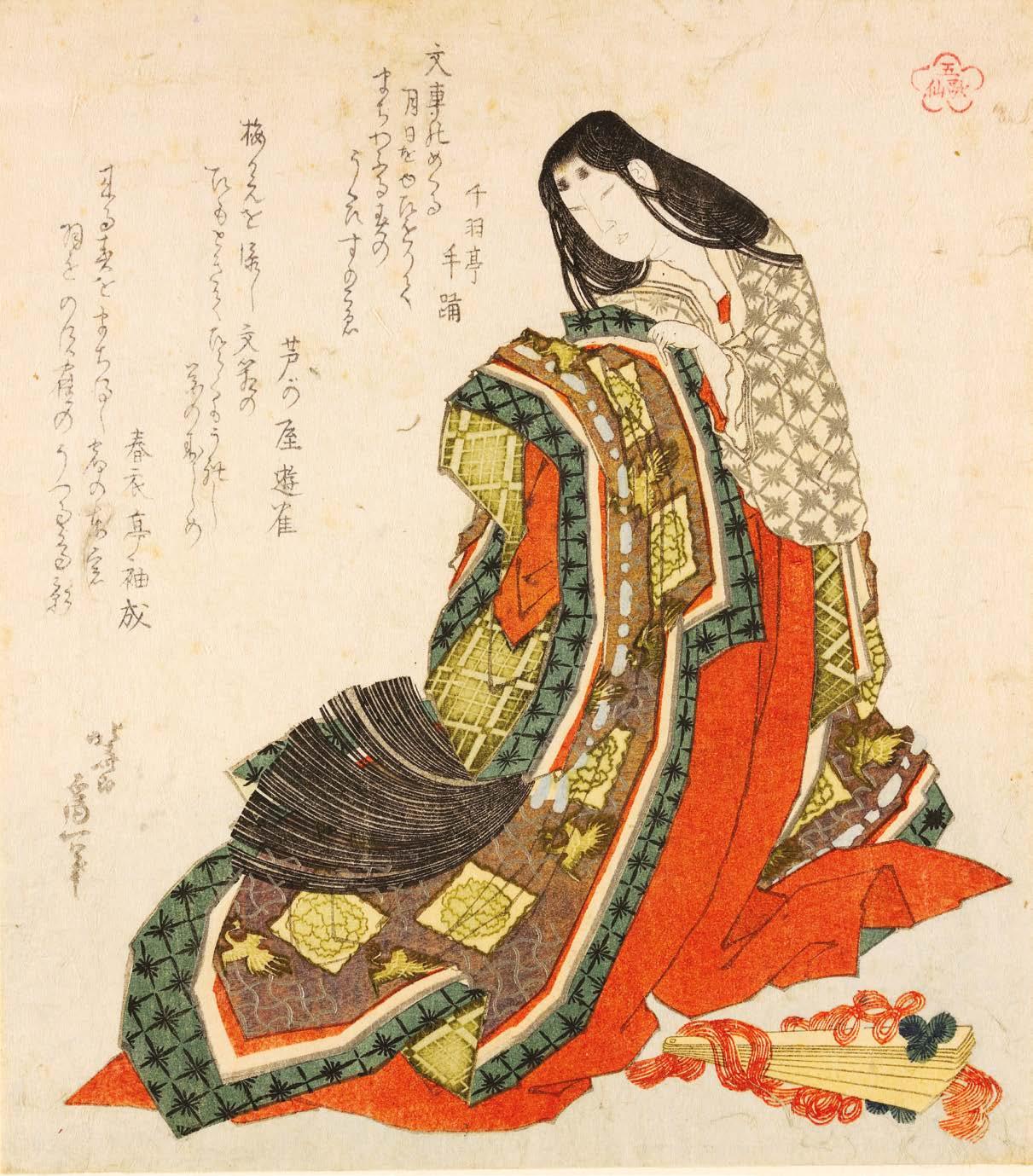

che mostra una scelta coloristica nuova ispirata ai versi della raccolta poetica e fu l’ultima serie progettata da Hokusai prima di dedicarsi principalmente alla pittura.
Il cuore della mostra è rappresentato da una ampia sezione dedicata a una produzione artistica esclusiva e poco conosciuta dal pubblico: i surimono, biglietti e inviti di massima raffinatezza tecnica, concepiti per una committenza colta ed elitaria. Questa sezione include opere rare conservate in centinaia di esemplari presso il
Museo Chiossone, mai esposte prima d’ora in modo compatto. Questa ampia serie di surimono riveste un ruolo centrale nell’ambito dell’esposizione, in quanto permette di confrontare lo stile di Hokusai con quello dei suoi allievi, evidenziando l’originalità dei temi, delle tecniche e dei formati. I surimono sono biglietti augurali, d’invito e pubblicitari creati per eventi privati e soprattutto in occasione di incontri letterari, destinati ai circoli poetici e quindi a una clientela ristretta. Pertanto erano prodotti in edizioni limitate, rendendoli rari nelle collezioni.
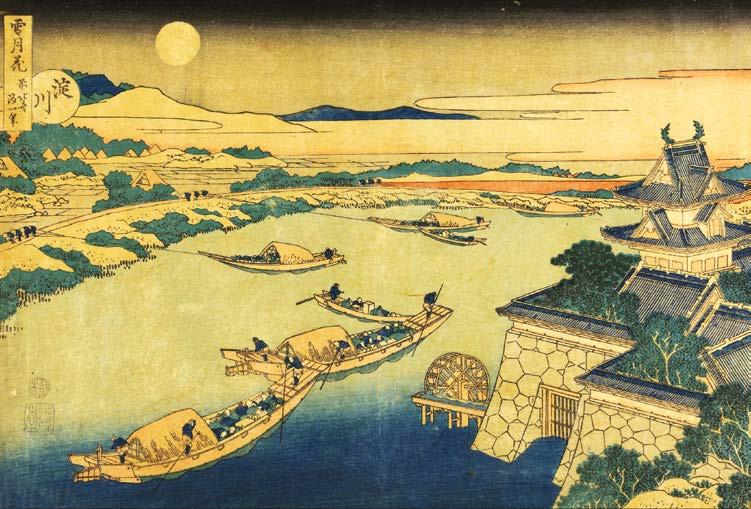
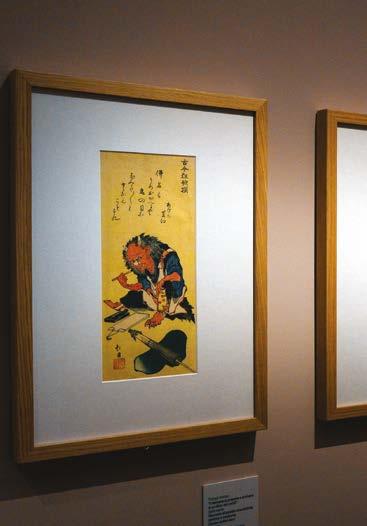
Caratterizzati da illustrazioni di grande eleganza, arricchite da varianti di colore, pigmenti d’argento e oro, o da impressioni con la stampa a secco, includono testi e poesie calligrafate che esplicitano il loro scopo.
“Chi dice di aver già visto Hokusai in altre esposizioni si sbaglia, anche quando si parla delle stesse serie realizzate a stampa va sottolineato che ciascun esemplare è unico perché realizzato manualmente unendo l’abilità di Hokusai a quella dei maestri stampatori e incisori che con lui lavoravano – sottolinea Rossella Menegazzo, curatrice della mostra - Le opere sempre di dimensioni minute invitano a un’osservazione attenta e ravvicinata a cui siamo poco abituati, necessitano di un altro tempo; mentre i soggetti, perlopiù di natura, offrono spunti di riflessione sul rapporto uomo-natura-divino convogliati attraverso segni e simboli legati alla ritualità quotidiana e stagionale”.
Il percorso storico si chiude con una selezione di rotoli dipinti a mano che rappresentano l’apice dell’abilità e dell’eccentricità di Hokusai nel tratto, oltre al suo spirito più profondo. In queste opere emergono chiaramente il suo pensiero religioso e scaramantico, con la presenza di animali leggendari e portafortuna come galli, draghi e tigri, oltre a immagini del sacro monte Fuji, a cui era devoto.
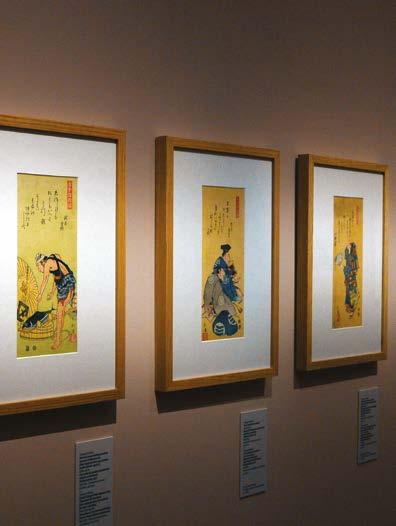
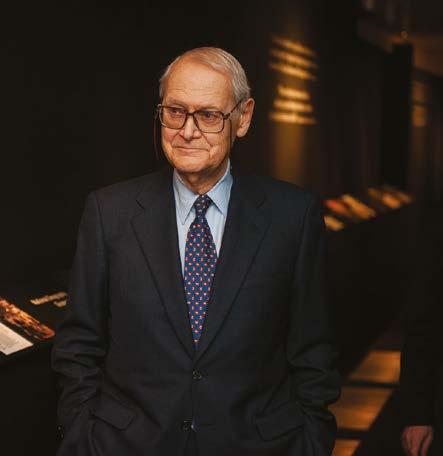
Cosimo Bracci
Per completare la visione di ciò che l’opera di Hokusai ha significato nel tempo, il percorso espositivo offre una selezione di opere dei più noti artisti contemporanei del pop giapponese come Yoshitomo Nara, famoso per le figure di bambine dai volti spaventosi e arrabbiati, che dedicò a Hokusai disegni e citazioni ironiche incorporandovi messaggi sociali e ambientali; il gruppo teamLab, fondato nel 2011 e rinomato per il museo d’arte digitale immersiva a Tokyo, che crea installazioni interattive e video che traggono ispirazione dalla natura, dai paesaggi e dalle stagioni tipiche dell’arte classica, il disegnatore Manabu Ikeda, che lavora in punta di penna realizzando disegni affollati di minuti particolari, tra cui l’opera Foretoken in cui ha ripreso la “Grande Onda” di Hokusai in una immagine apocalittica e un omaggio dell’artista italiano Simone Legno che sempre alla Grande Onda ha dedicato un’opera pittorica appositamente per la mostra.
La mostra è prodotta e organizzata da Fondazione Palazzo Blu e MondoMostre, con il contributo di Fondazione Pisa. ☜
Toscana, terra di cultura, storia, tradizioni e anche grande amore per il verde e la natura. Accogliamo con gioia la proposta della rivista NATURART di presentare Palazzo Blu di Pisa e le sue iniziative, tra le quali la bellissima mostra su Hokusai, con duecento opere da importanti collezioni, aperta fino al prossimo 23 febbraio 2025. Il rapporto della cultura giapponese con la natura è particolarmente stretto e Hokusai, noto in tutto il mondo per la sua opera più celebre, la ‘Grande Onda’, con le sue vedute del monte Fuji e i paesaggi del Giappone ne è uno straordinario interprete.
Oltre alle mostre dedicate ai grandi artisti e ai movimenti artistici, Palazzo Blu è anche molto altro. Accanto alla grande pittura internazionale, le mostre fotografiche raccontano spesso la storia e la società del territorio, come quella attualmente in corso dal titolo ‘Dalla guerra alla Liberazione. Pisa 1940 – 1945’ con foto provenienti da archivi locali e internazionali.
Infine Palazzo Blu è una dimora storica che ospita in permanenza la mostra della collezione d’arte della Fondazione Pisa, con opere dal Trecento al Novecento, legate a Pisa, fra le quali, ‘Clio, musa della storia’ e il ‘Cristo e la samaritana al pozzo’ di Artemisia Gentileschi e il ritratto che Simon Vouet ha fatto alla Gentileschi nel 1623.
Palazzo Blu è aperto tutto l’anno con rassegne di musica, eventi di approfondimento di temi d’attualità, visite guidate e laboratori per adulti e bambini. Un polo culturale per la città e la Toscana.
Tuscany, a land of culture, history, traditions and also big love for green and nature.
We welcome with joy the proposal of the magazine Naturart to present Palazzo Blu, in Pisa, and its initiatives, among which the beautiful exhibition on Hokusai, with two hundred works from important collection; it will be open until 23 February 2025. The relationship between the Japanese culture and nature is really close and Hokusai, who’s famous all over the world for his most famous work, “The Big Wave”, his views of the Mount Fuji and his Japanese landscapes, interpreted it remarkably well.
Palazzo Blu offers much more than the exhibitions dedicated to great artists and artistic movements. Along with the great international painting, the photographic exhibitions often narrate the history and society of the territory: one example is the current exhibition “From war to Liberation. Pisa 1940 –1945”, with photographs coming from local and international archives.
Finally, Palazzo Blu is an historical dwelling that permanently hosts the exhibition of Fondazione Pisa’s art collection, with works ranging from the XIV to the XX centuries that have a bond with Pisa, such as “Clio, Muse of History” and “Christ and the Samaritan Woman” by Artemisia Gentileschi and the 1623 portrait of Gentileschi by Simon Vouet.
Palazzo Blu is open all year round, with music festivals, training events on current topics, guided visits and laboratories for adults and children. It’s a cultural pole for the city and Tuscany.
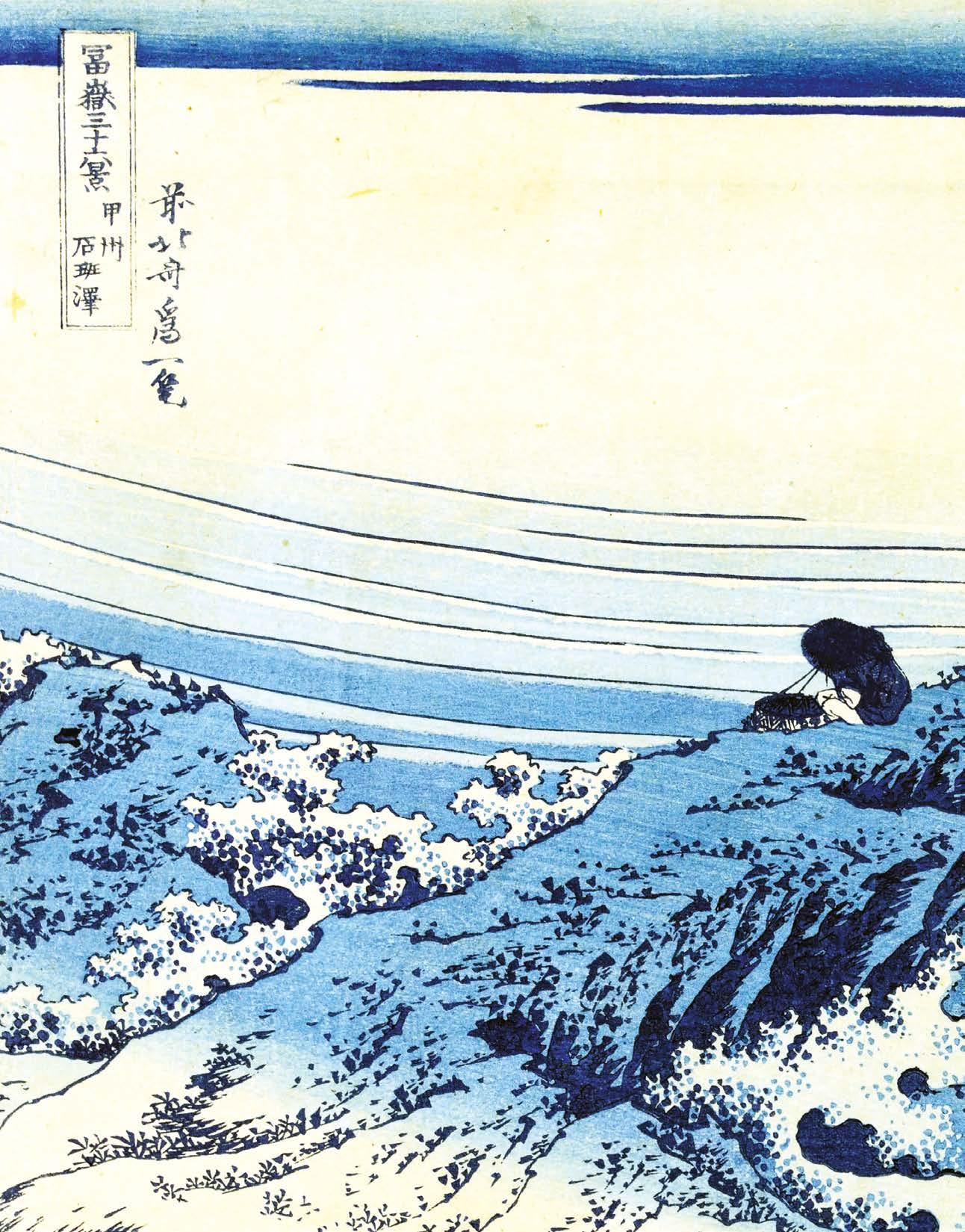
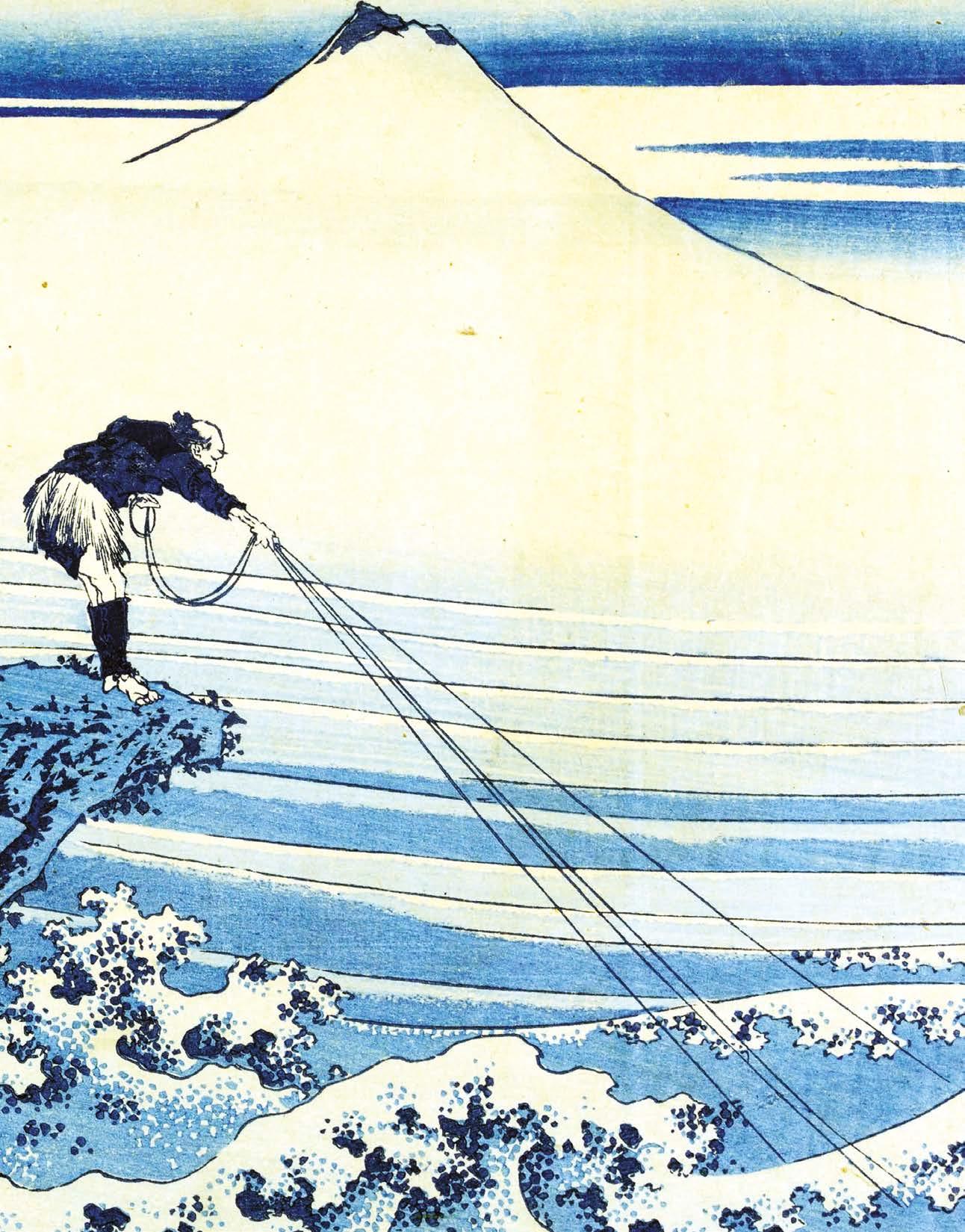
In this double page, the work
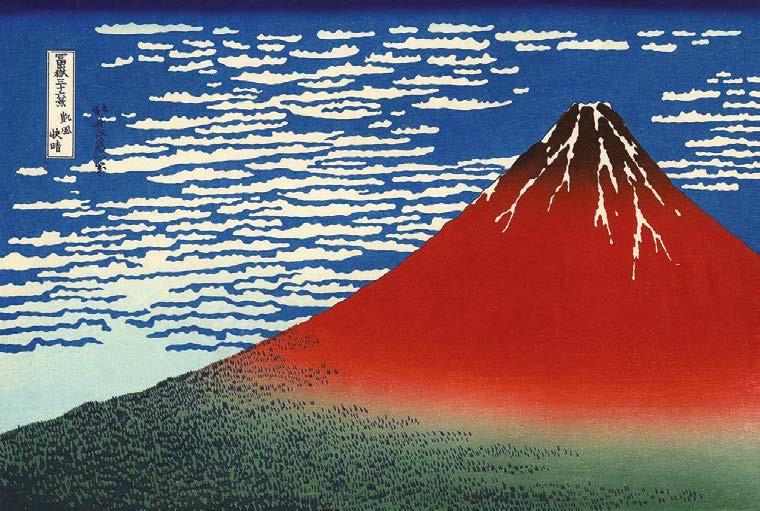
— Katsushika Hokusai is one of the most famous artists of ukiyo-e, a type of Japanese painting and printing that portrayed daily life, landscapes, actors and mythological subjects. His artistic career crossed different styles and periods, but he’s mostly famous for his prints of landscapes that significantly influenced Western art, including the Impressionist movement.
For the first time, Palazzo Blu in Pisa hosts a major exhibition dedicated to the Japanese master “HOKUSAI”, from 24 October 2024 to 23 February 2025, curated by Rosella Menegazzo, professor and expert in East Asian Art History at the University of Milan. Through more than 200 works from the Edoardo Chiossone Museum of Oriental Art in Genoa and the Museum of Oriental Art in Venice, as well as from private Italian and Japanese collections, the exhibition highlights the eclecticism of the greatest master of the ukiyo-e artistic strand, literally translated as “images of the Floating World”, which marked the pinnacle of the development of Edo-era art (1603 - 1868) in Japan, and the richness of his evident legacy in the works of the many pupils who continued his style. In fact, along with the works by the master, the
The exhibition starts with the most famous and prolific production by Hokusai, the prints of sights of famous places – meisho – which are destined to the large market: temples and architectures, bridges and cascades, as well as illustrated books – ehon –which document Japan’s first internal connection roads, such as Tōkaidō, and the iconic places of the administrative capital of the Edo shogunate.
A production that flows into the series of the famous Thirty-six views of Mt. Fuji (1830-32), to which is dedicated the second section and that is accompanied by the three volumes dedicated to the One hundred views of Mt. Fuji (1834-35, about 1840) and an album from the Meji age, that had never been exhibited before and resumes Hokusai’s work on the thirty-six views.
The next section presents the production of illustrated volumes, in particular the series of 15 Manga volumes intended as drawing manuals for professional and amateur painters, along with other illustrated books and manuals which were made also by his pupils and can be used by artisans as models, that condensate all the characters and elements that can be found in Hokusai’s polychrome paintings. The European painters from the XIX century drew copious inspiration to recreate postures and subjects for their paintings.
exhibition also shows the xylography and the pictorial works by his closest pupils, including Hokkei, Gakutei, Hokuba, Ryūryūkyō, as well as his daughter Oi, who accompanied and worked with Hokusai until the end of his career. However, Hokusai had an unquestionable influence also on the European art of the late XIX century, and there are still several contemporary artists who draw inspiration from him, as it’s well documented by the exhibition.
Palazzo Blu’s exhibition project enhances the two largest Italian collections of Japanese art. We owe this heritage to Edoardo Chiossone and Enrico di Borbone Conte di Bardi who, through their deep knowledge of Japan and their enthusiastic work to collect materials, gave life to highvalue collections, that have arrived to us today.
The famous Nami chidori is exhibited among the large-format albums. It’s one of the most refined albums by Hokusai from the erotic genre known as shunga, “spring images”, which circulated secretly and avoided censure with sober front pages to offer images within any kind of love meetings, and was interesting for all artists who, thanks to this production, would make ends meet.
From here, the exhibition continues with a selection of works that are designed for a more educated audience, that is less saleable compared to feminine landscapes and beauties, because it is related to literary and poetic topics and characters. In particular, there are examples from two series: A True Mirror of Chinese and Japanese Poems, dedicated to one hundred, great classic poets, and One hundred poems for one hundred poets, explained by the nurse, which shows a new colorist which draws inspiration from the poetic collection and was the last series designed by Hokusai before he fully committed to painting.
The core of the exhibition is represented by a wide section dedicated to an exclusive artistic production, which is not well-known by the audience: the surimono, tickets and invitations with a high technical sophistication, conceived for more cultured and elitist customers. This section includes rare works, which are preserved in hundreds of samples at the Chiossone Museum and have never been exhibited before in a compact manner. This wide range of surimonos plays a key role within the exhibition, since it allows to compare Hokusai’s style with that of his pupils by highlighting the originality of topics, techniques and formats. The surimonos are birthday, invitation and advertising cards created for private events and, in particular, on the occasion of literary meetings, destined to poetic circles and a limited range of customers. Therefore, they are produced in limited editions, and their presence in collections is rare. They are characterized by illustrations of great elegance, enriched by variants of color, pigments of silver and gold or impressions with offset printing, and include calligrapher texts and poems that express their purpose.
“Those who say that they have already seen Hokusai in other exhibitions are wrong. Even when we talk about the same series of prints, we should highlight that every sample is unique because it’s made manually by combining Hokusai’s ability with that of other printers and engravers who worked with him – explains Rossella Menegazzo, curator of the exhibition -. Such works, whose size is always small, invite to a careful and close observation to which we’re not used, they require another time; whereas the subjects, that are mostly natural, offer some insights on the relationship between human beings, nature and the divine, which are conveyed through signs and symbols that are linked to the daily and seasonal rituals”.
The historical journey ends with a selection of hand-painted rolls, which represent the apex of the ability and quirkiness of Hokusai’s line, as well as his deepest spirit. These works clearly show his religious and superstitious thought, with the presence of legendary and lucky charm animals such as roosters, dragons and tigers, as well as images of the sacred Mt. Fuji, to which he was devoted.
To complete the vision of what Hokusai’s work meant over time, the exhibition itinerary offers a selection of works by the most famous contemporary artists from Japanese pop, such as Yoshitomo Nara, who’s famous for the figures of young girls with frightful and angry faces and dedicated to Hokusai ironic drawings and quotes, which included social and environmental messages; the teamLab group, founded in 2011 and famous for the digital immersive art museum in Tokyo, which creates interactive installations and videos which draw inspiration from nature, landscapes and typical seasons of classic art; the drawer Manabu Ikeda, who works elegantly by making drawings that are full of small details, including the work Foretoken, in which he draw inspiration from Hokusai’s “The Big Wave” in an apocalyptic image; and an homage by the Italian artist Simone Legno, who dedicated a painting to “The Big Wave” specifically for this exhibition.
The exhibition is produced and organized by Palazzo Blu Foundation and MondoMostre, with the contribution of Fondazione Pisa. ☜












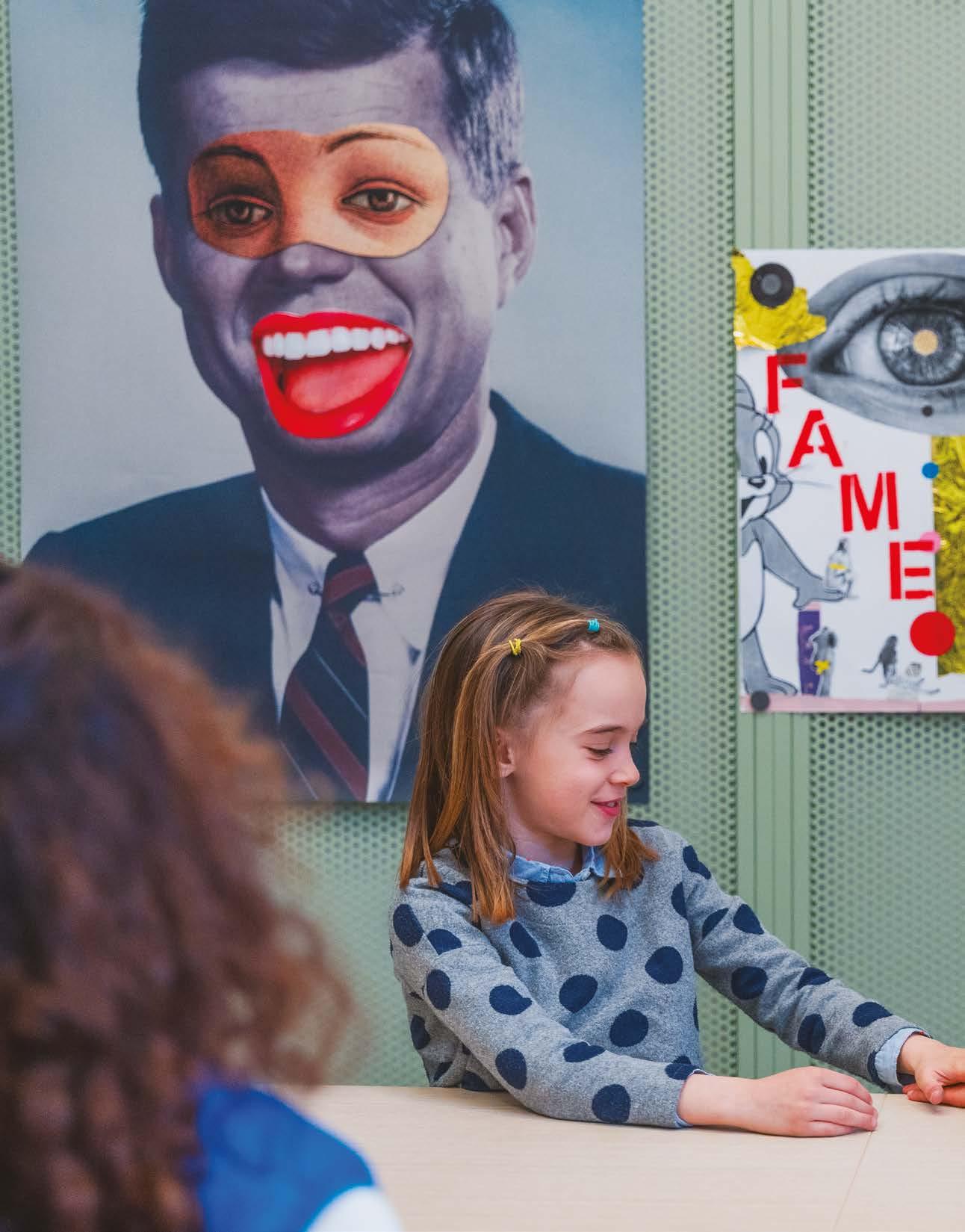
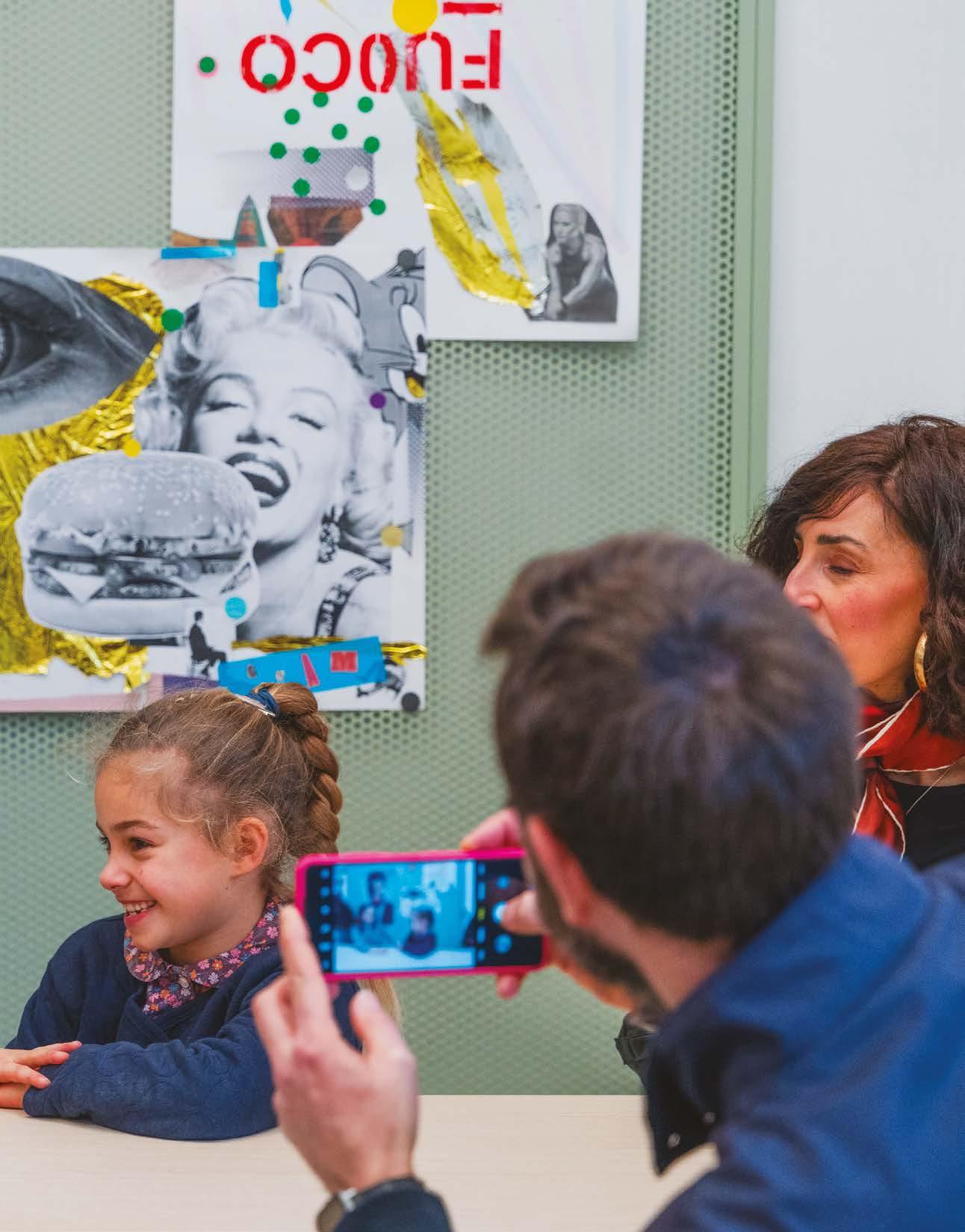
Fondazione Pistoia Musei
— Dal 2019 Pistoia Musei, oggi Fondazione Pistoia Musei ETS, opera per restituire alla città di Pistoia e a chi la visita un importante patrimonio storico e artistico.
Oggi l’obiettivo dei
Musei non è solo quello di avvicinare i visitatori alle opere d’arte e alle testimonianze del passato, ma di promuovere insieme una loro comprensione più profonda e personale, in grado di facilitare il dialogo e la riflessione.
Today, the goal of museums is not only to bring visitors closer to artworks and testimonies of the past, but also to promote together their deeper and more personal understanding, which is capable of promoting dialogue and reflection.
Dal 2019 Pistoia Musei, oggi Fondazione
Pistoia Musei ETS, opera per restituire alla città di Pistoia e a chi la visita un importante patrimonio storico e artistico. Le sue quattro sedi sono il Museo dell’Antico Palazzo dei Vescovi, il Museo di San Salvatore, Palazzo de’ Rossi | Collezioni del Novecento e Palazzo Buontalenti. Questi luoghi ospitano alcune delle più significative collezioni d’arte e oggetti antichi pistoiesi che attraverso la loro graduale musealizzazione stanno finalmente tornando visibili. Palazzo Buontalenti è invece la sede dedicata alle mostre temporanee come quella dell’artista Daniel Buren che aprirà a marzo 2025. Negli ultimi decenni il ruolo dei musei è profondamente cambiato. Evolvendosi da luoghi di conservazione ed esposizione a realtà dinamiche che mettono al centro l’educazione e la formazione per tutti, i musei interpretano i bisogni della società di oggi e le sue complessità. Nel rispetto di questa rinnovata identità, le attività nei musei non si limitano a trasmettere informazioni ma puntano a stimolare il pensiero critico sul tempo passato e presente, a coinvolgere i pubblici e a offrire esperienze diversificate che vadano oltre la sola contemplazione degli oggetti esposti, sebbene

Negli ultimi decenni il ruolo dei musei è profondamente cambiato.
Evolvendosi da luoghi di conservazione ed esposizione a realtà dinamiche che mettono al centro l’educazione e la formazione per tutti, i musei interpretano i bisogni della società di oggi e le sue complessità.
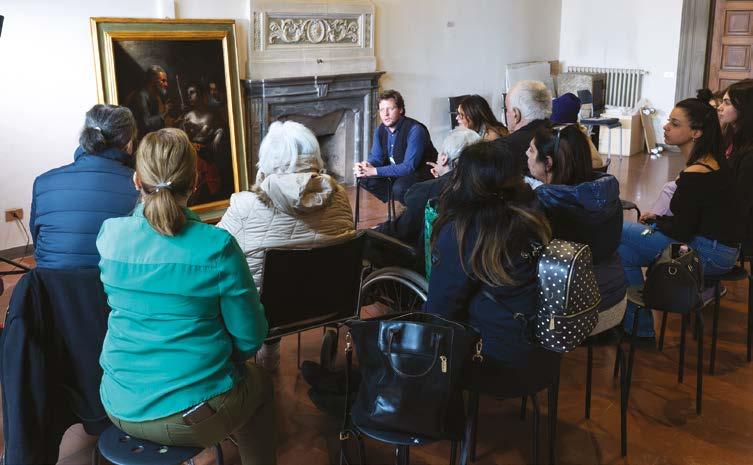
l’esperienza diretta delle opere resti un elemento imprescindibile. Visitare un museo offre qualcosa di diverso rispetto all’apprendimento mediato dai libri e dalle riproduzioni. Il museo oggi è pluralista e le sue attività educative si declinano a seconda delle diverse necessità di chi lo fruisce: visite dialogiche, laboratori, incontri tematici, progetti interdisciplinari e collaborazioni di medio e lungo termine creano le condizioni per rendere più accessibile l’incontro con l’arte e con il patrimonio culturale. Queste attività costruiscono il contesto giusto a esperienze significative che sopravvivano nel tempo spostando, un centimetro alla volta, il nostro punto di vista sul mondo. In sostanza, possono cambiarci la vita migliorandola. L’obiettivo non è solo quello di avvicinare i visitatori alle opere d’arte o alle testimonianze del mondo passato, ma di promuovere insieme una loro comprensione più profonda e personale, facilitando il dialogo e la riflessione. In quest’ottica, il museo si configura come un luogo di apprendimento attivo, dove possiamo prendere parte a un processo di confronto e di scoperta. Come fanno i musei a rendere questo possibile? Per prima cosa è necessario abbassare la soglia di accesso a certi contenuti senza banalizzarli, facendo percepire il patrimonio culturale una proprietà collettiva anche quando questo proviene da una collezione privata. Per farlo è necessario costruire un contesto accogliente, inclusivo e che fornisca il tempo e gli spazi
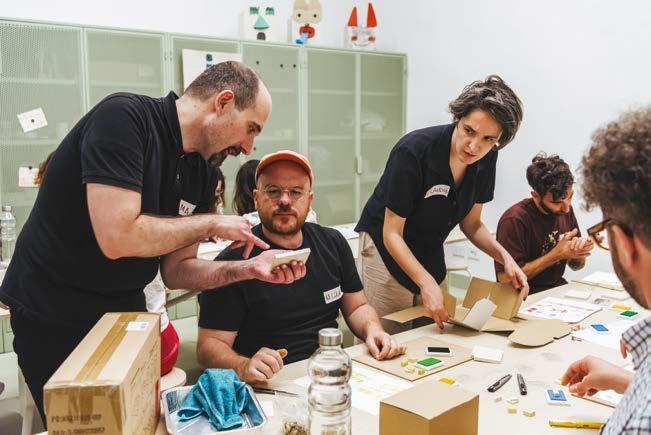
sufficienti per un’esperienza che sia anche piacevole e coinvolgente. Con questi obiettivi in mente Fondazione Pistoia Musei si è dotata recentemente di nuovi spazi come gli Atelier di Palazzo Buontalenti dove sono realizzate una parte delle attività laboratoriali per famiglie, classi scolastiche e per chiunque voglia avvicinarsi all’arte anche attraverso la sua pratica. In questi spazi sono ospitati con regolarità incontri e atelier serali con artiste e artisti provenienti da tutta Italia a cui chiunque può partecipare a prescindere dalle proprie competenze. La pratica artistica proposta negli atelier è una declinazione dei modi con cui si sperimentano i sensi all’interno di un percorso museale e di come questo si traduca in diverse forme di conoscenza. Mettersi di fronte a un dipinto e parlarne con altre persone permette di scoprire il mondo di cui questo oggetto si fa tramite, di conoscere noi stessi che mettiamo alla prova la nostra sensibilità e capacità interpretativa, e gli altri che sono con noi in quel momento. È quello che succede nelle attività per famiglie proposte da Fondazione Pistoia Musei. Adulti con bambini possono partecipare a una delle tante visite che terminano con un laboratorio pratico, come Tutto il mondo addosso ideato in collaborazione con l’artista Zoè Gruni e con suo figlio Libero. Alle famiglie è dedicato anche il Family Kit gratuito disponibile all’ingresso delle Collezioni del Novecento di Palazzo de’ Rossi. Grazie a queste proposte genitori e figli scoprono e si scoprono,
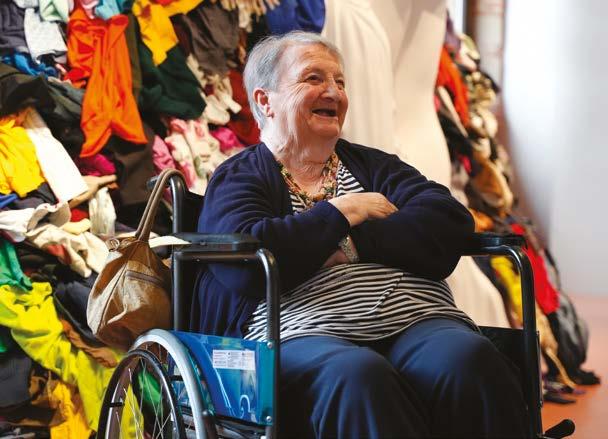
perché calati a operare insieme in un contesto diverso da quello domestico o scolastico. Ognuna di queste attività mette al centro la costruzione autonoma ma condivisa del significato degli oggetti esposti al museo. Si tratta di un risultato importante quando ci si trova di fronte a un’opera d’arte o a un reperto archeologico, perché dimostra che il museo non ostacola ma facilita la nostra capacità di metterci in relazione con ciò che contiene e questo non sempre è possibile. Anche coloro che frequentano molti musei spesso non riescono a costruire una relazione approfondita con quello che vedono per i motivi più svariati: le opere sono troppe, il percorso è lungo, c’è troppa gente, ci sono molte distrazioni, i contenuti sono poco comprensibili, si ha poco tempo. La visita del museo per essere proficua ha bisogno del giusto tempo. Le attività per le scuole di Fondazione Pistoia Musei, per esempio, sono scandite in poche tappe, per dare vita a una relazione piacevole ma profonda con le opere. In base all’età dei partecipanti sono scelti il linguaggio, gli esempi e gli obiettivi. Viene sempre fornito il contesto storico di riferimento ma il significato dell’oggetto si costruisce insieme attraverso un’osservazione di gruppo. Osservando con calma emergono elementi nascosti e inaspettati: nell’arazzo millefiori compaiono creature aliene; della testa del Battista nella scultura di Giovanni Pisano stupisce la quieta normalità di un morto ammazzato; l’Allegoria della Vita Attiva di Giacinto Gemignani diventa la storia di molte studentesse e studenti che cercano di capire come trovare
una strada nel futuro. Portare nel presente il passato significa anche costruire insieme un’idea di cultura che non trovi nei musei il punto di arrivo in forma di display dei meriti di chi ci ha preceduto, ma un punto di partenza per sperimentare il nostro stare nel tempo di oggi, come individui e come membri di una società democratica. Per farlo il museo si mette in dialogo con le comunità in cui è immerso e con queste cambia. Il piacere dell’arte, il progetto per persone con Alzheimer e chi se ne prende cura di Fondazione Pistoia Musei, ha avuto il merito di farci testare in prima persona quale ruolo può assumere un museo nei confronti della collettività partendo da chi rischia di essere marginalizzato. Le necessità specifiche dei gruppi partecipanti a questa iniziativa hanno poi influenzato le modalità e i tempi di lavoro con altre categorie di pubblico, in primis le scuole, e molte altre riflessioni sul nostro lavoro. È successo anche con Fuori Programma, la proposta di PCTO, o alternanza scuola lavoro, per le classi di scuola secondaria di secondo grado di Pistoia e provincia. Dall’entusiasmo e dalle necessità di alcune tra le centinaia di partecipanti degli ultimi due anni di progetto, sta nascendo un nuovo percorso dedicato ai giovani e alle giovani tra i 18 e i 23 anni che desiderano mettersi al servizio dei musei con le loro idee e desideri, per contribuire in quanto membri attivi allo sviluppo culturale del proprio territorio. Noi non vediamo l’ora di iniziare per scoprire insieme a loro quello che succederà. ☜
Le visite ai musei per essere proficue hanno bisogno del giusto tempo e proprio per questo le attività pensate per le scuole da Fondazione Pistoia Musei sono scandite in poche tappe, in modo da dare ai ragazzi la possibilità di stabilire una relazione piacevole e profonda con le opere che stanno ammirando.
It takes the right amount of time for visits to museums to be fruitful, and this is why the activities designed for schools by Pistoia Musei Foundation are articulated into few stages, so that kids can have the opportunity to establish a pleasant and deep relationship with the works they’re admiring.
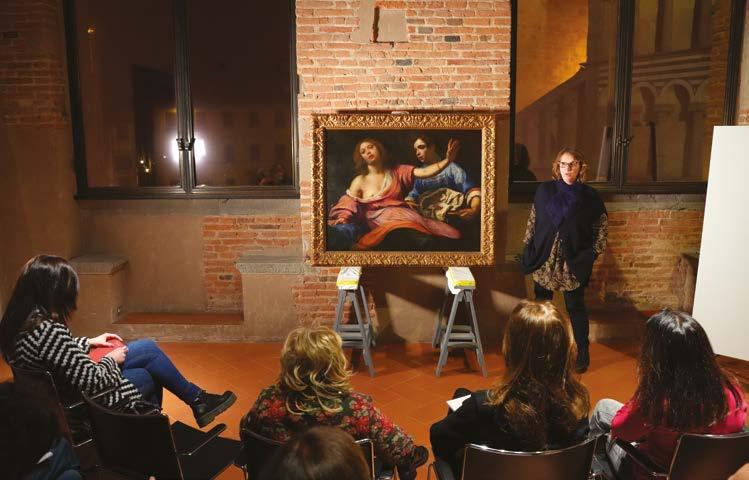
Fondazione Pistoia Musei
— Since 2019, Pistoia Musei has been committed to returning an important artistic and cultural heritage to public enjoyment, putting the communities in the area and the people who visit the city at the center of its action.
Its four headquarters are the Museo dell’Antico Palazzo dei Vescovi, Museo di San Salvatore, Palazzo de’ Rossi | Collezioni del Novecento and Palazzo Buontalenti.. These places host some of the most important collections of art and ancient objects from Pistoia which, through their gradual musealization, are finally visible again. Palazzo Buontalenti, in particular, is the place designed to host the temporary exhibitions of ancient, modern and contemporary art.
The role of museums has deeply changed in the last few decades. By evolving themselves from places of preservation and exhibition to dynamic realities that put education and training for everyone at the centre, museums interpret the needs of today’s society and its complexities. In accordance with this renewed identity, the museum activities are not limited to convey information, but are also aimed at stimulating critical thinking on the past
can be perceived as a form of collective ownership even when it comes from a private collection. To do so we should build a welcoming and inclusive context, which provides enough time and space for a pleasant and engaging experience. With these goals in mind, Pistoia Musei Foundation has recently equipped itself with new spaces, such as Palazzo Buontalenti’s Atelier Rooms, that hosted part of the meetings and laboratories for families, school classes or whoever wishes to meet art also through its practice. These spaces regularly host evening workshops and meetings with artists coming from all over Italy, that everyone can attend regardless of their skills.
The artistic practice proposed in the workshops is an expression of the ways with which senses are experimented within a museum itinerary and how they translate into different forms of knowledge. Standing in front of a painting and talking to other people allows to discover the world that this object wants to convey, to know ourselves as we test our sensitivity and interpretative ability and, finally, know the other people who are with us at the time.
and present, involving the audience and offering diversified experiences that go beyond the mere observation of the exhibited objects, even though directly experiencing the exhibited works remains an essential element. Visiting a museum offers something else than a type of learning mediated by books and representations.
Today, museums are pluralist and their educational activities are based on the different needs of visitors: dialogical tours, laboratories, thematic meetings, interdisciplinary projects and mediumlong term partnerships set the right context to allow everyone to get in touch with art and cultural heritage. These activities set the right context for significant experiences that can survive over time and shift, inch by inch, our perspective of the world. Substantially, they can change and improve our life.
The goal is not only to bring people closer to artworks or testimonies of a past world, but also to promote their deeper and more personal understanding and facilitate dialogue and reflection. In this perspective, museums are structured as a place for active learning, where we can participate in a process of debate and discovery. How can this be made possible by museums?
First of all, we should lower the access threshold to certain contents without trivialising them, so that cultural heritage
That’s what happens in the activities for families proposed by Pistoia Musei Foundation. Adults with children can participate in one of the several visits that end with a practical laboratory, such as Tutto il mondo addosso (The whole world on your shoulders), created in partnership with the artist Zoè Gruni and her son Libero. The free-of-charge Family Kit, available at the entrance of the Collezioni del Novecento in Palazzo de’ Rossi, is also dedicated to families. Thanks to these proposals, parents and sons can discover and discover
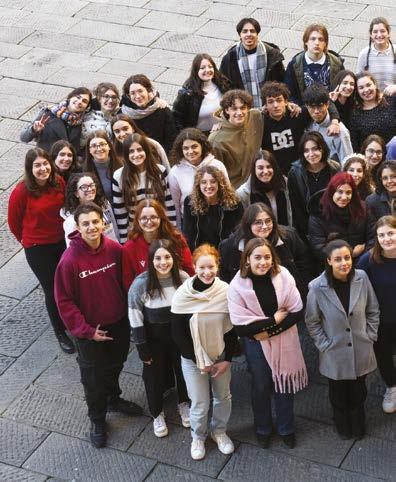
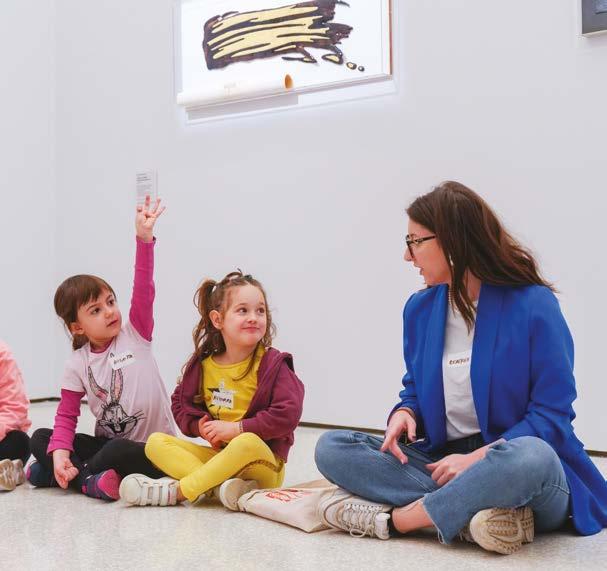
themselves, because they are put to work together in a different context than the domestic or school one. Each of these activities puts at the centre the independent but shared building of the meaning of the objects exhibited in the museum. It’s an important result when you are in front of an artwork or an archaeological find, because it shows that museums do not hinder, but rather facilitate our ability to relate to their contents, which is not always possible. Even those who frequent several museums are often unable to build an in-depth relationship with what they see, for all sorts of reasons: there are too many works being exhibited, the itinerary is too long, there’s too many people, there’s too many distractions, contents aren’t easy to understand, we’re short on time. It takes the right amount of
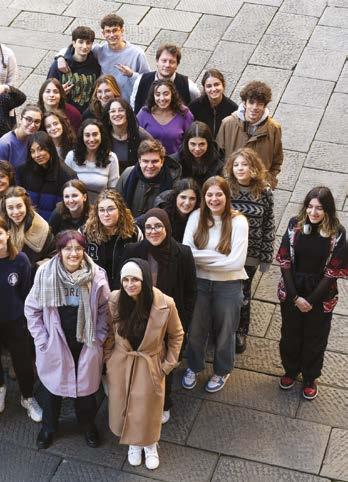
time for the visit to the museum to be profitable. The activities for schools by Fondazione Pistoia Musei, for example, are divided into a few stages, so that a pleasant, but deep relationship with the works can be established. The language, examples and goals are chosen based on participants’ age. The historical context of reference is always provided, but the meaning of the object is built together by means of a group observation. By observing with calm, a few hidden and unexpected elements can emerge: a few alien creatures appear in the millefiori tapestry; the quiet normality of a man killed is what surprises us in the head of St. John the Baptist, from Giovanni Pisano’s sculpture; Giacinto Gemignani’s Allegory of Active Life becomes the story of several students who try to understand how to find their way in the future.
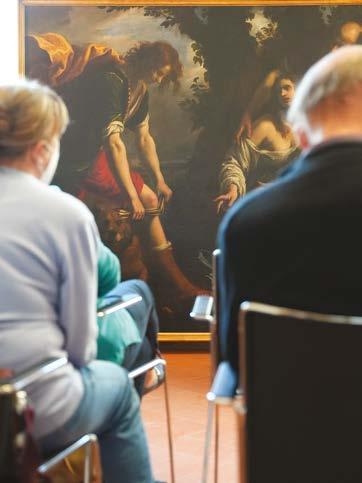
Bringing the past to the present also means building together an idea of culture that doesn’t find in museums the point of arrival, in the form of display, of the merits of those who preceded us, but rather a starting point to experiment our living in today’s time, as individuals and members of a democratic society. To do so, the museum establishes a dialogue with the communities in which it is immersed and changes with them.
Il piacere dell’arte (The pleasure of art), the project for people with Alzheimer’s disease and their caregivers by Fondazione Pistoia Musei, had the merit of letting us test firsthand the role that a museum can play towards the community, starting from those at risk of being marginalized. The specific needs of the groups taking part in this initiative influenced the working times and methods with other audience categories, first of all schools, and several other reflections on our work. It also happened with Fuori Programma, the school-work alternation proposal for secondary schools in Pistoia and its province. A new path is being born from the enthusiasm and needs of some of the hundreds of participants in the last two years of the project; it’s dedicated to young people between 18 and 23 years old who wish to put themselves in the service of museums with their ideas and wishes, to contribute as active members to the cultural development of their territory. We’re looking forward to starting and see what happens along with them. ☜
Fondazione Pistoia Musei si è recentemente dotata di nuovi spazi come gli Atelier di Palazzo Buontalenti, dove si svolgono buona parte degli incontri e delle attività laboratoriali per famiglie e classi scolastiche.
Pistoia Musei Foundation has recently equipped itself with new spaces, such as Palazzo Buontalenti’s Atelier Rooms, that hosts part of the meetings and laboratories for families and school classes.
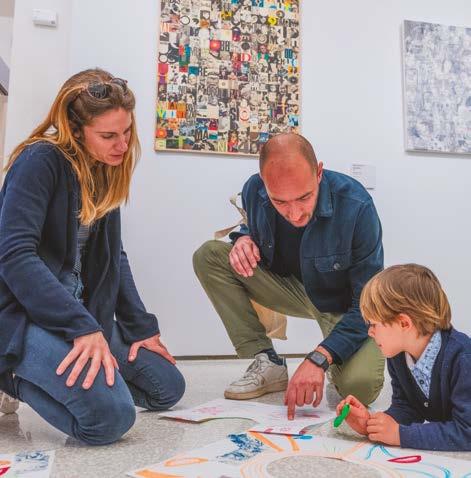
Un progetto innovativo dedicato a imprese e professionisti che, associando la propria identità aziendale a quella di un’istituzione culturale giovane e dinamica, possono lasciare un segno concreto della propria responsabilità sociale attraverso il sostegno all’arte.
Le aziende che ne entrano a far parte diventano non semplici finanziatori di Pistoia Musei ma veri e propri attori protagonisti, con l’obiettivo di costruire collaborazioni virtuose. Oltre a poter beneficiare di molte opportunità di marketing e comunicazione, i rappresentanti delle aziende hanno l’occasione di incontrarsi, fare rete, proporre nuovi progetti, ed entrare in contatto con artisti e figure rappresentative del mondo dell’arte.
Il progetto di Fondazione Pistoia Musei, nato nel 2022, è stato presentato come case history durante l’ultima edizione della fiera Ro.Me Museum Exhibition che si è tenuta lo scorso novembre a Roma. Durante l’incontro si è puntata l’attenzione su come, in poco meno di due anni, un gruppo di undici realtà imprenditoriali abbia scelto di aderire all’iniziativa. A tale proposito commentano Marco Del Pinto e Roberta Fabbri, soci di Del Pinto Associati Studio Legale: “Abbiamo aderito con entusiasmo per amore verso la nostra città, credendo fortemente nel valore delle relazioni.”
Scrive Adamo Ascari, Amministratore Delegato di Conad Nord Ovest: “Pistoia Musei con il suo progetto di partecipazione attiva a sostegno della vita culturale di Pistoia ci dà l’occasione di esprimere al meglio il nostro modo di fare impresa: responsabilità e sostenibilità per valorizzare e far crescere il territorio”.
Allo stesso modo Gino Giuntini, presidente di Consorzio Leonardo Servizi e Lavori, crede che “dovremmo considerare la cultura come un vero e proprio investimento: cultura e lavoro sono strettamente connessi e il vero successo di una comunità si raggiunge quando queste crescono insieme.”
Della Corporate Membership di Pistoia Musei fanno parte: CMSA, Conad Nord Ovest, Confcommercio Pistoia e Prato, Consorzio Leonardo Servizi e Lavori, Del Pinto e Associati Studio Legale, FABO Tape Solution, Florence One, Formitalia, Publiacqua, Tosco Data e Vannucci Piante.
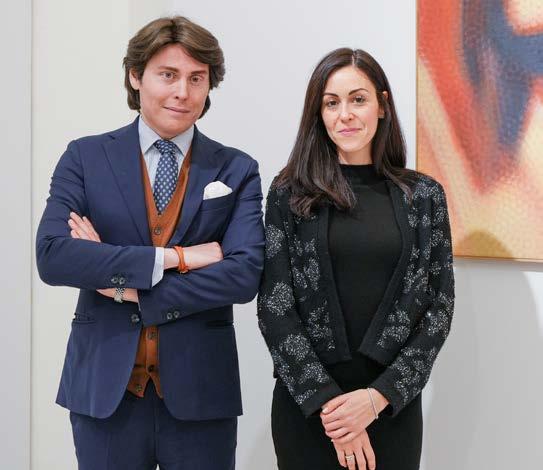


Is an innovative project dedicated to companies and professionals who, by associating their corporate identity to that of a young and dynamic cultural institution, can leave a concrete mark of their social responsibility through supporting art.
The companies that join this project do not just become simple sponsors of Pistoia Musei, but rather actual protagonists who aim at building virtuous relationships. As well as benefitting from several marketing and communication opportunities, company representatives can meet, network, propose new projects and get in touch with artists and representative figures from the world of art.
Pistoia Musei Foundation’s project, born in 2022, was presented as case history during the last edition of Ro.Me Museum Exhibition, that took place last November in Rome. The meeting focused on how, in less than two years, a group of eleven businesses decided to adhere to the initiative. In this regard Marco Del Pinto and Roberto Fabbri, members of Del Pinto Associati Studio Legale, said: “We adhered with enthusiasm, for the love of our city, since we strongly believe in the value of relationships.”
Adamo Ascari, CEO of Conad Nord Ovest, writes: “Pistoia Musei, with its active participation project to support Pistoia’s cultural life, gives us the opportunity to best express our way of doing business: responsibility and sustainability to enhance and help grow our territory”.
Similarly, Gino Giuntini, president of Consorzio Leonardo Servizi e Lavori, thinks that “we should regard culture as an actual investment: there’s a close bond between culture and work and a community is truly successful when they grow together”.
The following businesses are members of Pistoia Musei’s Corporate Membership: CMSA, Conad Nord Ovest, Confcommercio Pistoia e Prato, Consorzio Leonardo Servizi e Lavori, Del Pinto e Associati Studio Legale, FABO Tape Solution, Florence One, Formitalia, Publiacqua, Tosco Data and Vannucci Piante.

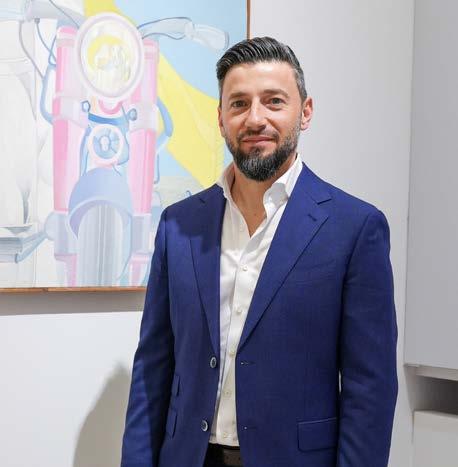
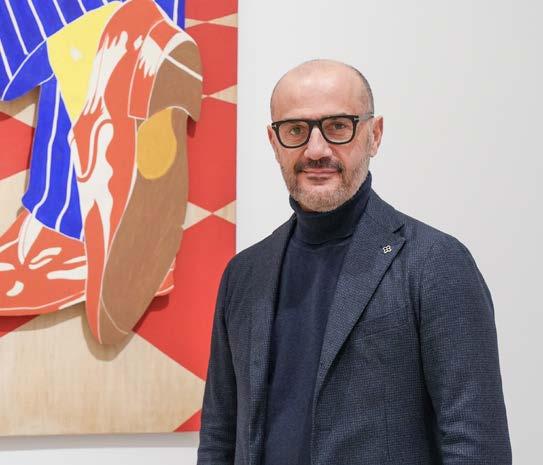
Nella pagina a fianco Marco del Pinto e Roberta Fabbri dello Studio Legale del Pinto e Associati, a fianco Pierluigi Tucci di Tosco Data e a destra il Direttore Generale di Confcommercio Pistoia e Prato Tiziano Tempestini
Below, Marco del Pinto and Roberta Fabbri from Del Pinto & Associati Law Firm; in the next page, on the left, Pierluigi Tucci from Tosco Data and, on the right, the managing director of Confcommercio Pistoia and Prato, Tiziano Tempestini.
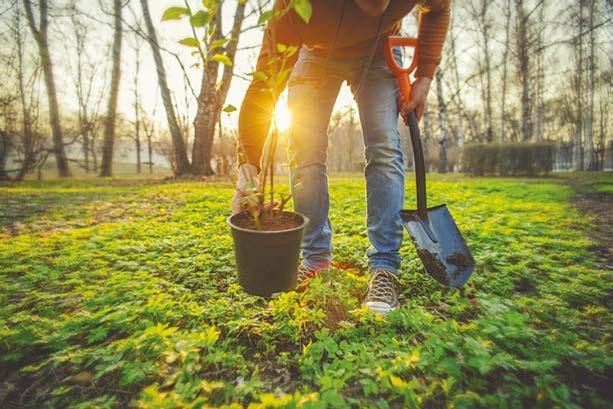
La sostenibilità aziendale è uno degli argomenti più discussi e richiamati a vari livelli. Ma cosa è? Proviamo a fare chiarezza.
La sostenibilità rappresenta un valore interconnesso tra produttività, efficienza e redditività di un’azienda. Come punto di partenza dobbiamo partire dall’Agenda 2030 per lo Sviluppo Sostenibile, un programma d’azione per le persone, il pianeta e la prosperità sottoscritto nel settembre 2015 dai governi dei 193 Paesi membri dell’ONU. In essa ritroviamo 17 Obiettivi per lo Sviluppo Sostenibile – Sustainable Development Goals, SDGs –suddivisi in un grande programma d’azione per un totale di 169 “goal” o traguardi. Per noi europei bisogna aggiungere il Green Deal (o Patto verde europeo), insieme di iniziative politiche proposte dalla Commissione europea con l’obiettivo generale di raggiungere la neutralità climatica in Europa entro il 2050.
Da qui la necessità di tradurre questi nuovi obiettivi condivisi politicamente in standard definiti e universalmente riconosciuti, individuando criteri di misurazione e di standard delle attività per garantire il raggiungimento di obiettivi legati all’impatto ambientale, sociale, legati anche alla qualità e all’etica nella governance delle imprese. Si tratta di criteri che sono utilizzati da dipendenti, fornitori, cittadini, istituzioni, investitori, analisti finanziari, banche e assicurazioni per conoscere l’impegno e i risultati relativi alla sostenibilità di una organizzazione e alla sua esposizione ai rischi.
All’interno del Bilancio di Sostenibilità l’azienda racconta e descrive le performance ESG (acronimo dei tre pilastri Environmental-ambiente, Socialsocietà e Governance-economica) e delle eventuali azioni o strategie migliorative adottate a favore dell’ambiente, della società, ma anche per una gestione interna più consapevole.
Ecco che riusciamo ad arrivate ad i tre criteri o pilastri ESG, (acronimo di Environmental, Social, Governance), grazie ai quali soggetti terzi ed esterni all’azienda permettono di avere una visione completa della capacità delle imprese di generare nuovo valore.
Schematizzando (per necessità di spazio, ndr), la Sostenibilità aziendale è attuare i criteri ESG e, allo stesso tempo, saper dimostrare di essere un’azienda sostenibile o che sta mettendo in pratica strategie per arrivare alla sostenibilità. Tale traguardo lo si attua e lo si comunica con lo strumento operativo chiamato REPORT ESG o BILANCIO DI SOSTENIBILITA’.
Il Bilancio di Sostenibilità è quindi un documento di rendicontazione e comunicazione trasparente e chiaro, che deve raccogliere i dati riferiti alle performance aziendali sugli impatti ambientali, sociali e governance (ESG) e raccontarli, sia all’interno sia all’esterno dell’impresa. Deve essere obiettivo e, allo stesso tempo, avere appeal. Non solo numeri dunque, ma utilizzando anche illustrazioni, foto, immagini e con l’ausilio di infografiche. Il modello più diffuso a livello internazionale per redigere il bilancio di sostenibilità è quello del Global Reporting Iniziative (GRI). Si tratta di una lista di indicatori, divisi per ambito, che raccontano e presentano l’azienda da più punti, quali economico, ambientale e sociale. Allo stesso tempo forniscono informazioni dell’azienda stessa, come per esempio sulla governance, sulle caratteristiche dei dipendenti (genere, età, inquadramento…), sulla sicurezza e la salubrità dell’ambiente lavorativo, sul codice etico adottato e altri aspetti che permettono all’organizzazione di farsi conoscere sotto ogni punto di vista e trasferire il valore all’esterno.
Un’impresa sostenibile ha una visione lungimirante e rispettosa dei tre fattore ESG. Per l’Ambiente (Environmental) si impegna a diminuire l’impatto sull’ambiente stesso riducendo le emissioni inquinanti, utilizzare energie rinnovabili, contenere il consumo delle risorse naturali come acqua (pensiamo alla precision farming), smaltire attentamente i rifiuti, adottare soluzioni di economia circolare.
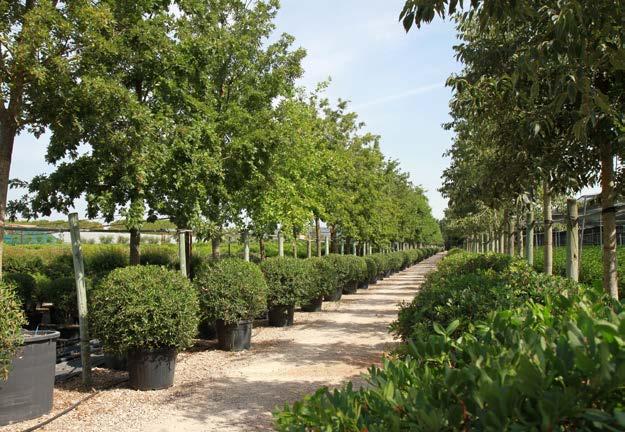
Per la Sostenibilità sociale (Social) adottando misure per garantire la sicurezza sul lavoro, i diritti dei lavoratori, l’uguaglianza e la giustizia sociale ed il benessere e l’inclusione delle persone che lavorano all’interno dell’azienda. Per la Sostenibilità Economica (Governance) con investimenti in innovazione, tecnologia, digitalizzazione e ricerca, paga adeguatamente il personale ed i fornitori, ha una politica di prezzi equa, privilegia materie prime certificate e del territorio, contribuisce allo sviluppo dell’economia locale, realizza prodotti e servizi utili e in grado di migliorare la vita dei consumatori.
Il Bilancio di Sostenibilità sarà obbligatorio a partire dal 1° gennaio 2026 (riguarderà tutte le aziende con più di 250 dipendenti, un fatturato superiore ai 50 milioni di euro) e rappresenta un’opportunità con vantaggi interni che si riflettono in una migliore organizzazione e gestione di processi interni alla azienda, ma anche vantaggi esterni che si traducono in una migliore visibilità, e maggiore affidabilità per gli interlocutori esterni, ad oggi, solo società quotate ed enti pubblici.
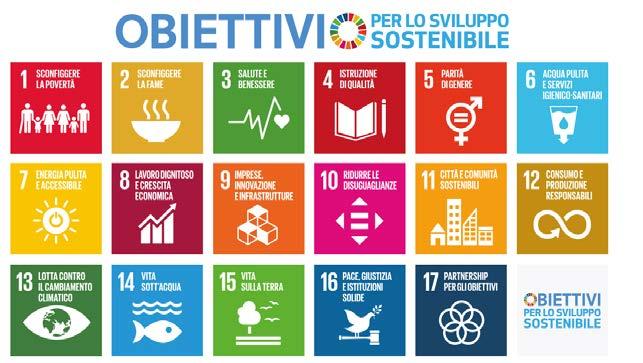
La naturale conseguenza di questa decisione – intrapresa dalla Commissione Europea già nel 2021 con la direttiva CSRD (Corporate Sustainability Reporting Directive) – comporterà inevitabilmente un aumento esponenziale del numero di aziende italiane impegnate nella stesura di report di sostenibilità.
Investire nella Sostenibilità offre anche una serie di vantaggi alle aziende.
Oltre a ridurre l’impatto ambientale e sociale delle proprie attività in aiuta a rendere più efficienti i processi decisionali delle organizzazioni riducendo i rischi
Scopri il nostro ultimo progetto

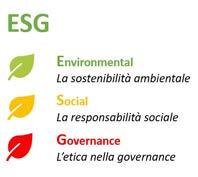
lungo tutta la catena di fornitura e di ridurre gli sprechi nel processo, il che porta a enormi risparmi sui costi operativi attraverso l’efficienza energetica e la riduzione degli sprechi. Significa anche aver accesso e maggior successo in ambito di finanza agevolata (finanziamenti pubblici agevolati, misure PNRR, finanziamenti dedicati) e ad avere una maggiore probabilità di ottenere investimenti privati. Ogni azienda, indipendentemente dalla dimensione, può dimostrare di attuare strategie ESG, generando così enorme valore aggiunto per tutti.
L’ambizioso progetto mira a valorizzare le piante verdi o fiorite caratterizzate da un elevato standard qualitativo e prodotte con processi di agricoltura sostenibile volti al raggiungimento dei goal dell’Agenda 2030 per lo Sviluppo Sostenibile e affrontare le sfide globali più urgenti nella lotta al cambiamento climatico. https://www.negoziovicino.it/sostenibilita/vivai-italiani/
Partener aziendale per ecosistemi digitali di ultima generazione e consulenza in ambito ESG – Bilancio di Sostenibilità.
Diventa sostenibile, crea valore, migliora le tue performance aziendali con le nostre strategie ESG
BILANCIO – REPORT DI SOSTENIBILITA’ - ESG
PIANO DI SOSTENIBILITÀ
RATING DI SOSTENIBILITÀ
QUESTIONARI ESG
AFFIANCAMENTO SOCIETÀ BENEFIT
RELAZIONE D’IMPATTO
I nostri uffici
Via Ascoli, 4 - 56017 Ghezzano – San Giuliano Terme (Pisa) Tel. 050 879960 – info@sharek.it

Per scoprire tutte le informazioni e approfondimenti ti invitiamo a scansionare il QR ncode qui riportato.

Fondazione Giorgio Tesi
— Nata con l’intento di ricordare Giorgio, Franco e Tullio Tesi, la Fondazione, seguendo i loro insegnamenti, da quindici anni è sempre presente, guardando con attenzione alle necessità della comunità.
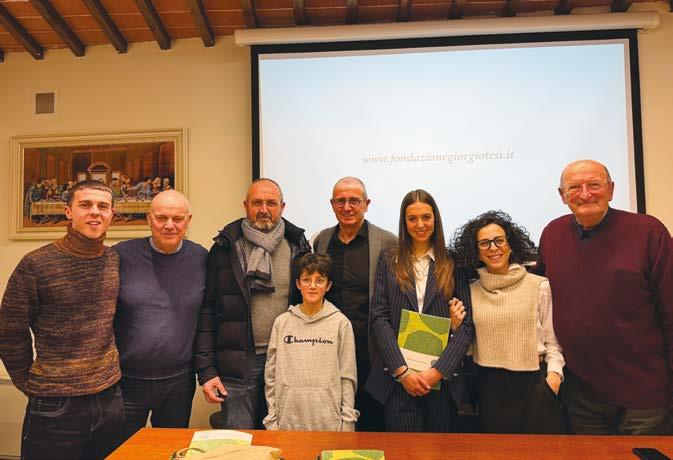
Sembra ieri, ma oramai siamo al quindicesimo anno dalla nascita della nostra Fondazione. Ne sono già passati cinque dall’ultimo resoconto delle sue attività, che era stato realizzato per festeggiare il suo decimo “compleanno”. In questo breve periodo abbiamo visto situazioni e vissuto esperienze di ogni tipo: la pandemia, guerre sempre più vicine, siccità, calamità naturali quali alluvioni e terremoti, violenze sconvolgenti nei confronti soprattutto delle donne e dei più piccoli. Le difficoltà e i problemi aumentano giorno dopo giorno e sono sempre di più le persone che, come dice Papa Francesco, spesso «sono nella periferia del nostro cuore» e che necessitano di aiuto.
Questa piccola raccolta nasce appunto con l’intento di ricordare le iniziative che, nel suo piccolo, la Fondazione ha portato avanti nel corso dell’ultimo complicato quinquennio, dando conto dei progetti sostenuti o realizzati per cercare di offrire un sorriso, un momento di sollievo, di conforto e di speranza a tutti coloro che ne hanno più bisogno e, dunque, soprattutto ai bambini, agli anziani, ai malati e alle famiglie o ai singoli che vivono in condizioni disagevoli.
Ripercorrendo con la memoria la strada che abbiamo fatto in questi quindici anni e, in particolare, negli ultimi cinque, mi rendo conto che la Fondazione, nata in ricordo dello zio Giorgio, di nostro padre Tullio e di nostro cugino Franco, che durante la loro vita sono stati sempre vicini ai più deboli e agli emarginati, ci aiuta a tener vivo ogni giorno il loro esempio di dedizione al prossimo e il loro insegnamento d’amore. Sono felice che il loro messaggio sia ancora forte e ben radicato nella nostra famiglia e che siamo riusciti a trasmetterlo anche ai nostri figli, che proprio in questi anni hanno iniziato a far parte della Fondazione, dedicandosi a comprendere i meccanismi di azione che la regolano e approvandone gli intenti. Se recente è l’ingresso di Marco, Francesca e Sara, invece, sono già entrate da un po’ di tempo, hanno imparato a muoversi in autonomia e già adesso ricoprono ruoli di sempre maggiore responsabilità. Sicuramente rappresenta per noi una grande soddisfazione aver potuto sostenere, attraverso
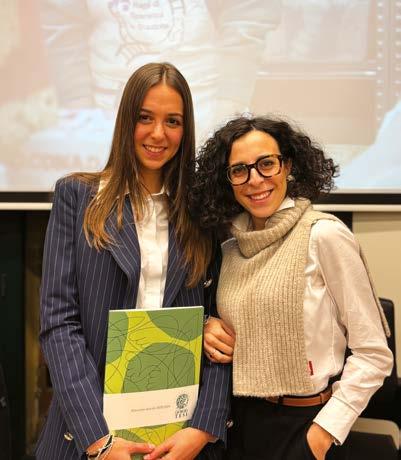
contributi in denaro o mediante donazioni di piante, tante realtà precarie e problematiche, dando l’assoluta precedenza a quelle presenti sul nostro territorio e collaborando con associazioni ed enti che si prendono cura di queste ultime, ma anche portando avanti tante altre iniziative volte
Le difficoltà e i problemi aumentano giorno dopo giorno e sono sempre di più le persone che, come dice Papa Francesco, spesso «sono nella periferia del nostro cuore» e che necessitano di aiuto.
a dare una mano a chi, in modi diversi, è in difficoltà. Siamo onorati della fiducia che è stata riposta nel nostro lavoro da parte di tutti quelli che si sono rivolti a noi per avere un sostegno e siamo dispiaciuti di non aver potuto rispondere positivamente ad ogni necessità. Le richieste sono state davvero moltissime in questi anni e, consapevoli che fossero tutte meritevoli, abbiamo fatto del nostro meglio per utilizzare le risorse disponibili e per individuare le situazioni più bisognose di aiuto, andando spesso a verificare direttamente chi fossero i beneficiari e le loro urgenze.
A sinistra la foto della Famiglia Tesi con Carlo Vezzosi, per quindici anni Presidente del Comitato d’indirizzo Fondazione Giorgio Tesi. Sopra Sara e Francesca Tesi, rispettivamente nuove vicepresidente e presidente del comitato.
Left is a photo of the Tesi Family with Carlo Vezzosi, for 15 years chairman of the Giorgio Tesi Foundation Steering Committee. Above Sara and Francesca Tesi, new vice chair and chair of the committee, respectively.
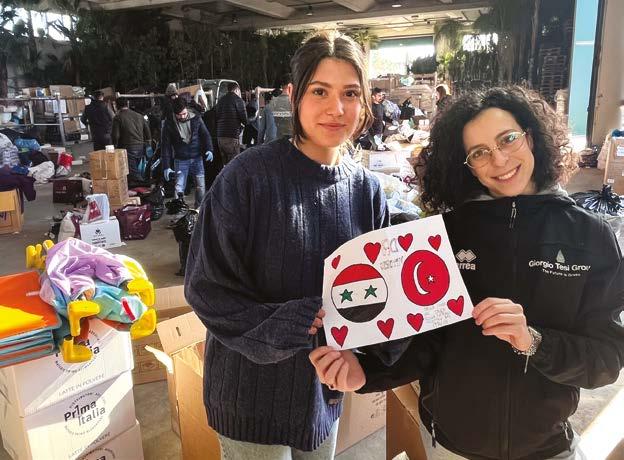
Sopra, Francesca Tesi e una volontaria durante la raccolta per il terremoto in Turchia.
Accanto, Fabrizio Tesi e Carlo Vezzosi con Maria Scarpellino Renzi dell’Associazione Raggi di Speranza in Stazione O.D.V.
Ritengo fondamentale e doveroso ringraziare tutte le persone che hanno reso possibile l’operosità della Fondazione e, in primis, il Professor Carlo Vezzosi, il quale, in qualità di Presidente del Comitato d’Indirizzo, fin dal primo momento ha coordinato le attività e si è speso per la loro realizzazione. Insieme a lui ringrazio i membri del Consiglio di Amministrazione e del Comitato d’Indirizzo, preziosi e scrupolosi consiglieri che sono stati essenziali per la selezione delle richieste da soddisfare. Un sentito ringraziamento va anche a tutti i dipendenti, gli impiegati, i collaboratori e i responsabili dei diversi settori della Giorgio Tesi Group, che condividono con la nostra famiglia i principi e i propositi che animano la
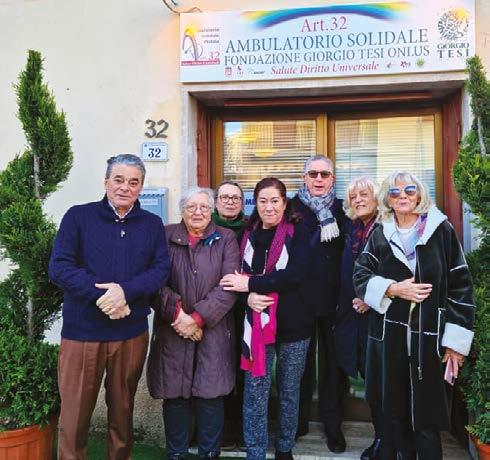
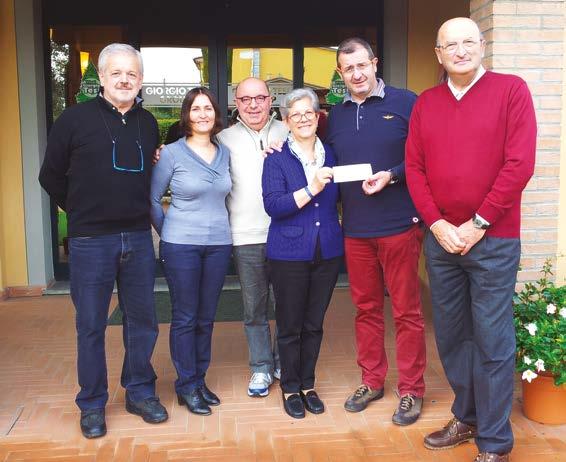
Fondazione: il loro lavoro è stato spesso indispensabile per portare avanti i nostri progetti. Infine, grazie a tutti gli amici, i professionisti, le aziende e i nostri fornitori che in differenti modi hanno preso parte, cooperato e contribuito alle iniziative della Fondazione attraverso offerte in denaro o spendendosi in prima persona. Un altro aspetto che credo importante sottolineare è rappresentato dal fatto che legate non tanto al business aziendale quanto piuttosto all’ideologia che ha fatto nascere la Fondazione e, conseguentemente, al sociale sono anche altre iniziative e altri progetti del nostro gruppo relativi allo sport (sia a quello professionistico sia, in particolare a quello giovanile, con le dieci società facenti parte della Giorgio Tesi Junior), all’arte e alla cultura (si pensi alla rivista Naturart e ai libri della collana ‘Avvicinatevi alla bellezza’), all’assoluta volontà di vicinanza e disponibilità verso le istituzioni e nei confronti dell’amministrazione di Pistoia e, in generale, alla promozione della nostra provincia nel mondo. Pertanto, non posso che concludere sottolineando quanto questa nostra piccola Fondazione costituisca per noi un motivo di grande orgoglio e di immensa soddisfazione. Siamo profondamente convinti, infatti, che fare del bene aiuta a stare bene e che questa nostra certezza si ripercuote positivamente sulle nostre famiglie e su tutte le attività della Giorgio Tesi Group. ☜
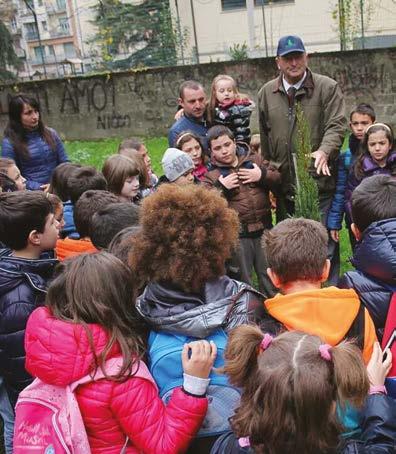

— Established with the intention of remembering Giorgio, Franco and Tullio Tesi, the Foundation, following their teachings, has been ever-present for the past 15 years, looking carefully at the needs of the community.
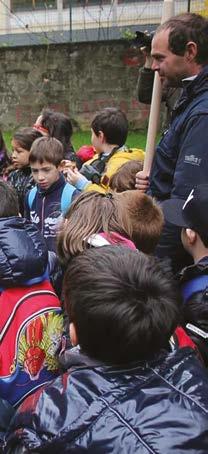
Is like yesterday, but we’ve now reached fifteen years since the birth of our Foundation. It’s been already five years since the last report of its activities, that we had drafted to celebrate its tenth “birthday”. In this short period we saw any kind of situations and experienced any kind of experiences: a pandemic, wars which are closer and closer to us, droughts, natural disasters such as floods and earthquakes, upsetting violence towards women and kids. Difficulties and problems are increasing day after day and there are more and more people who, as Pope Francis said, “inhabit the outskirts of our heart” and need help. In fact, this small collection was born with the aim of recalling the initiatives that, in its small, the Foundation has been carrying out during the last, complicated five-year period, and informing about the projects conducted or completed to try and offer a smile, a moment of relief, consolation and hope to those who most need it and, therefore, particularly to children, elder people, sick people and families or individuals who live in uncomfortable conditions.
If I go back with memory to the path we’ve been following in these fifteen years and, in particular, in the last five years, I realise that the Foundation, which was born to commemorate our uncle Giorgio, our father Tullio and our cousin Franco, who were always close to the weakest and most marginalised throughout their life, helps us every day to keep alive their example of devotion to the others and lesson of love. I’m happy that their message is still strong and well-rooted within our family and that we were able to convey it also to our sons, who just in these last few years have started to be part of the Foundation and have devoted themselves to try and understand the mechanisms of action that regulate it and to approve its goals. Marco
has recently joined the Foundation, whereas Francesca and Sara have already joined it for some time, have learned to operate independently and are now taking greater and greater responsibility. We’re definitely happy about having been able to support, through cash contribution or donations of plants, several precarious and problematic realities.
We gave absolute priority to those which are present in our territory and cooperated with associations and bodies which take care of such realities, but we also carried out several other initiatives aimed at helping those who, in different ways, are in trouble. We’re honoured for the trust that has been given to our work by all those who turned to us to receive some support, and we’re sorry that we weren’t able to positively respond to all needs. We received so many requests in the last few years and, while we were aware that all of them deserved some attention, we did our best to use the available resources and try and identify the situations that required most help; often, we directly verified who were the recipients and which were their needs.
I find it essential and dutiful to thank all people who enabled the Foundation’s activities and, in primis, Professor Carlo Vezzosi who, in his capacity of President of the Strategy Committee, has been coordinating the activities since the very first moment and has been committing to complete them. Along with him, I want to thank the members of the Advisory Board and the Strategy Committee, precious and meticulous advisors who were essential for the selection of the requests to be met.
I also want to thank all the employees, workers, partners and people in charge of the different sectors of Giorgio Tesi Group, who share the principles and goals that animate the Foundation with our family: their work has often been essential to carry out our projects.
Le attività svolte dal 2019 al 2024. sono state raccolte in un volume – con la copertina realizzata dall’artista pistoiese Jonathan Calugi - presentato il 12 dicembre scorso presso la sede dalla Fondazione Giorgio Tesi E.T.S.
The activities carried out from 2019 to 2024 were collected in a volume – with the cover page by the Pistoiese artist Jonathan Calugi – presented on 12 December at Giorgio Tesi E.T.S. Foundation’s headquarters.
Finally, I want to thank all friends, professionals, companies and our suppliers who, in different ways, participated in, cooperated and contributed to the Foundation’s initiatives through cash contributions or personal support.
Another aspect that, in my opinion, should be highlighted is the fact that there are several other initiatives and projects which aren’t so much linked to the company business, but rather to the ideology that gave birth to the Foundation and, subsequently, to the social aspect. Such initiatives and projects are related to sports (professional and, in particular, youth sports, with the ten companies that belong to Giorgio Tesi Junior), art and culture (just think of the magazine Naturart and the books from the series “Avvicinatevi alla bellezza”), and the absolute need to approach and be available for the institutions and the administration of Pistoia and, in general, to promote our province in the world. Therefore, I can only conclude by highlighting how our small Foundation represents a point of pride and huge satisfaction for us. In fact, we are deeply convinced that doing good makes us feel better and this belief has a positive impact on our families and all the activities of Giorgio Tesi Group. ☜
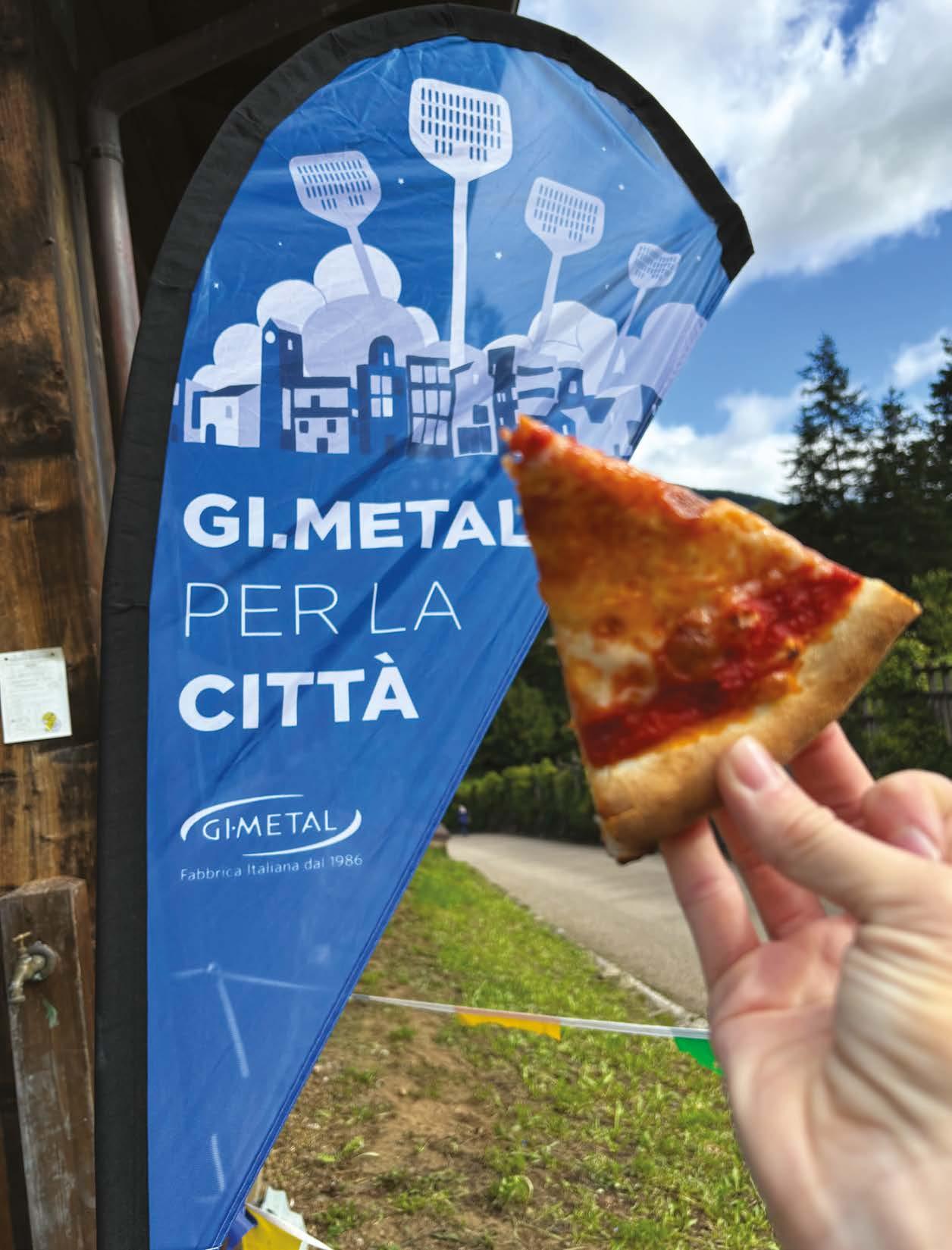
Gi.Metal, con oltre 30 anni di esperienza nella produzione di strumenti professionali per pizzerie, non è solo un leader del settore, ma anche un attore attivo nella comunità di Pistoia. L’azienda, radicata profondamente nel territorio, si impegna a supportare iniziative locali che promuovono il benessere della comunità. Dall’ Open Day presso Dynamo Camp , fino alla partecipazione ad “Un altro parco in città” , Gi.Metal continua a dimostrare come l’impegno verso la città e le sue persone possa fare una differenza concreta, integrando valori sociali e cultura con la propria tradizione di innovazione e qualità.
Il 5 e 6 ottobre Gi.Metal ha partecipato all’Open Day a Dynamo Camp a Limestre, collaborando con la Scuola Italiana Pizzaioli, che ha fornito pizzaioli professionisti per l’evento. Durante questa occasione, l’azienda ha gestito la pizzeria del Camp, sfornando 800 pizze per i numerosi visitatori, volontari e sostenitori
L’iniziativa ha confermato l’impegno di Gi.Metal nel supportare eventi che promuovono cause sociali e benefiche. In precedenza, dal 13 al 15 Settembre, Gi.Metal ha preso parte all’evento “Un altro parco in città” a Pistoia , dove, in collaborazione con l’Osteria I Fratelli, ha organizzato un laboratorio per
piccoli pizzaioli. Ai bambini è stato insegnato a creare il panetto per la pizza perfetto, eseguendo tutto il processo di lavorazione dell’impasto. L’attività, realizzata con l’utilizzo degli strumenti Gi.Metal, ha permesso ai partecipanti di vivere un’esperienza divertente e educativa.
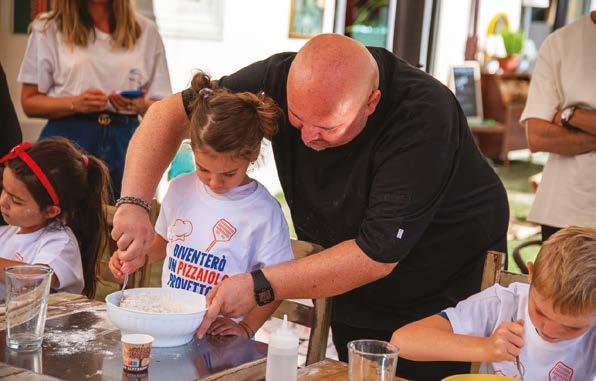
Gi.Metal, with over 30 years of experience in the production of professional utensils for pizza, is not only an industry leader, but also an active stakeholder within the community of Pistoia. The company, deeply rooted in the territory, commits to support local initiatives that promote the wellbeing of the community. From the Open Day at Dynamo Camp to the participation in “Another Park in the City”, Gi. Metal continues to show how the commitment towards the city and its people can make a concrete difference, by integrating social values and culture with its own tradition of innovation and quality.
On October 5 and 6, Gi. Metal attended the Open Day at Dynamo Camp in Limestre, in partnership with the Italian School of Pizza Makers, that provided
professional pizza makers for the event. On this occasion, the company managed the Camp’s pizzeria, where it took out of the oven 800 pizzas for the several visitors, volunteers and supporters. The initiative confirmed Gi.Metal’s commitment to support events that promote social and charitable initiatives.
Previously, from 13 to 15 September, Gi. Metal attended the event “Another Park in the City” in Pistoia where, in partnership with Osteria I Fratelli, it organized a laboratory for little pizza makers. Children were taught how to create the perfect pizza pat and to carry out the whole dough-kneading process. The activity, carried out by using the Gi.Metal tools, allowed participants to live a funny and educational activity.
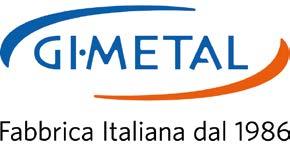
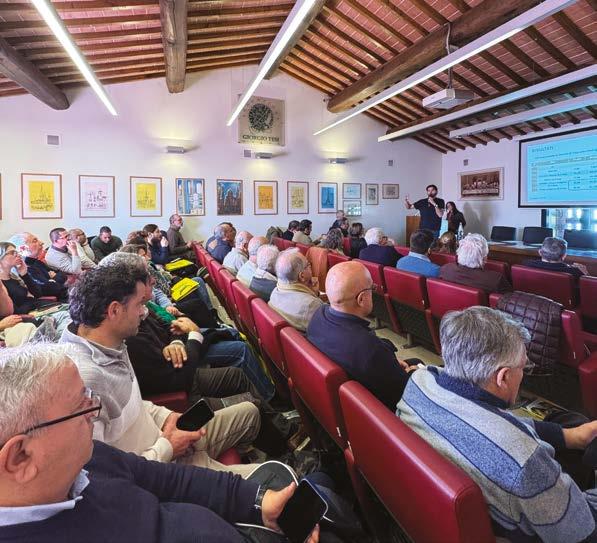
Convegno
Lo scorso 5 dicembre, presso la sede di Giorgio Tesi Group, si è tenuto il convegno dove i relatori sono stati 12, suddivisi tra docenti di università, ricercatori di altri enti e tecnici di aziende produttrici di mezzi tecnici per la difesa e la nutrizione delle piante.
Nel convegno sono stati toccati diversi punti di interesse generale riportati nella coltivazione di piante e nella gestione di esse nel paesaggio. I cambiamenti climatici e le strategie di contrasto, la difesa delle piante ornamentali, l’utilizzo di biostimolanti e l’economia circolare sono solo alcuni dei temi trattati di fronte a una numerosa platea composta da tecnici, vivaisti e addetti ai lavori. Quattro le relazioni proposte dal mondo accademico. Cecilia Brunetti (CNR-PSP di Firenze) ha presentato un progetto volto alla valorizzazione degli scarti verdi per produrne biostimolanti e bioinsetticidi; la professoressa Barbara De Lucia (Università di Bari) ha illustrato il progetto di riqualificazione urbana “Agritech 7.1.4: Living Labs diffusi”; il professor Marco Devecchi dell’ateneo di Torino ha esplorato alcune esperienze agronomiche nella gestione del verde urbano. Elisa Pallai, invece, ha evidenziato i risultati di alcuni testi di
copertura del suolo con piante erbacee in un vivaio pistoiese. Molto apprezzate anche le relazioni delle aziende produttrici di mezzi tecnici per la coltivazione delle piante. Sono stati toccati numerosi punti di sicura presa: l’utilizzo di fertilizzanti innovativi, la difesa con insetti antagonisti, la razionalizzazione dell’utilizzo di agrofarmaci e un vaso prodotto con gli scarti del Tetrapak. Sono intervenuti anche Luca Santini, presidente di Federparchi e Andrea Cassone dell’“Associazione Italiana Architettura del Paesaggio”. Tutti gli interventi hanno avuto un punto di condivisione: la coltivazione e la gestione delle piante in ambienti urbani e naturali avranno sempre più bisogno di essere sostenibili, razionalizzando le risorse disponibili alla luce dei cambiamenti climatici sempre più pressanti. Il convegno è stato organizzato dal magazine on-line Aboutplants.eu
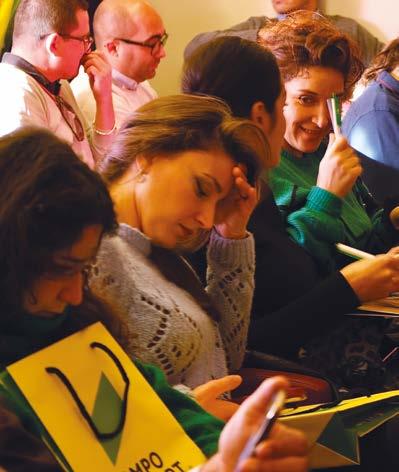
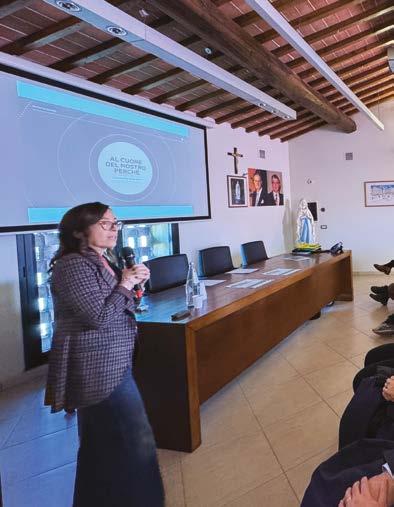
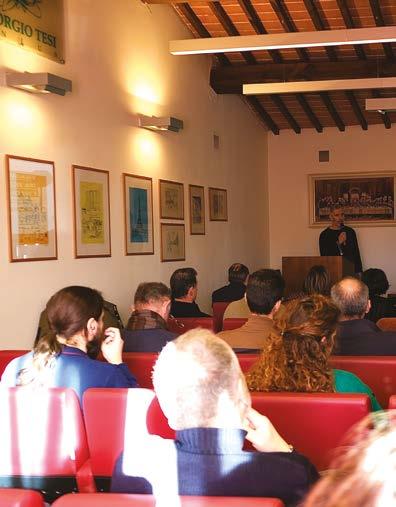
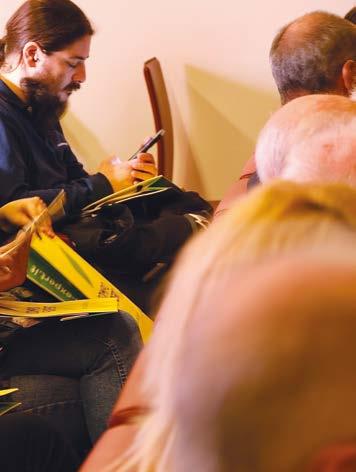
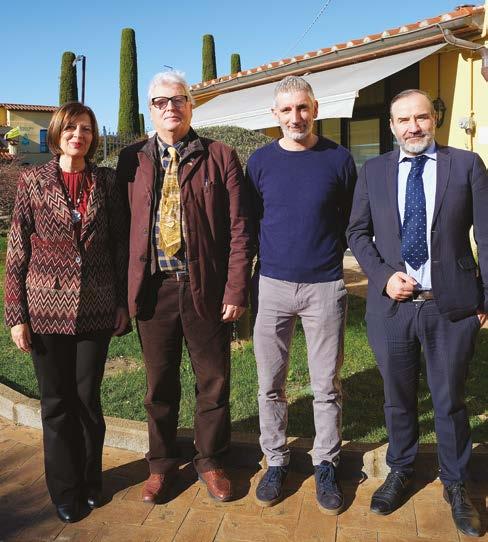
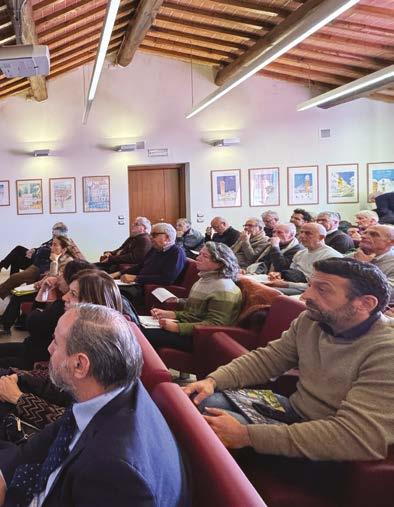

Alcune immagini scattate durante il convegno e nell’immagine accanto, da sinistra Barbara De Lucia (Università di Bari), Renato Ferretti, Emanuele Begliomini e Marco Devecchi (Università di Torino).
A few photographs taken during the conference and, in the next image, from left to right, Barbara De Lucia (University of Bari), Renato Ferretti, Emanuele Begliomini and Marco Devecchi (University of Turin).
On 5 December, a conference was held at Giorgio Tesi Vivai’s headquarters with 12 speakers, split between university teachers, researchers from other bodies and technicians from companies that produce technical tools for plant defense and nutrition.
Several points of general interest, regarding the cultivation of plants and their management within the landscape, were covered during the conference: climate change and the strategies to counteract it, protection of ornamental plants, use of biostimulants and circular economy are only some of the themes covered in front of a wide audience, made up of technicians, nursery owners and authorized staff members. Four reports came from the academic world: Cecilia Brunetti (CNR-Institute for Sustainable Plant Protections of Florence) presented a project aimed at enhancing green waste to produce biostimulants and bioinsecticides; professor Barbara De Lucia (University of Bari) described the urban requalification project “Agritech 7.1.4: Living Labs diffusi”; professor Marco Devecchi, from the University of Turin, explored a few agronomic experiences for the management of urban green.
Elisa Pallai, instead, highlighted the results of a few soil coverage tests with herbaceous plants in a Pistoiese nursery. Also the reports by manufacturers of technical tools for plant cultivation were highly appreciated. Several points with a grip on the audience were covered: use of innovative fertilizers, protection with antagonist insects, rationalization of the use of agrochemicals and a pot manufactured with Tetra Pak waste. Also Luca Santini, president of Federparchi and Andrea Cassone, from the “Italian Association of Landscape Architects”, joined the debate. All the interventions had a shared point: the cultivation and management of plants in urban and natural environments will need to be more and more sustainable, and the available resources should be rationalized in light of the increasingly pressing climate change. The conference was organized by the online magazine Aboutplants.eu
Attività di promozione
Efficientamento, ammodernamento e innovazione nel vivaismo nazionale” candidata al finanziamento del V Avviso MASAF n. 0182458 del 22/04/2022 e s.m. per la selezione dei Contratti di filiera e di distretto di cui al DM n. 0673777 del 22/12/2021
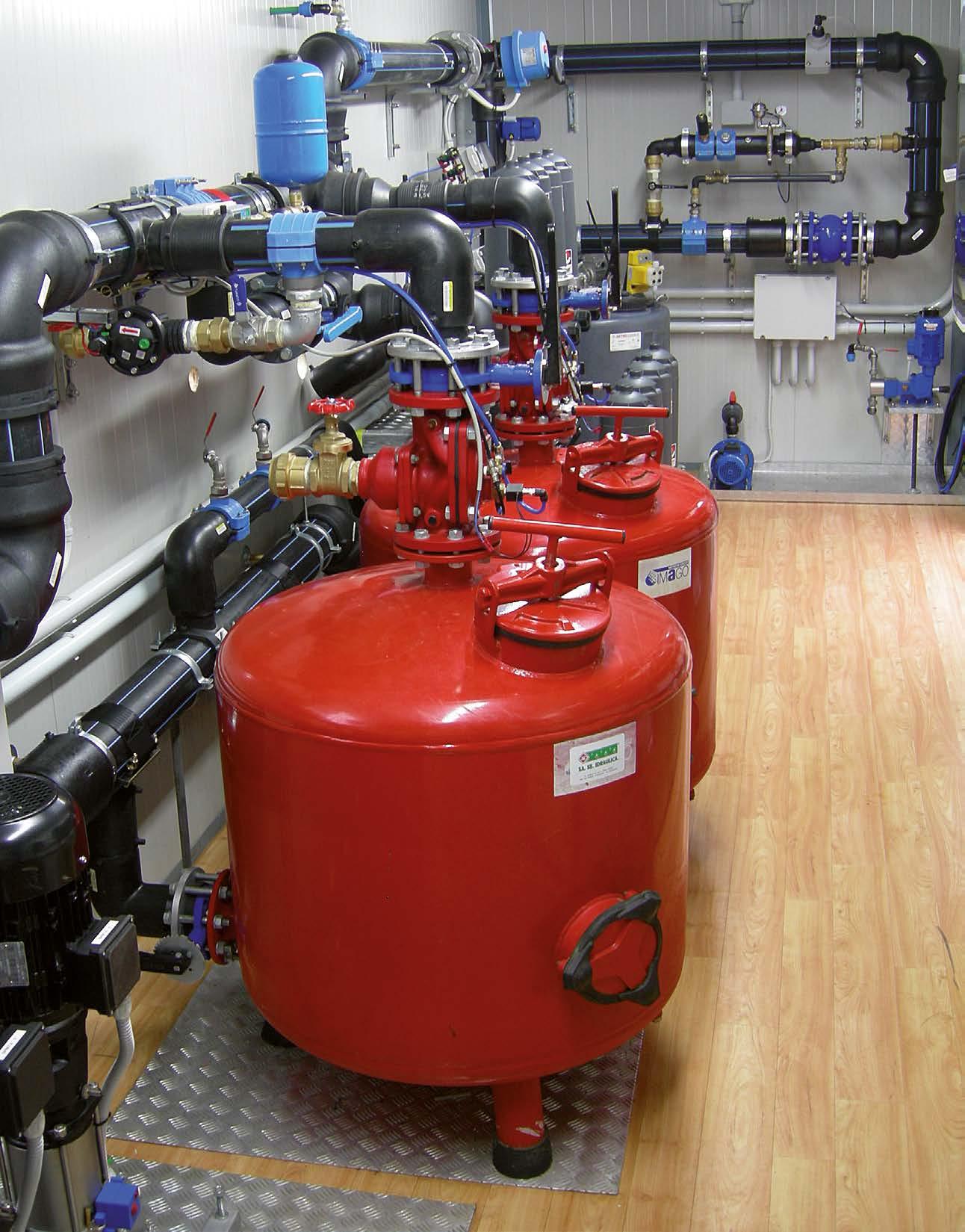

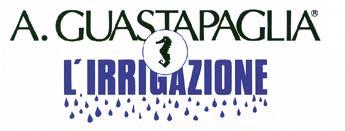

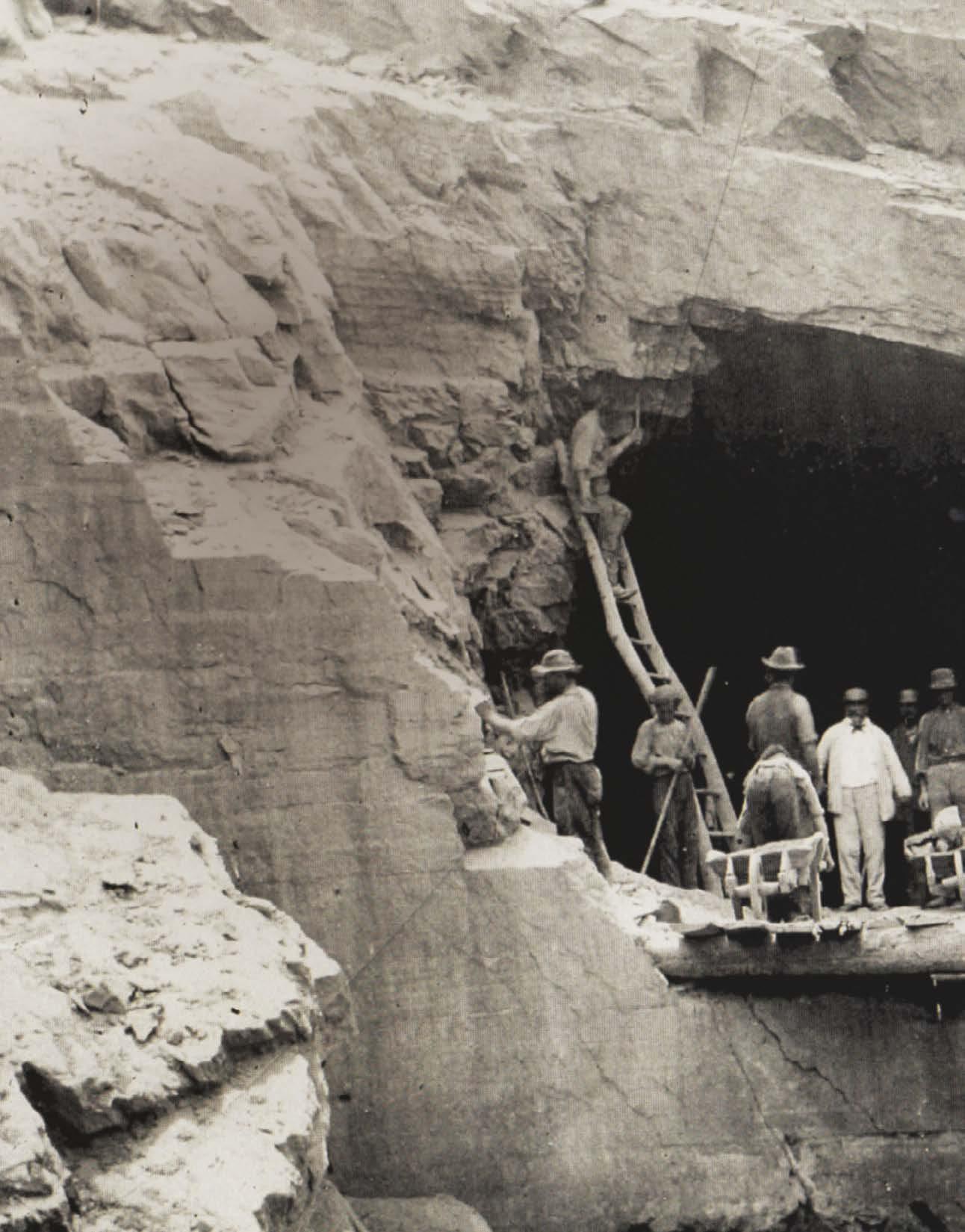
Ferrovia Porrettana
— Nuove conoscenze e nuove proposte per la valorizzazione del suo patrimonio
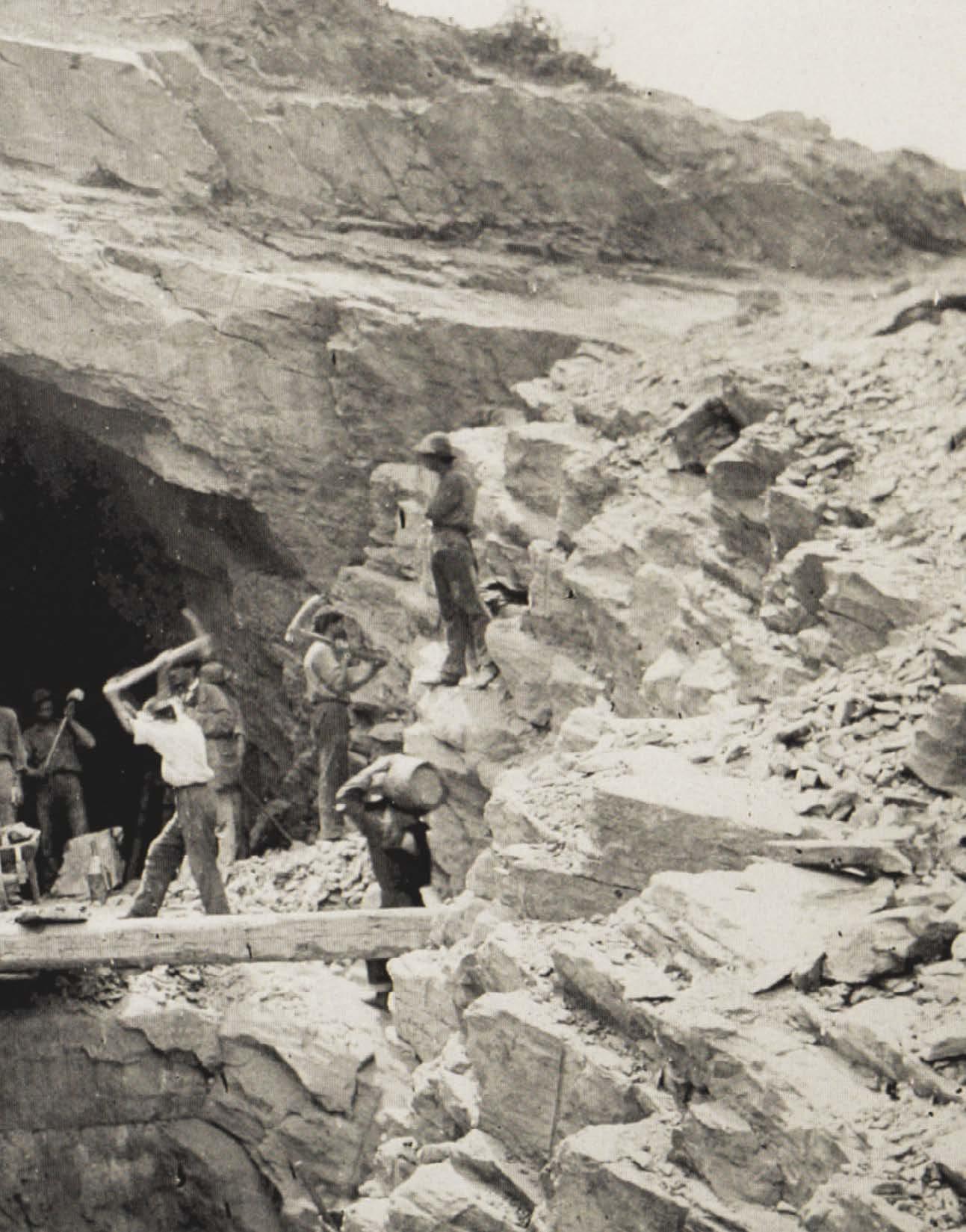
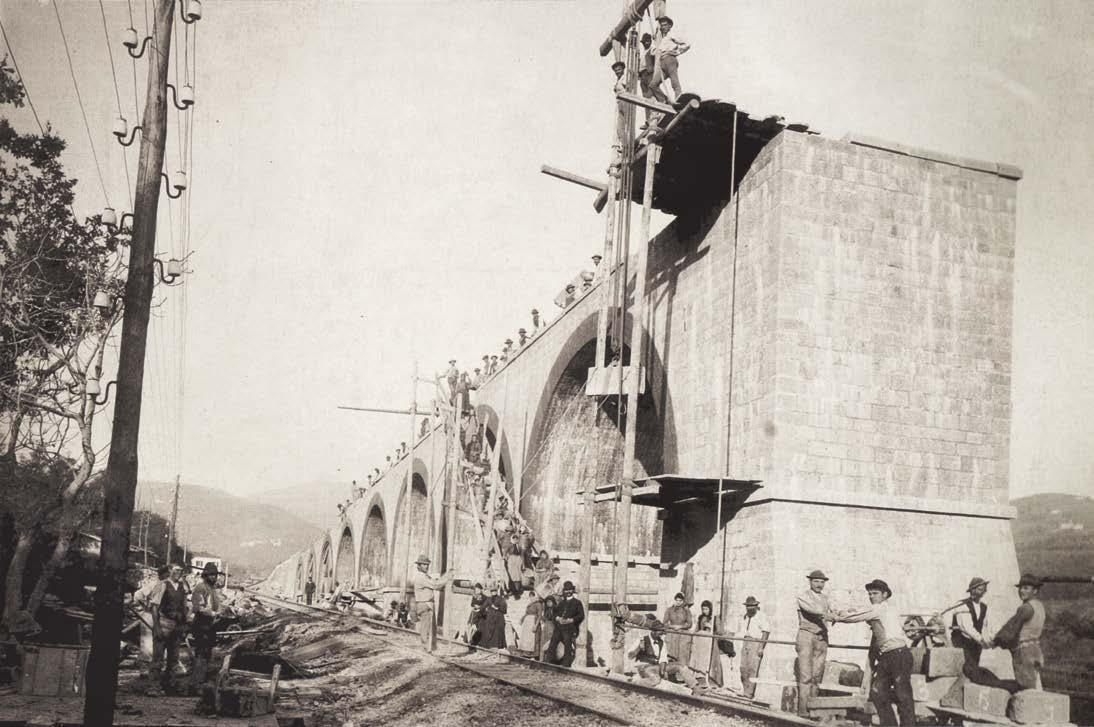
Il 2 novembre 1864 veniva inaugurata la linea ferroviaria Pistoia-Bologna che divenne subito nota come “Porrettana” poiché quella cittadina con la sua stazione costituiva il punto di raccordo tra i due versanti della linea, quello toscano e quello emiliano. Pertanto oggi celebriamo i 160 anni di vita e di attività di questa ferrovia storica, così come abbiamo fatto in occasione di altri suoi compleanni ed eventi particolari, con un rito che si rinnova costantemente. Un’occasione che ci obbliga a riflettere su quello che questa ferrovia rappresenta, cosa abbiamo fatto per ricostruirne la storia e renderle onore e giustizia e cosa possiamo ancora fare per migliorare il suo status di monumento di archeologia industriale ferroviaria e renderla sempre più un tassello della mobilità quotidiana interregionale e tra la montagna e la pianura, in particolare sul versante toscano. É una ferrovia longeva, iconica, capace di generare da decenni studi, ricerche ed eventi, ma anche manifestazioni popolari animate da associazioni nate in sua difesa.
É una ferrovia longeva, iconica, capace di generare da decenni studi, ricerche ed eventi, ma anche manifestazioni popolari animate da associazioni nate in sua difesa.
Basti ricordare le pubblicazioni e gli articoli di vario tipo e genere alimentati da materiali archivistici copiosi, le ricerche sul territorio e i continui aggiornamenti. Tutto ciò in un percorso iniziato almeno dagli anni ‘80 del secolo scorso e proseguito con volumi dedicati alla storia, alla progettazione, alle innovazioni, come l’elettrificazione, alla ricostruzione dopo le distruzioni della Seconda guerra mondiale, agli incidenti sul lavoro e con la riproduzione
anastatica di raccolte e volumi fotografici dell’800 e ‘900. Negli anni poi sono emersi gli studi dedicati alle infrastrutture a servizio della linea come le gallerie idrauliche o ai binari di lanciamento e salvamento e sono stati anche realizzati numerosi plastici della linea.
Ma è anche una ferrovia vivace che si anima ogni anno con i treni storici tra Pistoia e Pracchia con le soste di rito alle stazioni di Valdibrana e Piteccio.
E non poteva che essere così per una ferrovia che ha scritto la storia d’Italia fin dal periodo preunitario e continua a interrogarci ancora in questo scorcio di secolo XXI quando, ad esempio, in un volume sulla III guerra d’Indipendenza abbiamo ricordato che la Porrettana fu messa alla prova nel 1866, ben prima della Grande guerra, quando sostenne il trasferimento delle truppe italiane e dei carriaggi dall’Italia centrale al fronte bellico del nord ovest.
Una ferrovia che ha trovato nel tempo il sostegno della Fondazione FS a cominciare dal rinnovato Deposito rotabili storici che funziona come una sua porta d’ingresso.
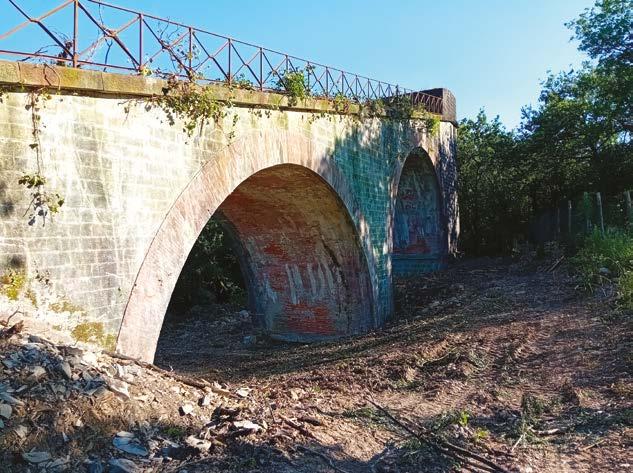
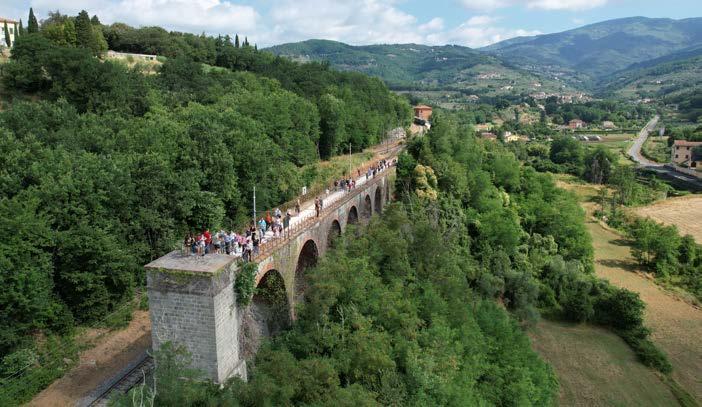
Oggi, però, dobbiamo declinare una nuova versione del “paradigma” della Porrettana costituita dallo studio, il recupero e il restauro delle sue numerose “Opere d’arte”, vere e proprie testimonianze dell’ingegneria ferroviaria ottonovecentesca e in particolare quelle realizzate dagli anni ‘80 del secolo XIX con la realizzazione delle stazioni di Vaioni, oggi Valdibrana, e Corbezzi, e il completamento di quella di Piteccio. Rinnovamento proseguito poi con l’elettrificazione avvenuta nel 1927 che comportò la costruzione della sottostazione elettrica del Legno Rosso, la creazione della stazione di San Mommé e la ricostruzione post bellica con la fermata di Castagno. Si tratta di un processo iniziato con il recupero del binario di salvamento della stazione di Valdibrana collocato su una rampa in rilevato sostenuta da otto grandi archi che è divenuto la principale attrazione durante

le soste dei treni storici cui si è aggiunta recentemente l’opera attuata da RFI sul contiguo binario di salvamento che è stato liberato dalla vegetazione infestante che lo occupava totalmente.
Il binario, con i suoi ultimi due archi in rilevato, è tornato così, con un intervento da manuale, visitabile e apprezzabile per le sue caratteristiche progettuali e costruttive. Un intervento per cui si è fortemente impegnato l’Assessore Sabella dell’amministrazione comunale di Pistoia.
Il binario oggi ci appare in tutta la sua complessità ma impone, dopo la manutenzione straordinaria, la fase della manutenzione ordinaria poiché la vegetazione sta rapidamente riprendendo campo e reso raggiungibile con un percorso pedonale dedicato. Il binario con il suo viadotto a due arcate dovrà poi essere oggetto di un rilievo accurato e dotato di pannelli informativi come l’altro.
Un omologo patrimonio esiste anche nella stazione di Piteccio dove a suo tempo è stato costruito su un ampio terrapieno il binario di salvamento, protetto a monte da un grande muro di contenimento in pietra che colpisce per l’ampiezza, le dimensioni e la struttura costruttiva ed è per buona parte corredato e protetto al piede da un ampio scannafosso destinato a incanalare le acque piovane. Si trova tuttora in buone condizioni di conservazione, richiede un intervento di taglio della vegetazione infestante e può divenire un nuovo elemento d’interesse turistico, come nel caso di Valdibrana. Altrettanto interessante e da documentare ampiamente il complesso sistema dei binari in galleria realizzati nella stazione di Corbezzi dove ai binari di corsa si aggiunsero quelli di salvamento e lanciamento sul lato sud e di fermata e ricovero sul lato nord. Si tratta quindi di coagulare tutti gli studi e gli atti fin qui compiuti e iniziare una riflessione sulla necessità di organizzare un grande progetto sulla Porrettana che coordini gli interventi di tutti gli attori coinvolti riflettendo in particolare sulla valenza, anche turistica dei numerosi manufatti di archeologia industriale ferroviaria nella logica della creazione di un ipotetico futuro “Parco ferroviario della Porrettana” che coniughi, però, anche il suo uso quotidiano con il recupero delle corse dirette tra Bologna e Pistoia e, perché no, Firenze. ☜
La linea ferroviaria che collega Pistoia con Porretta Terme nei suoi 160 anni ha scritto pagine importanti della storia del nostro Paese ma è ancora oggi una ferrovia attiva e vivace che in estate si anima con i treni storici tra Pistoia e Pracchia. In questa pagina alcune immagini della rampa di Valdibrana, recuperata e visitabile durante i viaggi di Porrettana Express.
In its 160 years, the railroad line connecting Pistoia with Porretta Terme wrote important pages of our country’s history, but it’s still today an active and lively railway that, in summertime, comes alive with historical trains between Pistoia and Pracchia. On this page some pictures of the Valdibrana ramp, which was recovered and can be visited during Porrettana Express trips.
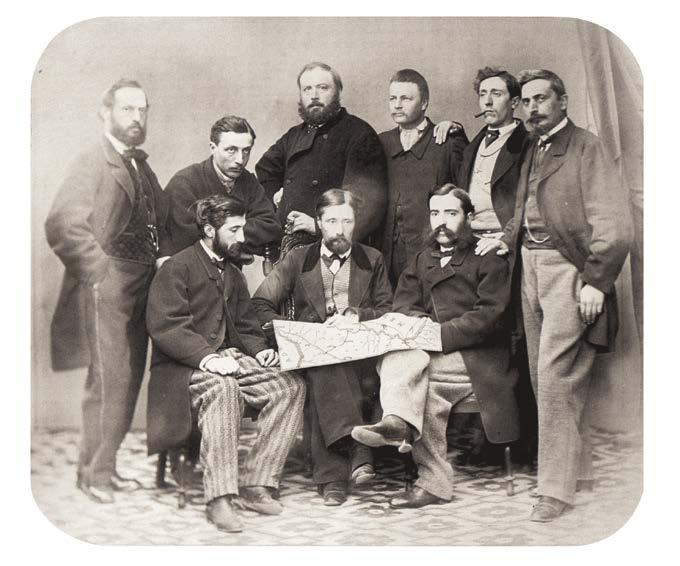
— New knowledge and new proposals for its heritage
On 2 November 1864, the Pistoia-Bologna railway line was opened in the presence of the king Vittorio Emanuele II: it became immediately known as “Porrettana”, because that city and its station represented the connection point between the two sides of the line, the Tuscan one and the Emilian one. Therefore, today we celebrate the 160 years of life and activity of this historical railway, as we did on the occasion of its other birthdays and specific events, with a rite that constantly renovates itself. An occasion that drives us to reflect on what this railway represents, what we did to retrace its history, honor and render justice to it, and what we can still do to improve its status as a monument of railway industrial archaeology and make it even more a part of cross-regional daily mobility between the mountains and the lowland, in particular on the Tuscan side. It’s a long-lived and iconic railway which, for several decades, has been capable of generating studies,
research and events, but also popular manifestations animated by associations that were born in its defence.
Just think of the different types of publications and articles, fed by copious archival materials, research on the territory and continuous updates.
All of this is part of a journey which started at least from the 1980s, and continued with volumes dedicated to history, planning, innovations such as electrification, reconstructions after the destructions of World War II and the anastatic reproduction of collections and photographic volumes from XIX and XX century.
Over the years also studies dedicated to the infrastructures serving the line, such as hydraulic galleries or launch and rescue tracks, have emerged, and several scale models of the line have been made.
However, it’s also a lively railway that animates itself with the historical trains between Pistoia and Pracchia and the customary stops at the stations of Valdibrana and Piteccio.
And it could have not been otherwise
for a railway that has been writing the history of Italy since the period before the unification of Italy and continues to ask us questions in this part of the XXI century when, for example, in a volume about the Third War of Independence, we recalled that the Porrettana was severely tested in 1866, way before the Great War, when it was used to support the transfer of the Italian troops and baggage trains from Central Italy to the war front in the North-West of Italy. It’s a railway that, over time, has been supported by the Ferrovie dello Stato Foundation, starting from the renovated Historic Steam Engines Deposit which works as its front door. However, today we must list a new version of the “Porrettana”’s paradigm, which consists in the study, recovery and renovation of its several “Works of art”, actual testimonies of railway engineering from the XIX and XX centuries, in particular those made from the 1880s with the construction of the stations of Vaioni (currently known as Valdibrana) and Corbezzi and the completion of the station in Piteccio. The renovation continued with the electrification that took place in 1927, which led to the construction of Legno Rosso’s electric substation, the creation of the station of Sammommè and the post-war reconstruction with the stop of Castagno.
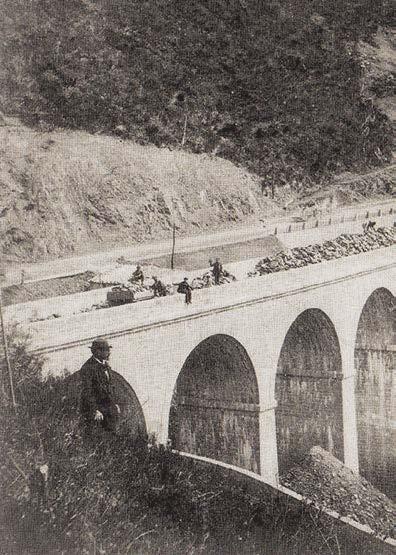
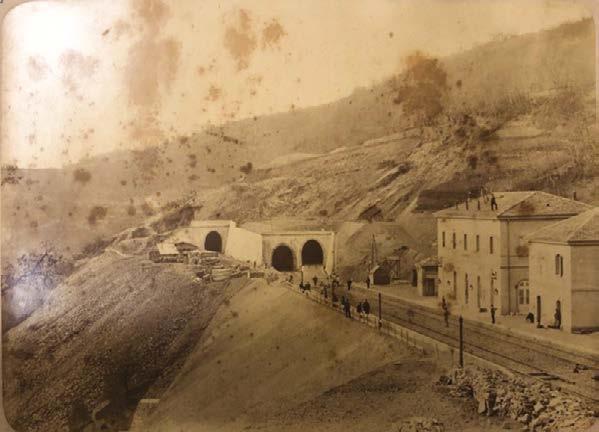
It’s a process that started with the recovery of the rescue track of Valdibrana station, placed on an embankment ramp which is supported by eight large arches and has become the main attraction during the stops of historical trains, to which was recently added the work made by the Italian Railway Network on the nearby rescue track, that has been freed from the weeds that fully occupied it. The track, with its two last embankment arches, is now like it used to be, thanks to a successful intervention, and can be visited and appreciated for its design and building features. An intervention to which the Councillor Alessandro Sabella, from the municipal administration of Pistoia, has strongly committed. Today, the track appears to us in all its complexity but, following the
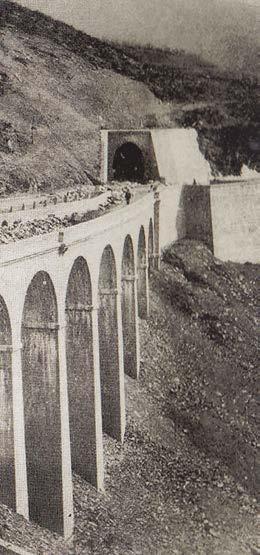
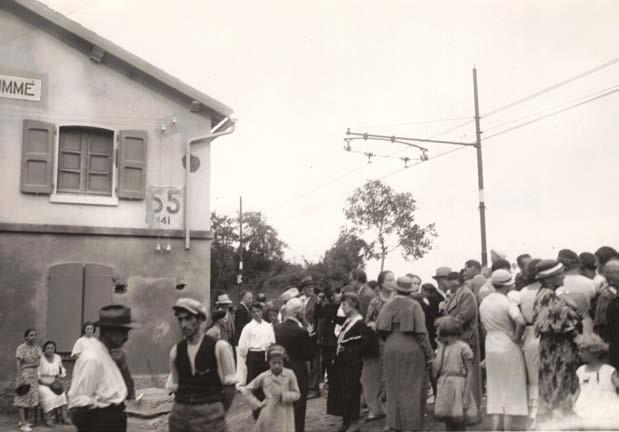
extraordinary maintenance, requires a phase of ordinary maintenance, because weeds are quickly making a comeback, and needs to be reached through a dedicated pedestrian path. The track, with its two-arch viaduct, should then undergo an accurate survey and should be equipped with information panels, same as the other one. An analogous heritage also exists in the station of Piteccio where, in due course, the rescue track was built on a wide embankment. It is protected upstream by a large retaining wall in stone, which impresses us for its wide, size and building structure and is mostly equipped with and protected at the foot by a wide drainage corridor, used to canalise rainwater. It’s still well-preserved, requires an intervention to cut weeds and may become a new element of tourist interest, same as Valdibrana.
The complex track system within a gallery is equally interesting and should be widely documented; it was made at the station of Corbezzi, where rescue and launch tracks on the south side and stop and recovery tracks on the north side were added to the running tracks. Therefore, all the studies and actions that have been completed so far should be aggregated and we should start a reflection on the need to organize a big project for the Porrettana, which coordinates the interventions by all the involved stakeholders. In particular, we should reflect on the value (also for tourism) of the several artifacts of railway industrial archaeology, with a view to create a hypothetical, future “Porrettana railway park”, which combines its daily use with the recovery of the direct routes between Bologna, Pistoia and, why not, Florence. ☜

Per realizzare questa linea ferroviaria fu necessario realizzare complesse opere ingegneristiche di alto livello, molte delle quali si possono oggi visitare sia durante i viaggi di Porrettana Express che seguendo appositi sentieri.
In alto a sinistra, la stazione di Corbezzi appena ultimata, Foto Alinari, Firenze. in alto a destra, la folla in attesa della sosta del primo treno alla stazione di San Mommè dopo l’elettrificazione della linea. Collezione Giovanni Innocenti, Pistoia
To complete this railroad line, it was necessary to create complex, high-quality engineering works, many of which can be visited today both during Porrettana Express journeys and by following specific trails. Top left, The newly completed Corbezzi station, Photo Alinari, Florence. Top right, The crowd waiting for the first train to stop at the San Mommè station after the electrification of the line. Giovanni Innocenti Collection, Pistoia
— Una grande occasione di promozione in un contesto internazionale, una scintilla per risvegliare l’economia del territorio
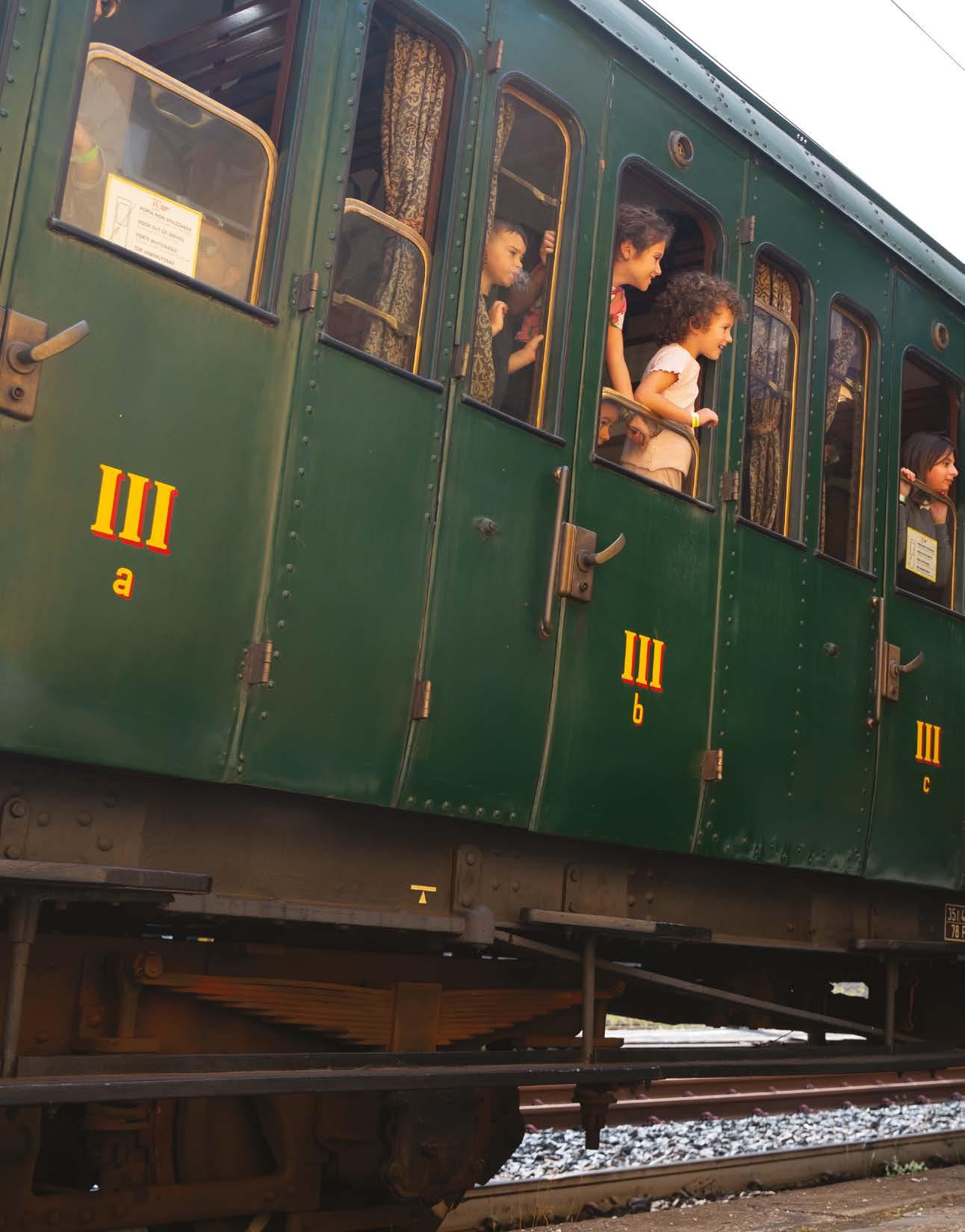
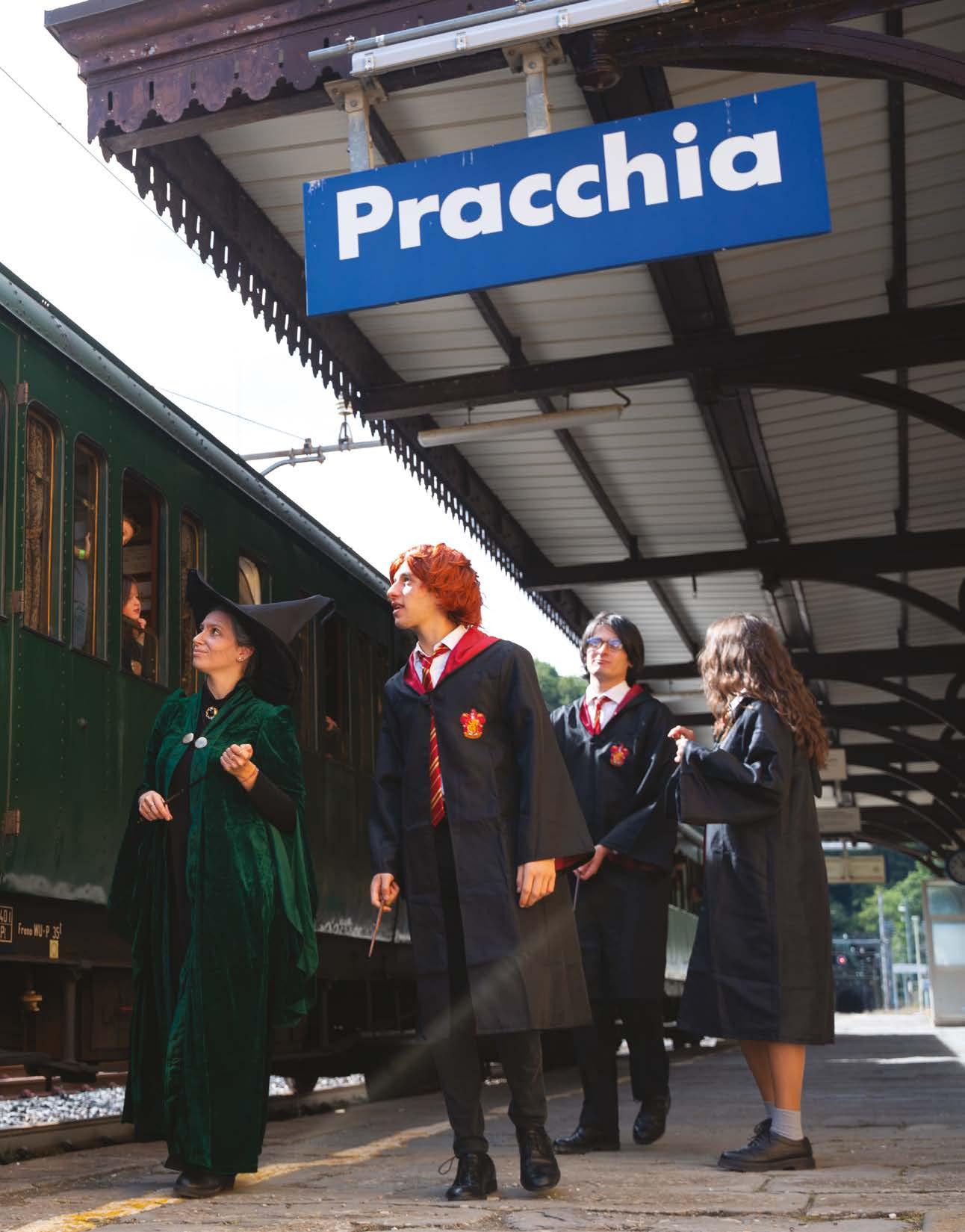

Un progetto di promozione e valorizzazione del territorio che da Pistoia, città capitale del treno, porta i viaggiatori alla scoperta della storica ferrovia transappenninica e del meraviglioso territorio che la circonda.
SA project to promote and enhance the territory which from Pistoia, capital of trains, brings travellers to discover the historical transApennine railway and the wonderful territory around it.
corci unici sull’Appennino, boschi incontaminati abitati da animali selvatici, piccoli borghi dove riscoprire la cucina tradizionale e itinerari artistici ancora poco conosciuti, un viaggio nella natura e nella storia d’Italia a bordo di treni storici lungo una suggestiva strada ferrata: questo è Porrettana Express, progetto di valorizzazione del territorio che unisce la Toscana e l’EmiliaRomagna attraverso una delle linee ferroviarie più antiche e simboliche del Paese, la Porrettana, la cui inaugurazione è coincisa con l’attivazione del servizio che avvenne da Bologna a Vergato il 18 agosto 1862, da Vergato a Pracchia il 1° dicembre 1863 e da Pracchia a Pistoia il 2 novembre 1864. Il progetto Porrettana Express si pone diversi obiettivi, che partono dalla valorizzazione di un territorio e dei suoi contenuti e conducono alla narrazione di questi attraverso l’esperienza del viaggio. Quest’ultimo diventa una sorta di immersione nella storia delle comunità che si incontrano e si rivelano, interagendo con il paesaggio che svela le numerose interazioni tra uomo e ambiente in cicli virtuosi e sempre aperti. L’Appennino tosco-emiliano e la montagna pistoiese in particolare sono un territorio in grado di regalare ai turisti prospettive inedite grazie alle tante possibilità che sono in grado di offrire agli amanti dell’outdoor, ma anche

Una grande occasione per la promozione del nostro territorio a livello internazionale con la prospettiva di rilanciare l’economia di un’intero territorio.
grazie a un patrimonio artistico, culturale e museale assolutamente da valorizzare, che arricchisce di qualità e contenuti un’offerta turistica sostenibile.
Le prospettive
Le richieste che continuano ad arrivare da tutta Italia e da mezza Europa da parte di un pubblico sempre più numeroso che guarda con grande attenzione alla riscoperta di un turismo slow, rappresentano una importantissima conferma delle potenzialità turistiche del progetto, che necessita però – in maniera inderogabile – di una programmazione pluriennale che permetta di andare incontro alle richieste del mercato e che sia in grado di rispondere con certezza alle manifestazioni di interesse di tour operator nazionali e internazionali, desiderosi di inserire nei programmi delle stagioni future Porrettana Express, definita dai media come
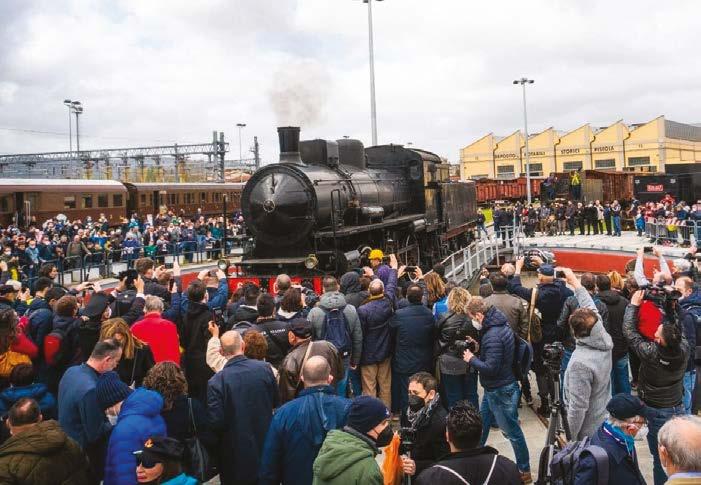
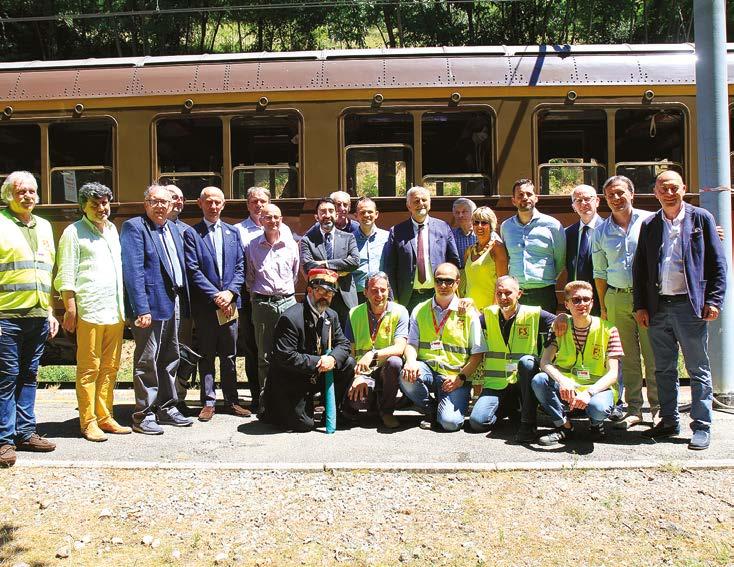
una straordinaria esperienza del viaggio su treni storici, che racconta e promuove l’intero territorio attraversato.
Per raggiungere questo obiettivo e dare nuova linfa al turismo e alla fruizione della montagna, occorre certamente lavorare per realizzare un sistema promozionale che, attraverso il collegamento con un territorio più ampio sia nei singoli comuni attraversati dalla Porrettana che in tutta la montagna, individui tutti i prodotti turistici da valorizzare e organizzare e li metta in rete con le risorse e le eccellenze turistiche, culturali, ambientali e produttive, sviluppando sinergie con i soggetti interessati alla crescita turistica di tutto il territorio dell’ Appennino Tosco Emiliano limitrofo alla ferrovia.
Per generare un flusso di turismo continuativo e permettere al progetto di costituirsi come risorsa in modo strutturale, è necessario attivare anche tutta una serie di iniziative che non si limitino solo ai treni storici. Nei prossimi anni le azioni del progetto si devono sviluppare su tre linee di intervento: treni storici, treni speciali e treni di linea, andando a promuovere lungo tutto l’arco dell’anno occasioni diverse di fruizione di iniziative ed eventi sui vari territori della montagna Pistoiese e dell’Alto Reno Terme.
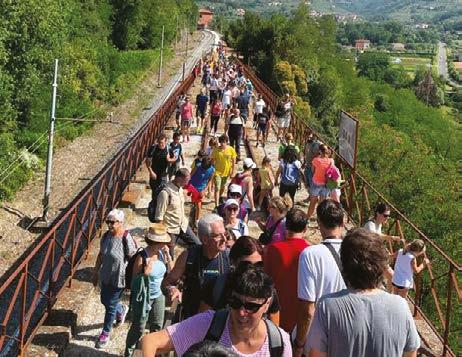
Un totale di circa 6000 viaggiatori provenienti sia dall’Italia che dall’estero
Al fine di completare e rendere più funzionale il progetto sarà assolutamente necessario individuare opportuni spazi come, ad esempio, la ex Saletta Reale all’interno della Stazione FS di Pistoia da adibire ad infopoint, biglietteria e shop presidiato da personale competente, oltre ad alcuni locali all’interno del Deposito Officina Rotabili Storici di Pistoia per svolgere attività didattiche e laboratori per ragazzi organizzati sul tema della Ferrovia Porrettana, della mobilità e del turismo green e sostenibile. Per quanto riguarda la montagna, invece, indispensabile appare il recupero della ex stazione F.A.P. di Pracchia da adibire a info point turistico sulla montagna, noleggio e-bike, partenza bus elettrici, shop e tappa dell’Ecomuseo della Montagna Pistoiese.
La storia e le attività di Porrettana Express dal 2019 ad oggi sono state raccontate in un libro di prossima uscita, realizzato dalla Cooperativa sociale Germina (soggetto attuatore), caratterizzato dalla storia e dall’evoluzione del progetto, da considerazioni sul futuro dello stesso, da splendide foto, descrizioni dei vari luoghi visitati dai viaggiatori e dal racconto dell’esperienza descritto dagli steward che accompagnano i partecipanti durante la giornata. ☜
Il progetto Porrettana Express è partito con il treno inaugurale il 6 giugno del 2019 e il primo anno di attività ha visto l’organizzazione di 9 viaggi. L’anno successivo, a causa dell’emergenza legata alla pandemia da Covid-19, non è stato possibile proseguire con l’attività programmata, che è invece ripresa nel 2021, pur con diverse limitazioni legate all’emergenza sanitaria, con 7 viaggi. Nel 2022, l’anno che ha visto l’Impresa Sociale Germina prendere le redini del progetto, sono stati realizzati 3 viaggi. L’attività è proseguita nel 2023 con 5 viaggi e nel 2024 con 4. I treni storici che hanno percorso la storica linea transappenninica sono stati quindi 28, con una media di oltre 200 passeggeri per convoglio. Numeri che indicano un totale di circa 6000 viaggiatori provenienti sia dall’Italia che dall’estero, saliti in montagna alla scoperta della Ferrovia Porrettana e del territorio che la circonda.
A total of 6,000 travellers coming from both Italy and abroad
The Porrettana Express project started with the opening train on 6 June 2019 and 9 journeys were organized during its first year of activity. Next year, due to the Covid-19 pandemic emergency, it wasn’t possible to continue with the scheduled activity which, instead, was resumed in 2021, despite several restrictions linked to the healthcare emergency, with 7 journeys. In 2022, when the social cooperative Germina took over the reins of the project, 7 journeys were completed. The activity continued in 2023 with 5 journeys and in 2024 with 4 journeys. Therefore, there were 28 trains that have crossed the historical trans-Apennines railway line, with an average of over 200 passengers for each convoy. Such figures indicate a total of nearly 600 travellers coming from both Italy and abroad, who went up in the mountains to discover the Porrettana Railway and the surrounding territory.


— A big opportunity for promotion in an international context and a spark to awaken the economy of the territory.
Unique glimpses in the Apennines, unspoiled woods inhabited by wild animals, small villages where you can rediscover traditional cooking and artistic itineraries which are still not well known, a journey through the nature and history of Italy aboard historical trains and along a suggestive railway track: this is Porrettana Express, a project for the enhancement of the territory which brings together Tuscany and Emilia Romagna through one of the most ancient and symbolic railway lines in the country, i.e., Porrettana, whose opening coincided with the activation of the service, which took place from Bologna to Vergato on 18 August 1862, from Vergato to Pracchia on 1 December 1863 and from Pracchia to Pistoia on 2 November 1864.
The Porrettana Express project has several goals, which start from the enhancement of a territory and its contents and lead to the narration of such contents through an experience of journey. The latter becomes a sort of immersion into the history of the communities that come together and reveal themselves by interacting with the landscape, that exposes the several interactions between human beings and
the environment, in virtuous cycles that are always open. The Tuscan-Emilian Apennine and the Pistoiese mountain, in particular, are a territory that is capable of offering original perspectives to tourists, thanks to the several possibilities that they can provide to the outdoor lovers, but also thanks to an artistic, cultural and museum heritage
that should definitely be enhanced and enrich a sustainable tourist offering with quality and contents. The perspectives
The requests that continue to arrive from throughout Italy and half of Europe from an increasingly larger audience, which pays close
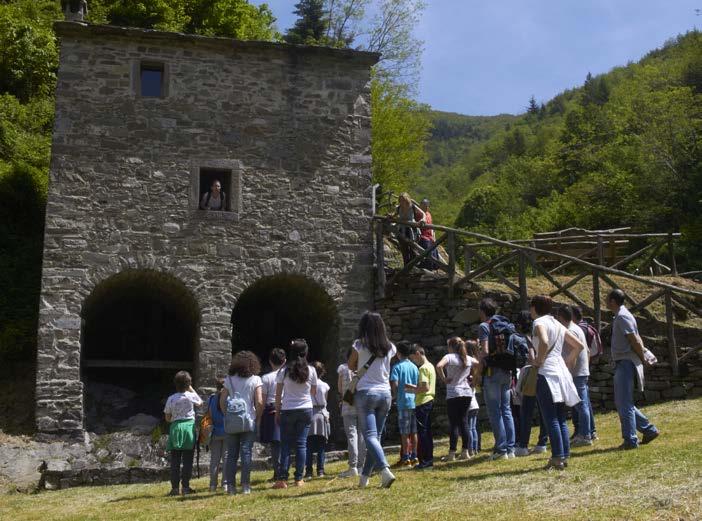
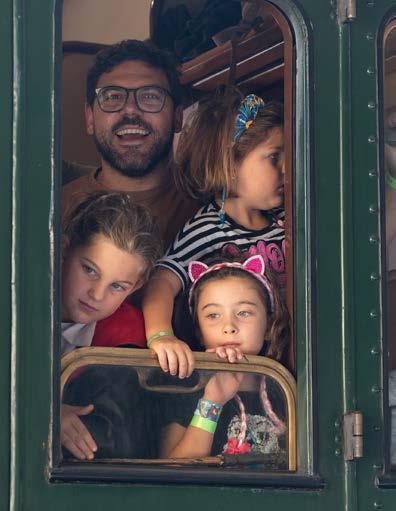
attention to the rediscovery of a slow tourism, represent a very important confirmation of the tourist potential of the project which, however, mandatorily needs a multiannual planning that allows to meet the requests from the market and is capable of providing a certain answer to the expressions of interest by national and international tour operators, who wish to add to their programs for future seasons Porrettana Express, that has been defined by the media as an extraordinary journey experience aboard historical trains, which narrates and promotes the whole territory crossed by such trains.
To reach this goal and give new life to tourism and the use of mountains, we should definitely work to create a promotional system which, through the connection with a wider audience both in the individual municipalities crossed by the Porrettana and throughout the mountains, detects all the tourist products to be enhanced and organized, an puts them into a network with the tourist, cultural, environmental and production resources and excellences, by developing synergies with the subjects that are interested in the tourist growth of the whole territory of the TuscanEmilian Apennine, which surrounds the railway line.
To generate a continuous flow of tourists and allow the project to become a structural resource, we should also activate a set of initiatives that aren’t just limited to historical trains. In the next few years, the project actions should be developed around three
lines of intervention: historical trains, special trains and scheduled trains, by promoting throughout the year different occasions for initiatives and events in the different territories of the Pistoiese mountains and Alto Reno Terme.
To complete the project and make it more functional, we will definitely need to identify suitable spaces such as, for example, the former Royal Hall within the State Railway Station of Pistoia, which should be used as an information point, ticket office and shop managed by qualified staff members, as well as a few premises within the Historic Steam Engines Deposit to conduct educational activities and laboratories for kids on the topic of the Porrettana Railway, mobility and green and sustainable tourism. As regards the mountains, instead, it is essential to recover the former Alto Pistoiese railway station of Pracchia, which should be used as a tourist information point in the mountains, e-bike rental, departure for electric buses, shop and stage of the Ecomuseum of Pistoiese Mountains.
The history and activities of the Porrettana Express from 2019 until today have been narrated in a book that will be published soon, made by the social cooperative Germina (implementing body) and characterized by the history and evolution of the project, considerations on the future of such project, beautiful photographs, descriptions of the several places visited by travellers and the narration of the experience by the stewards that accompany participants during the day.

L’esperienza di Porrettana Express
è stata raccontata in un libro di prossima uscita dal titolo
“Porrettana Express – La Transappenninica – In viaggio sulla storica strada ferrata che unì l’Italia”
The experience of Porrettana Express is narrated in a forthcoming book, whose title is “Porrettana Express – La Transappenninica – In viaggio sulla storica strada ferrata che unì l’Italia” (Porrettana Express – The transApennine railway – A journey along the historical railway track


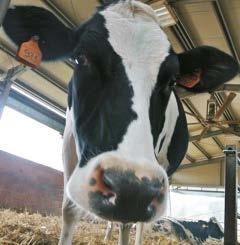


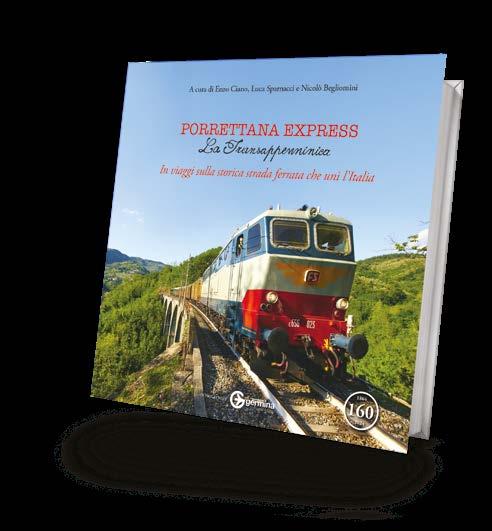





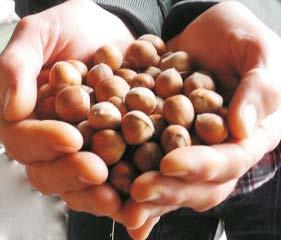

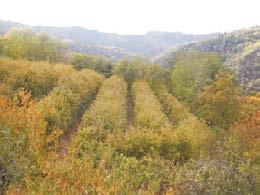
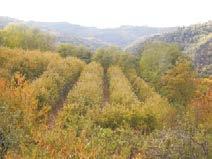
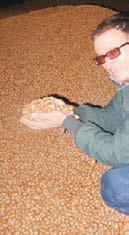
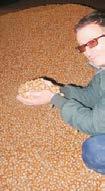
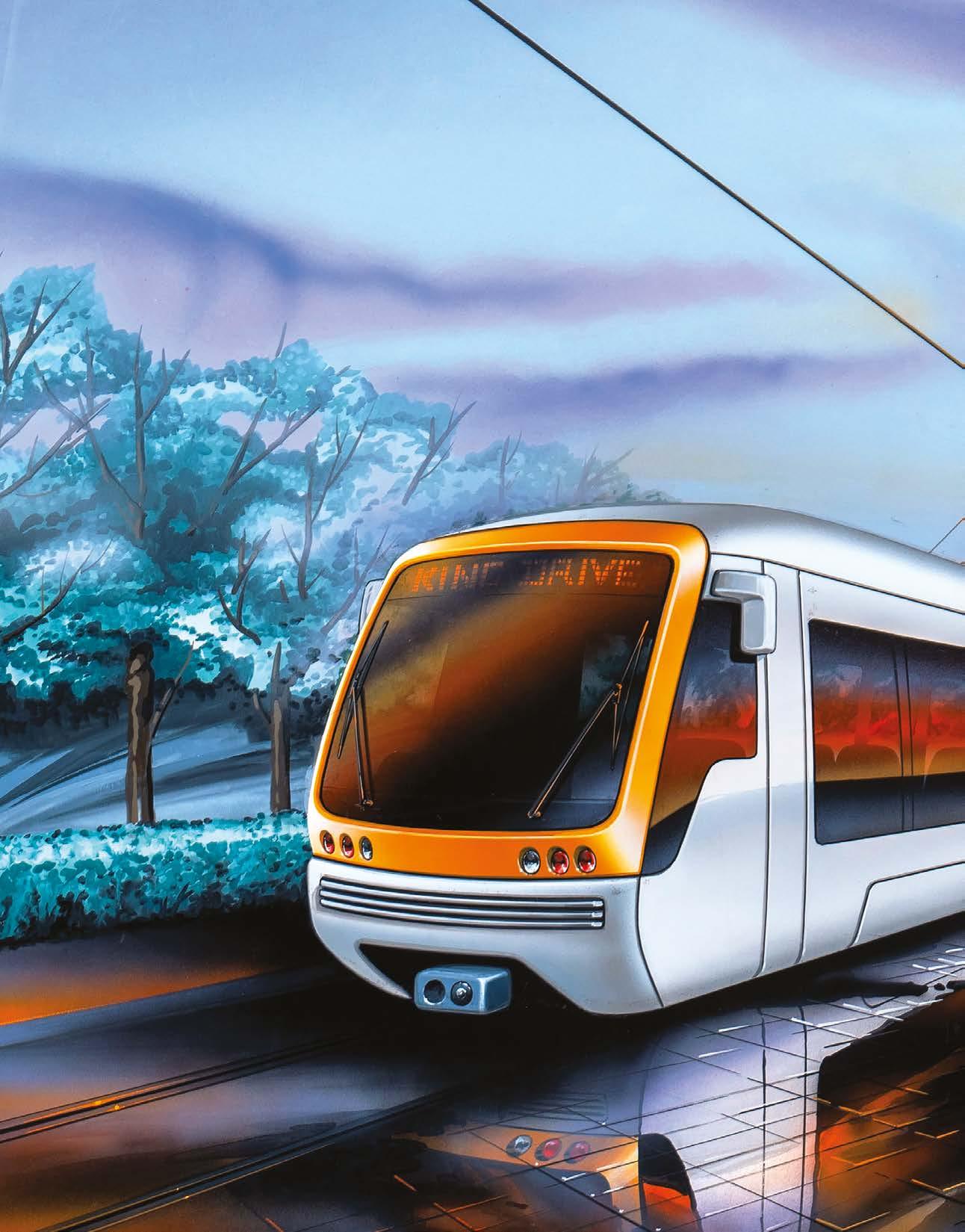
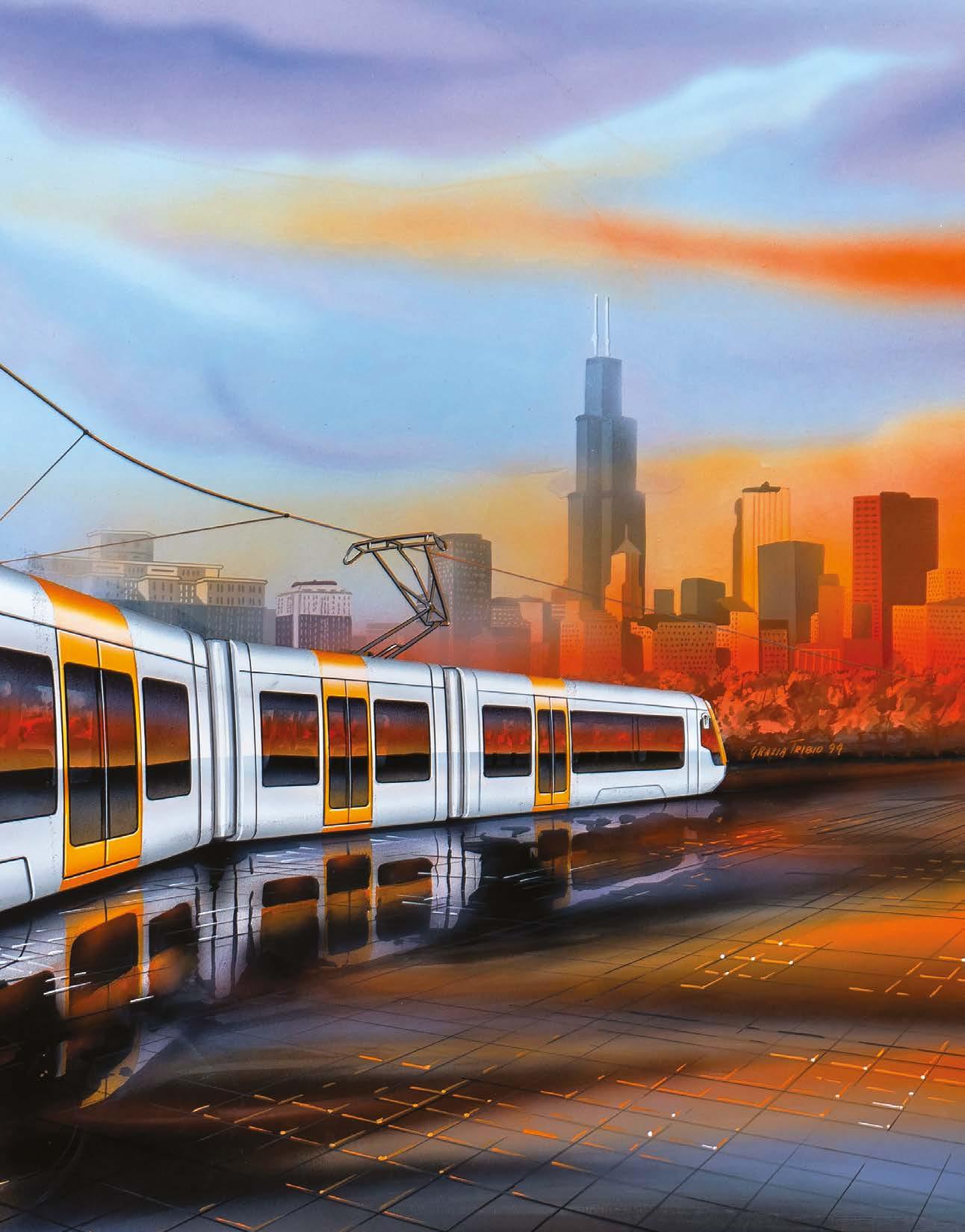
— A Pistoia è presente un’azienda che ha costruito macchine e mezzi di trasporto a partire dall’inizio del 1900. Nel tempo è passata di mano assumendo varie ragioni sociali: Officine San Giorgio, Officine Meccaniche Pistoiesi, Breda Costruzioni Ferroviarie e oggi Hitachirail.
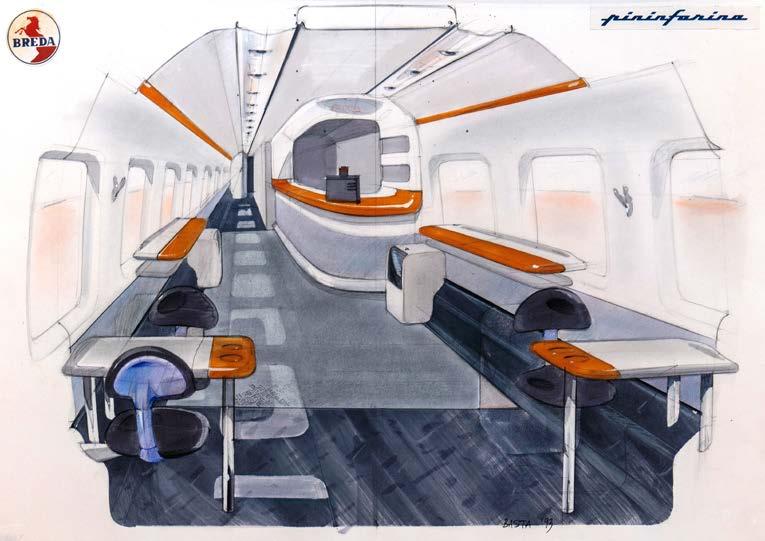
Sopra, per l’ETR500 era previsto un ambiente bar-ristoro veloce. Questo disegno illustra una versione tra le molte disegnate da Pininfarina. Studi dedicati e di dettaglio riguardarono il bancone, i tavolinetti e le sedute. In basso, veduta d’insieme dell’esterno della locomotiva E 402 per FS.
Above, a fast-food bar had been planned for the ETR500 high-speed train. This drawing shows a version, among the many drawn by Pininfarina. Dedicated and detailed studies were conducted for the bar, small tables and seats. Below, an overview of the external part of the E 402 locomotive for the Italian state railways.
Negli stabilimenti pistoiesi nel corso del tempo sono stati prodotti veicoli di ogni tipo, compresi quelli militari nei periodi bellici. Alla fine degli anni ’60, su parte dei terreni ex “campo di volo”, iniziò la costruzione di un nuovo grande stabilimento dove, nel 1972, l’Azienda Ferroviaria venne trasferita, assumendo la denominazione di Breda Costruzioni Ferroviarie, contraddistinta da un logo storico, quello del cavallino rampante rosso su fondo bianco racchiuso in un cerchio, creato nel 1949 per la Breda di Milano.
Con la nuova denominazione, il nuovo stabilimento e con un gruppo dirigenziale rinnovato, all’azienda ferroviaria di Pistoia furono assegnati obbiettivi più ambiziosi. Fino a quel momento aveva ricoperto il ruolo di costruttore di parti meccaniche progettate principalmente da FS; con il nuovo assetto si apprestava a presentarsi sui mercati nazionale ed internazionali con il ruolo di azienda capace di progettare autonomamente e costruire qualsiasi tipo di rotabile ferroviario. Per fare ciò furono realizzati accordi strategici con gruppi leader nei vari settori e per rendere i progetti di gara più apprezzabili, fu siglato un accordo di collaborazione con PININFARINA, uno dei più noti designer mondiali, la cui firma era abbinata alla Ferrari, conosciuta da tutti.
Breda a partire dalla fine degli anni ‘70 utilizzò quella collaborazione ogni volta che partecipava a qualche gara e chiedeva allo studio Pininfarina un disegno di stile del veicolo per presentarlo al possibile acquirente, insieme agli altri documenti tecnici e a quelli economici. In oltre 30 anni di collaborazione, Pininfarina ha prodotto diverse centinaia di disegni di stile, per treni, metropolitane, tram e autobus. Questi disegni, di notevole impatto estetico, erano tutti eseguiti con le tecniche di rappresentazione di quegli anni,
cioè a mano su cartoncino e colorati con pennarelli, matite e tempere; alcune volte venivano aggiunti tocchi di aerografo. Per le loro dimensioni (quasi sempre 70x50cm) e per il fatto di essere in unico originale, i disegni di stile venivano mostrati al potenziale cliente, ma venivano consegnate solo riproduzioni fotografiche: gli originali rimanevano negli archivi aziendali. Con gli anni, la Breda costituì una cospicua collezione di artist’s impression, così come venivano denominati dagli Americani, che oggi rappresenta un riferimento di grandissimo valore per il mondo dei designers. Nel 2015, con la vendita dell’Ansaldobreda ad Hitachi, tutti i documenti cartacei, i disegni tecnici di progetto e i disegni di Pininfarina, lasciarono lo stabilimento pistoiese con destino incerto. Alcuni ex dipendenti della Breda Costruzioni Ferroviarie, che avevano collaborato con lo stilista torinese e che conoscevano il valore di quei disegni, sia per le idee che raffiguravano, sia per le tecniche di esecuzione ormai completamente sostituite dai computer, hanno condotto delle ricerche e sono riusciti a recuperarli. Hanno quindi convinto i managers di Ansaldobreda che il luogo giusto per la loro conservazione fosse Pistoia, dove il loro cammino era iniziato; in accordo con il Comune, si è stabilito che fossero conservati nella Biblioteca Comunale che porta il nome storico dell’azienda ferroviaria
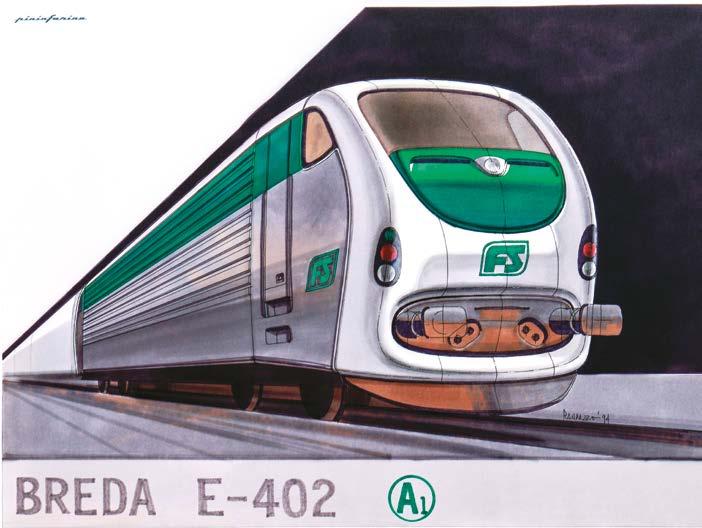
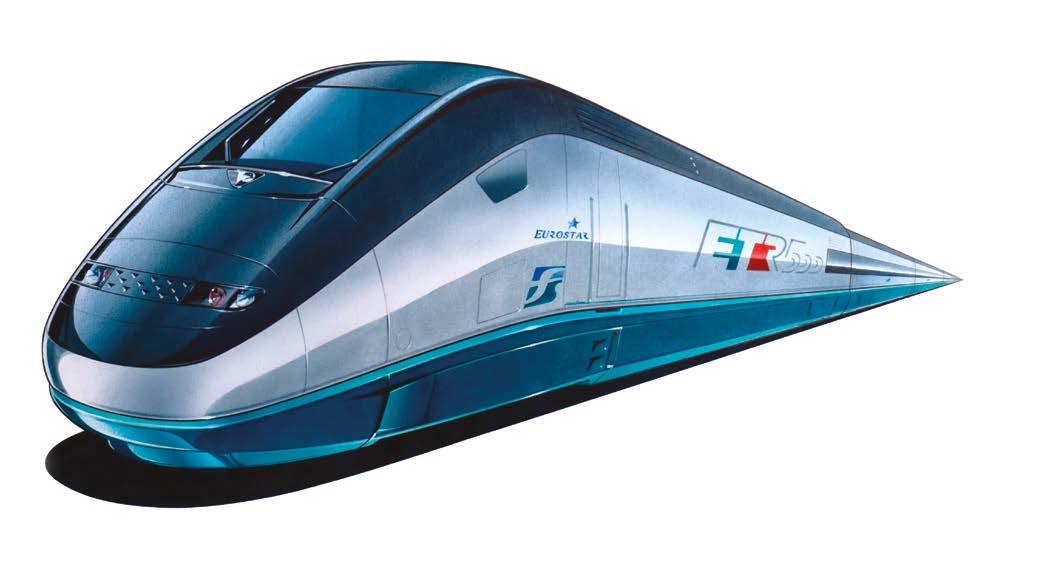
San Giorgio e che è ubicata dove erano i capannoni di produzione. Tra i disegni recuperati ce ne sono più di 150 eseguiti per il progetto del Treno Alta Velocità Italiano, denominato ETR 500, che doveva essere (e che effettivamente fu), il punto di riferimento per lo stile dei rotabili ferroviari degli anni ’80-’90 e, non di meno, ambiva a rappresentare un’immagine di forte impatto per i turisti che venivano in Italia. Analizzando quei disegni si può intuire lo sforzo dei designer e dell’intero team di progetto per realizzare quel profilo aerodinamico e la ricerca delle soluzioni tecnologiche per ottenere le forme più levigate per ridurre al minimo la resistenza all’avanzamento del treno. I disegni raccontano anche gli studi per stabilire i colori e la livrea esterna, nonché la definizione del logo ETR 500, assunto da FS per identificare tutti i suoi treni ad alta velocità. Per gli interni, Pininfarina disegnò i vari ambienti: il salone di 1^ classe, quello della 2^ classe, la toilette, i sedili e tutti i dettagli dell’arredo, in varie configurazioni, in modo da consentire una discussione da parte del team di progetto e decidere le versioni finali. Oltre ai disegni dell’ETR 500 ci sono altrettanti originali di Pininfarina relativi a progetti di varia natura, come gli esterni e gli interni delle carrozze panoramiche per le ferrovie svizzere MOB, RH, BVZ, del tram di San Francisco, del
tram di Boston, di quello di Lille, tanto per citare alcuni di quelli che ebbero uno sviluppo progettuale di dettaglio in quanto commesse. Sono in collezione anche tanti disegni concettuali che venivano commissionati per arricchire le offerte presentate in tutto il mondo. Sono presenti, tra gli altri, artist’s impressions dei tram di Chicago e di Dallas, dei filobus per la Muni di San Francisco e alcune versioni della metro leggera a motore lineare e a sostentamento magnetico, denominata M-BAHN, dagli elevatissimi contenuti innovativi, ma che non ebbe applicazioni pratiche a causa dei costi troppo
elevati: solo prototipi a Monaco di Baviera e Berlino. Alla Biblioteca San Giorgio sono conservati più di 400 disegni di stile, eseguiti per gran parte da Pininfarina ed una parte commissionati ad altri qualificati designers. Sono tutti catalogati, suddivisi per progetto o gara e consultabili dal pubblico, previo consenso del Responsabile della Biblioteca. L’Amministrazione comunale di Pistoia ha organizzato, nell’anno 2023, due mostre a tema: ETR500 presso le Sale Affrescate del Comune e Tram, Filobus e Metropolitane per il mercato americano presso la Biblioteca e ha in programma altre attività di valorizzazione. ☜
Sopra, veduta d’insieme dell’esterno dell’ETR 500. Il disegno rappresenta una delle molteplici soluzioni proposte da Pininfarina molto vicina alla reale configurazione del treno, per forme e colori. Sotto, veduta d’insieme del comparto di prima classe dell’ETR 500. Questo disegno, del 1986, rappresenta una delle prime soluzioni proposte da Pininfarina, in termini di sedili, bagagliere, illuminazione interna.
Above, an overview of the external part of the ETR500 high-speed train. The drawings represents one of the several solutions proposed by Pininfarina, and its shapes and colours are very similar to the actual structure of the train. Below, an overview of the ETR500’s first-class compartment. This 1986 drawing represents one of the first solutions proposed by Pininfarina in terms of seats, carrier basket and internal lighting.
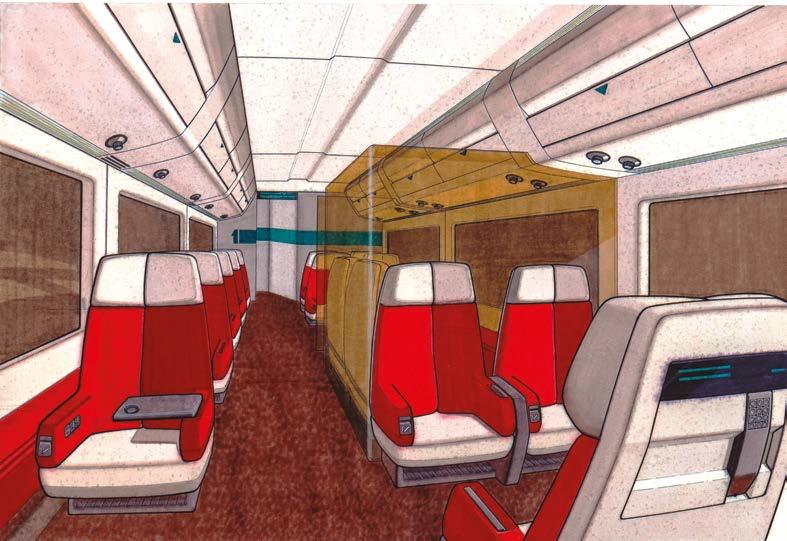
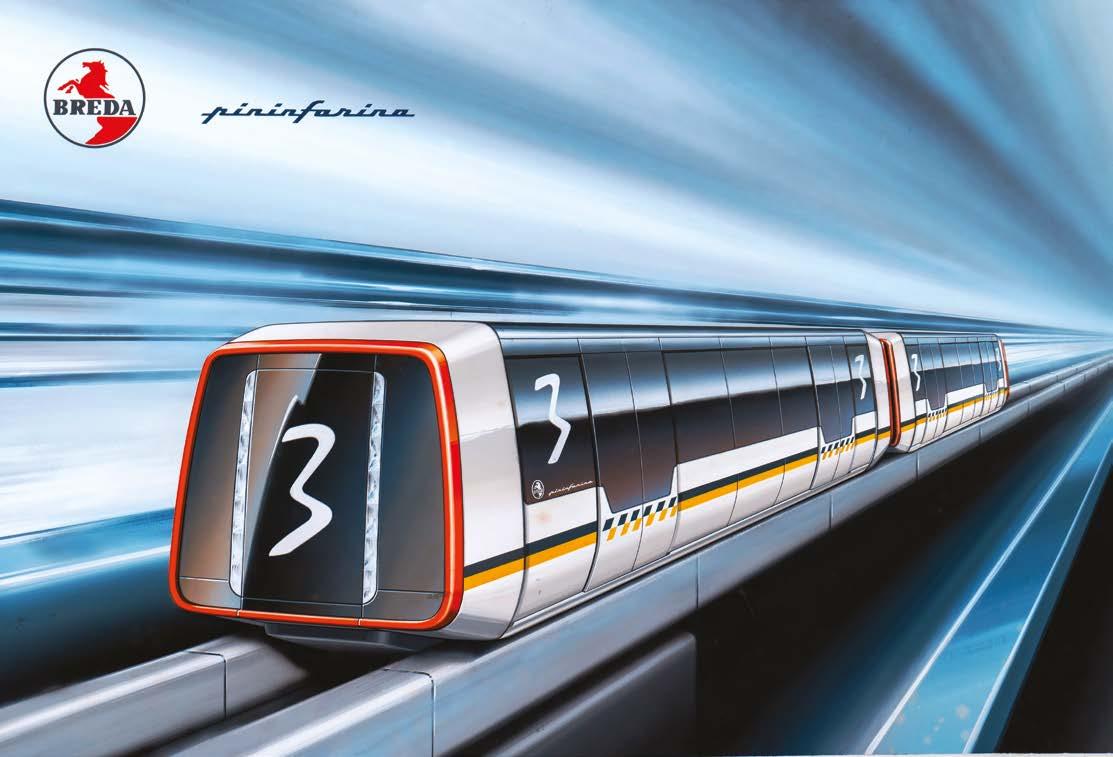
— In Pistoia there’s a company that has been building machines and means of transport since the early XX century. Over time, it changed hands and took on several names: Officine San Giorgio, Officine Meccaniche Pistoiesi, Breda Costruzioni Ferroviarie and, today, Hitachirail.
Several vehicles of any type were produced in the factories in Pistoia over time, including military vehicles during periods of war. In the late 1970s, part of the land from the former “airfield” was used to start building a new, large factory where the railway company was moved in 1972, taking on the name Breda Costruzioni Ferroviarie. Such company was characterized by an historical logo, that of the red rampant horse on a white background included in a circle, created in 1949 for Breda in Milan. With the new name, the new factory and a renewed management, Pistoia’s railway company was entrusted with more ambitious goals. Until then, the company had been manufacturing
mechanical parts that were mainly designed by the state railways; with its new set-up, the company was ready to present itself in the national and international markets as a business that was capable of independently design and build any type of railway rolling stock. To do so, the company reached strategic agreements with leading groups in different sectors and, to make tender projects more remarkable, it signed a partnership agreement with PININFARINA, one of the most well-known designers in the world, whose signature was associated to Ferrari, which back then was already known by everyone.
Starting from the late 1970s, Breda would use that partnership anytime it took part in a tender and would
request to the Pininfarina studio a style drawing of the vehicle so that it could be presented to potential purchasers, along with technical and economic documents. In over 30 years of partnership, Pininfarina produced several hundreds of style drawings for trains, metros, trams and buses. These drawings, which have a noticeable aesthetic impact, were all made with those years’ representation techniques, such as hand-made drawings on paper which were coloured with markers, pencils and temperas and, sometimes, some touches of airbrush. Due to their size (which was nearly always 70x50 cm) and the fact of being in a single original copy, style drawings were shown to the potential customer, but
only photographic reproductions were delivered: the original drawings would remain in the company archives. Over the years, Breda built a conspicuous collection of artist’s impressions, as they were named by Americans, which today represents a high-value reference for the world of designers.
In 2015, following the sale of AnsaldoBreda to Hitachi, all paper documents, project technical drawings and drawings by Pininfarina left the factories in Pistoia with unknown destination. Some former employees of Breda Costruzioni Ferroviarie, who had collaborated with the stylist from Turin and were aware of the value of such drawings (due to both the depicted ideas and the techniques used to complete them which, today, have been fully replaced by computers), carried out some research and managed to recover them. Subsequently, they persuaded AnsaldoBreda’s managers that Pistoia, where their journey had started, was the right place to keep those drawings; in agreement with the Municipality, the decision was made to keep them at the Municipal Library, which bears the historical name of San Giorgio Railway Company and has the same location as the former production sheds.
Among the recovered drawings, there are over 150 drawings that were made
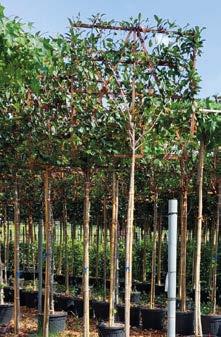
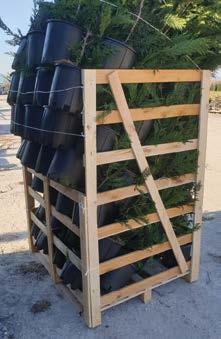
for the project of the High-Speed Italian Train, named ETR 500, which was supposed to be (and actually was) the point of reference for the style of railway rolling stock in the 1980s-1990s and, not less, aimed at being an impactful image for the tourists who came to Italy. By analysing those drawings, you can imagine the effort of designers and the whole project team to create that aerodynamic profile and the search of technological solutions to obtain the most levigated shapes and minimize the train’s running resistance. Drawings also narrate the studies carried out to establish the colours and the external livery, as well as to define the ETR 500 logo, which was taken on by the Italian State Railways to identify all their high-speed trains. Pininfarina made the drawings for all the different environments of the internal parts: the first-class hall, the second-class hall, the toilet, the seats and all the details of the furniture, in several configurations, so that the project team could discuss and decide on the final versions.
In addition to the drawings of the ETR 500, there are as many original drawings by Pininfarina related to different types of projects, such as the external and internal parts of the panoramic carriages for the Swiss railways MOB, RH, BVZ and the trams
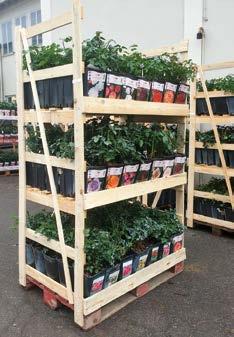
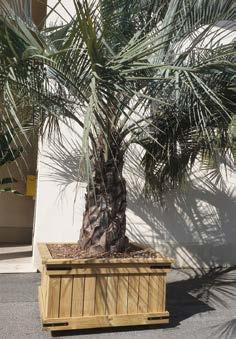
in San Francisco, Boston and Lille, just to name some of those projects which were then developed in full detail as actual contracts. Several conceptual drawings, that were commissioned to enhance the offers presented throughout the world, are also part of this collection. There are, among the others, artist’s impressions of the trams in Chicago and Dallas, of the trolley buses for the Muni in San Francisco and a few versions of the light, linear-engine metro with magnetic support, named M-BAHN, with very high innovation content which, however, didn’t have a practical application due to the too high costs: only the prototypes were presented in Munich and Berlin. The San Giorgio Library keeps over 400 style drawings, mostly made by Pininfarina, whereas a part of them was commissioned to other qualified designers. All of them are catalogued, divided by project or tender and can be accessed by the public, with the prior agreement of the Library Manager. The Municipal Administration of Pistoia organized, in 2023, two thematic exhibitions: ETR500 at the Town Hall’s Frescoed Halls and Tram, Filobus e Metropolitane per il mercato americano (Trams, trolley buses and metros for the American market) at the Library, and is planning to organise other enhancement activities. ☜
Nella pagina accanto, veduta d’insieme dell’esterno della metropolitana leggera M-BAHN. Questo veicolo, equipaggiato con un sistema rivoluzionario di trazione, basato sul motore lineare distribuito sulla linea, anziché a bordo e una serie di elettromagneti di polarità uguali che mantenevano la navetta sospesa sulla via di corsa. Il progetto fu interrotto per i costi troppo elevati.
In the next page, an overview of the external part of the light metro M-BAHN. This vehicle was equipped with an innovative traction system, which was based on the linear engine distributed on the line rather than aboard, and a set of electromagnets with the same polarity that maintained the shuttle hanging over the runway. The project was stopped due to the too high costs.
